




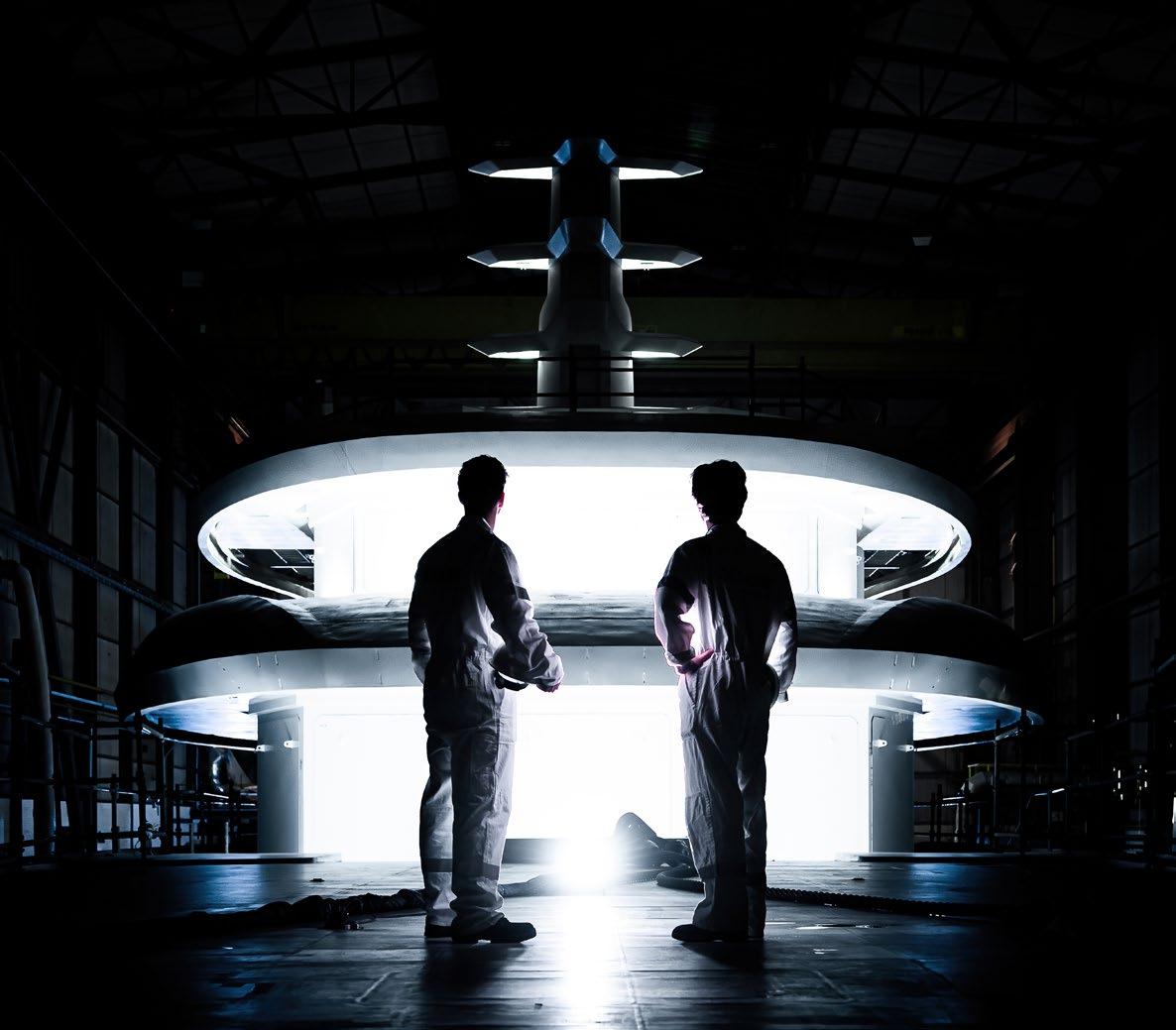
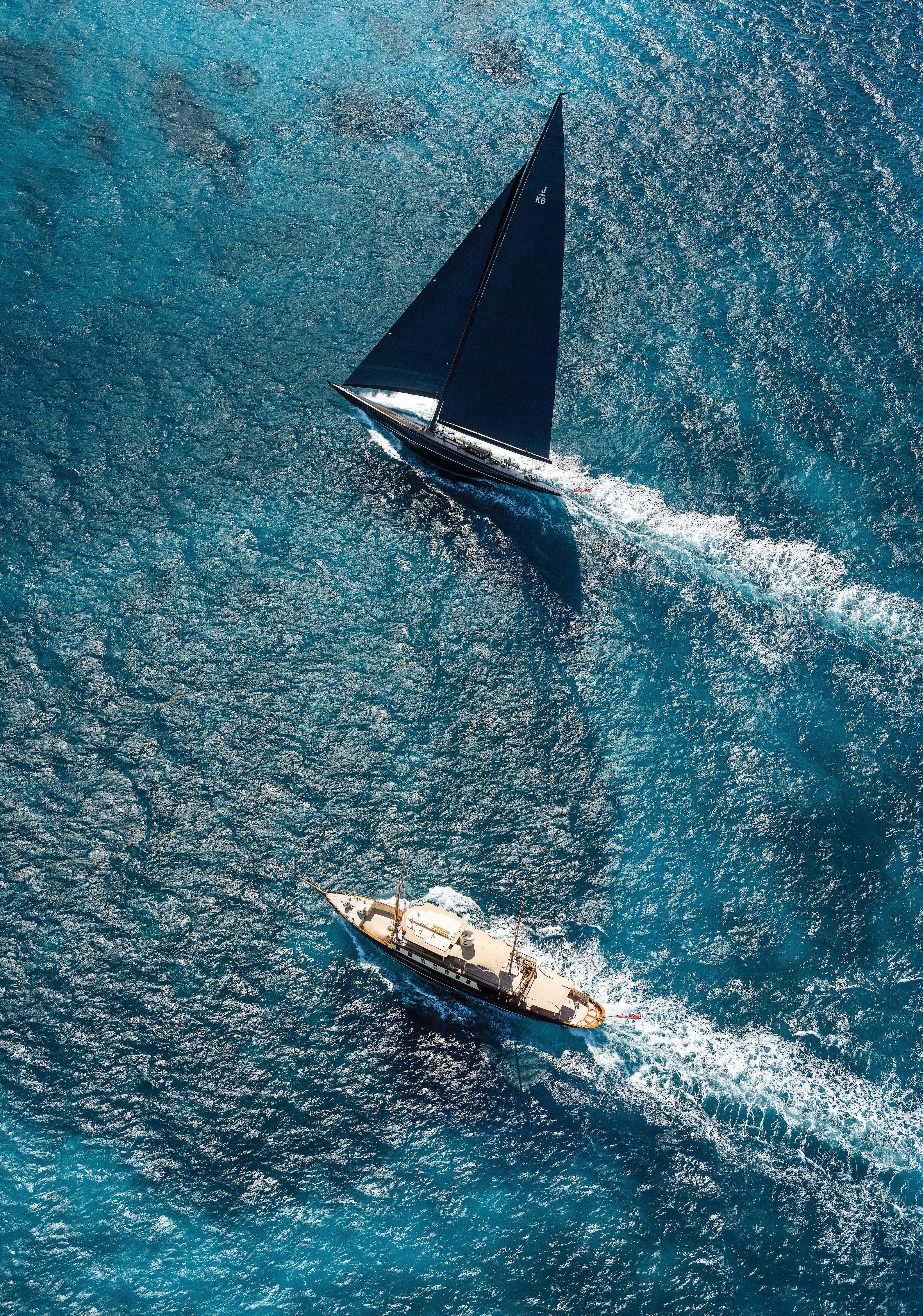

EDITORIAL
EDITOR IN CHIEF
EDITOR | HOW TO BUILD IT
EDITORIAL CONTRIBUTOR
NEWS EDITOR
FEATURES EDITOR
FEATURES WRITER
WRITER
SOCIAL MEDIA MANAGER
CONTENT CREATOR
Francesca Webster
Justin Ratcliffe
Charlotte Thomas
Sophie Spicknell
Emma Dailey
Enrico Chhibber
Ellen Ranebo
Marina Vargas
Nick Smits
DESIGN PRODUCTION
CREATIVE DIRECTOR
GRAPHIC DESIGNER
Ivo Nupoort
Beatriz Ramos
INTELLIGENCE
HEAD OF INTELLIGENCE
RESEARCH ANALYST
DATABASE MANAGER
YACHT HISTORIAN
Ralph Dazert
Adil Zaman
Syrine Mellakh
Malcolm Wood
SALES & ADVERTISING
HEAD OF SALES
SALES MANAGER
SALES MANAGER
SALES MANAGER
SALES MANAGER
CLIENT SERVICE MANAGER
SALES ITALY
Marieke de Vries
Justus Papenkordt
Daniel Van Dongen
Charly van den Enden
Nuri Ozkaya
Johanna Borreli
info@admarex.com
CORPORATE
FOUNDER & DIRECTOR
TECHNOLOGY DIRECTOR
FINANCE DIRECTOR
Merijn de Waard
Fabian Tollenaar
Laura Weber
SuperYacht Times B.V.
Silodam 256, 1013 AS, Amsterdam, The Netherlands 31 (0) 20 773 28 64 info@superyachttimes.com www.superyachttimes.com
Cover Images:
Gulf Craft by Gulf Craft
Heinen & Hopman by Justin Ratcliffe Amels 80 by Damen Yachting
How to Build It is published by SuperYacht Times B.V., a company registered at the Chamber of Commerce in Amsterdam, The Netherlands with registration number 52966461. The magazine was printed in February 2025.
With the 2025 Dubai International Boat Show underway as this issue of How to Build It goes to press, it seemed like the perfect moment to take a closer look at UAE-based Gulf Craft. Having presented no fewer than six new models at this year’s show, the SYBass member is expanding its facilities, and diversifying into resort tourism. Part of an ambitious strategy that signals continued growth and innovation, company chairman Mohammed Hussein Alshaali calls it “thinking and designing for the future.”
For those still in doubt about the resurgence of multihulls, three innovative projects offer compelling proof. Whether it’s the Oi60 sailing trimaran concept from JC Yacht Architecture and Rob Doyle Design, Rossinavi’s powercat Seawolf X with its cutting-edge AI system for energy monitoring, or the remarkable conversion of a stripped-out carbon maxi catamaran into a 30-metre liveaboard cruiser by Thorne Yacht Design, it would seem two hulls – or even three – are making a decisive comeback.
Our in-build reports feature two very different projects that nonetheless share a similar volume and target clientele. First, the Amels 80, the newest and largest addition to Damen Yachting’s highly successful Limited Editions series, continues its semi-custom legacy of blending fast delivery with tried-and-tested engineering. In contrast, Project Metamorphosis in build at The Italian Sea Group’s facility in Tuscany, highlights the shipyard’s commitment to fully bespoke construction. These two new-builds underscore the unique challenges of semicustom versus full-custom and the complexities behind each approach.
This year also marks a milestone for Heinen & Hopman, celebrating its 60th anniversary as a global leader in HVAC integration. To understand how its climate control technology is evolving to meet today’s demands for energy efficiency, environmental responsibility, and enhanced onboard comfort, we visited its sprawling headquarters in Spakenburg, near Amsterdam.
Innovation remains at the heart of this issue as we delve into groundbreaking ideas and technological developments, from biomimicry and energy recovery from waves to AI-driven design tools that are revolutionising technical design and optimisation processes. And finally, we explore the advantages of composite materials over aluminum for large structures like hardtops and biminis on superyachts. Something for everyone, in other words.

Justin Ratcliffe - Editor


Supplier
24 Business Brief: Moving On Up UAE-based Gulf Craft is expanding its facilities, enhancing client services, and diversifying into resort tourism as part of an ambitious strategy to ensure continued growth.
36 Build Report: Knowing Your Limits
The Amels 80 is the latest and largest model in the successful Limited Editions series from Amels. We report from the Damen Yachting shipyard in Vlissingen where the first units are in build.
49 Concept in Focus: Nokia Moments ‘Oi’ stands for ‘outside-inside’, the driving rationale behind the avantgarde Oi60 sailing trimaran concept by James Carley of JC Yacht Architecture and Rob Doyle Design.
56 Build Report: The Italian Job
One of two 72-metre sister ships in build at The Italian Sea Group’s superyacht facility in Tuscany, Project Metamorphosis is the first superyacht designed inside and out by Giorgio Armani.
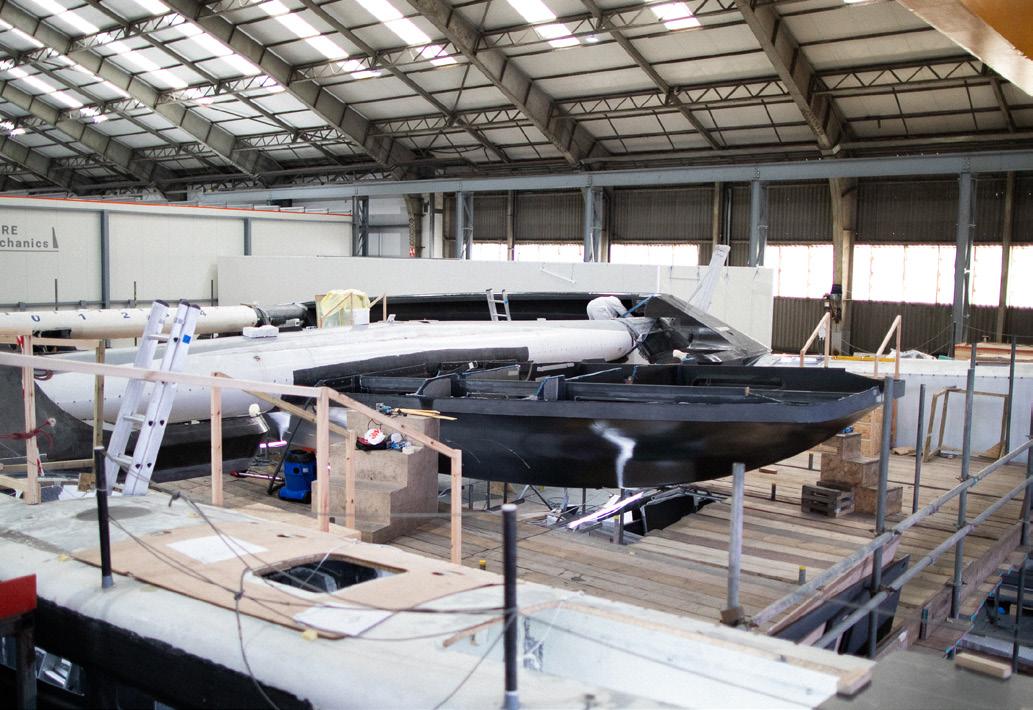

69 OEM: Heinen & Hopman
We pay a visit to the Dutch headquarters of Heinen & Hopman as the leading supplier of HVAC solutions to the marine industry celebrates its 60th anniversary.
79 Inside Angle: Richard Bridge
Before setting up Bridge Yachting in 2018, owner’s representative Richard Bridge served as operational captain on some of the most iconic superyachts on the water.
83 Design & Innovation: Natural Ideas
From topological hull design and energy efficiency to propulsors and appendages, is it time for solutions drawn from nature’s example to hit the mainstream?
93 New Tech: The Measure of Intelligence
As AI and machine learning pervade ever more deeply our daily lives, they are being used to assist with technical tasks associated with ship design, construction, operation and maintenance.
101 Refit & Conversion: Expect the Unexpected Upcycling a 15-year-old racing catamaran into a 30-metre liveaboard cruiser comes with a unique set of challenges. We catch up with Thorne Yacht Design in the UK to find out more.
111 Materials: Material Benefits
After more than 15,000 refit and repair projects, BM Composites in Palma de Mallorca has proven the advantages of composites over aluminium for manufacturing large structures such as hardtops and biminis.
119 Rules & Regs: Due Diligence Matters
Rob Papworth, Managing Director of MB92
La Ciotat and Chair of the ICOMIA Superyacht Refit Group, walks us through the many things you need to consider before committing to a refit shipyard.
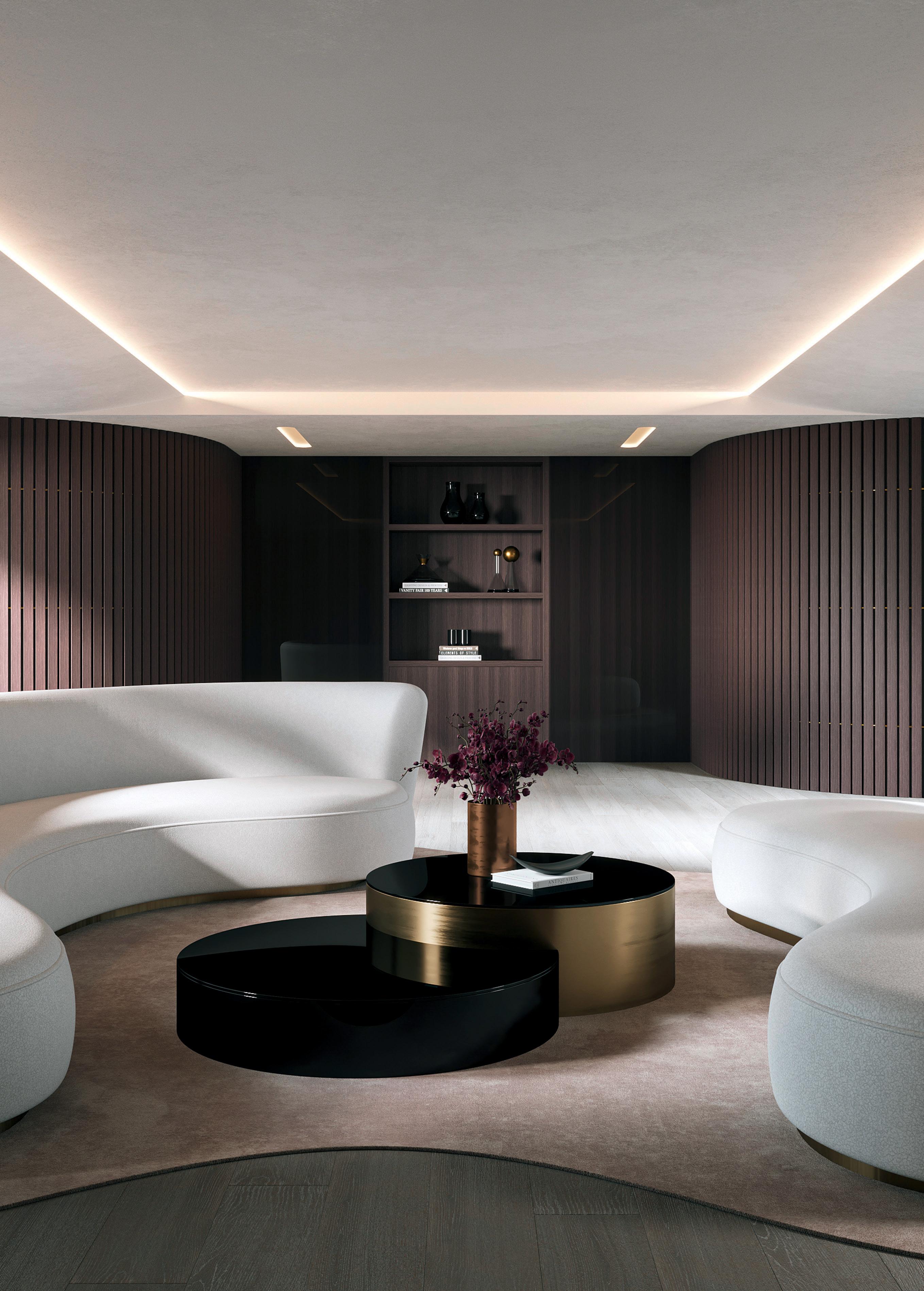

PuRO, a leader in water purification systems, has partnered with Vitters on Project Zero. This fully electric vessel that can operate without fuel tanks prioritises energy efficiency. PuRO adapted its innovative water purification technology –originally designed to purify dock water for yacht maintenance – into a high-efficiency water recovery system for Project Zero. This adaptation enables the yacht to recover and reuse greywater and rainwater, significantly reducing reliance on traditional watermakers and cutting energy consumption.

The collaboration marks PuRO’s first venture into a sustainabilityfocused project of this scale, showcasing the versatility of its systems in reducing environmental impact. While Vitters handles the system’s installation, PuRO has worked closely to ensure seamless integration. Looking ahead, PuRO is eager to further its presence in sustainable maritime projects, leveraging its technology to deliver energy-efficient, multifunctional solutions for yachts of all sizes.
Synergy – the HVAC Consultancy, part of the Bond Group and Bond Technical Management, and Dutch software specialist Delta Digital have entered a business collaboration to bring their combined expertise to the superyacht industry. With a focus on optimising HVAC systems, the agreement signed during METSTRADE 2024 enables the creation of ‘digital twins’ for yacht HVAC systems, allowing for simulated testing of energy-saving enhancements before implementation.
Using Delta Digital’s 3-phase methodology, an efficiency baseline of a yacht’s entire HVAC system can be digitally built over the course of one to two months. The Delta Digital platform then analyses various aspects of the HVAC system, including energy consumption, performance, temperature control and air quality. Any proposed optimised changes can then be made to the HVAC digital twin before being applied by Synergy to a yacht’s actual system.
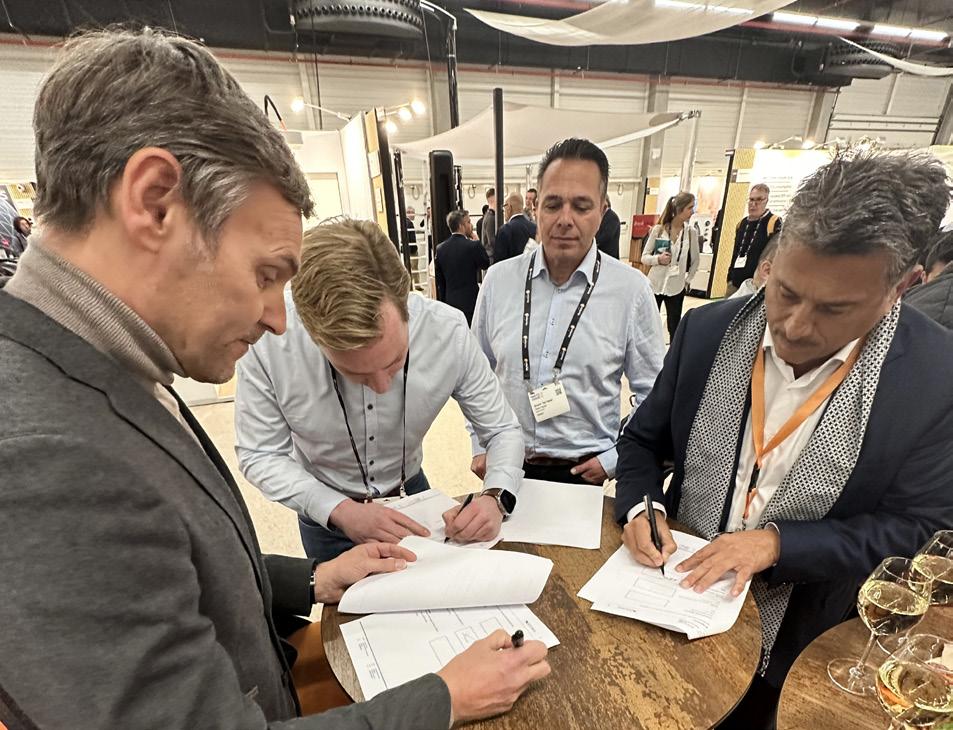
“We are experts in energy savings, air quality and system improvements, and pride ourselves on being a flexible company on whom you can rely on when making tough decisions during your superyacht project,” says Patrick Voorn, CEO of Synergy–The HVAC Consultant. “This collaboration with Delta Digital will go a long way to supporting that process.”
Royal Huisman has received Approval-in-Principle (AiP) from Lloyd’s Register for its hydrogen-powered fuel cell system designed specifically for sailing superyachts. This system comprises high-pressure hydrogen bottles and a 100kW fuel cell, providing sufficient energy to power the yacht’s hotel load quietly, sustainably and without emissions. The AiP follows a hazard identification study conducted with Lloyd’s Register and external experts to confirm the concept’s safety and offer guidance for subsequent development steps.
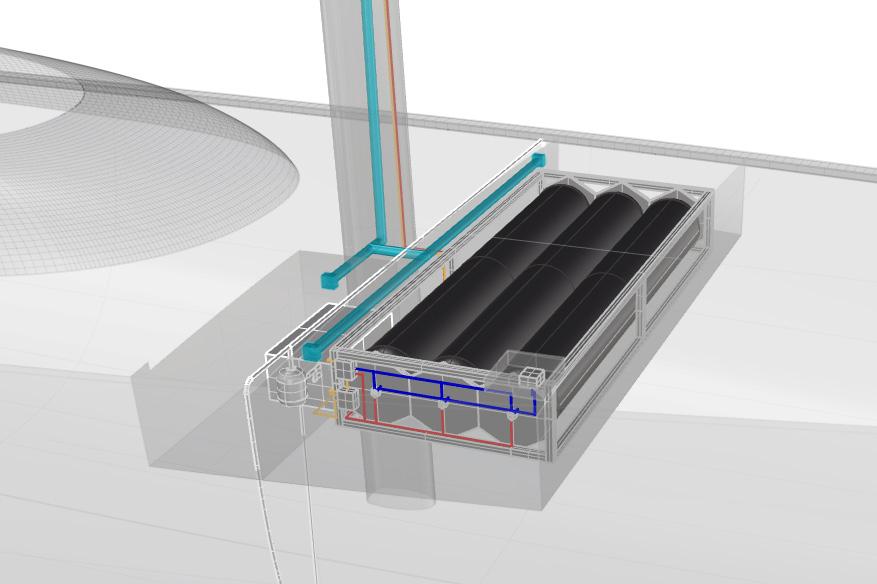
This achievement aligns with Royal Huisman’s Project Tidal Shift. By integrating life cycle analysis into each project and proactively offering sustainable options during design and construction, the initiative demonstrates the shipyard’s commitment to environmental stewardship, while the approval of the hydrogen fuel cell concept marks a significant milestone towards eco-friendly and innovative yacht building practices. The shipyard has stressed that the above concept is one of many options available for their sailing yachts.
The Yacht Club de Monaco’s SEA Index has expanded its CO2 certification to assess all fuel cell technologies on superyachts. This update enables owners and stakeholders to evaluate the environmental impact of alternative fuel systems, offering independent, data-driven insights for more sustainable choices. In collaboration with Lloyd’s Register, the SEA Index now rates yachts with advanced fuel cells, including methanol and hydrogen systems, as demonstrated by Sanlorenzo’s 50Steel Almax that achieved a 3-star rating.
Working in collaboration with Lloyd’s Register specialists, SEA Index has undergone a rigorous review to ensure its methodology can now accurately assess superyachts equipped with the latest fuel cell technologies.
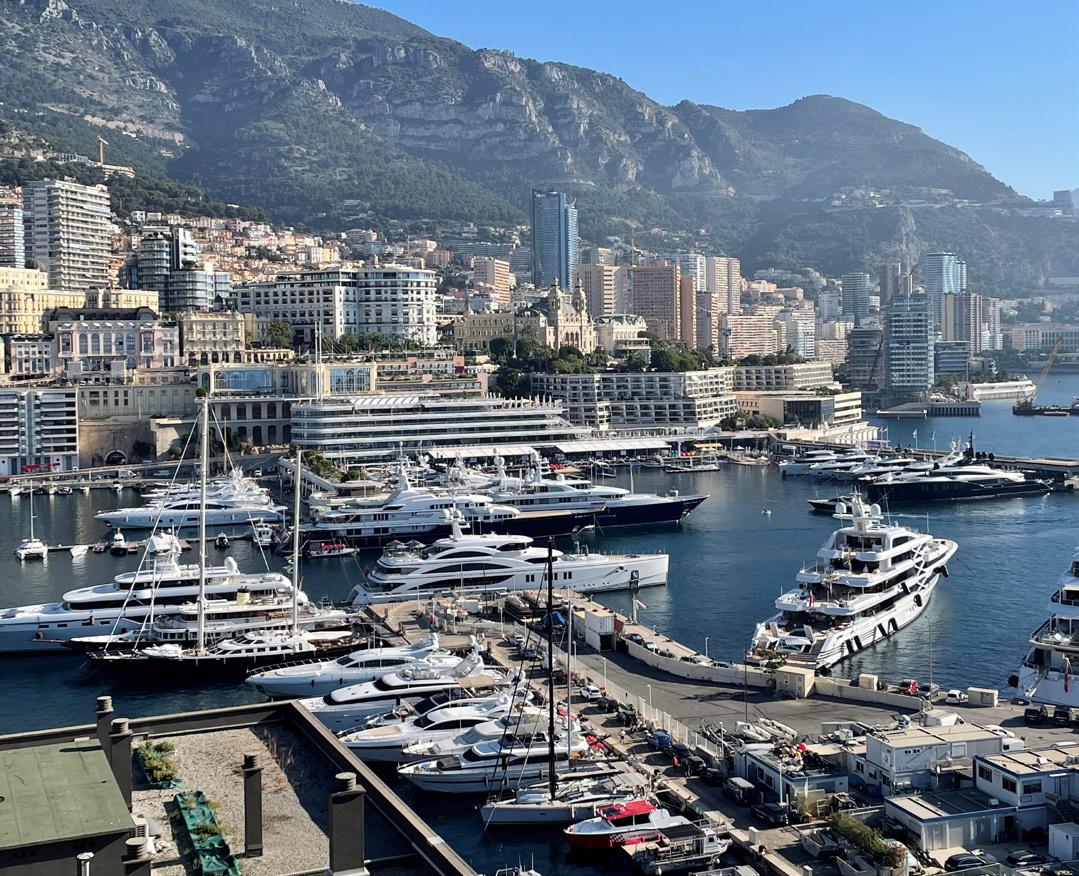

Anchoright, the UK-based producer of anchor chain markers, has announced its entry into the superyacht market, driven by demand for its eco-friendly and user-centric chain markers. At METSTRADE 2024, the company exhibited an expanded range tailored for superyachts featuring larger, high-visibility markers designed to enhance anchoring accuracy and safety. Expanding into the superyacht sector is a natural progression for a company aiming to make mooring more intuitive and environmentally responsible.
“Our expansion into the superyacht market is a direct response to the overwhelming demand we’ve received from superyacht owners and captains,” said Quinton Watts, founder of Anchoright. “Superyachts present a unique challenge due to their size and the complexity of their anchoring systems. Our products are specifically designed to provide reliability, accuracy, and ease of use, ensuring the safety of both the vessel and the crew.”
Multiplex offers high end solutions for the biggest yachts afloat. Their carbon boarding systems are second to none.





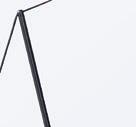
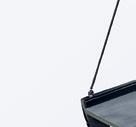



The multi flap is light, stable, weather-proof, and resistant to deformation. At 4.4 kg per metre and with a quick, simple


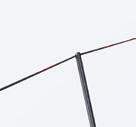


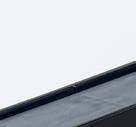







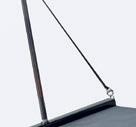
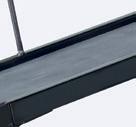
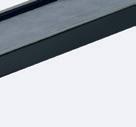



fixing system, it can be mounted and dismounted by a single person.







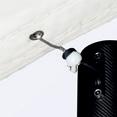

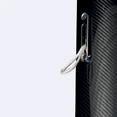

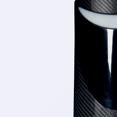

Easy installationand less weight combined with an elegant design have made the sun awning system a product of great popularity. Each sail is individually hand-made, so it will perfectly suit the vessel’s outline. Miscellaneous pole paintings, several types of sailcloth, loudspeakers, and lights can personalize the systems according to taste.


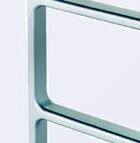
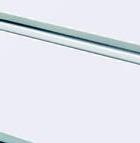

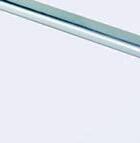




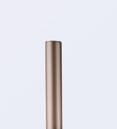


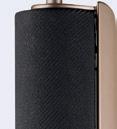







Based on the multifender modular component system, all multifender systems are produced according to individual requirements. This means that we tailor the multifender to all imaginable conditions for vessels up to 12 tons.

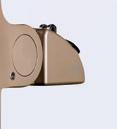

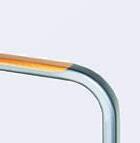
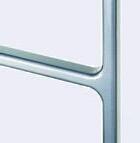
Despite its low weight, the multiguard system can withstand a lateral pressure of up to 100 kilograms and has been certified by Lloyds Register. The system is available in a free choice of colours with worldwide service.


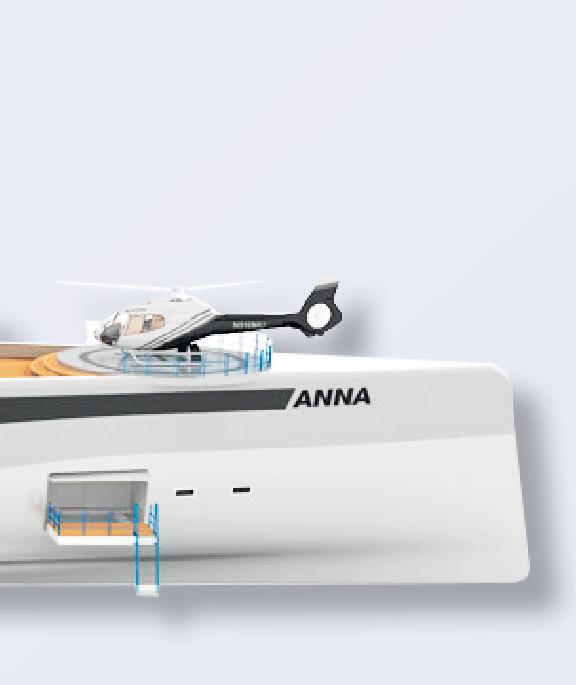
The multistair can be used for access directly into the cockpit over the side or stern. It can be swung 90 degrees from a fully horizontal to a fully vertical position, with all steps automatically aligning in parallel with the sea‘s surface.


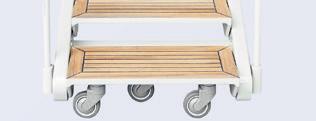



The lightness of this ladder construction enables easy assembly and dismantling. The use of carbon fibre and stainless steel ensures 100 % corrosion resistance.


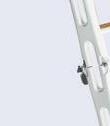
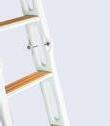




Flexiteek International has unveiled its latest innovation in synthetic teak decking, Flexiteek 3. Building on the success of Flexiteek 2G, this third generation combines enhanced aesthetics, improved durability, and a strong commitment to sustainability. Featuring bio-attributed PVC that reduces greenhouse gas emissions by up to 80% and REACHcompliant, phthalate-free plasticisers, Flexiteek 3 is 100% recyclable, making it the company’s most eco-friendly offering yet. Designed to replicate the natural graining and ageing of real teak, Flexiteek 3 is available in a wide range of colours, including the new Ash option.

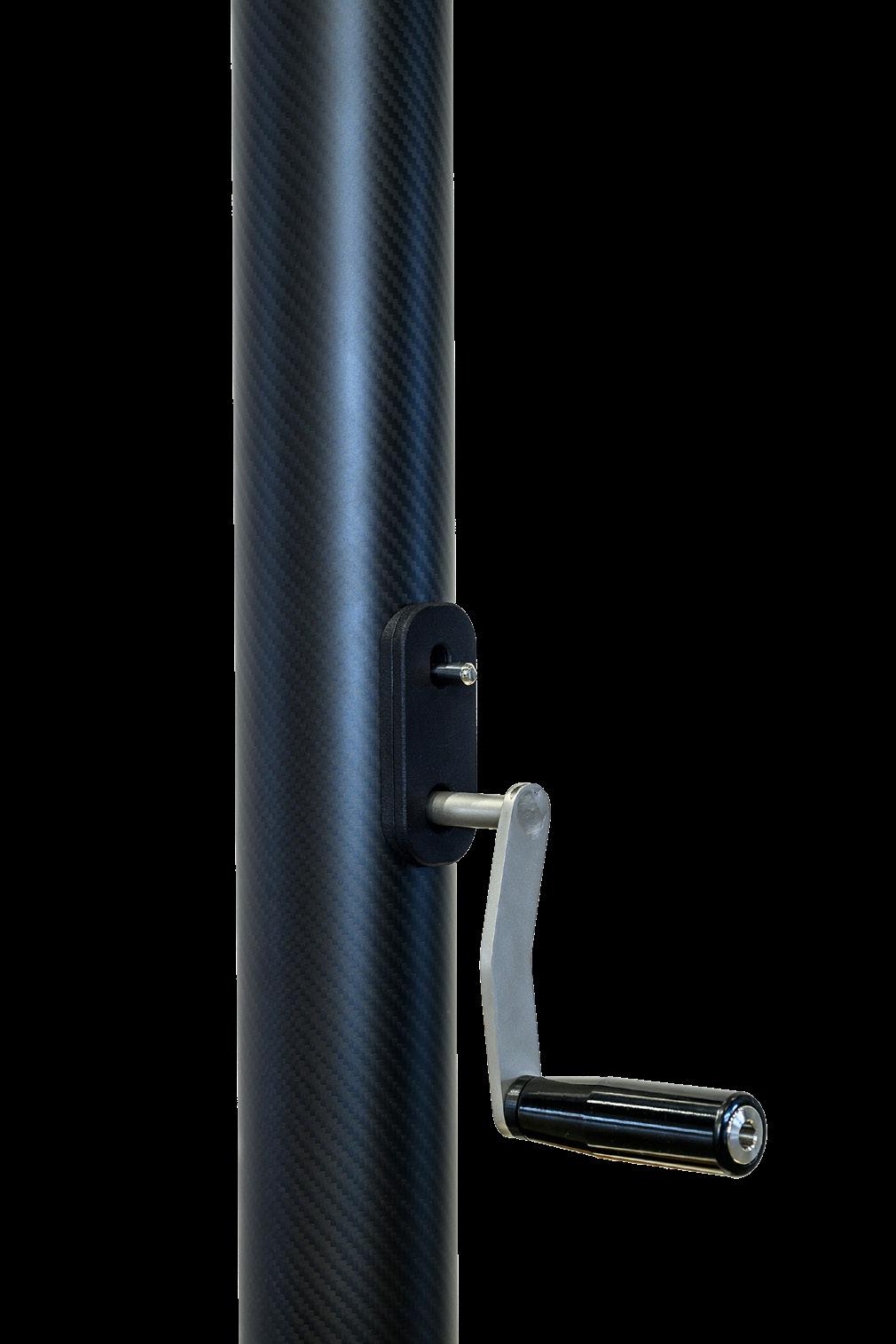
Bosch Engineering has introduced a new 800-volt electric drive system designed for both recreational and working boats. The SMG 230 electric motor delivers continuous power up to 200 kilowatts, facilitating the electrification of larger vessels weighing between 20 to 30 tonnes. Incorporating silicon carbide semiconductors, the accompanying inverter achieves an efficiency exceeding 99%, enhancing overall system performance. This comprehensive electrification toolkit, adaptable for both 400- and 800-volt applications, offers shipyards and system integrators the flexibility to seamlessly integrate these components into various maritime vessels.
SOL-MATES in the Netherlands produces complete sun awning systems. Set up by five entrepreneurs with proven track records in the yachting industry, ranging from composites and metal construction to 3D engineering and project management, the result of all this combined experience is that they know what works and what doesn’t on superyachts. Their latest manual winch system offers a fast, simple, and costeffective solution for shade systems that are compatible with the smallest diameter uprights, making it a versatile choice for a variety of applications. The system operates using a removable handle to apply tension, which is released with the simple lift of a pin. Pole diameters range from 80mm in carbon fibre to 100mm in a combination of carbon fibre and stainless steel with a maximum height of 2200mm. The poles can be secured to the deck using a bayonet system with a maximum traction of 100 kg. Custom options are available on request.
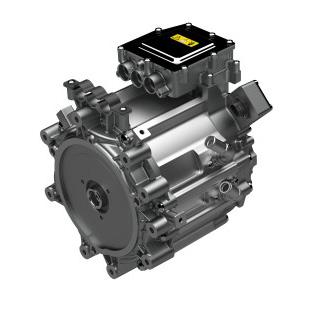
The introduction of Hydro Generators marks a significant step forward in regenerative sailing for large yachts, offering a sustainable alternative to traditional diesel generators. By operating independently of the main propulsion system, these innovative generators minimise drag and maximise electrical output, allowing yachts to maintain their speed while reducing their environmental footprint. Unlike dualpurpose systems, hydro generators employ a dedicated electric pod with a specially designed fixed-pitch propeller, ensuring higher efficiency without the need for complex modifications. The addition of a low-drag ‘freewheeling’ mode further enhances their practicality, as it allows the system to remain in place with negligible impact when not in use.

Rondal has developed three tailored models; the Hydro Generator 15000, designed for yachts over 50 metres, delivers robust power output for high-demand vessels; the Hydro Generator 9000 Performance, optimised for medium-sized yachts, achieving exceptional efficiency at midrange speeds. And the Hydro Generator 9000 High Speed caters to faster yachts, including multihulls, with a lightweight design suited for highperformance sailing.

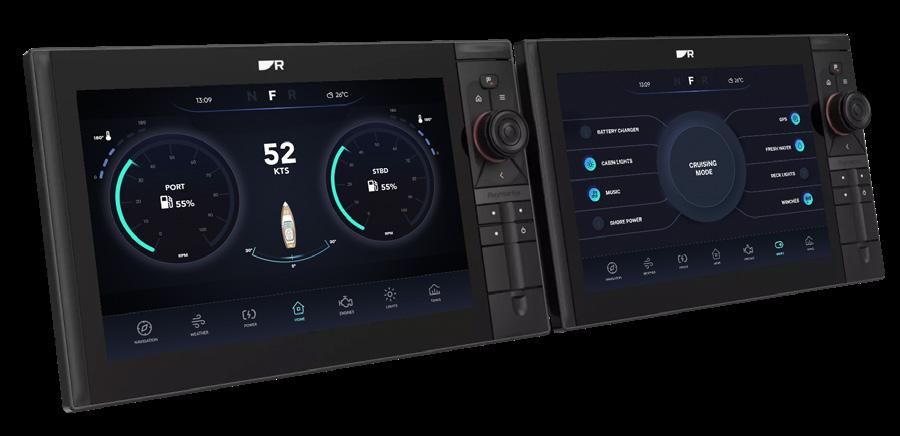
Maretron and Raymarine have unveiled a groundbreaking partnership to integrate Maretron’s MConnect® technology with Raymarine’s awardwinning Axiom chartplotter displays. This collaboration combines Maretron’s innovative clientserver technology, which provides real-time access to hundreds of vessel data points, with Raymarine’s intuitive LightHouse interface. The result is a seamless user experience that allows boat owners and OEMs to monitor and control critical vessel systems directly from Raymarine’s high-definition displays, enhancing safety, efficiency, and overall enjoyment on board.
The integration of MConnect brings advanced data visualisation and customisation tools to Raymarine’s multifunction displays, enabling users to create personalised dashboards tailored to their specific needs. Boat builders and dealers can also leverage MConnect’s graphics editor to embed brand-specific aesthetics and designs, offering a cohesive and branded user experience. Available now through Maretron’s dealer network, this partnership reflects both companies’ commitment to delivering cutting-edge innovation and connectivity for the recreational boating industry.
The REVBO range from Bowmaster represents a significant innovation in mooring bollard technology, introducing the world’s first rotating and retracting bollard. This design enables crews to safely adjust mooring lines without detaching them from the bollard, simplifying line handling and enhancing safety, particularly for smaller or less experienced teams. With a compact footprint, REVBO bollards minimise deck clutter while maximising the active line engagement area for optimal performance. Additionally, they meet the latest International Maritime Organization (IMO) safety standards, ensuring reliability and compliance for modern yachting.
The Model 4 REVBO stands out as a rotating and retracting bollard, offering exceptional versatility for docking. Capable of tensioning dock lines during mooring, it retracts to a flush deck level when not in use, delivering a sleek and seamless appearance. Retraction is achieved via a gas strut or powered mechanism, ensuring smooth operation. The bollard lid can be customised to match the deck material, such as teak, for a polished and discreet look.
Constructed from high-strength stainless steel or advanced composite materials like titanium-carbon fibre, the REVBO range provides weight savings of up to 90% compared to traditional designs. This lightweight yet durable construction reduces deck load, making it an ideal choice for high-performance yachts.
New projects in early stages of construction that present opportunities for OEMs, suppliers and subcontractors.
Barnes Yachting has announced the construction of two 52-metre projects at the Turkish commercial shipyard Orion Yachts. Project Tide is the first of the two in-build, with metal cut this December and the second hull due to begin in February. She is a self-funded project, with the goal of creating an in-house charter fleet. Top features of the 52-metre yacht include her six stateroom layout for the accommodations of as many as 12 guests, a 4,000 nautical mile range and her steel and aluminium construction.
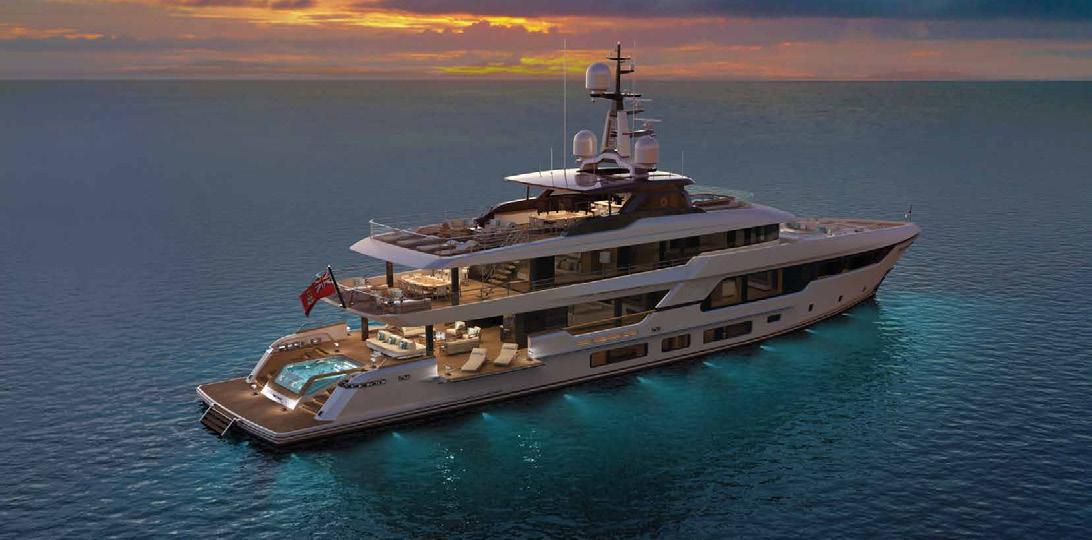
LENGTH: 52-metres BUILDER: Orion Yachts GT: 499 GT COUNTRY OF BUILD: Turkey DELIVERY YEAR: 2027
NAVAL ARCHITECTURE: Axis Group Yacht Design EXTERIOR DESIGNER: Horacio Bozzo Design INTERIOR DESIGNER: N/A
The first hull of the new 51.1-metre Mangusta Oceano 52 model is under construction at the Overmarine Group’s shipyard in Pisa. This model is being developed jointly by Overmarine’s Engineering Department. This steel and aluminium displacement yacht falls under the 500 GT category. During the press conference, Mangusta highlighted that their extensive research into glazed surfaces and strategic technical modifications have eliminated barriers across all decks.

LENGTH: 51.1-metres BUILDER: Overmarine GT: 499 GT COUNTRY OF BUILD: Italy DELIVERY YEAR: 2027
NAVAL ARCHITECTURE: Overmarine EXTERIOR DESIGNER & INTERIOR DESIGNER: Alberto Mancini Yacht Design
In-build at the Turkish shipyard and due for delivery in 2026, the yacht, currently for sale, is a monohull with a ketch sail arrangement. She has a steel hull and aluminium superstructure and will be powered by twin Baudouin engines.

LENGTH: 40-metres BUILDER: Bodrum Oguz Marin GT: 258 GT
COUNTRY OF BUILD: Turkey DELIVERY YEAR: 2026
NAVAL ARCHITECTURE: Bodrum Oguz Marin EXTERIOR DESIGNER & INTERIOR DESIGNER: Bodrum Oguz Marin
The B.Yond 57M marks a new chapter for Benetti as part of its Voyager series, integrating advanced hybrid propulsion and eco-friendly technologies. This 57-metre superyacht seamlessly combines versatility and functionality, positioning it as the ultimate vessel for extended cruising. She is characterised by extensive glazing, providing guests with light and bright interiors, which benefit from extended views of the horizon and a gentle flow of sunlight.
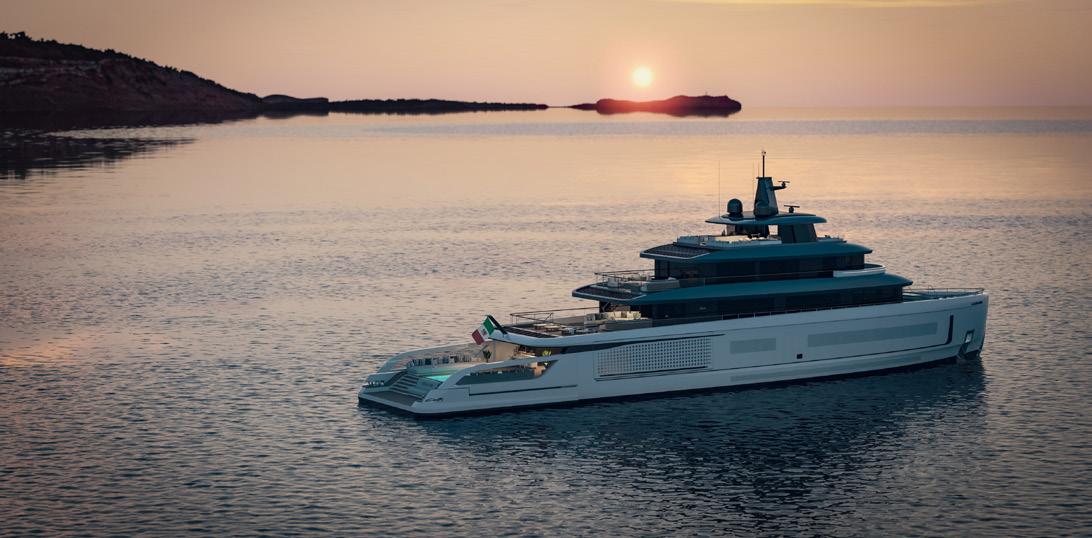
LENGTH: 57-metres BUILDER: Benetti Yachts GT: 1,000 GT COUNTRY OF BUILD: Italy DELIVERY YEAR: 2027
NAVAL ARCHITECTURE: Benetti EXTERIOR DESIGNER: Lobanov design INTERIOR DESIGNER: Bonetti / Kozerski architecture DPC
Announced in October 2024, this latest project is a full-custom design, due for delivery in 2027, she has a four deck arrangement with a large aft deck including a swimming pool. Regarding her performance, the 56-metre yacht is set to be powered by twin Caterpillar engines that propel her to a top speed of 16.5 knots, with a range of 4,500 nautical miles.

LENGTH: 56-metres BUILDER: Baglietto
COUNTRY OF BUILD: Italy
YEAR: 2027
EXTERIOR DESIGNER: Team for Design - Enrico Gobbi INTERIOR DESIGNER: Enrico Gobbi & Carlo Lionetti
ARCHITECTURE: N/A
The keel of Heesen’s speculation project Grace was laid in December. As with all other Heesen steel yachts, her hull will be welded off-site at Talsma to avoid cross-contamination with any aluminium production. Also known as Project 21350, the 499 GT Fast Displacement yacht will feature a hybrid propulsion system for optimal comfort and silent cruising capabilities in all sea conditions.
LENGTH: 49.9-metres BUILDER: Heesen GT: 499 GT

COUNTRY OF BUILD: The Netherlands DELIVERY YEAR: 2027
NAVAL ARCHITECTURE: Van Oossanen Naval Architects EXTERIOR & INTERIOR DESIGNER: Harrison Eidsgaard
Sold to a European client, the first hill of the new series is due for delivery in 2025, having been started on speculation. Constructed with a composite hull and superstructure reinforced with carbon, the yacht measures thirty metres in length with a maximum beam of 8.1-metres. This provides interior volumes typical of vessels exceeding forty metres, with a gross tonnage of approximately 260 GT.
LENGTH: 30-metres BUILDER: Extra Yachts
NAVAL ARCHITECTURE: Extra Yachts

Italy
DESIGNER: Studio Agon
German shipyard Abeking & Rasmussen has announced that the keel of their new 79.95-metre superyacht Abeking 6516 has been laid in a ceremony held at the G&K SteelCon premises in Poland. Abeking 6516 will feature design from the drawing boards of a well known UK-based studio, which will adorn her with a “modern but cosy interior,” according to the shipyard.
LENGTH: 79.95-metres BUILDER: Abeking & Rasmussen
NAVAL ARCHITECTURE: N/A EXTERIOR DESIGNER: N/A
YEAR: 2025
DESIGNER: Laura Brocchini Design
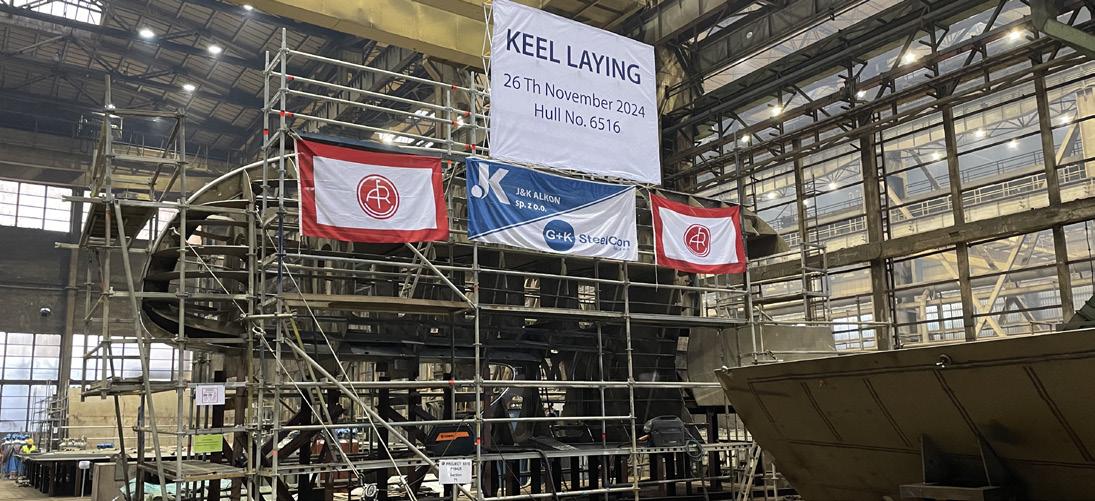
COUNTRY OF BUILD: Germany DELIVERY YEAR: 2026
DESIGNER: N/A
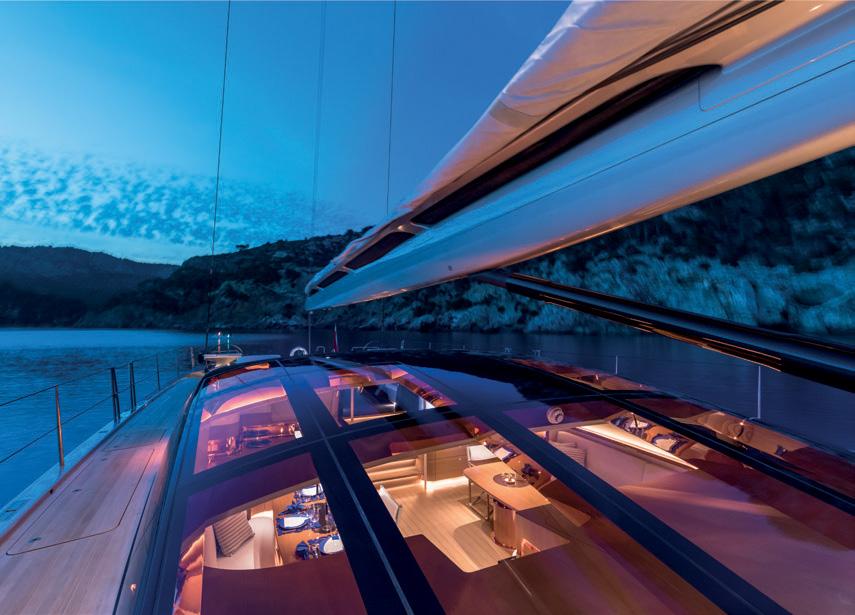
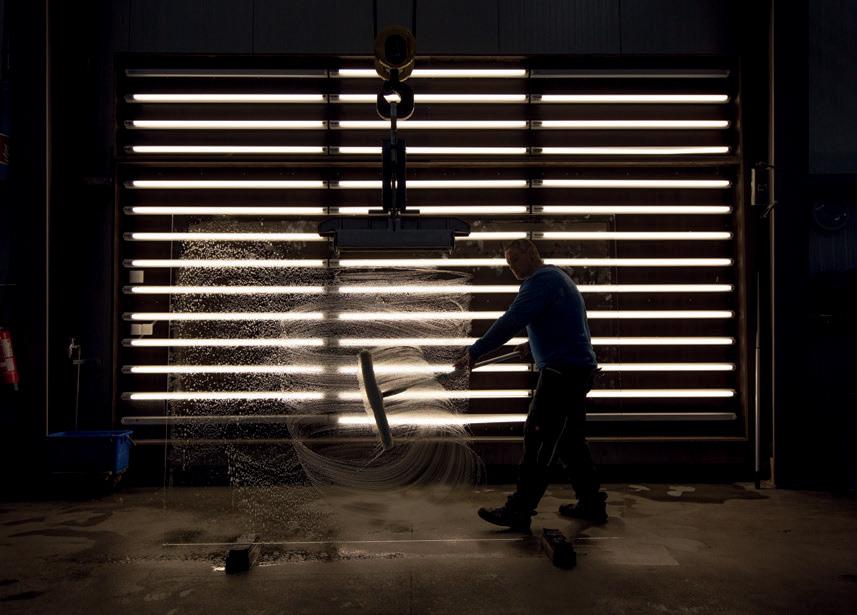




Founded in 1997 by Peter Joachimmeyer and catering predominantly to the superyacht industry, Kreative Metallform (KMF) in Germany has established itself as a pioneer in the fabrication of high-quality stainless steel components.
BY FRANCESCA WEBSTER

KMF designs and manufactures a broad range of products, but is best known for its foldable doors and moveable windbreakers, particularly its patented electric stacking door. The company initially focused on shopfitting, commercial interiors, and trade fair construction before pivoting into the superyacht sector, completing its first yacht exterior project in 2010. The following year it installed its first wind protection system. Since then, the company has installed approximately 120 wind protection systems on both new-build and refit projects.
The KMF production facility in northwest Germany spans 2,000 square metres and is equipped with advanced machinery, including CNC technology for high-precision machining and laser welding capabilities. On average, KMF delivers currently approx. 20 custom wind protection systems per year, equipping around seven superyachts.
While foldable doors remain the company’s best-selling product, over the years it has developed its line in response to evolving market demands, especially with the increasing preference for flush decks and uninterrupted design. During the development of the 141-metre Lürssen Nord, for example, KMF were tasked with designing a transparent windbreak system without impacting the deck aesthetics. The result was the development of the electric staking gate, which stores glass elements up to a length of 12 metres within the ceiling, eliminating the need for floor bushings or deck rails and offering unobstructed views for guests.
In order to achieve this KMF developed a new guiding system arranged vertically within columns or a niche in the deckhouse wall. The glass is then secured using a patented clamping system designed to compensate for thermal expansion in dynamic marine environments where temperatures can fluctuate between hot climates such as the Middle East and the low temperatures of the polar regions. KMF’s innovations extend to foldable doors that offer exceptional reliability and maintenance-free performance, requiring no adjustments after installation.

Each project undertaken by KMF is a testament to the company’s focus on Each project undertaken by KMF is a testament to the company’s focus on precision and personalisation. The lead times for projects vary depending on their complexity, with smaller assignments, such as single windscreen doors, requiring two to four months, while larger projects such as installing 20 windscreen systems on a newbuild yacht can take up to eighteen months. The company’s capacity to handle complex projects is evident in recent advancements, such as an electric gym enclosure system. This innovative design utilises air cushions and electric motors to move an 8-tonne platform across the deck of a yacht, doubling as a pool cover.
Research and development has been instrumental in KMF’s growth. The company actively collaborates with shipyards, designers, and yacht owners to address unique challenges, resulting in cutting-edge solutions that set new industry benchmarks. Partnerships with top shipyards such as Lürssen and Abeking & Rasmussen highlight its reputation as a trusted industry leader. From height-adjustable tables to sliding hatches and wind protection systems, KMF’s products are about the fusion of innovation, craftsmanship and luxury. With a proven track record and commitment to quality, Kreative Metallform continues to shape the future of the superyacht sector.
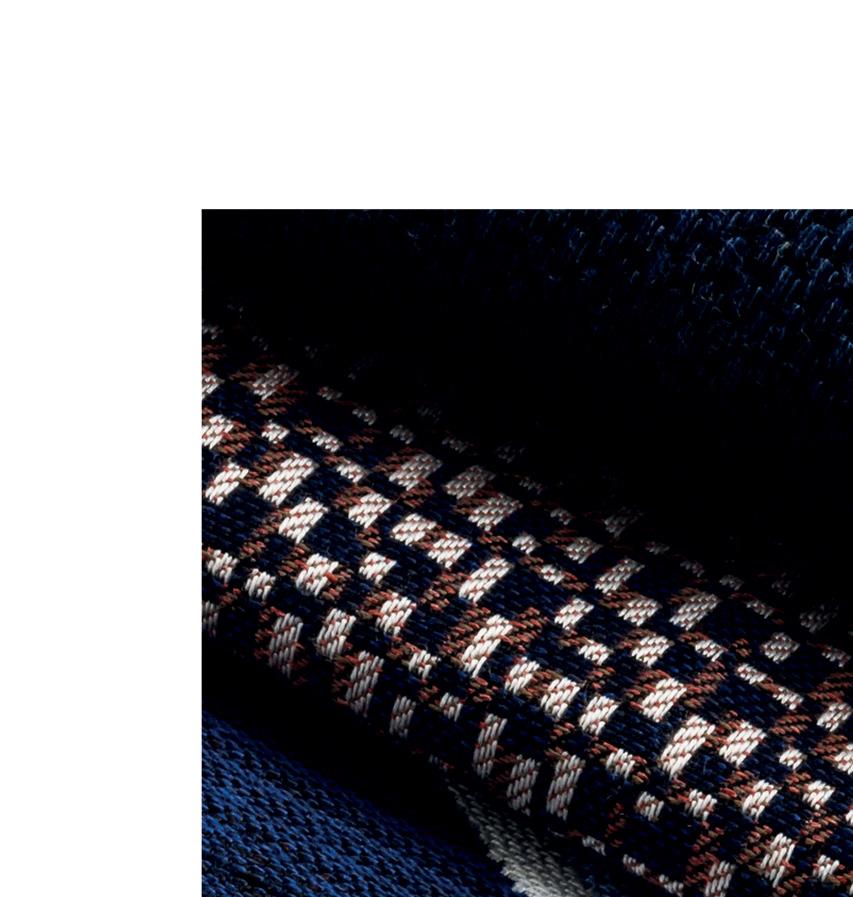
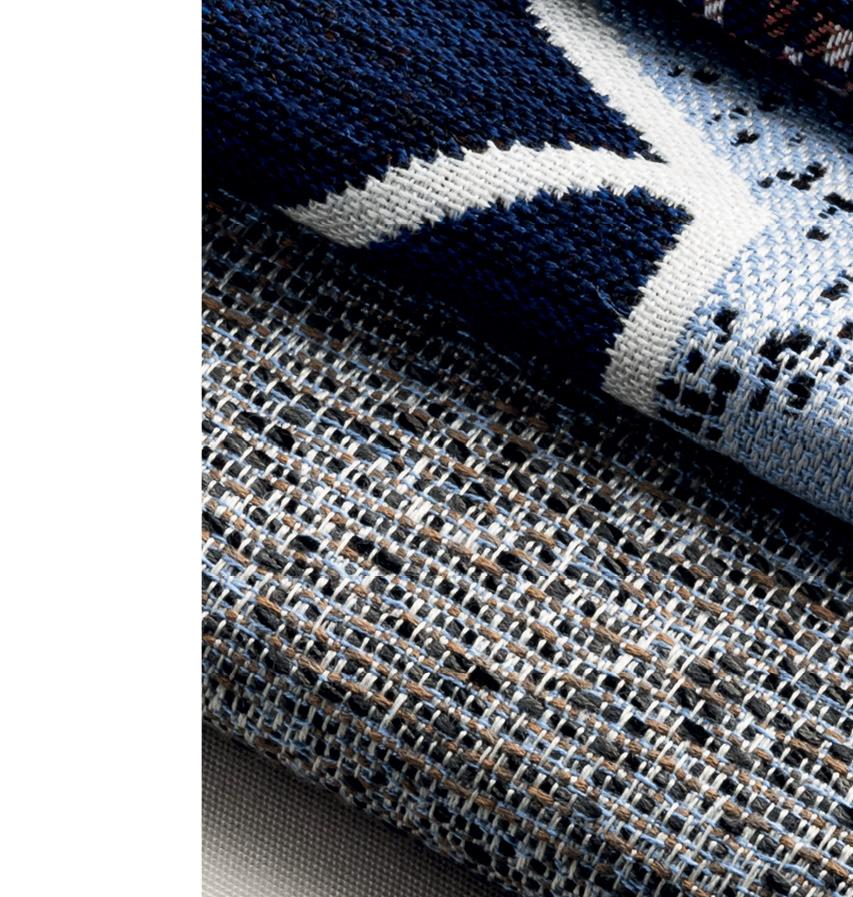





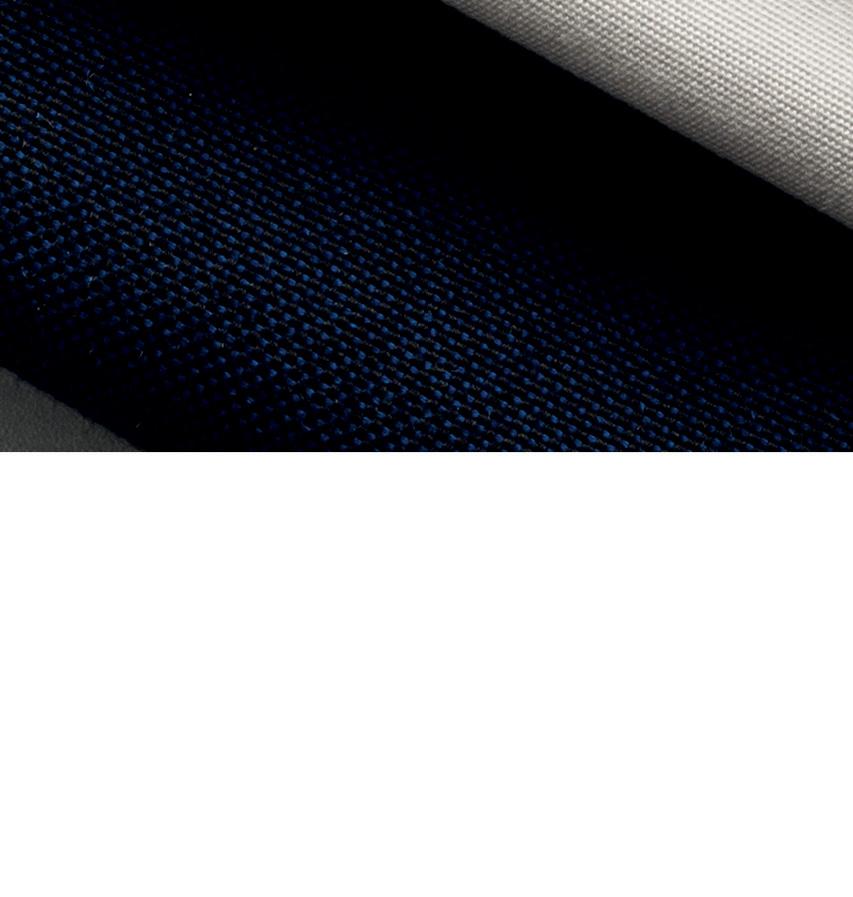
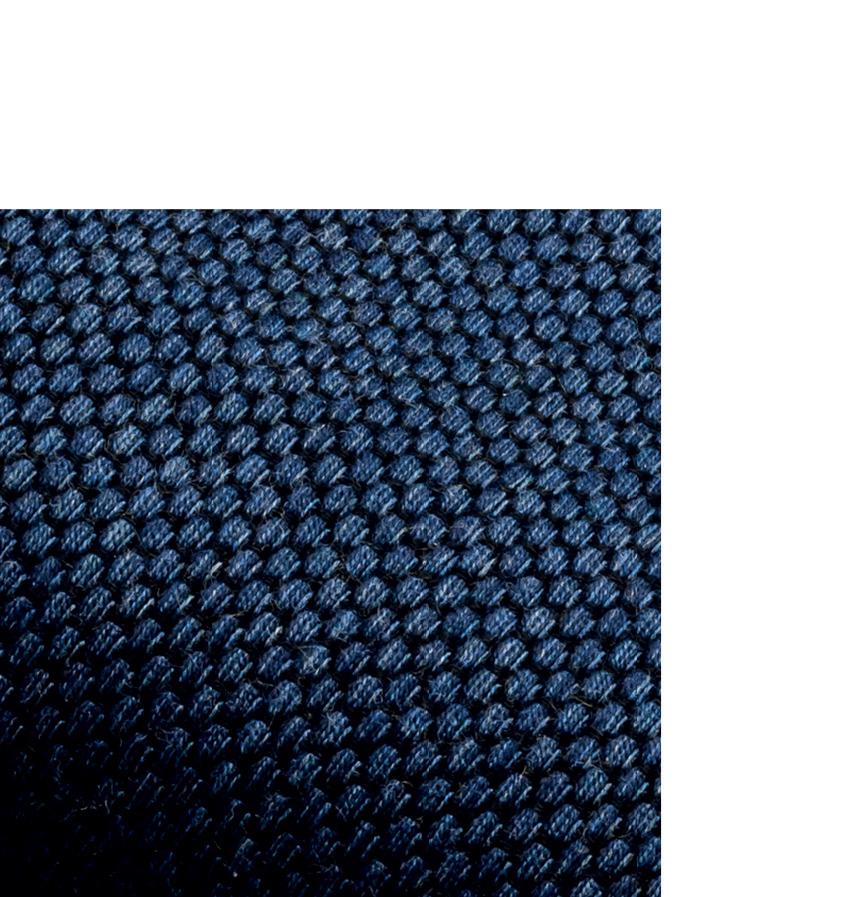

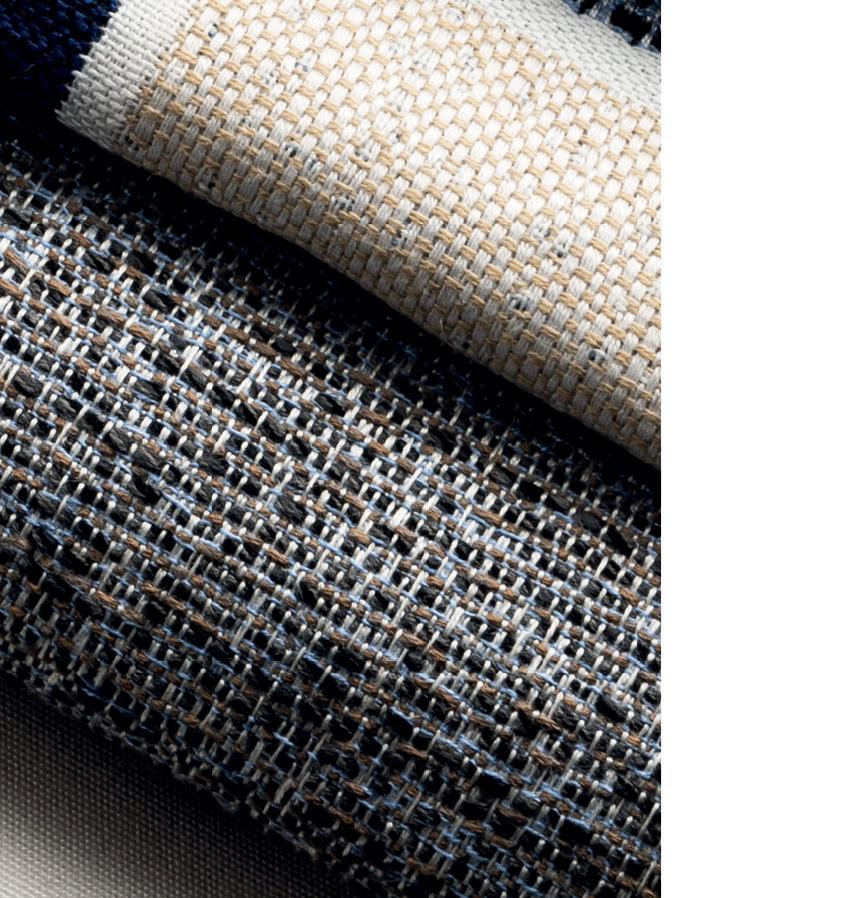
SUNBRELLA ® TIMELESS & ON THE ROAD DESIGNED WITH LASTING STRENGTH AND CLEANABILITY BUILT IN. EXPERTLY CRAFTED, THIS BROAD PALETTE OF COLOURS IS SUITABLE FOR ALL PROJECTS AND ARE PERFECT FOR PATTERNED OR TEXTURED COMBINATIONS. INDISPENSABLE ESSENTIALS THAT STAND THE TEST OF TIME.
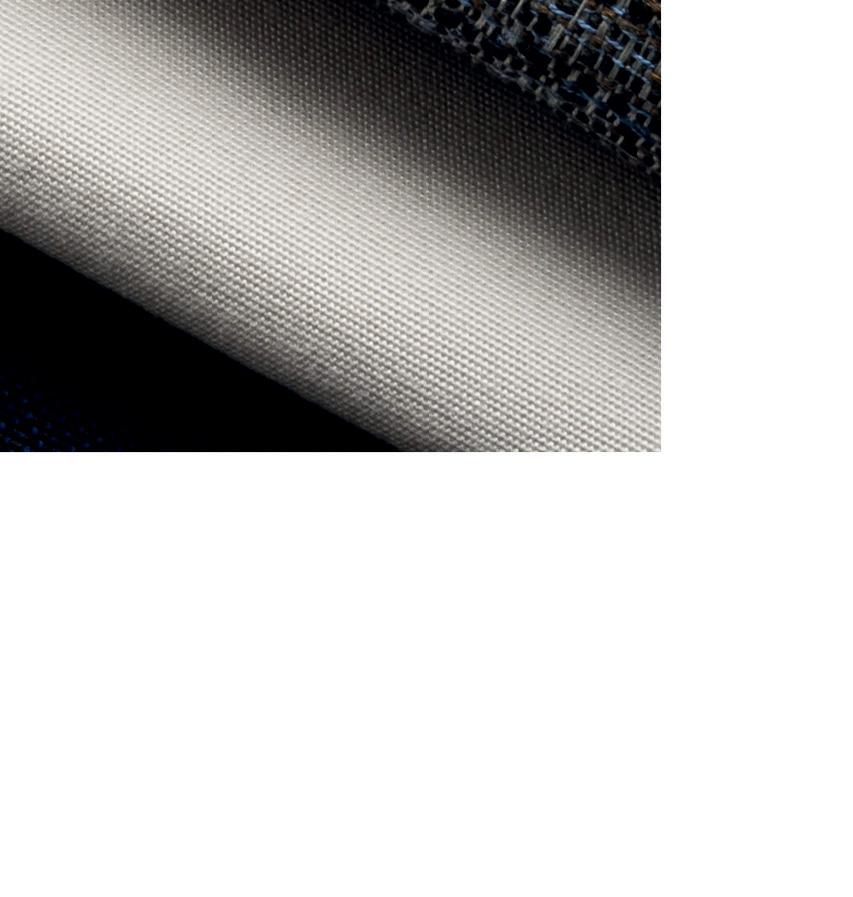
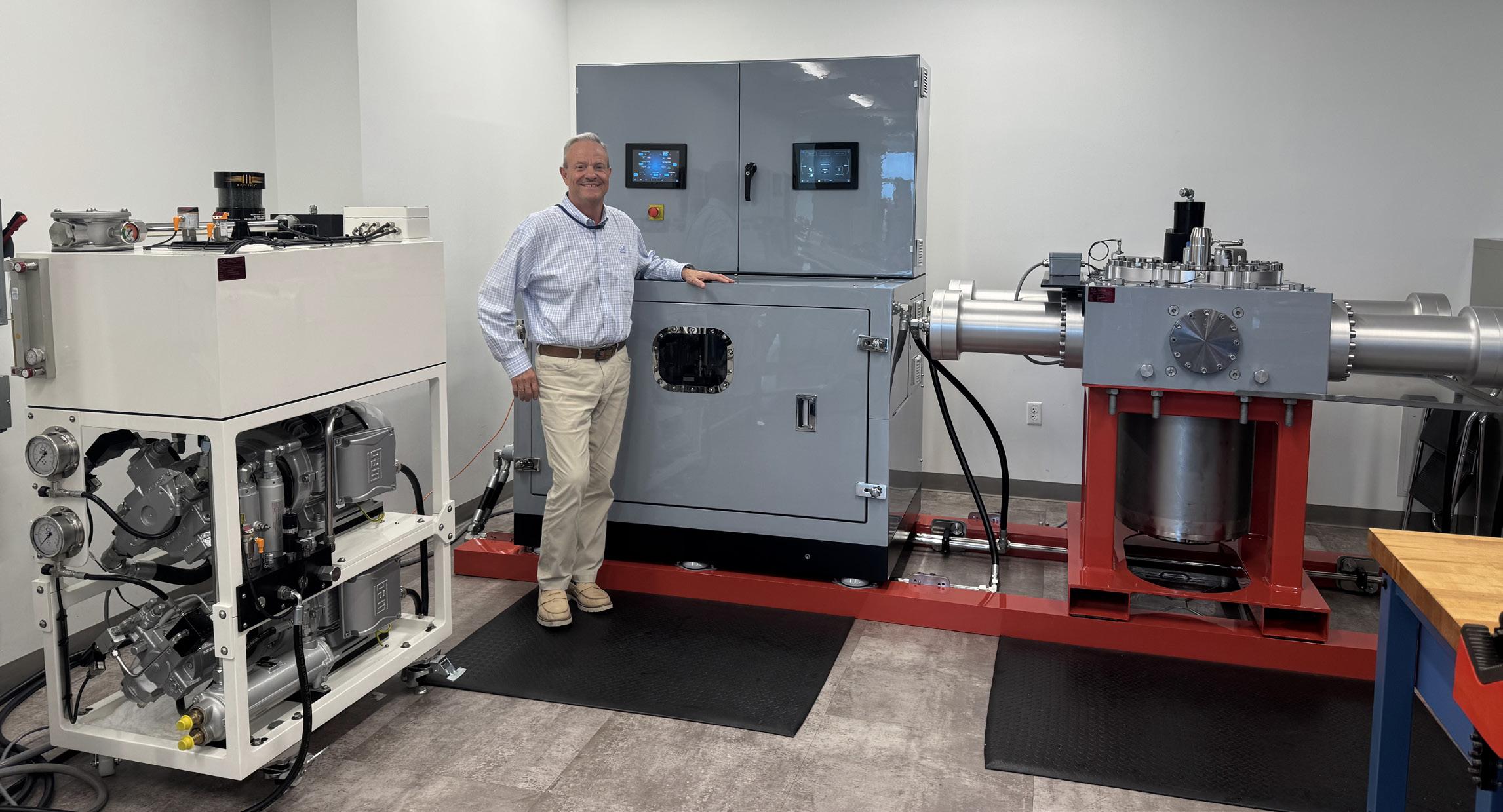
From pioneering Zero Speed stabilisers that transformed onboard comfort at anchor to advanced solutions like the F45 electric-hydraulic hybrid power system and new electric e-Fin stabiliser, Quantum Marine Stabilizers has been at the forefront of stabiliser developments. Company founder and CEO John Allen (above) shares insights into Quantum’s journey, the challenges of shifting from hydraulic to hybrid and electric, and offers a glimpse into what the future holds for stabilisation technology.
BY FRANCESCA WEBSTER
What has been Quantum’s most impactful innovation in stabilisation?
Without a doubt it has been the Zero Speed stabilisers. Their innovation really changed the game. The concept of stabilisers that worked while at anchor simply didn’t exist before we spearheaded the development and introduced the product around the year 2000. The effect was immediate – owners could now anchor without experiencing disruptive rolling. But of course the major challenge was finding that initial owner willing to take risk. Considering most yacht owners spend the majority of their time on board while anchored, this breakthrough was transformative.
And how long did it take for the industry to recognise this technology and for competitors to follow suit?
Initially, recognition was gradual. We focused on retrofits first because they’re faster and more straightforward to implement, allowing us to build credibility quickly. In the first two years, we retrofitted about ten yachts. These early adopters became advocates, prompting shipyards to take note when their clients requested this technology for newbuilds. The real turning point came when charter guests began asking brokers specifically for yachts equipped with Zero Speed Stabilisers. Within about two and a half years, the technology gained real traction. Our first major competitor was Naiad, followed later by larger players like Rolls-Royce and more recently CMC. But we had a solid three-year lead before it became an industry standard.
How many stabiliser systems do you produce and install annually on superyachts?
The numbers have evolved over time. In our peak years, we produced up to 100 systems annually – an impressive figure, especially for smaller yachts of 50 to 60 metres. Nowadays, we handle fewer projects, averaging around 30 to 40 systems per year, but these are much larger, more complex, and therefore significantly more costly. Despite the reduced volume per year, our revenue remains decent due to the scale and sophistication of these systems.
What drove this shift towards hybrid technology, with the F45 and now the fully electric e-Fin?
The shift was driven by a desire for efficiency and reduced power consumption. We had toyed with the idea of electric stabilisers years ago but didn’t have the technology or the right expertise at the time. The F45 system, which uses proven hydraulic technology enhanced for better energy management, emerged as a frontrunner for larger yachts. It’s versatile and adaptable, leveraging energy storage capabilities that make it highly efficient. The e-Fin, suited for yachts between
40 and 65 metres, was designed with simplicity and quieter operation in mind. It lacks hydraulic components, making it a more streamlined solution for mid-sized vessels. The main challenge when it comes to introducing entirely electric systems for the larger yacht segment is ensuring the longevity and reliability of electric systems, particularly the gears and motors.
Tell us more about the energy storage solutions you’ve integrated with the F45 and E-Fin?
For the e-Fin, we use capacitors akin to batteries, allowing us to store surplus electricity from the yacht’s systems for peak demand. The F45 goes a step further with a flywheel-based system that stores and releases energy more efficiently with a power density nearly ten times that of capacitors. These innovations help stabilisers consume less power at zero speed and recover energy when the yacht is underway, especially in rougher conditions.
What do you produce in-house or out-source??
We don’t manufacture every component in-house, so choosing suppliers with proven track records is critical. We consider factors like longevity, availability, and support. For instance, the PLCs we use come from multiple brands to avoid dependency on a single source. This strategic diversity ensures that if a supplier discontinues a product, we can pivot to alternatives without compromising system integrity, or having to potentially redesign an entire product around that missing component.
How much of Quantum’s resources go into R&D?
Approximately 20 percent of our technical efforts focus on new development. This includes everything from attending industry trade shows to sourcing new technologies. The goal is to blend research with practical solutions insights, ensuring we remain at the forefront of innovation while maintaining reliability. It has been our unwavering commitment to R&D over the last 40 years that has helped us to elevate the brand and maximise stabiliser performance. For example, the testing and continuous re-development of our hydraulic systems over the past several decades, gave us insights that led to the development of both F45 Power System and the e-FIN electric stabiliser.
Finally, what is Quantum’s next frontier in stabilisation and motion control?
We’re refining the XT-Fin design, and looking into independent fin movement with real-time lift and drag measurement – an evolution we expect to unfold over the next couple of years.


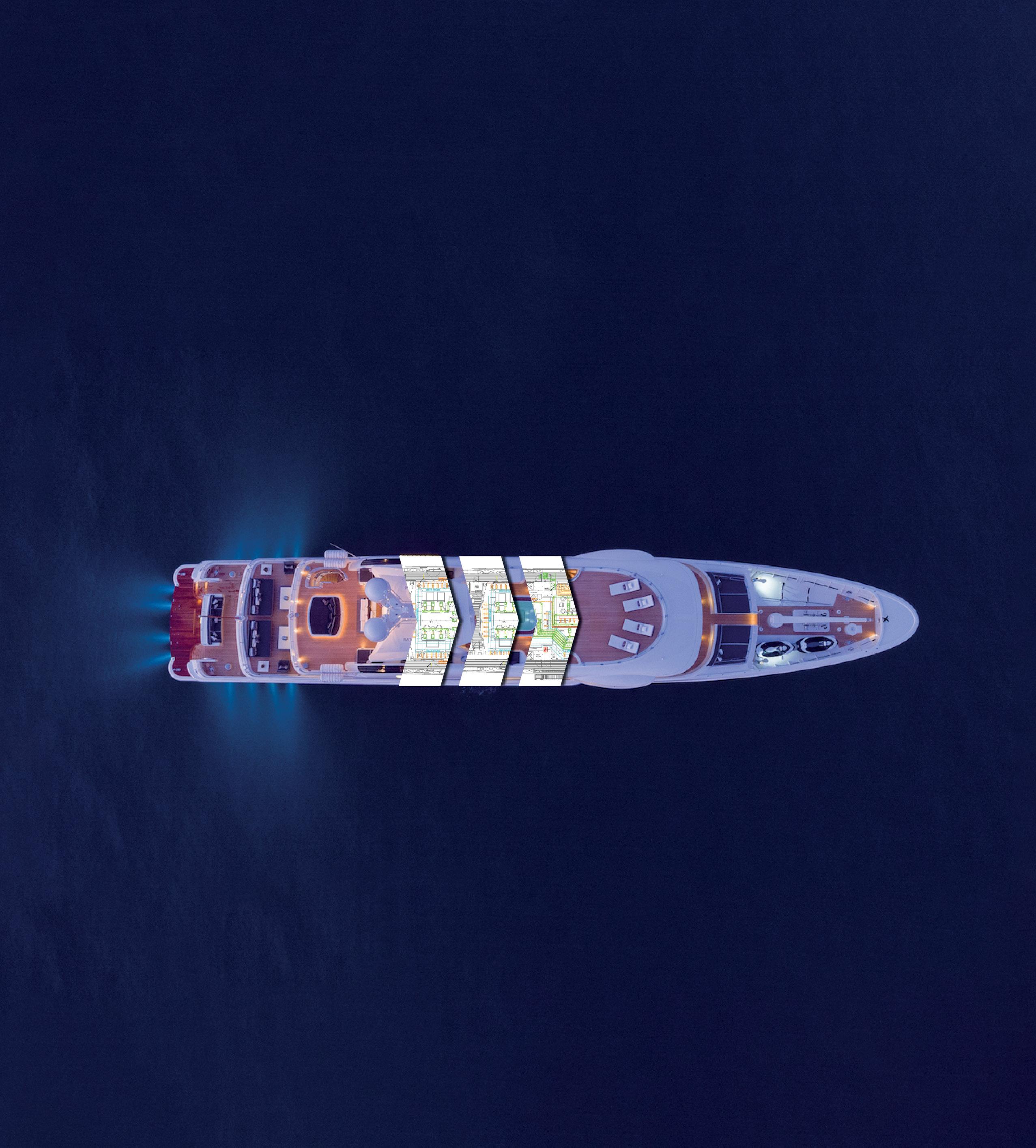
Heinen & Hopman’s HVAC&R solutions seamlessly integrate into your yacht’s design, delivering silent, precise comfort in every space. Our systems ensure optimal air quality, temperature, and humidityallowing you to enjoy every journey in effortless comfort.
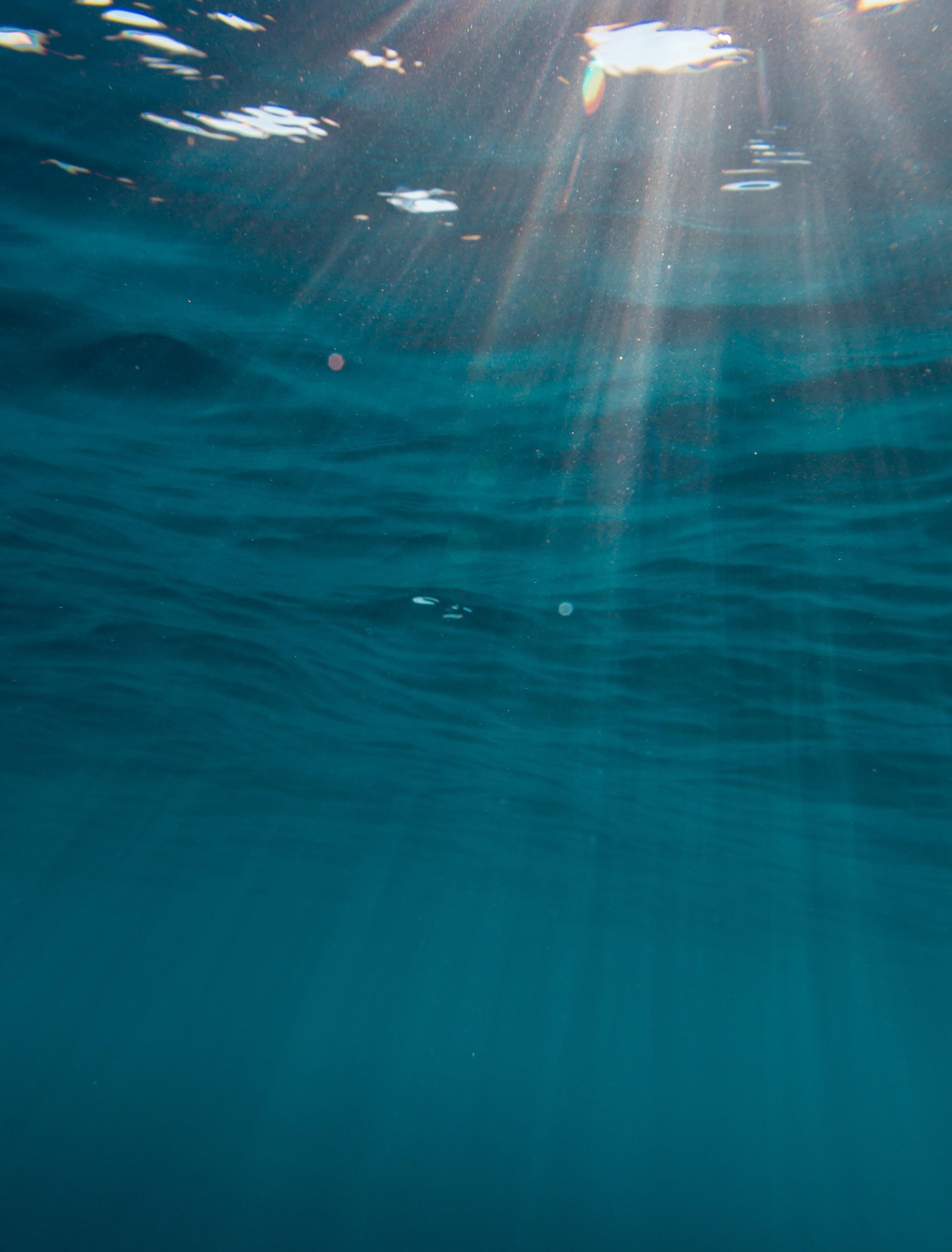

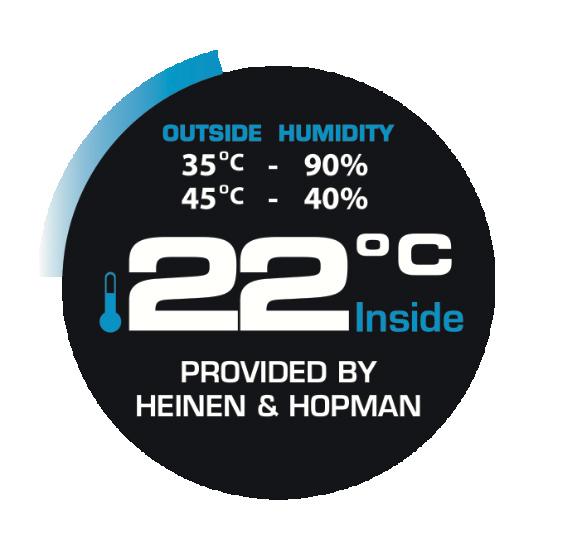
GET IN TOUCH WITH OUR TEAM OF SPECIALISTS
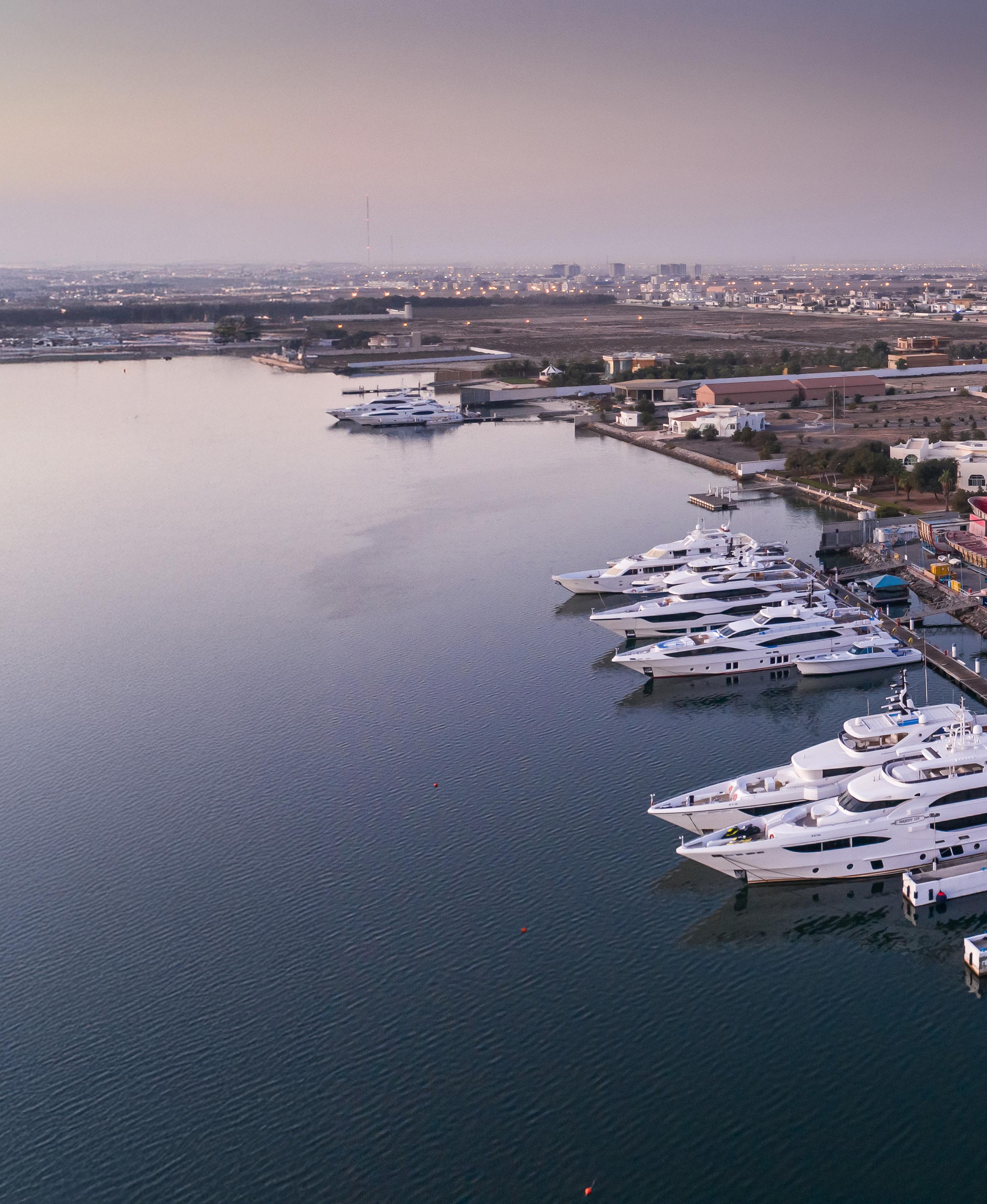
Gulf Craft started out over 40 years ago building composite fishing boats and runabouts. In 2003 it launched its superyacht division and by the end of the decade had delivered 18 vessels over 30 metres across four continents. Now the UAE-based shipyard and SYBAss member is expanding its facilities, enhancing client services, and diversifying into resort tourism.
BY JUSTIN RATCLIFFE
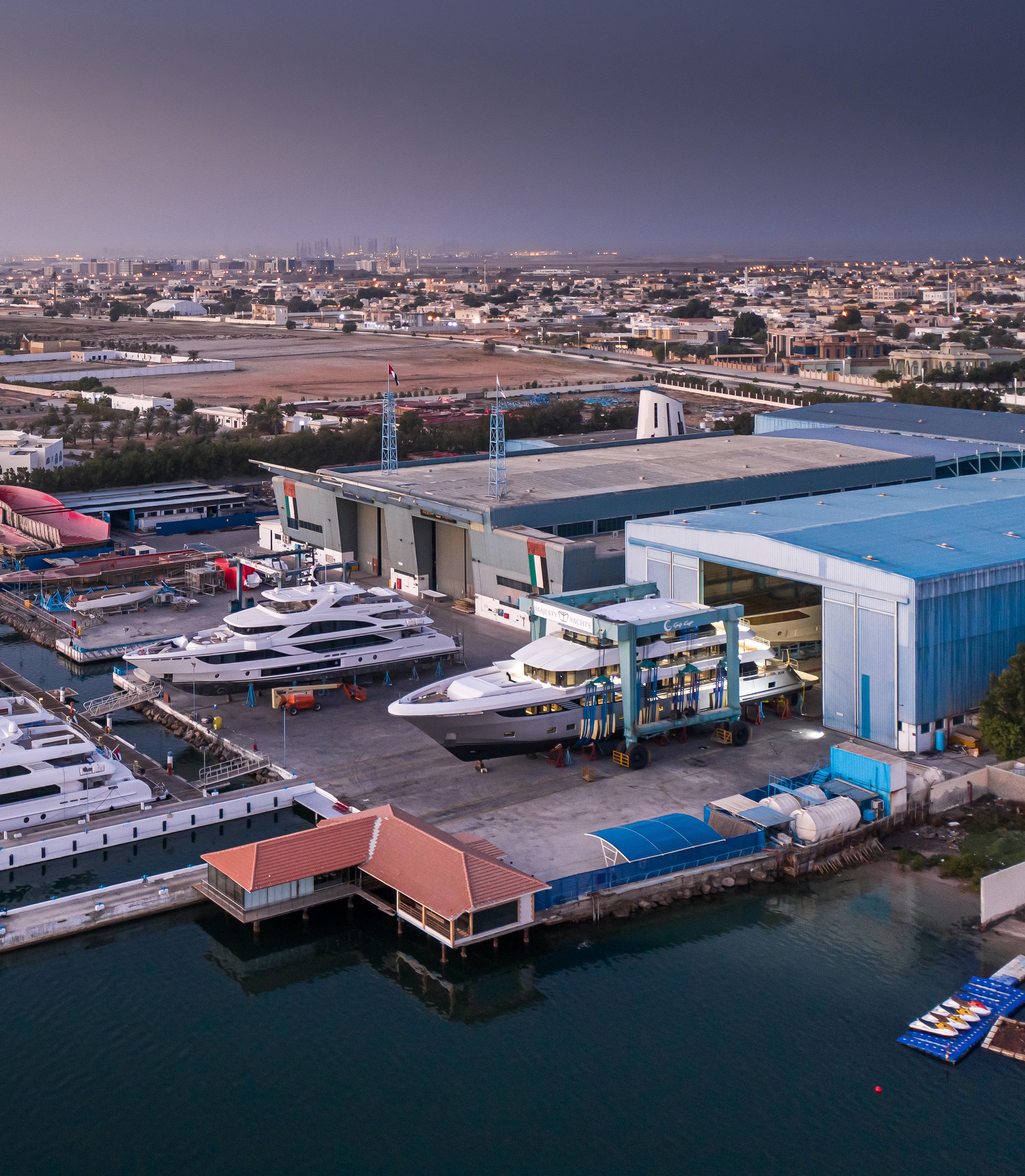

At last year’s Dubai International Boat Show, Gulf Craft announced it was restructuring as a holding company. The news was a footnote at the time, but its significance is not to be underestimated as what is now Gulf Craft Group pursues an ongoing strategy of consolidation and diversification. That process is already starting to bear fruit.
“Having different factories in different sites and different product ranges brings pressure to control the way you work and how best to be competitive in local and international markets,” says Abeer AlShaali, Deputy Managing Director at Gulf Craft Group. “We stepped back a bit to see where we are and who is our competition so we can streamline our activities under a unified vision while providing each brand with sufficient space to develop independently.”
Gulf Craft currently operates out of three facilities – a shipyard Umm Al Quwain and separate service centre in Ajman, UAE, and another yard in the Maldives that builds small passenger vessels. Its product range spans from the leisure lines – Oryx cruisers and SilverCAT multihulls – to the Nomad adventure yachts and Majesty superyacht series, which includes the 56-metre Majesty 175, the world’s largest all-composite production yacht. As part of its corporate restructuring, these facilities are being augmented and the product portfolio remodelled.
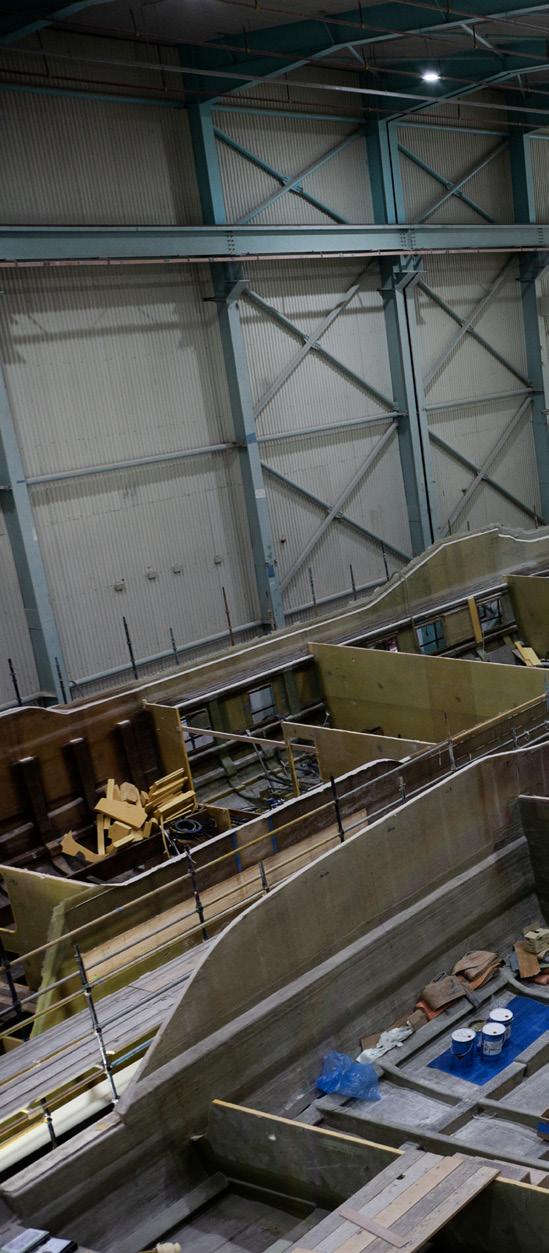

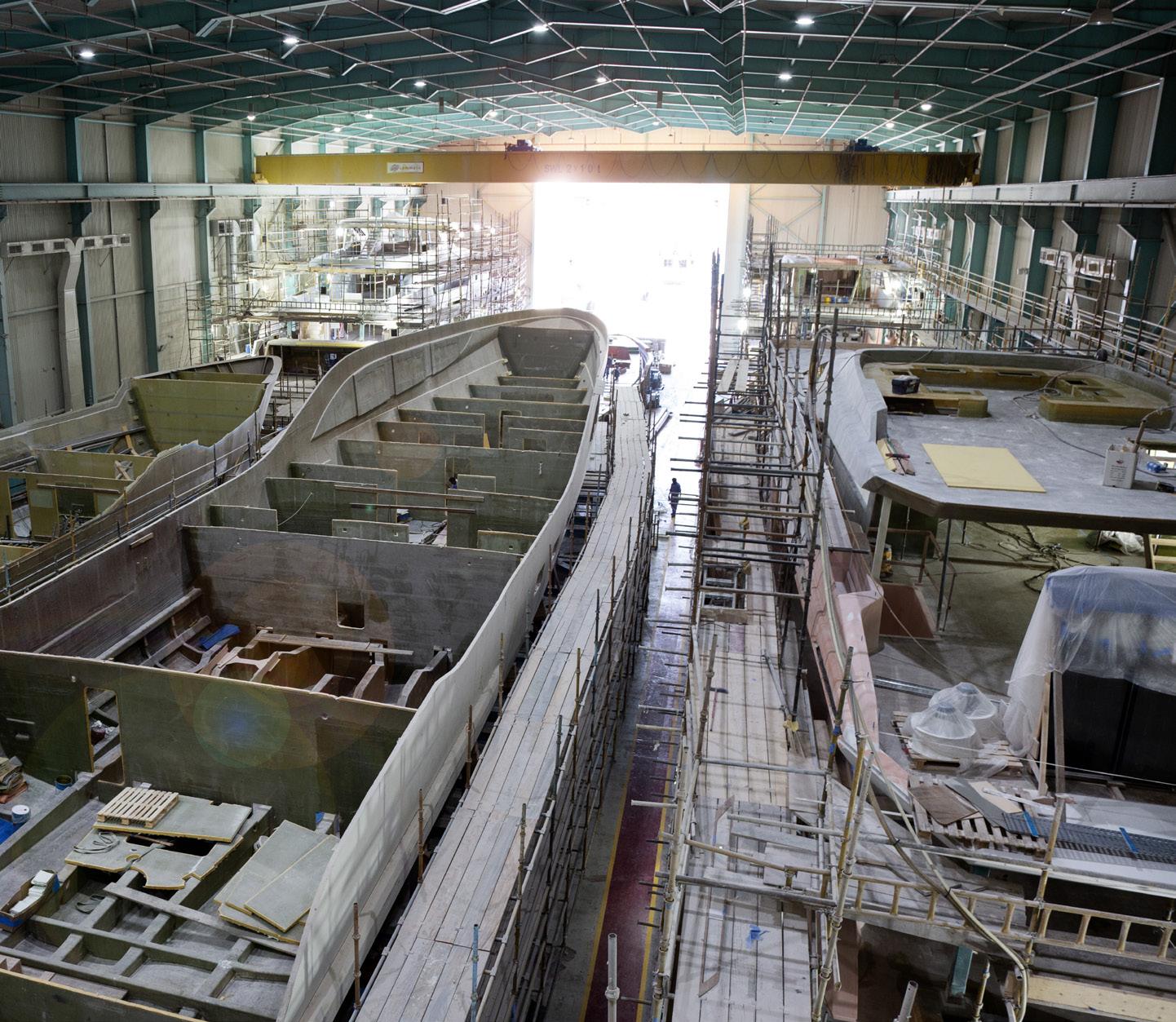

The service centre in Ajman is being upgraded and moving into new premises with a 600-tonne travel lift and berthing for vessels of up to 80 metres to better serve the growing number of superyachts visiting the Gulf region. With the new service facility expected to be operation by the summer, the existing yard will be repurposed as a manufacturing facility for the smaller leisure lines, which will free up space at the main facility in Umm Al Quwain to focus on the Nomad and Majesty series. At the same time, a marketing effort is under way to rationalise brand perception of the group’s four brands that cater to different demographics and different users.
“Majesty Yachts has always been about five-star luxury superyachts and everyone knows what it stands for,” says Gulf Craft Marketing Manager Alexander Souabni.
“The Nomad adventure range has not been shown in Europe or the US, but it resonates with a very strong niche and I’m looking forward to relaunching the brand, because part of the new company structure is about consolidating the way we perceive and present each brand. Not just externally but also internally, because once you’ve internalised perceptions, it's much easier to communicate them to our markets in the US, Europe, Australia, and here in the Gulf.”
In the same vein, Gulf Craft recently set up a new process department with the aim of enhancing closer relationships with its superyacht clients and continuously improving the in-build experience. To reduce paperwork, for example, it will soon be possible to sign off new work orders online and a new dashboard is in development that will allow owners to follow the build of their yachts remotely.
“In the past it was the sales team that looked after these things, but we felt we needed a dedicated department,” says Costas Eliopoulis, Chief Process Officer. “Our job is to really get to know the client inside and out, which helps us in a variety of different ways to build stronger relationships and increase client confidence.”
“At our core we are boat builders and anything else that we do is going to be connected with being out on the water.”
Gulf Craft Maldives was set up in 2002 to build small service vessels for transporting people and goods between the coral atolls that make up the marine republic. Because the products and client profile are very different from Gulf Craft’s yachting production, the shipyard was allowed to operate semi-independently and became by far the largest supplier of such craft in the region. In 2022, Eliopoulis was dispatched to optimise the management, engineering and production processes at the Maldives factory. As former quality control manager and then general manager of production at Gulf Craft, he was able to boost both efficiency and profitability. He was also tasked with reviewing the local markets and especially water transport for the region’s high-end resorts.
“What we found was that our luxury transport craft were not in sync with market expectations,” recalls Eliopoulis. “Wealthy holidaymakers are spending up to $25,000 per night at these resorts; they arrive First Class or by private plane, and we needed to offer vessels that provided a similar transport experience on the water. By listening to the needs of 5-star resorts in the Maldives, we developed an entirely new line of multihull limousine tenders that combine exceptional style, elegance, and comfort to meet the premium standards of luxury transport.”
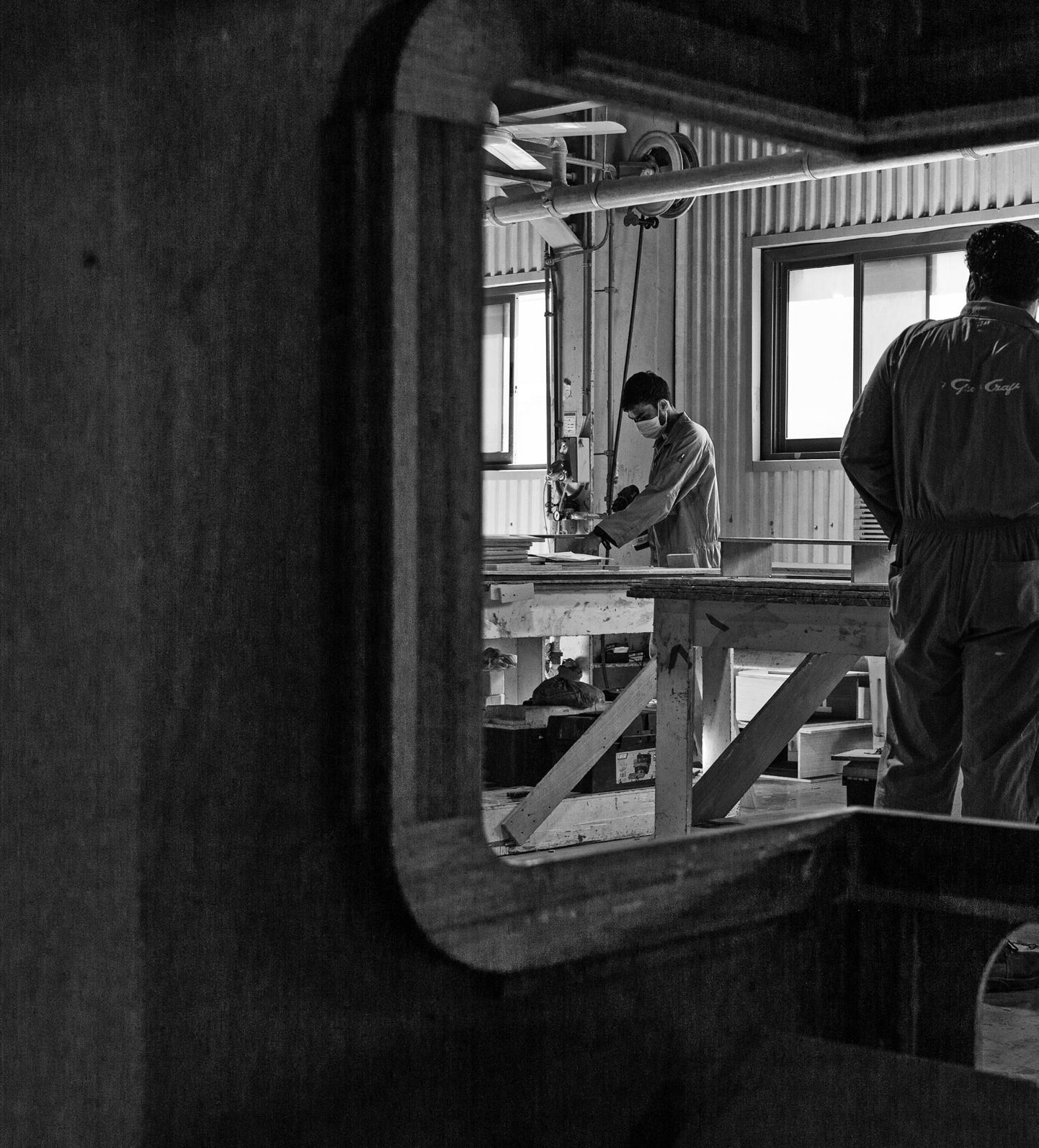
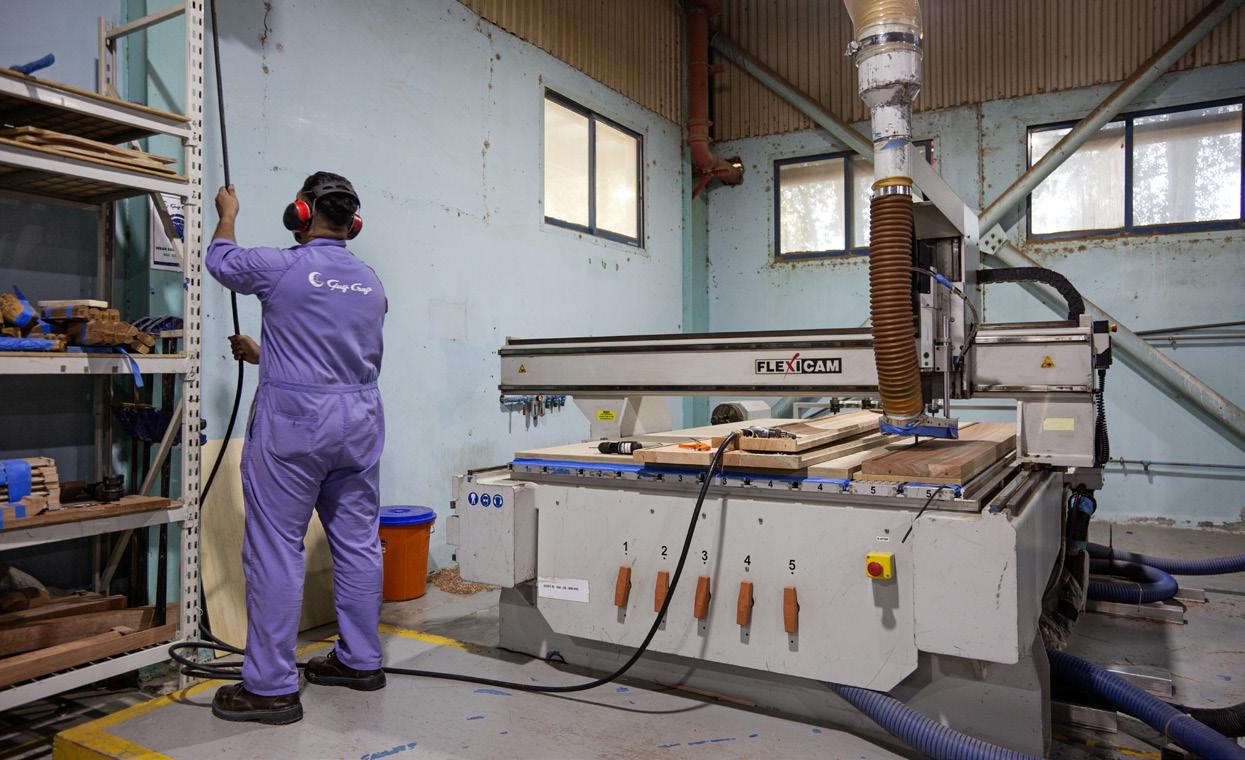
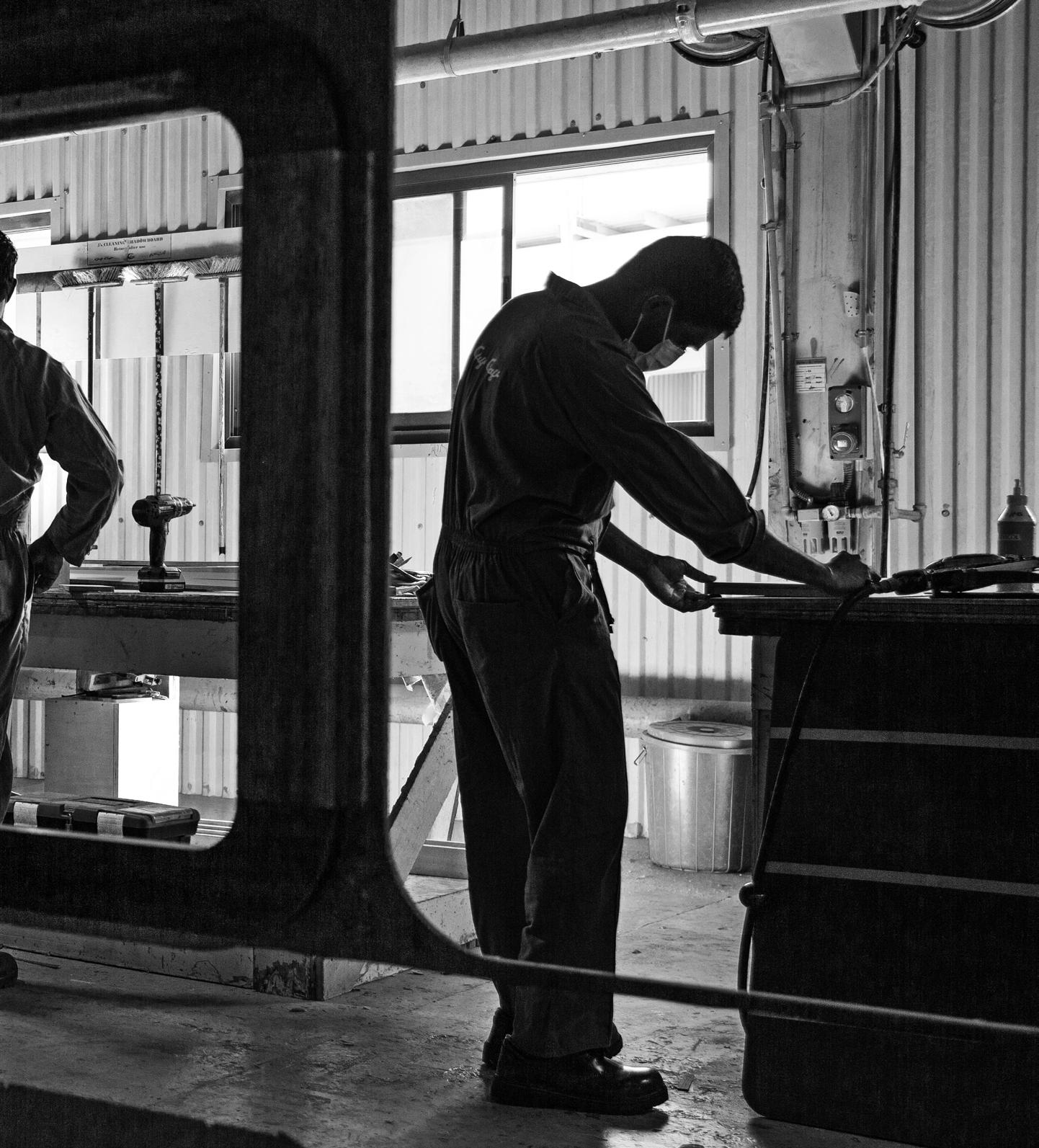
It is not just the boats that are being upgraded. The existing shipyard in Thilafushi will become a one-stop refit and service centre as the finishing touches are put to a brand-new facility of more than 74,000 square metres in North Male Atoll that can build up to 72 feet (approximately 22 metres). This new shipyard, which will double production with an eye also on export, is just the first phase of an ambitious development project for a five-island atoll owned by Gulf Craft that includes luxury residencies, a 5-star resort complex, and even a submerged restaurant. With the shipyard already operational, the first of these real estate projects is due to open in spring 2025.
“At our core we are boat builders and anything else that we do is going to be connected with being out on the water,” says Abeer AlShaali. “Our investment and diversification in the Maldives is all part of that, but it also gives us the agility to be able to generate other revenue streams in an industry that is far from recession-proof.”
Another increasingly relevant function of the Maldives facility is as a stepping stone to the growing Asian markets and beyond. The UAE has bilateral trade agreements with India and Australia that reduce or remove import tariffs – often a stumbling block when exporting luxury goods overseas. Last year, Gulf Craft was a key sponsor of the inaugural Qatar Boat Show in Doha, historically a strong market, and this year it will debut eight brand new models at the Dubai Boat Show. However, the USA is by far its principal market for the larger yachts and remains the focus of efforts to increase sales in that sector.
“Americans understand the advantages of composite in hot and humid climates like Florida, combined with light weight and low draft for cruising the Bahamas,” says Souabni. “That’s not always the case in Europe where opinion is more traditional and once you get over a certain size, the preference is often for steel and aluminium.“
When Mohammed Hussein AlShaali –Chairman of Gulf Craft – co-founded the company in 1982, he was building on a successful career as a diplomat that overlapped with the new business enterprise (his last government position was as UAE Minister of State for Foreign Affairs from 2006-2008). Last year he received a 'Lifetime Achievement Award' at the annual Boat Builder Awards during METSTRADE. The following is an extract of his keynote interview at the Gulf Superyacht Summit in Dubai shortly afterwards.
To what extent has your experience as a diplomat and skill set as a negotiator helped you in the commercial world of luxury yacht building?
To put it very simply, it’s all about public relations and being able to communicate with people. Whether in diplomacy or in business, it’s about communication and I think that is the common dominator with building boats for people. Now it's probably more complicated than that when it comes to politics and here I would like to differentiate between diplomats and politicians: politicians work for themselves or their party; diplomats work for their countries.

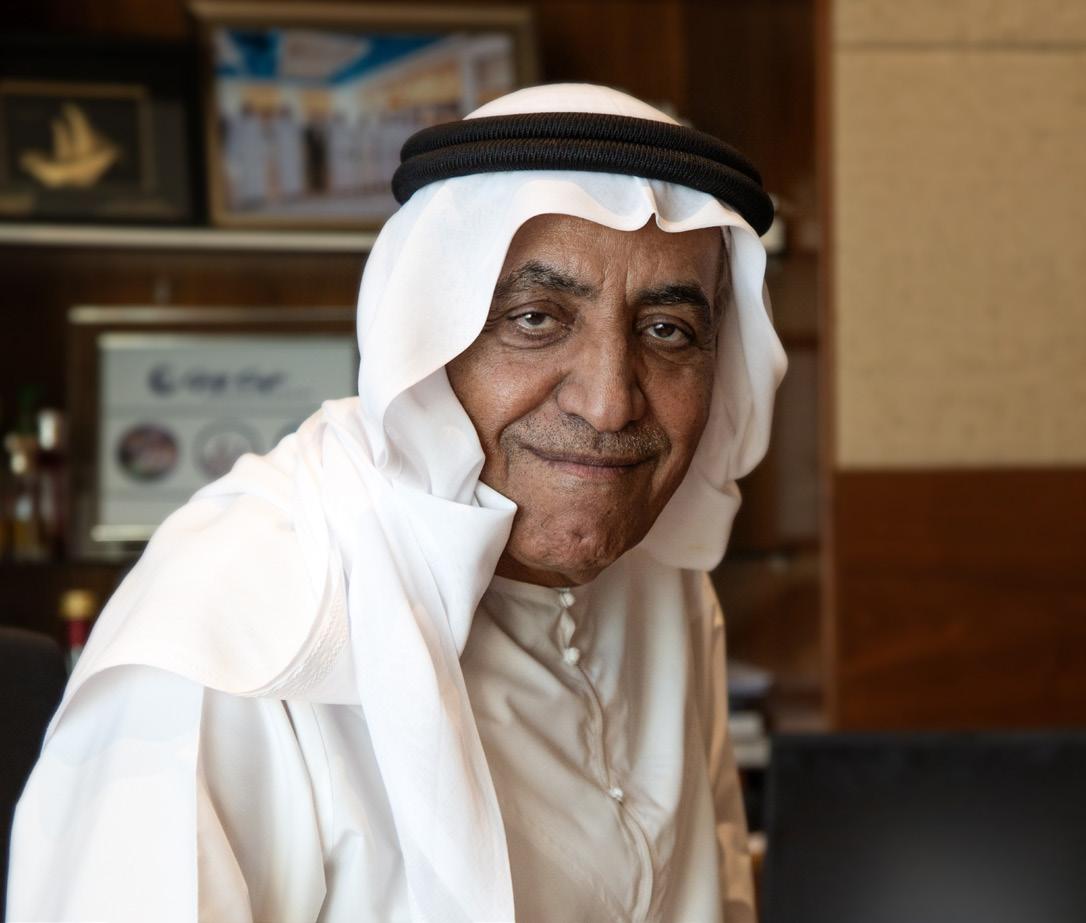
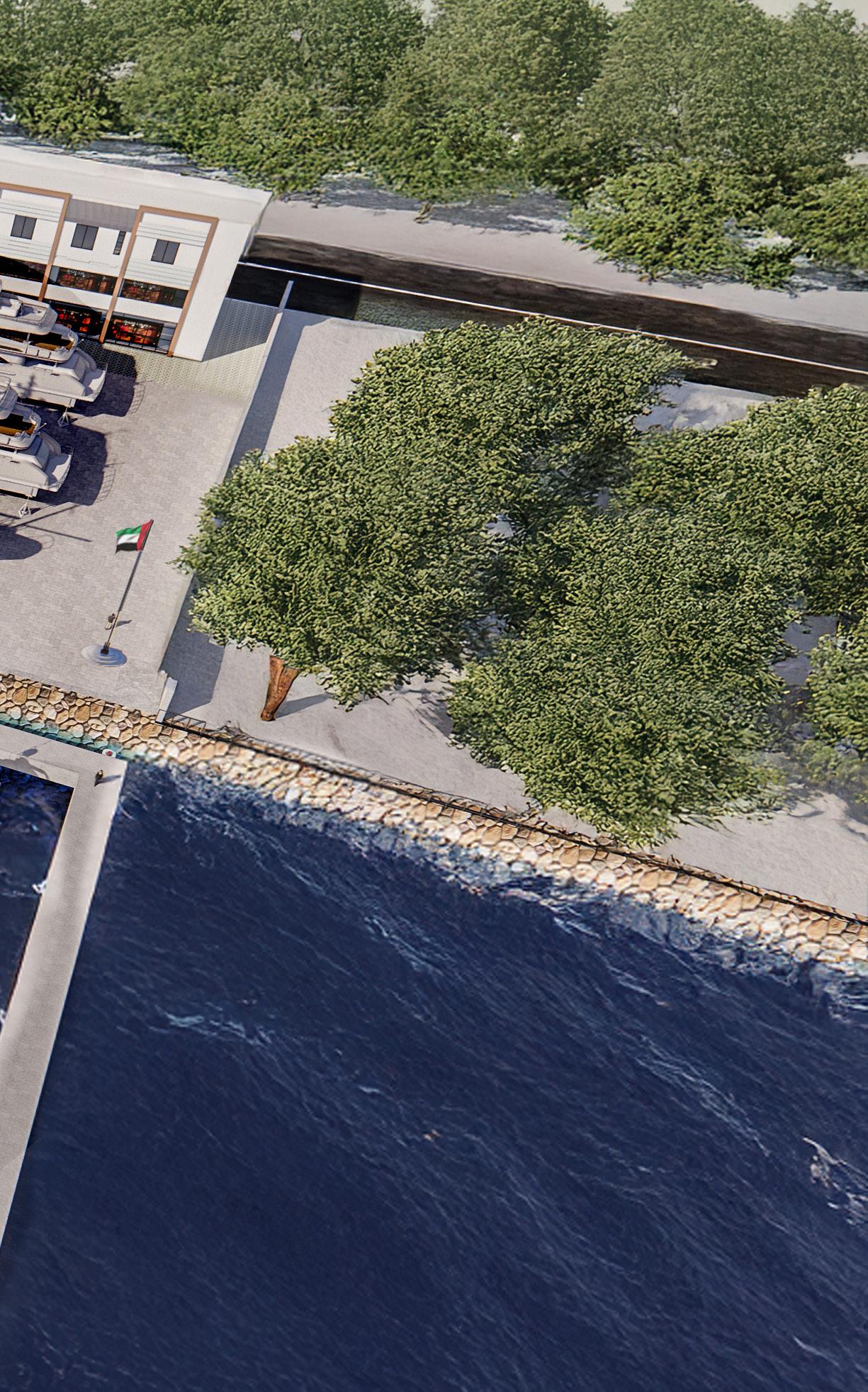
After the Majesty 175, you’re due to launch the Majesty 160 next year. What are the advantages of building in GRP at that size compared to steel and/or aluminium?
In 2016 when I announced we were building the 175, people thought it was a crazy idea and that it couldn’t be done. But we built the yacht – which is 56 metres overall but also 780 gross tons –and it was successful in every aspect regarding performance, stability, noise and vibration, and so on. I believe GRP has many advantages, especially for places like here in the Gulf where the weather is hot and humid and the water is very saline and unkind to metal. GRP requires less maintenance but it’s also lighter, which means less draft, which is ideal for the shallow cruising grounds here and in the Caribbean, for example. In fact, before announcing the 175, we did a study with the designer Frank Mulder and the results of that study showed that we could realistically build up to 200 feet in GRP. Beyond that size, steel or aluminium is the logical choice.
Would you ever consider building in steel or aluminum?
Actually, a few years ago we thought about it. But after a lot of study and research we decided against it because we preferred to build on our 40 years’ experience of working with composites. We intend to stay in the same market and size range for composite yachts, so it makes no sense for us to increase our competition with other brands by building metal boats. When you look at the Majesty 160, for example, the competition starts to thin out because at that size our clients come to us because they prefer to have a composite boat. Having said that, we do provide refit and maintenance services for steel and aluminium superyachts and that capacity will increase when our new service facility comes online this year.
Yachting in the Gulf is on the increase and Gulf Craft is part of that. What has to be done to ensure continued growth for your brands?
Well, I don't think anything is guaranteed in the future. If we look at what's happening in the automotive industry, for example, we see things can change very quickly and that raises alarm bells. We survived the 2008 financial crisis and the Covid pandemic because we adapted; we channelled our efforts into thinking and designing for the future. We could do that because we have stayed small and adaptable. If we can diversify and stay nimble, I hope we will not only survive but also thrive.
Just prior to the Gulf Superyacht Summit last December, Gulf Craft had five yachts over 30 metres in various stages of construction packed into its main shed in Umm Al Quwain (as the restructuring of facilities progresses the aim is to have to 6-8 superyachts in build at any one time), including two Majesty 120s, the all-new Majesty 112 and Majesty 100 Terrace (both launched at DIBS 2025), and the first 49-metre Majesty 160, which is sold and due to launch in early 2026. When the 160 leaves the shed, minus her radar mast, she will have just 150mm of air room below the gantry crane.
Interestingly, the Majesty 160’s naval architecture was originally conceived by Van Oossanen Naval Architects for a steel hull and adapted for building in composite. Gulf Craft was an early adopter of composites for large yacht construction and pushed the boundaries with its 56-metre (780GT) Majesty 175. Depending on structural and safety requirements, it can combine GRP, Aramid, Kevlar and carbon fibre with PET foam cores using a variety of techniques from laying up by hand and resin infusion to vacuum bagging and resin infusion transfer (RTM). Convincing the class societies that it could build in composite to steel equivalence was a long and arduous process requiring 128 different lab tests, but Gulf Craft’s methodology is now class-certified for structural and fire integrity.
I had not visited Gulf Craft for several years and was impressed by the increase in digital automation with 3- and 5-axis CNC machines and other state-of-the-art technology installed throughout the facility. Six more cutting and milling machines were due to arrive for the interior joinery department alone, as well as a robotic painting and sanding unit with a UV curing booth that will drastically reduce downtime during the painting process.
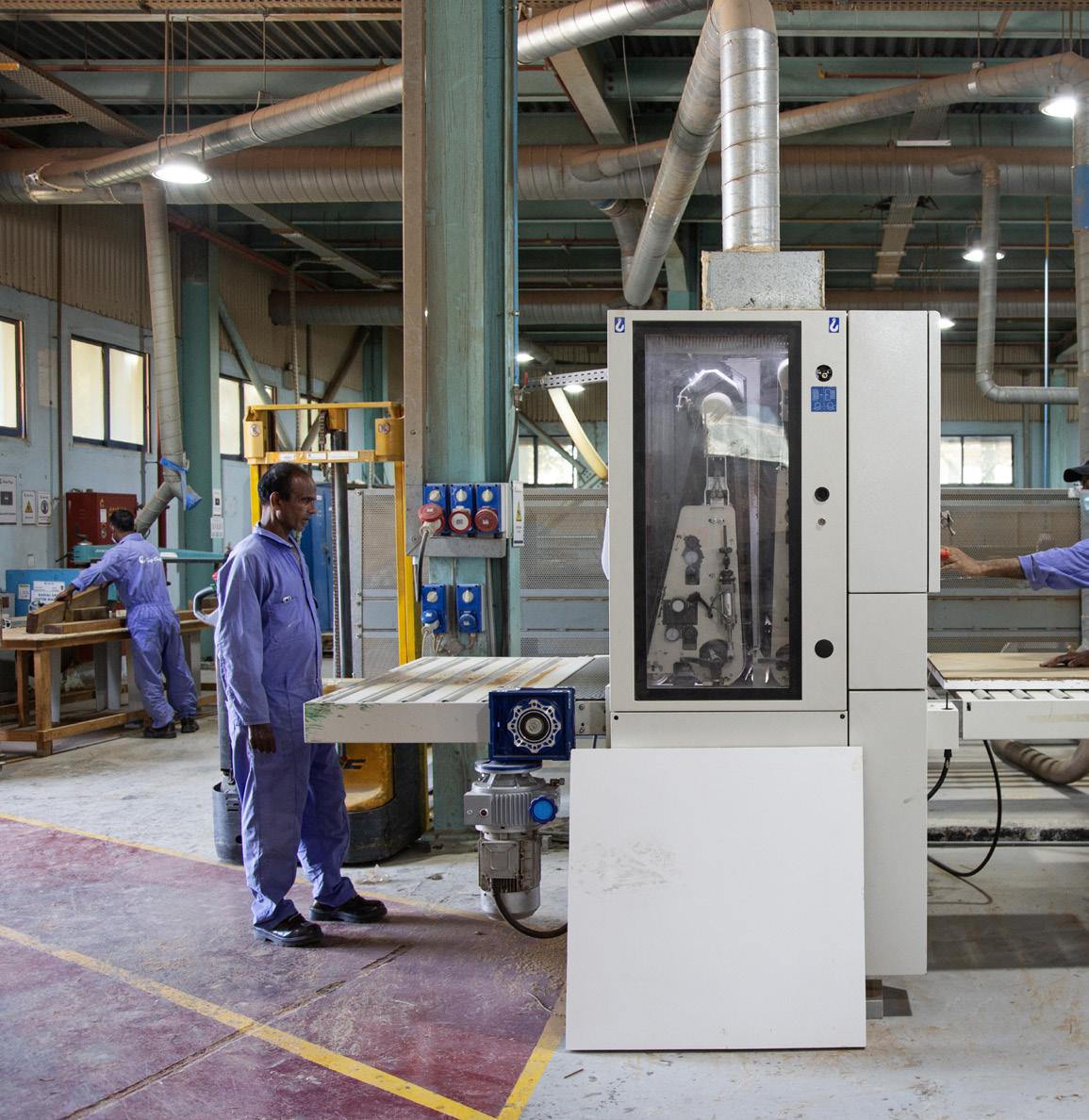

Clockwise from top left: Gulf Craft has taken delivery of several new CNC machines; a render of the new Majesty 160 in build; flanges and bollards produced in-house; the Majesty 175, the world’s largest composite production yacht.
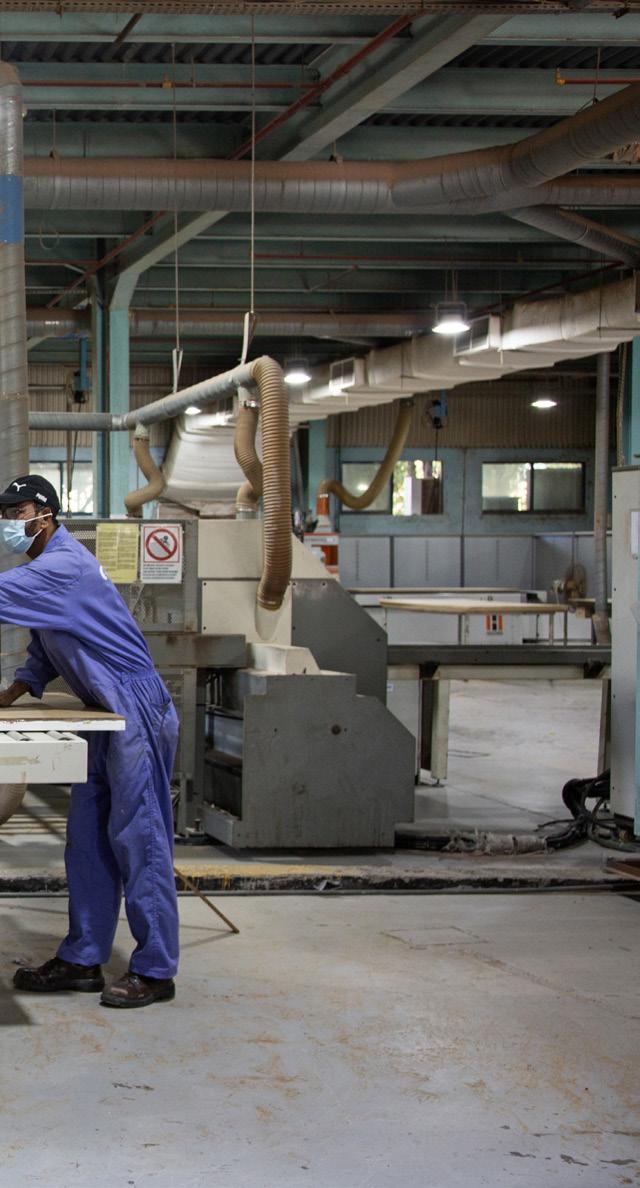
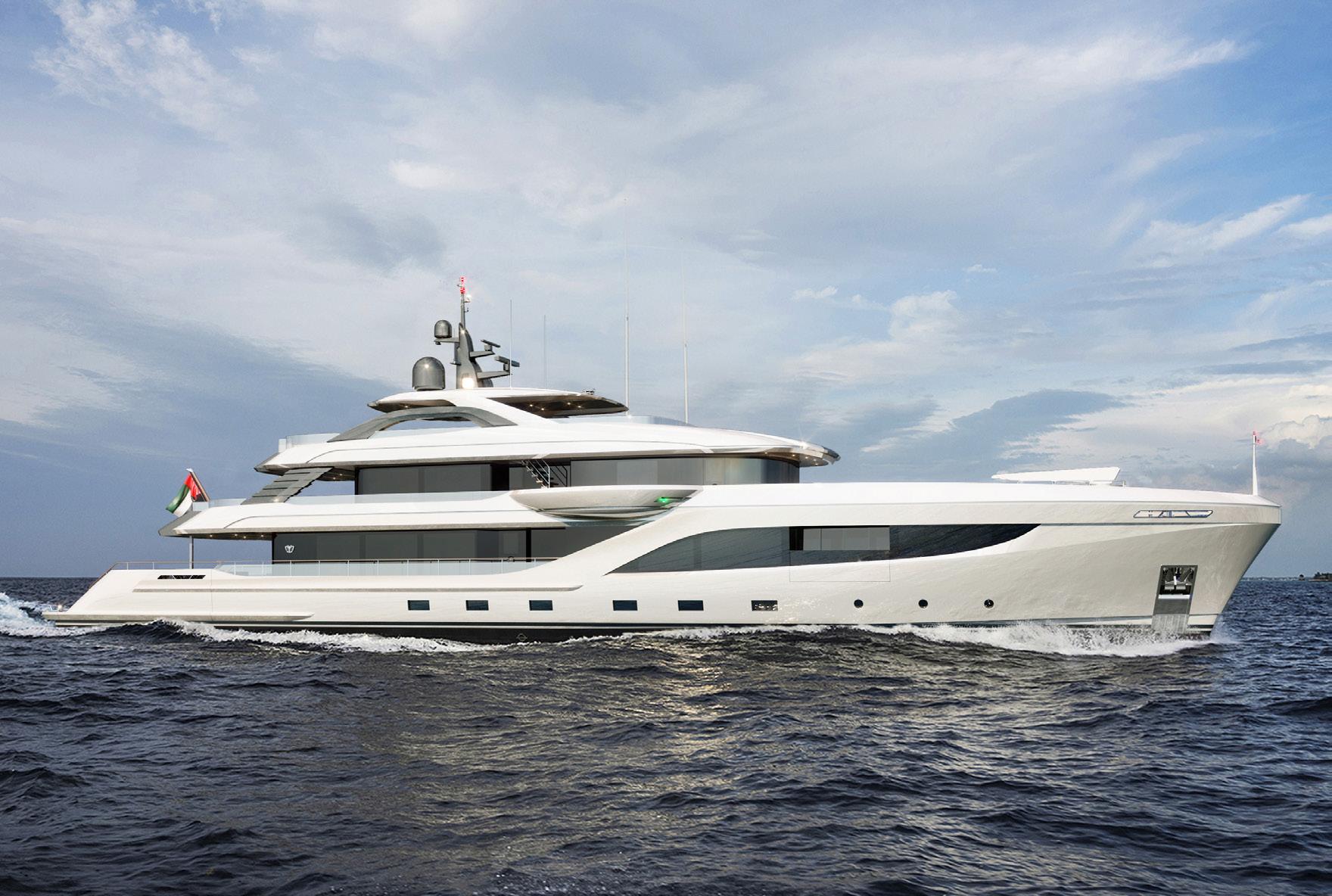
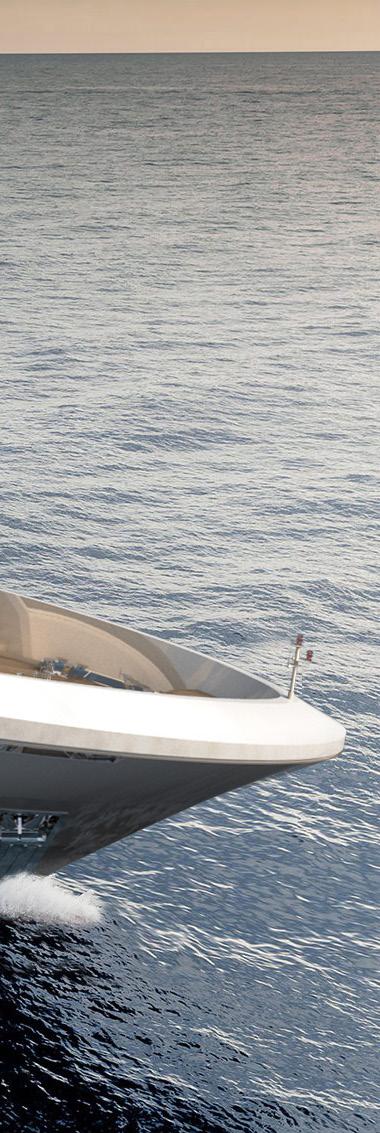
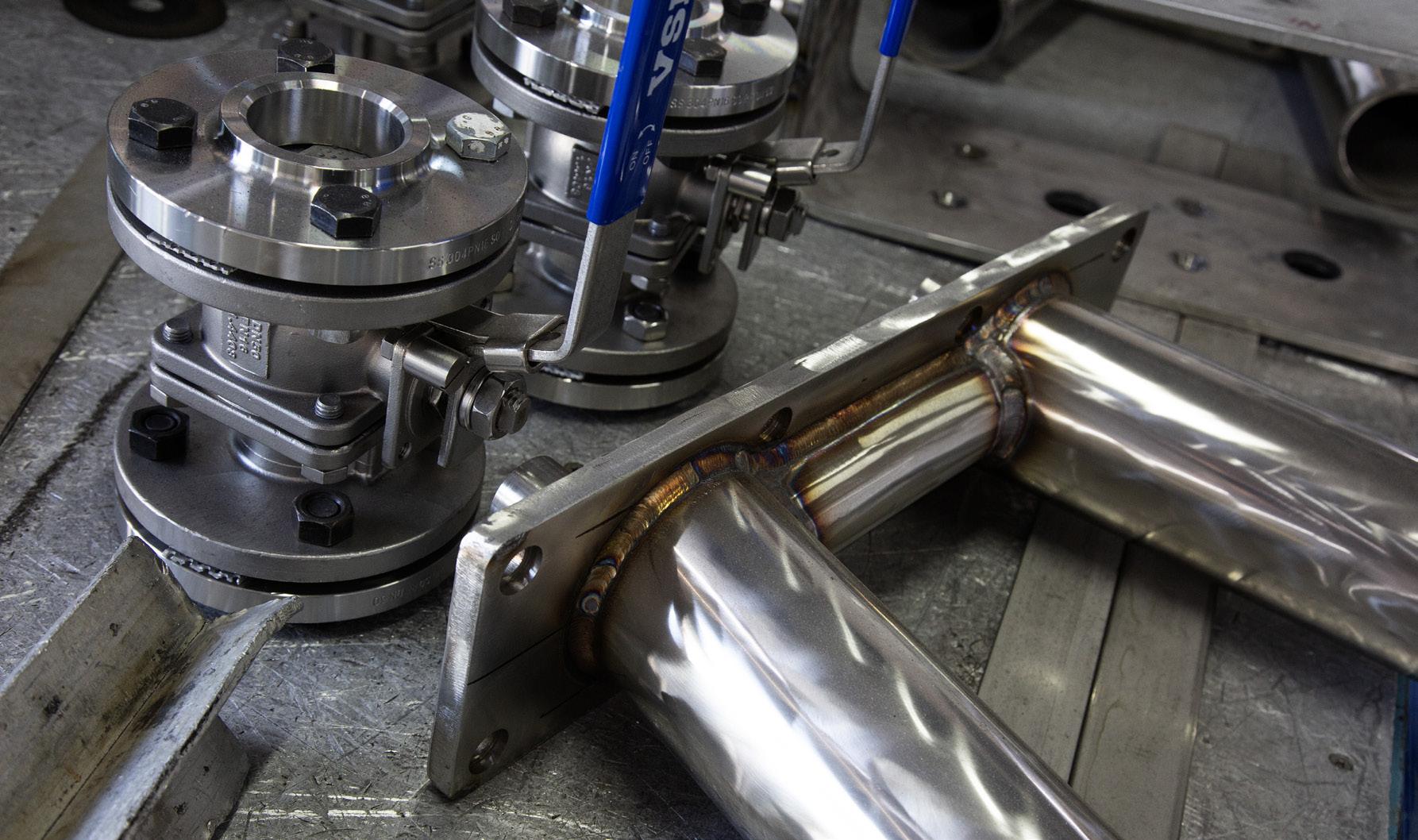
“It makes no sense for us to increase our competition with other brands by building metal boats.”

JUSTIN RATCLIFFE
More remarkable is just how much Gulf Craft manufacturers in-house. This amounts to just about everything apart from the main machinery and systems, including switchboards, steering wheels, escape hatches, pipe flanges, ventilation ducting and the laserwelded, stainless-steel cabinets for the galley. A review is even under way to determine the viability of setting up its own glass factory. Gulf Craft cannot rely on the same network of local suppliers and subcontractors that have grown up around shipyards in Europe. The only way they can ensure high quality and a reliable supply chain is to do a lot of the work themselves in-house. That takes a large and skilled workforce, some of whom have been with the company for over 30 years and have worked their way up to management positions.
“For 42 years we’ve been building up the industry locally; there was no one else to do it for us,” says Abeer AlShaali. “We now have a strong combination of people from our C-suite to the shopfloor workers that know our products and understand boatbuilding. But we’re always looking at ways we can get better, and I think that is reflected in how we’ve been able to take our yacht construction to the next level.”
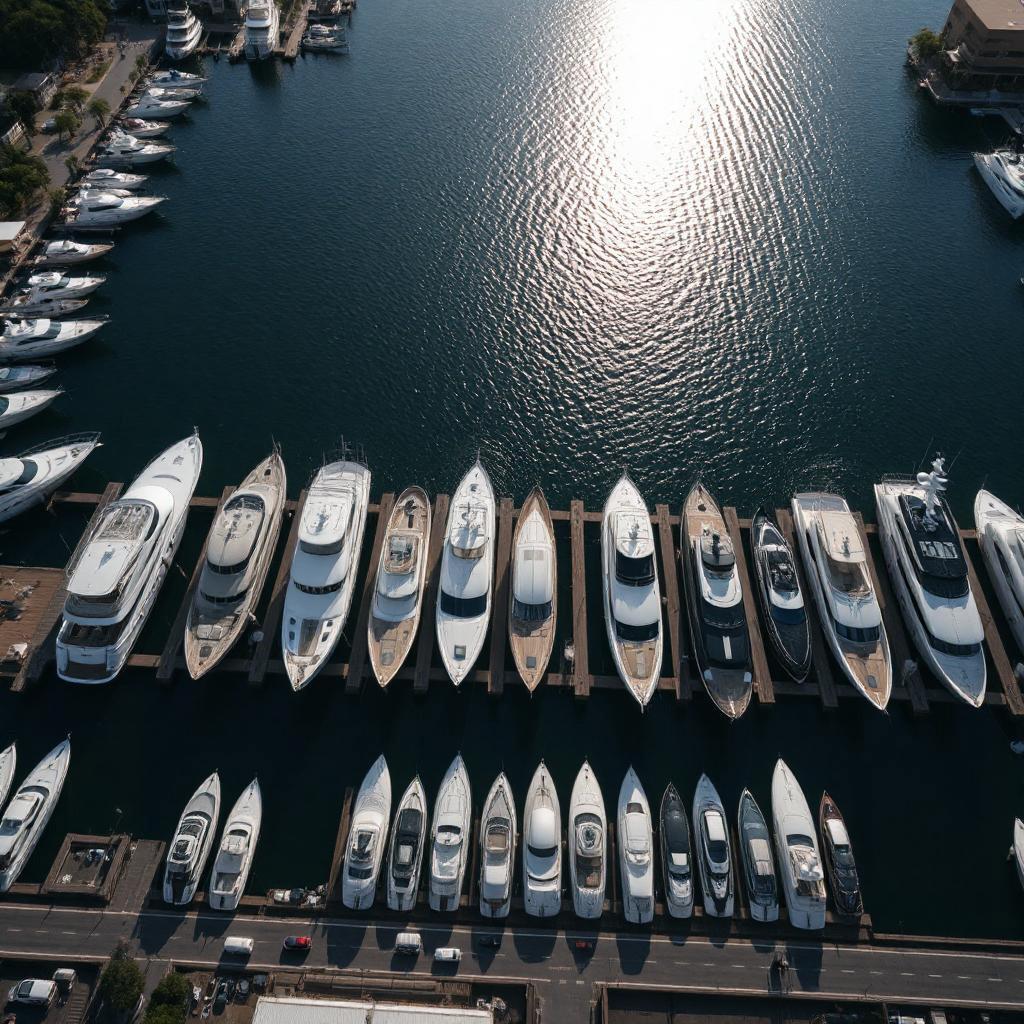
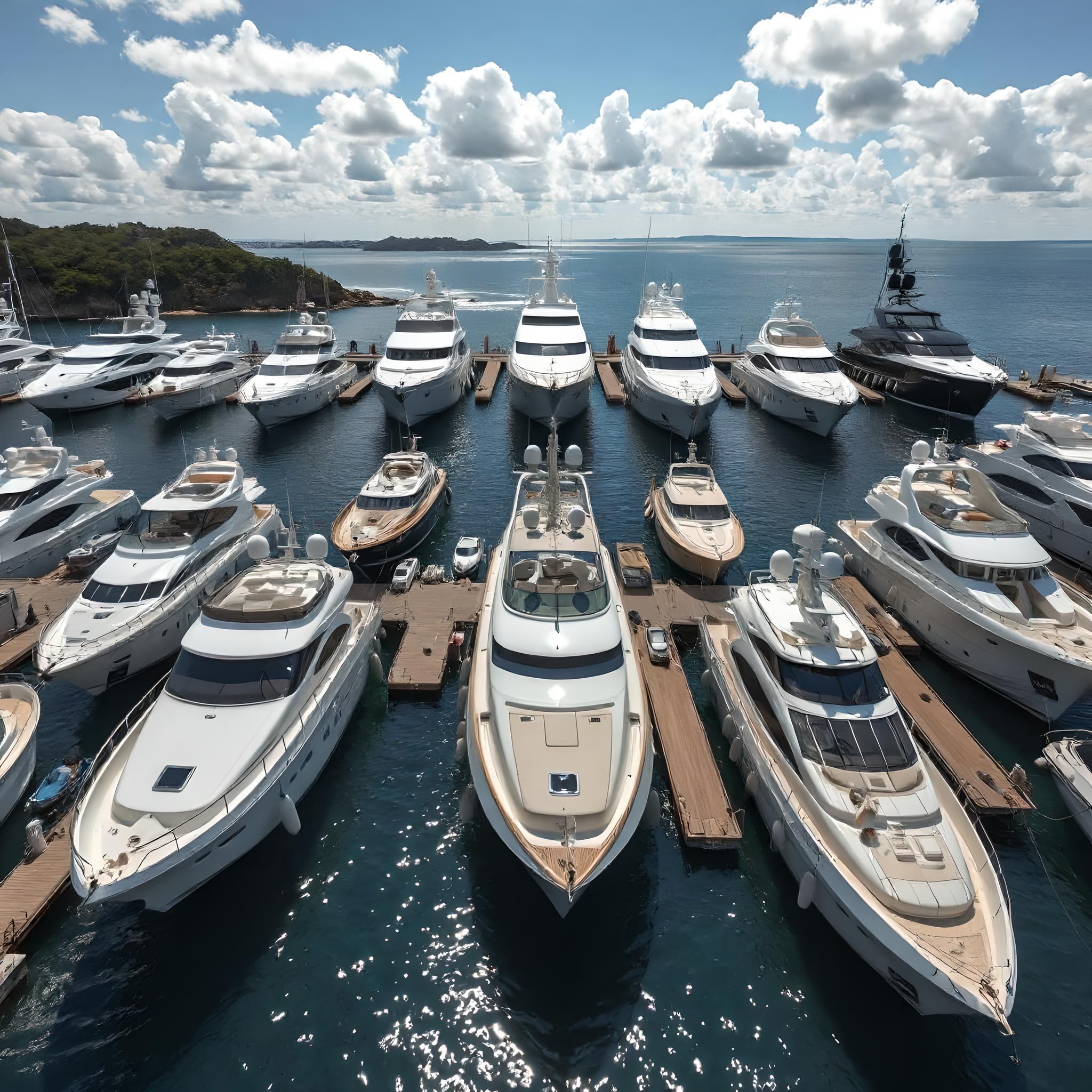
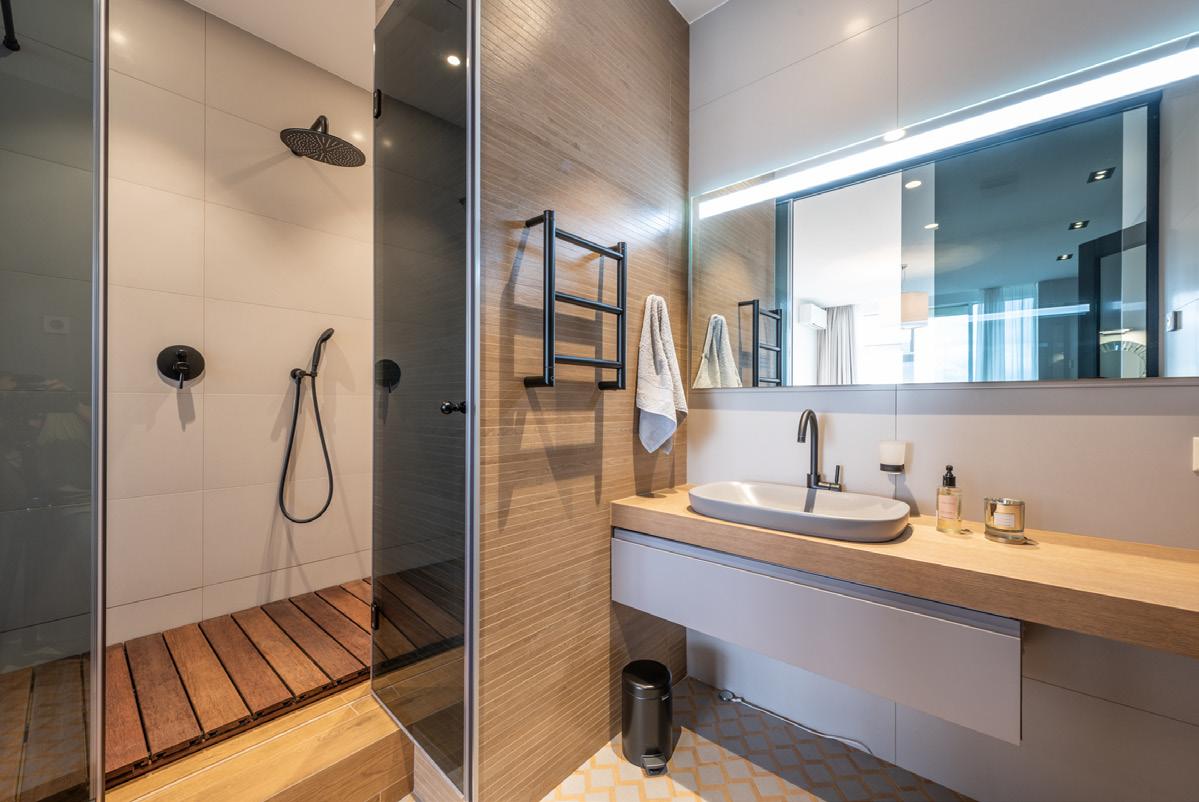

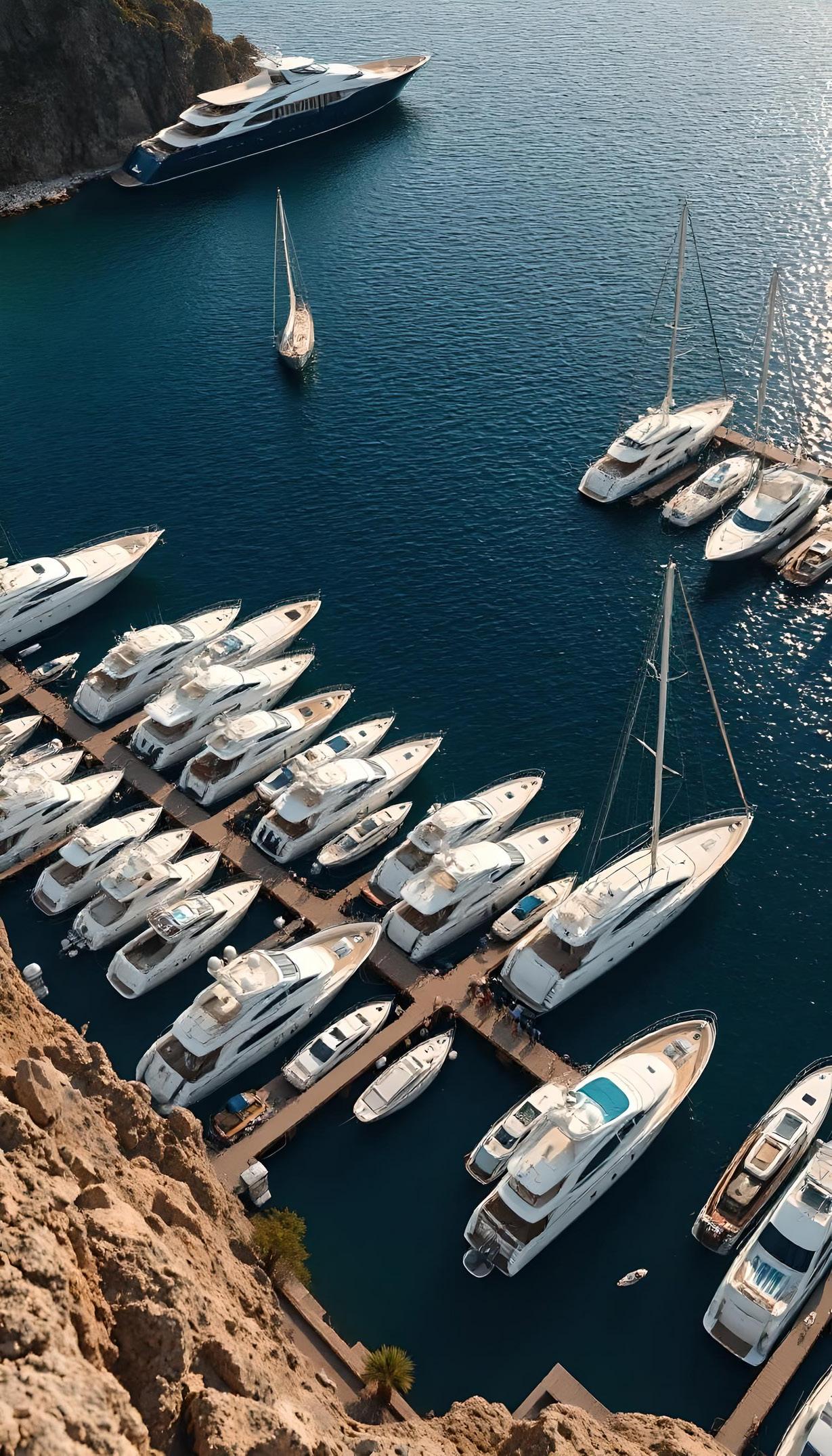


The Amels Limited Editions fleet, one of the most successful semi-custom stories in superyacht history, shows no sign of slowing down with four units of the Amels 80 – the latest and largest iteration – sold and another two in production before the first has even left the shed. We talk to the Amels team and visit the first units in build at the Damen Yachting shipyard in Vlissingen.
BY JUSTIN RATCLIFFE

When Deniki, the first Amels 171, was launched back in 2007 she was the forerunner of a new generation of superyachts based unashamedly on semicustom principles from a builder bestknown for its full-custom projects. The idea was to streamline construction and reduce delivery times by combining a common hull, superstructure and engineering platform, but still allow for a high degree of customisation to the highest Dutch standards of finish. The original plan was to sell six in six years.
Twenty years after Amels first presented its semi-custom strategy at the 2005 Monaco Yacht Show and 50 deliveries later – including 25 of the Amels 180 alone – the Limited Editions concept is still going strong. That kind of longevity doesn’t happen by chance. The Amels 80 flagship and the new-generation Amels 60, both designed by Espen Øino, have evolved from previous models, but have also benefitted from careful planning and astute marketing.
“Marketing an existing semi-custom line is harder than a new, attention-grabbing custom project,” admits Sarah Flavell, Marketing Manager at Damen Yachting. “The option to customise has always been part and parcel of the Limited Editions concept, but that gets harder as the yacht gets bigger; once you
get to 80 metres and 2,175GT there is much more client expectation. The challenge is to make sure we don’t drift away from our build philosophy and end up turning a Limited Editions into a full-custom yacht.”
This challenge works both ways and on occasion a client interested in a full-custom project may be tempted by the lower cost, proven platform and shorter waiting time of a Limited Editions that has been started on speculation. Flavell points out that it depends on the client and how much they want to be involved in the whole design and build process:
“The Limited Editions allow certain clients to take away the parts of the build process they don’t like, but still enjoy the parts they do like,” is how she sums it up.
Client requests are sometimes integrated into later versions of the same model and become standard features. This happened with Entourage, the second hull in the Amels 60 series, when the owner wanted a different window design and an extended sundeck that were carried through into subsequent builds. The same is true of the open-plan layout of the owner’s bathroom on the second Amels 80, which has been adopted for hulls three and four.


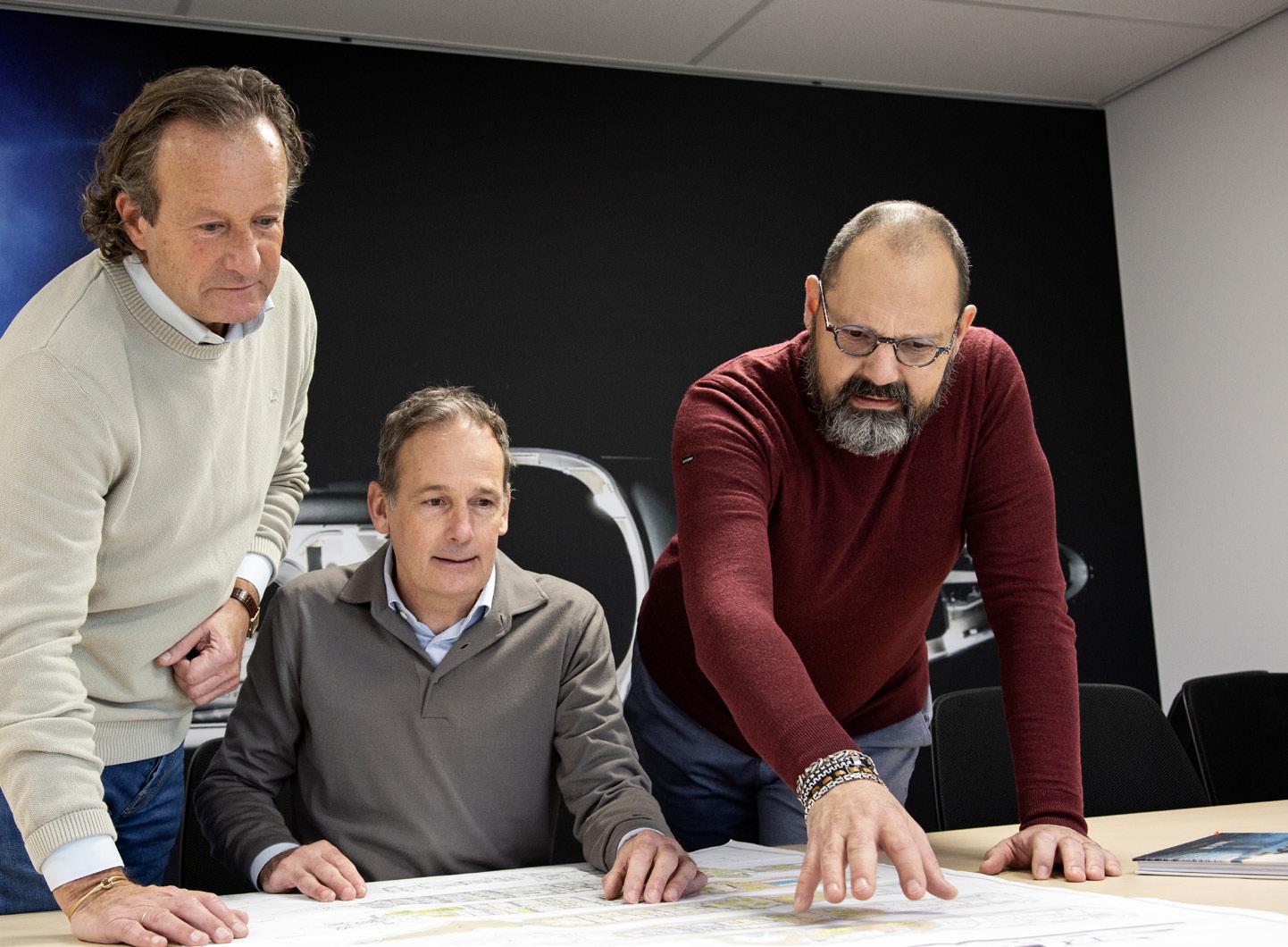
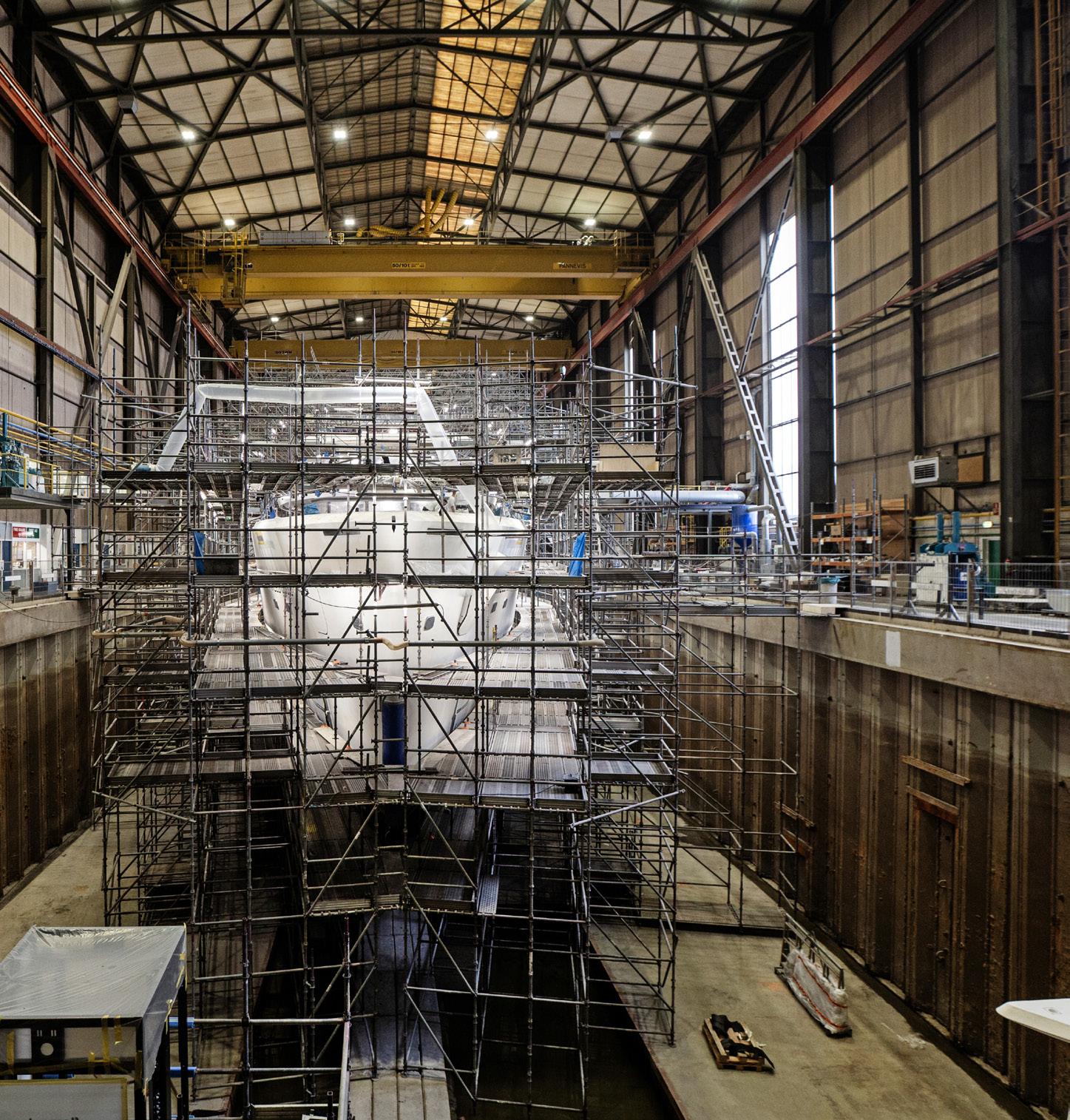
As the Limited Editions series have grown in size, the lessons learned from previous iterations have been carried forward into their successors. The Amels 60, for example, is the descendent of the 55-metre Amels 180, and the 80-metre flagship is the follow-up to the 74-metre Amels 242. This evolutionary progression involves not just the technical platforms, but also the onboard features desired by owners (and required by captains and their crews). In the case of the new flagship, this meant Amels already knew what prospective owners were looking for in an 80-metre yacht. The harder task was to create a design that had both broad appeal and its own identity in a pre-defined package.
“Market trends tell you that building an 80-metre yacht on spec is not the thing to do, because there are not many in build and owners want more customisation,” says Flavell. “Yet we’ve sold four within a very short space of time, which suggests there is a demand for that size of yacht with a set of build parameters that provide certain features at a certain price and guarantee the build time.”
“The Amels 80 ticks so many boxes from a client perspective because we learned from the 74-metre,” adds Jan van Hogerwou, Commercial Executive North America.
“Everything we know now about what owner’s want on a yacht of this size comes from that previous successful series. Throw in very competitive pricing and a short delivery time, and I believe it’s the best offer in its class on the market.”
The interior design, the first collaboration between Sinot Yacht Architecture & Design and Amels, is a good example of this philosophy in action. Although tailored to the owners’ requests, the shipyard has looked to standardise features and dimensions as much as possible. In the guest cabins, for example, the wardrobes and drawers are of the same size and occupy the same footprint. The same is true in the crew cabins, which also have bunks sized to take standard mattresses and make procurement easier. Standardisation means fixed furniture items can be batch produced in advance for subsequent builds, reducing downtime for faster and more efficient installation.
Amels does not build its hulls and superstructures on site in Vlissingen. This is done in at Damen Shipyards Galati in Romania for the Amels 80 and at Damen Shipyards Gdynia in Poland for the Amels 60. They are then transported or towed to Vlissingen for fitting out. At the time of our visit, hull 8003 was traversing the Bay of Biscay on her way to The Netherlands and by the time you read this article, hull 8001 will likely have left the 200-metre covered dry dock. Behind her, 8002 will also exit the dry dock to make space for the new arrival and then take the place formerly occupied by 8001. It takes roughly 15 months for the construction work in Romania, a month for the transfer, and a further 18 months for the outfitting, fairing and painting. With the major hotworks complete and main machinery and piping already installed, the Amels shipyard is basically a well-oiled assembly facility.
“Keeping the heavy welding work and systems installation separate means that when the yachts arrive in Vlissingen we can really focus on achieving a perfect interior and exterior finish,” says Adriaan Roose, Amels Design Manager. “It wasn’t always this way, but we learned that we can work more efficiently and provide much higher quality by separating the build processes.”
Romke van der Linde, Amels project manager for 8001 and 8002, worked on the first Amels
171 when he joined the company 18 years ago. As an indication of how far information technology has progressed since then he taps a Wireless Access Port (WAP) on the Amels 80. “We have 152 of these throughout the yacht,” he says. “Deniki had just eight.”
He also points out an array of steel storm shutters and hatches used to seal the unfinished vessels during transportation. Because the exterior design is standardised, these are shipped back to Romania to be re-used. Waiting nearby to be hoisted on board 8001 was the transom door for the beach club. The glass-fronted shell door folds down into a recess in the swim platform while another folding hatch closes on top of it for a flush, teak-decked finish. Suspended from the scaffolding cocooning the yacht was also the hull door for the forward tender garage. The 11.5-metre door had been rigged up in front of the garage opening so it could be painted using the same batch of metallic topcoat. All the hatches and shell doors are manufactured at the facility in Romania.
“The decision to produce our own shell doors was taken over ten years ago when we had projects in build that were dependent on the delivery of those doors,” says Roose. “There are very few suppliers for these big doors and if one goes belly up, which has happened, it can add several months to the build schedule. We simply cannot take that risk.”

Future additions to the Limited Editions fleet is the topic of ongoing discussion. In the current market, the likelihood is that a new model would fall between the Amels 60 and the 80-metre flagship. The difference between the two in terms of internal volume is more than 1300GT, so plenty of room for an intermediate option. Building bigger brings more pressure to customise and additional risks for the shipyard, a lesson learned from Here Comes the Sun: the full-custom project, the largest Amels to date at 83 metres (later extended to 89 metres), could have been built as a Limited Editions, but was considered too risky to build on speculation. Moreover, Amels has seen a trend among owners to invest in a Damen Yachting support vessel, another proven platform with 19 sold to date, that offers extra capacity for tenders and toys without building a bigger mothership. The same thinking applies to the Damen Xplorer series, whereby the 60-metre model is being built on spec (two units are currently under construction), but not the 80-metre version.
“As much as people love the explorer concept, that is not currently reflected in the time it takes an owner to commit compared with a more conventional superyacht,” says Flavell. “So Anawa, Pink Shadow and La Datcha were all built for owners with very specific uses in mind. Added to that, there’s nothing to stop our Limited Editions yachts going off the beaten track, and they have been.”


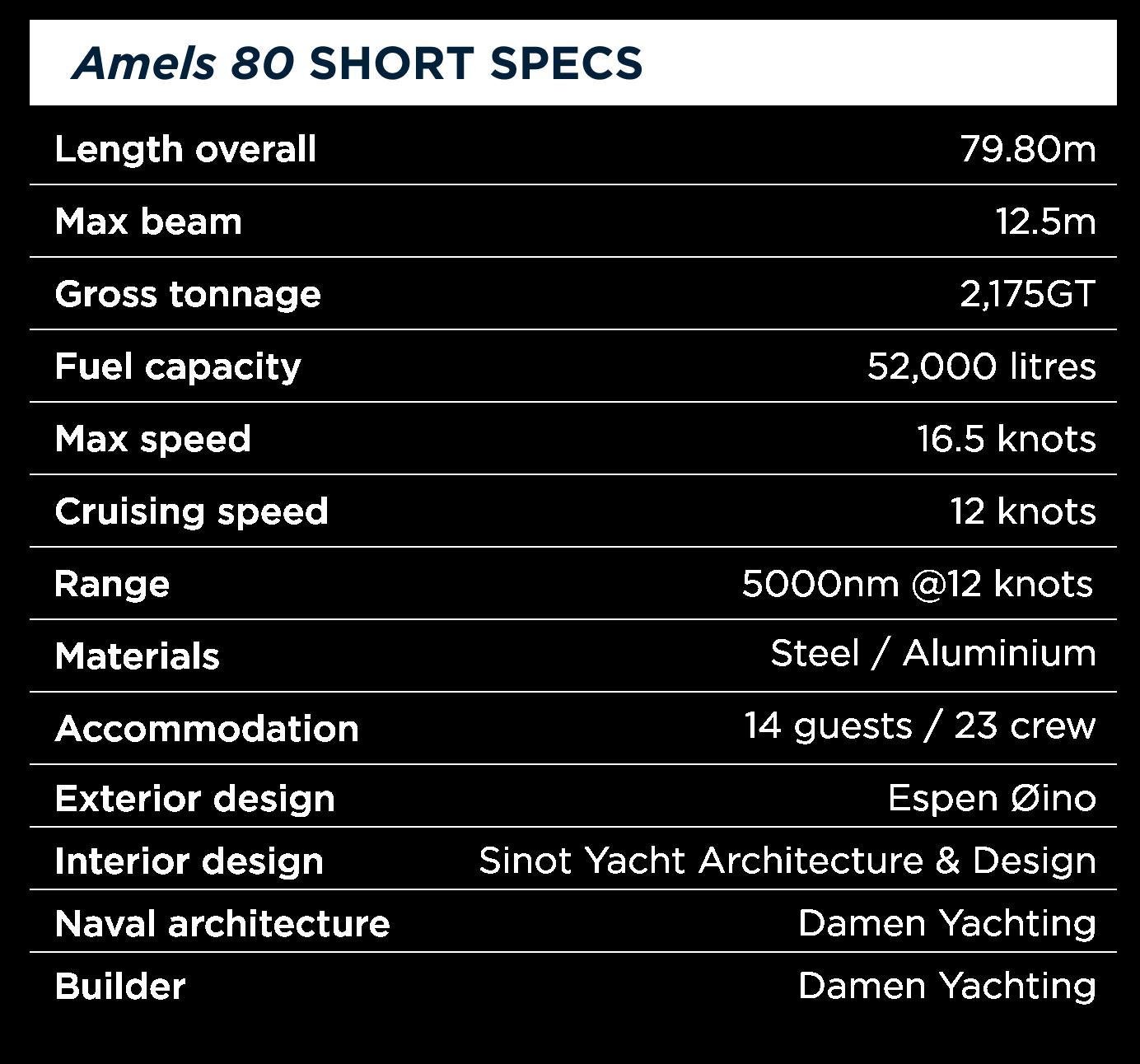
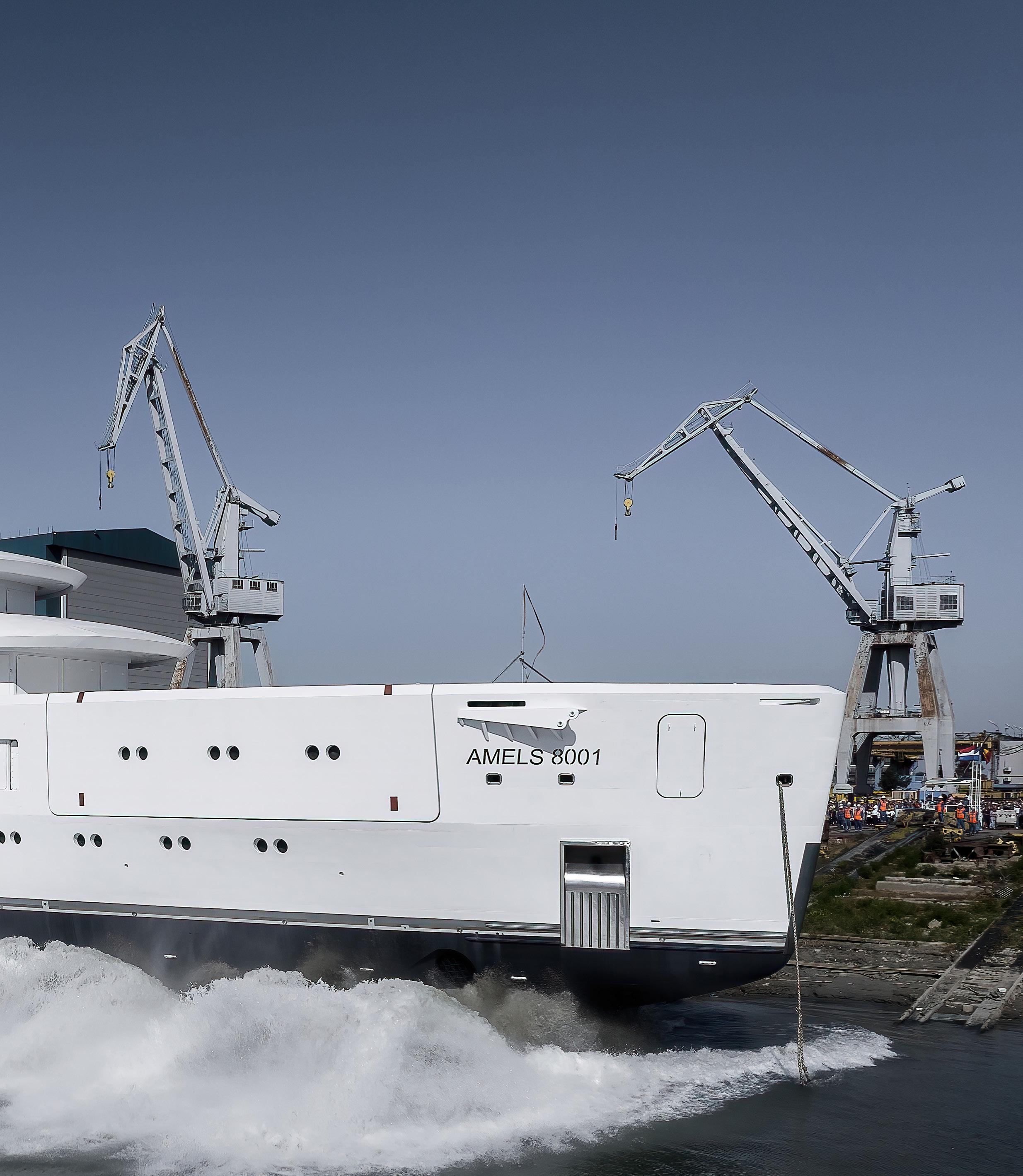
Like the Amels 60, the 80 comes with a standard hybrid power package with twin Caterpillar diesel engines and PTO (Power Take Out) and PTI (Power Take In) electric drives with systems integration by RH Marine. Top speed is 16.5 knots with a cruising range of 5,000 nautical miles at 12 knots. You can sail under diesel power with the main engines on, but also at low speed or while manoeuvring with the main engines off using just the generators to drive the e-motors for less noise and vibration. There is also the option of electric stern and bow thrusters for station-keeping capability.
There is a battery bank, but this is designed for peak shaving (although technical space has been put aside to install up to 1MW of batteries), and a fully automated energymanagement system provides constant monitoring of consumption to allow the hybrid solution to engage as workload demands. The system basically means that engines can run at their optimal load with the batteries absorbing peaks in demand, avoiding starts and stops for higher efficiency and less wear and tear. Full diesel-electric propulsion with pods was considered, but after analysing the pros and cons Amels opted for the efficiency, flexibility and redundancy of a hybrid system.
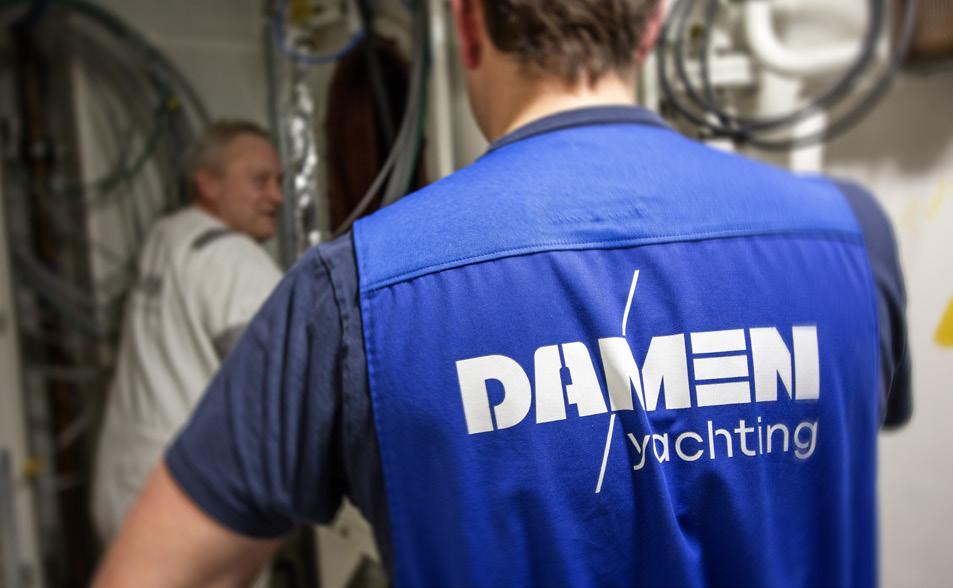
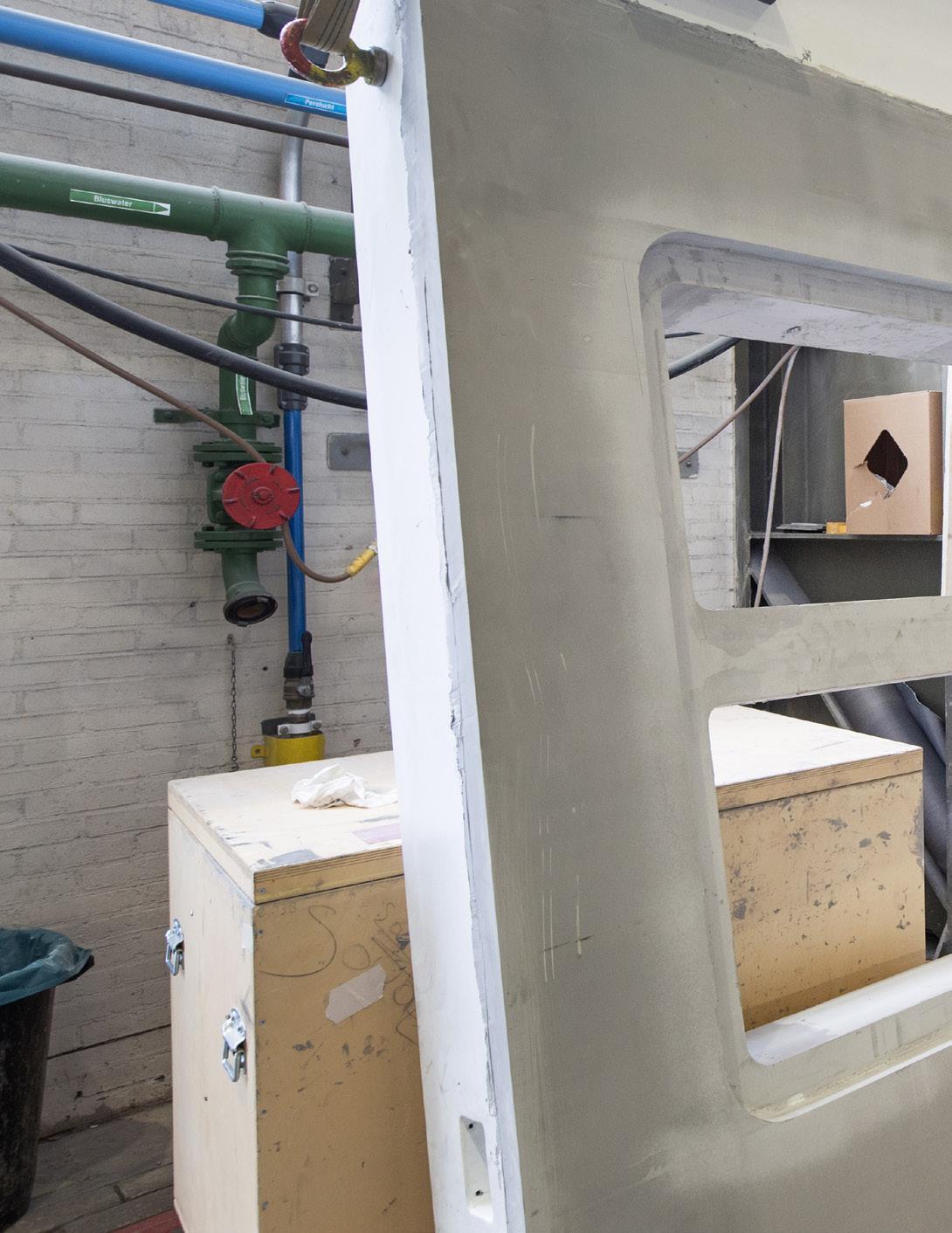
“Marketing an existing semi-custom line is harder than a new, attention-grabbing custom project.”



Perhaps the biggest challenge for the project team, however, came before metal cutting even started. The Amels 80 started out as a 75-metre design and the decision to lengthen the hull by five metres (the exact LOA is 79.80-metres) was taken on the suggestion of a prospective client who wanted a bigger beach club. Three months before the finalised design package was due to be handed over to the production department, the Amels team went back to the drawing board to re-crunch the numbers based on the longer and slightly wider specifications. The 150-square-metre beach club with its side terraces and transom door that opens flush with the stern platform is now a central feature of the Amels 80. Some builders are moving away from the enclosed beach club on the lower deck in favour of a terraced main deck aft. This is because beach clubs on smaller yachts can easily turn into dark, unappealing spaces in the bowels of the boat. Removing them also makes construction simpler. The beach club on the Amels 80 works because it has the space it needs to make it work.
“The redesign was a lot of extra work late in the day, but I’m glad we did it,” says Roose. “It meant both the beach club and the pool above are bigger and the yacht looks sleeker on the water. I also think that 2,175GT is something of a sweet spot in the market right now and offers a platform that make owners feel they have a much bigger boat.”
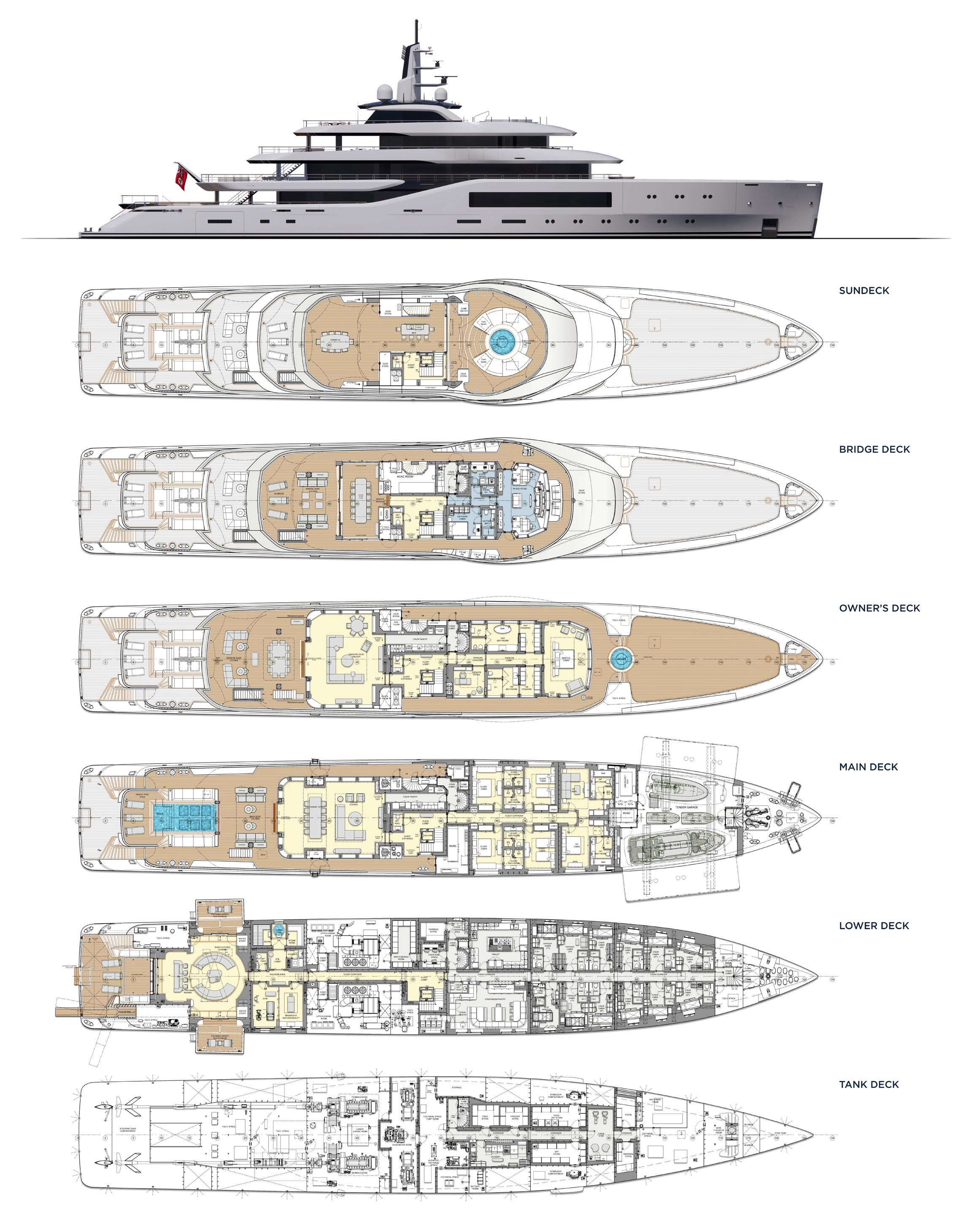
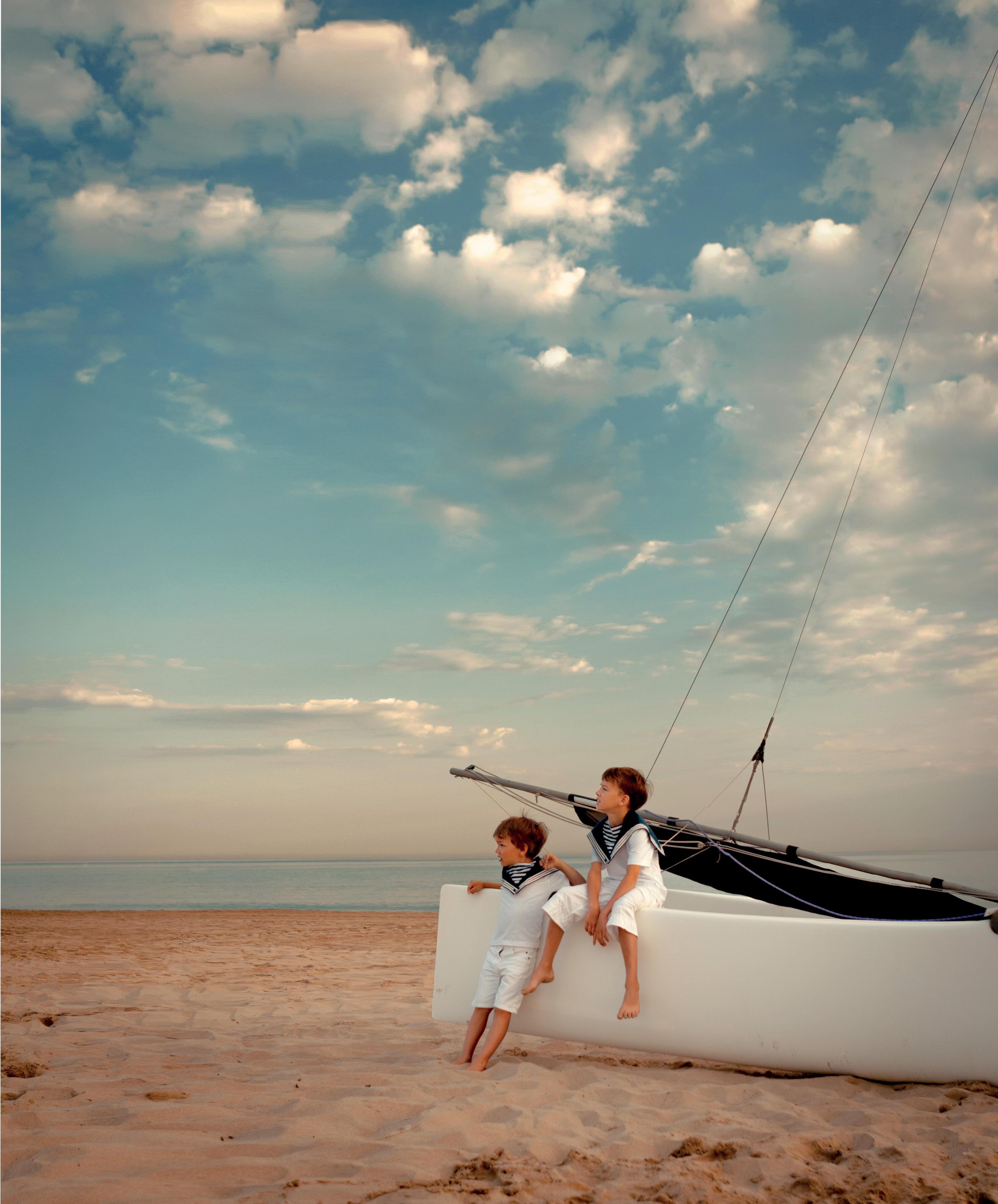
Let’s preserve what inspired our passion
Discover our solutions to drive sustainability and improve value REFIT FOR THE FUTURE!

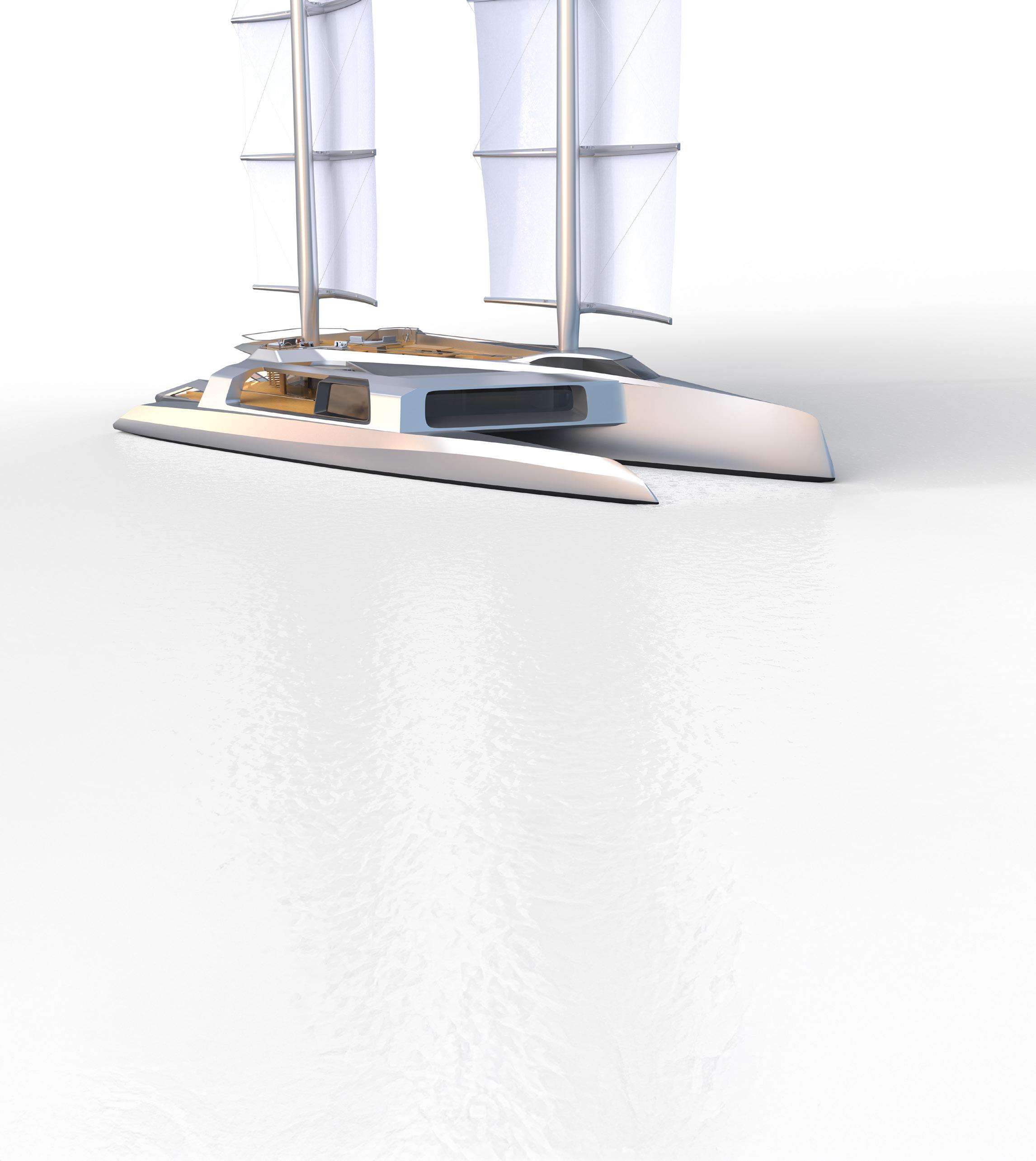
The Oi60 is a design study for a 63.5-metre sailing trimaran by James Carley of JC Yacht Architecture and Rob Doyle Design. The avantgarde concept builds on the positive reception of another multihull project, the smaller Domus concept with Van Geest Design that we reviewed in the very first issue of How to Build It.
BY CHARLOTTE THOMAS
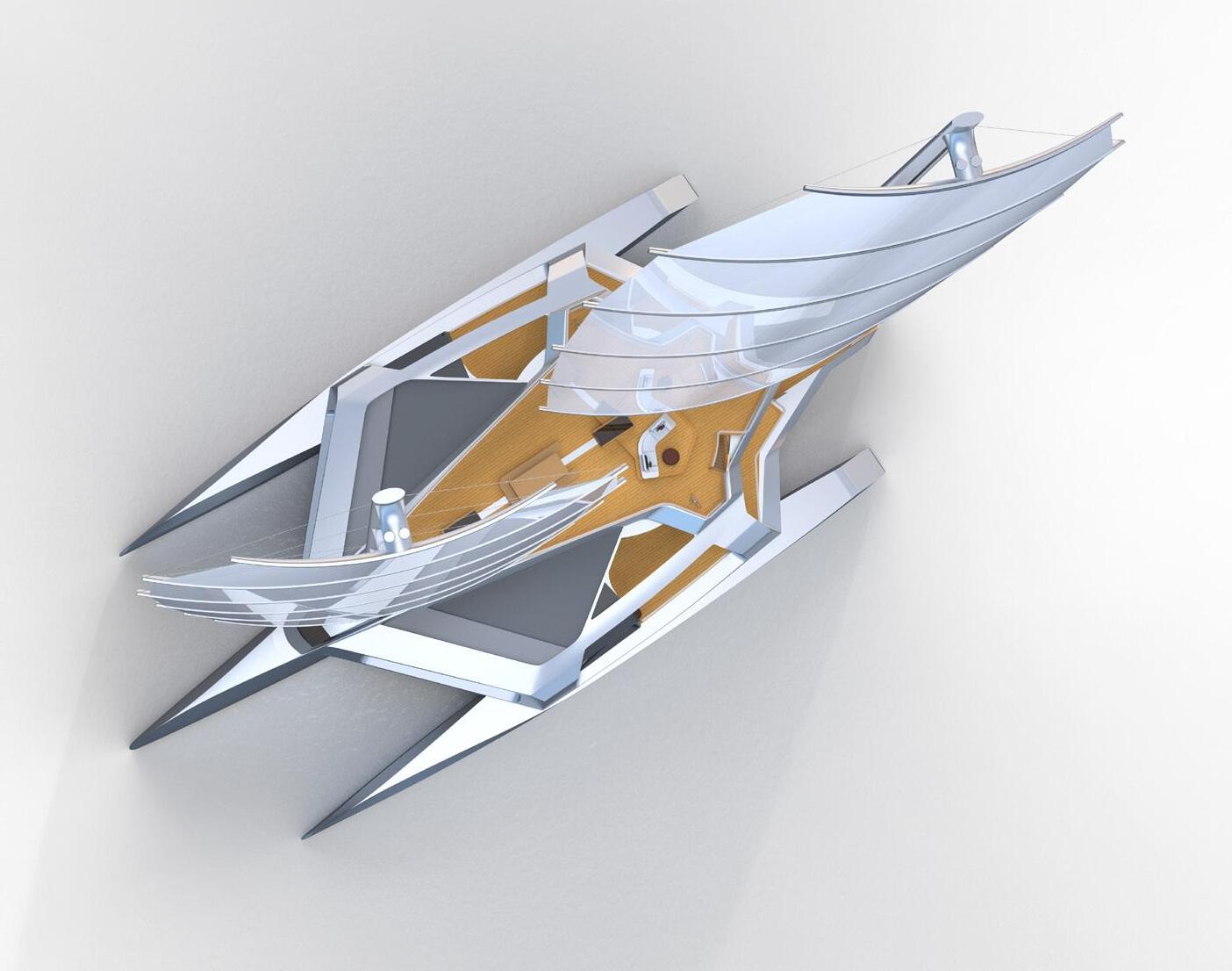
“I‘ve been sailing much of my life and was intrigued by the whole idea of a world explorer trimaran and being able to cover a lot of ground quickly in a luxurious but sustainable way,” begins James Carley, a naval architect and chartered engineer who honed his design skills at the studios of Martin Francis and Bannenberg & Rowell. Carley’s bold exterior design and interior layout for the Oi60 are strikingly different, but the basic principles behind the trimaran configuration remain the same. Trimarans are usually wider than catamarans, which means more interior volume and deck space; maximum heel angles of two degrees allow the windward hull to come out of the water for less drag, higher performance and more comfort under way; three hulls in the water are also more stable at anchor with vastly reduced motions compared to a monohull; and unlike a catamaran, all the systems and engineering can be centralised in the main hull, which means fewer structural stresses and deflections – all factors that might persuade owners to switch from power to sail.
The armas or outriggers are effectively for buoyancy purposes only and while they can be used for tankage and storage, all the guest accommodation and interior living spaces are concentrated on one level on main deck with the crew quarters and services on the lower deck in the central hull. This makes for a more inclusive onboard experience and vastly improves circulation flow for both guests and crew by avoiding the inconvenience of multiple decks –evident in Carley’s innovative ‘radial’ layout. It also brings cost savings by simplifying the systems design and construction.
“Sailing yachts can cost twice as much to build per gross ton as motoryachts,” Rob Doyle points out. “We approached this project by pricing it as if it were a conventional motoryacht with two rigs, but designing outwards instead of upwards. We’ve calculated the volume at over 1,200GT, which is equivalent to a 65- or 70-metre monohull, but you get the huge open and semi-open deck spaces that only a trimaran can offer for free, so to speak.”
It is no coincidence that the ‘Oi’ in the concept name stands for ‘Outside-inside’. Like Domus, the crossbeam connecting the three aluminium hulls is, in effect, a huge perforated box that offers excellent strength and rigidity. The perforations or cut-outs have been designed around the choice of build material, load paths, boundary conditions and other constraints to offer enormous semi-open areas as well as giant windows, especially in the forward-facing suites. The result is something that could easily double as the villain’s futuristic lair in a James Bond movie.
“On the bigger motoryachts with four or five decks, everyone tends to congregate on one particular deck anyway, so why not have it all on one multi-purpose level?” asks Carley. “We can still carve more intimate spaces out of that much bigger space to suit different needs throughout the day. And a lovely change is that we’ve been careful not to be greedy by trying to fill up every square of interior, hence the semi-open areas.”
makes for a more inclusive onboard experience, and improves circulation flow for both guests and crew.
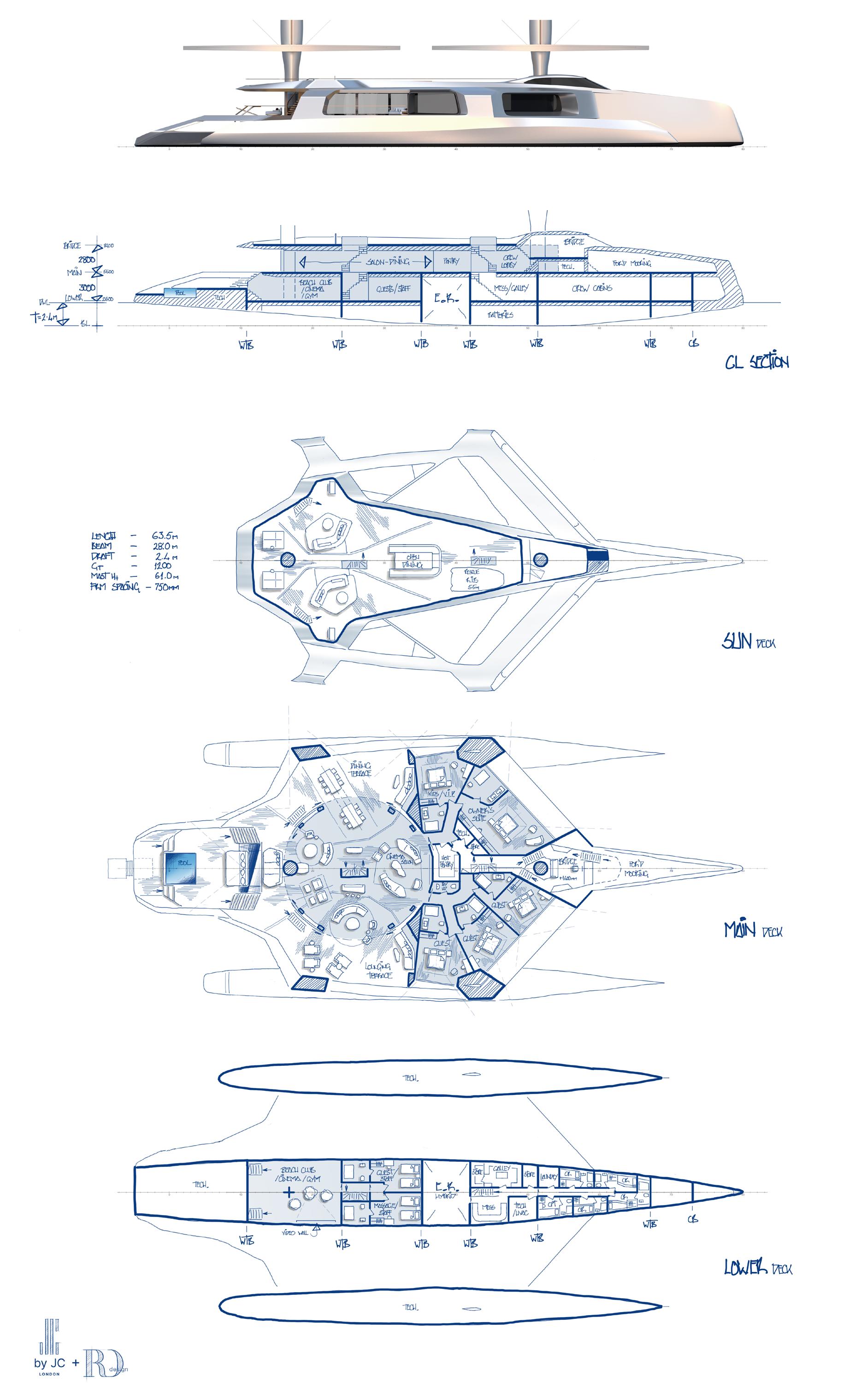
Critical to the whole concept is a feature that is still under wraps. Like Domus, the masts will be Panamax but unlike the earlier concept that had a hoistable, double-luffed mainsail to achieve some of the efficiency of a wing sail, Rob Doyle Design has devised a new self-supporting, joystick-controlled square rig called the Moonraker (named not after the Bond novel, but the topmost sail on the fastest square riggers of old). Rob Doyle Design claims the Moonraker offers superior performance at less cost and refer to as the Dynarig’s ‘Nokia moment’.
“We’ve signed an NDA wih Southern Spars who are undertaking a research program to verify performance and the Moonraker will be officially presented later this year,” says Mark Small. “We’ve been sitting on the Dynarig concept for years, but never got to version two-point-oh and without giving away too much, the critical point about the Moonraker is what the Dynarig can’t do. We hope to achieve downwind performance similar to a spinnakered ketch, which will make passagemaking much quicker. And critically, it will be cheaper to build than an equivalent Dynarig, so basically win-win.“
88-metre Maltese Falcon and 106.7-metre Black Pearl, currently the only yachts launched with Dynarigs, have full-carbon masts and spars. This would not necessarily be the case on the Oi60 and the masts could be of aluminium, since the trimaran has so much righting moment anyway, there is less need for a superlight but super expensive high-modulus rig.
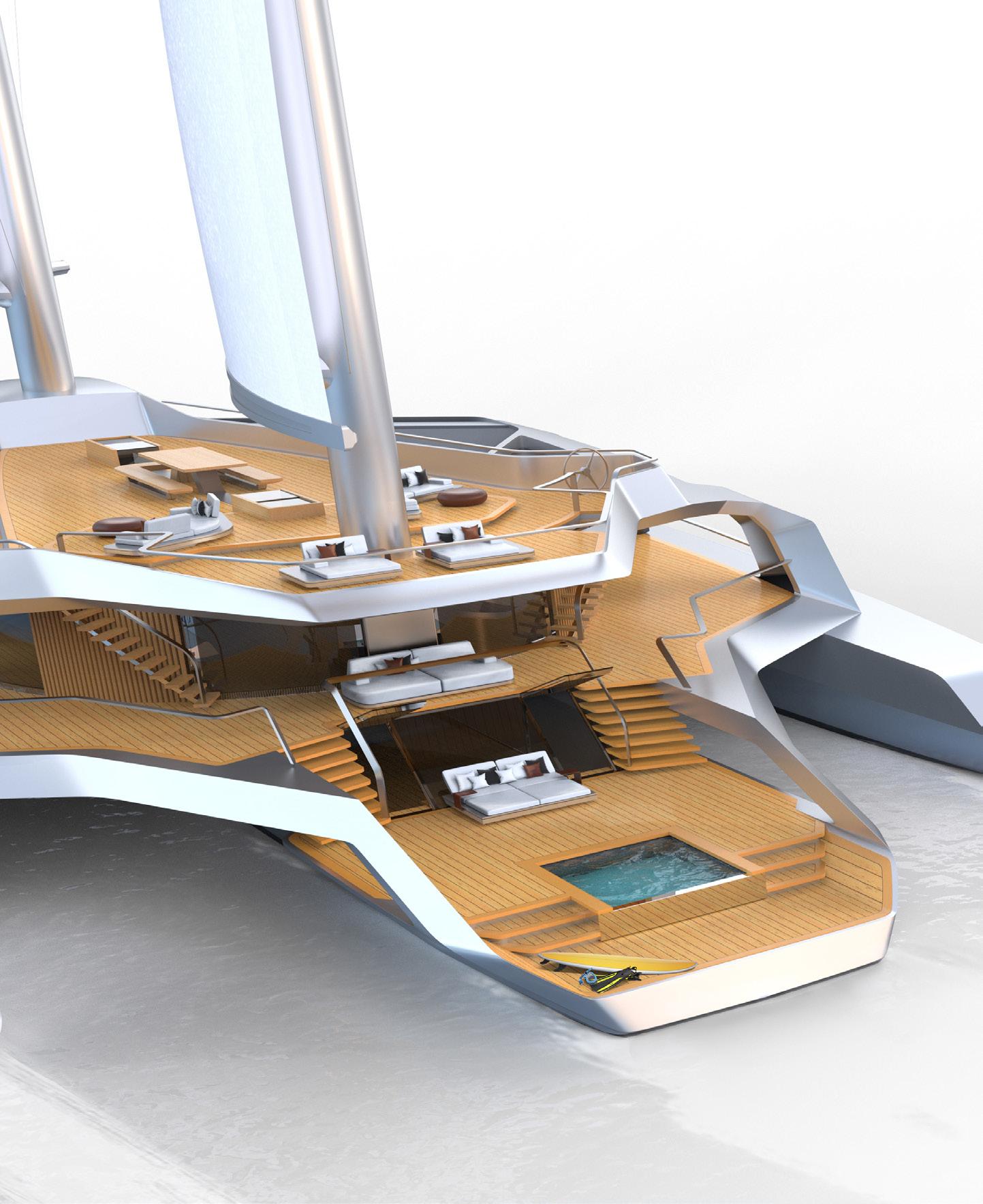

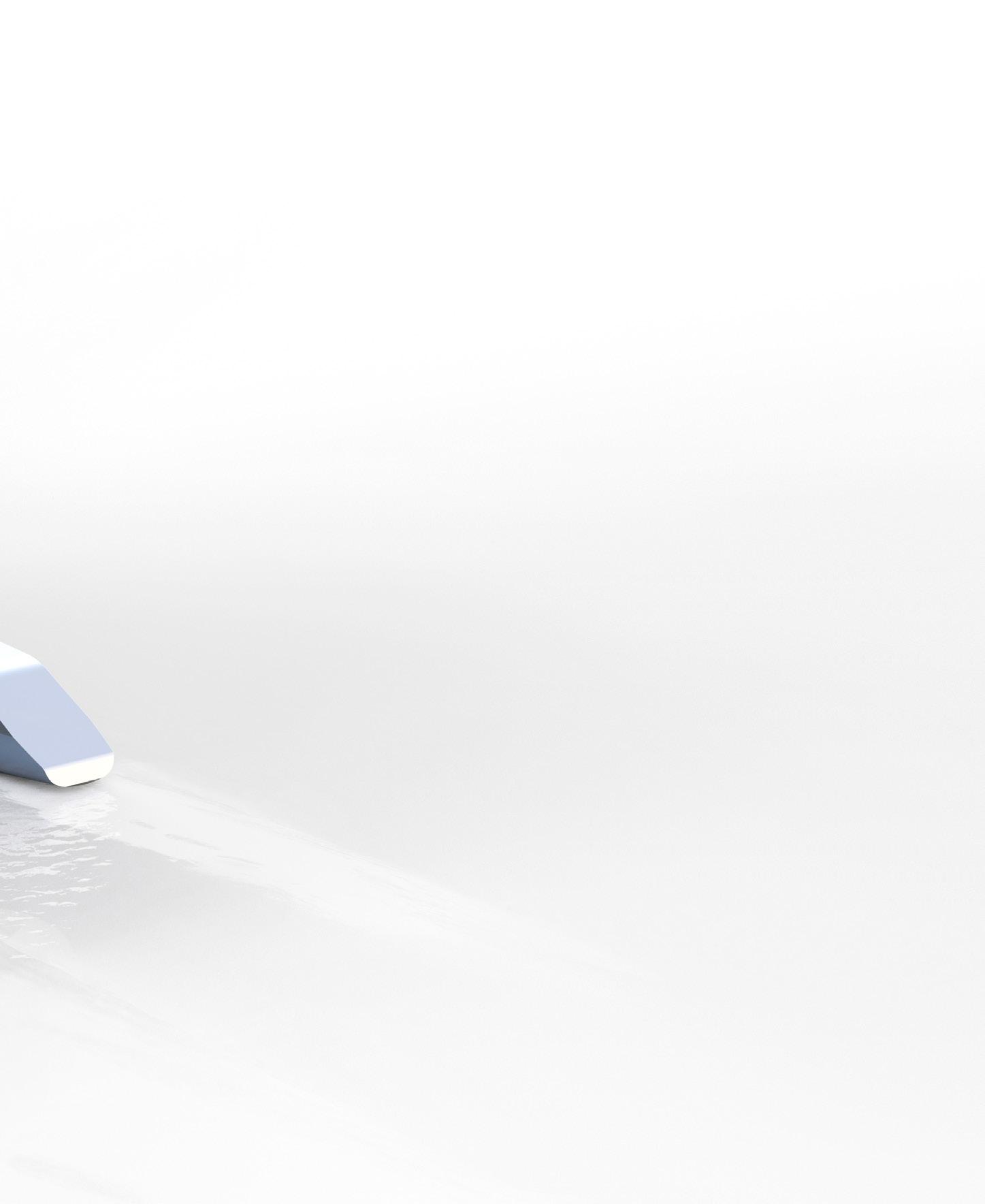
Critical to the whole concept is a feature that is still under wraps: a new self-supporting, joystick-controlled square rig called the Moonraker.
James studied naval architecture at the same time as Rob and Mark at Southampton University and the opportunity to collaborate came when he left Bannenberg & Rowell to set up his own design studio. The immediate inspiration for the Oi60 was a YouTube video he saw of a group of freewheeling friends sailing a performance catamaran from Tahiti to Hawaii. James got to thinking how to make long-distance sailing even faster and was initially keen to add foils to boost speed and comfort still further, but was dissuaded by Rob and Mark.
“At this size the structures involved would be enormous and if you have a problem with them, you have a very big problem,” says Rob. “We figured it was also unnecessary, because we have loads of performance already at hand and the idea is to make the iO60 as cost-effective to build as possible. Why would you open the door for that kind of added complexity and cost?”
Given the huge surfaces area the trimaran configuration offers, it makes sense to cover it with solar panels to generate renewable energy. Rob Doyle Design reckons that 300 kW/h per day could be produced from some 300m2 of photovoltaic cells to reduce generator loads for hotel use. Moreover, when sailing the freewheeling propellers can regenerate energy to store in batteries for future use. At hull speed the extra drag makes little difference, but the prop blades can also be folded when performance under sail is a priority.
“We’ve calculated that when sailing, the solar cells and regenerative propellers can produce all the energy that's required on board, including HVAC, which will be way in excess of what's actually needed to run the vessel,” says Mark. “It’s a pragmatic combination of renewable and regenerative for what will be a diesel-electric or hybrid diesel-electric boat.”
Although prospective clients have expressed interest in the concept, its designers purposely avoided undue influence from owners while developing the concept.
“Most owners have preconceived ideas of other boats in their heads,” says Rob. “We wanted to nip that in the bud so we could come up with something new and fresh. James came to us over a year ago with a blank piece of paper and we took our time developing his ideas into something very unique. Sometimes you have to give these creative projects time to develop, so we didn’t rush it or try to mash three or four other boat designs together.”
As naval architects as well as designers, all three are well aware of the technical
and financial constraints associated with designing superyachts. After all, if the aim is to provide owners and shipyards with solutions that are both new and viable, there is little point in coming up with ideas that are ultimately unbuildable.
“We see a lot of concept projects that can't be built, or they can be built but would cost half a billion to manufacture,” Mark points out. “We always balance the creative with the technical, which also means taking into account factors that may affect the price. We would never have started with the concept unless we thought it made sense.”
“I would really love to see it get built,” ends James. “Done right, I think it could be very special.”

The masts and spars could be of aluminium, since the trimaran has so much righting moment there is less need for a lightweight carbon rig.
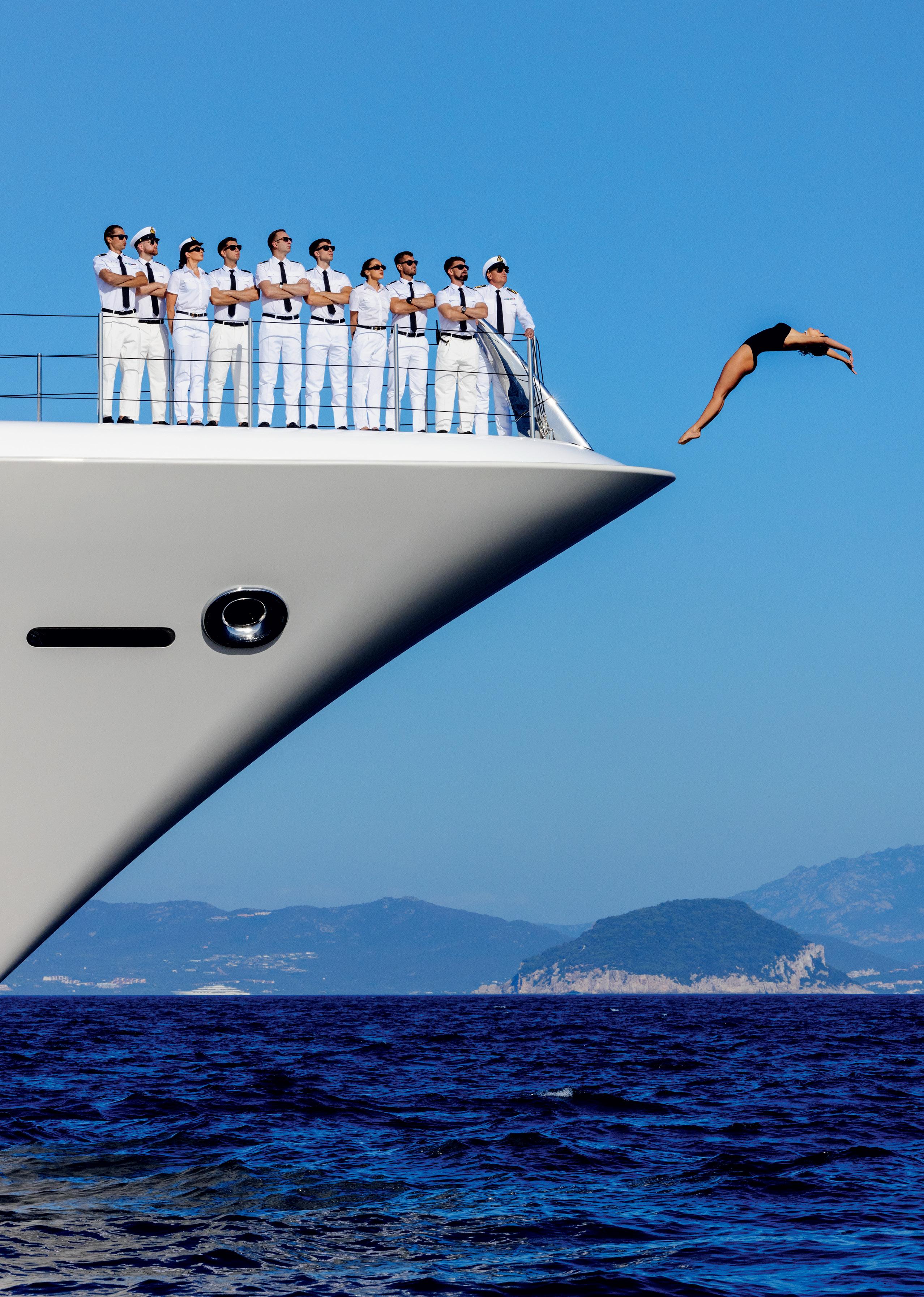
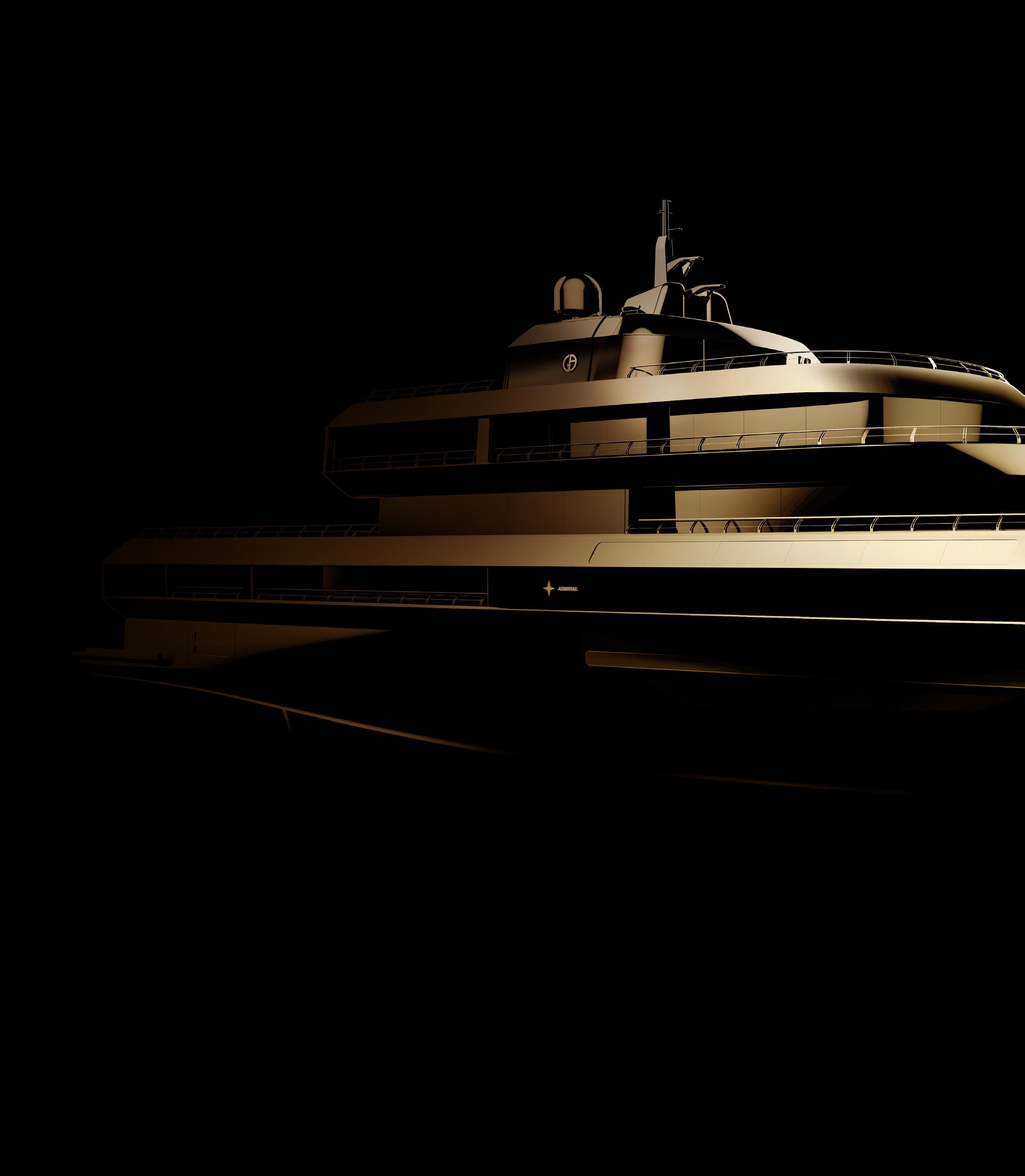

Project Metamorphosis, one of two 72-metre sister ships in build at The Italian Sea Group’s superyacht facility in Tuscany, is the first superyacht designed inside and out by Giorgio Armani. We visited the yard to catch up with the project leaders as the yacht prepares for her technical launch in April.
BY JUSTIN RATCLIFFE
The idea of inviting Giorgio Armani to create a custom design for the Admiral brand came to Giovanni Costantino, CEO of The Italian Sea Group (TISG), when he was walking past the Emporio Armani store, a vast building that occupies a whole block in Milan’s city centre. Armani was no stranger to TISG having twice refitted his own yacht, 65-metre Main, at the group’s NCA Refit facility. It took another six months for the two men to meet in person, but it didn’t take long for the famous fashion designer to take up the challenge.
Working to a heavily revised concept platform, the collaboration required constant back-and-forth between Armani’s creative team and the shipyard’s engineers. Armani would sketch ideas, which were then transformed into detailed blueprints by the shipyard’s engineering team, who made adjustments for practicality while staying true to the original design intent. The dynamic ensured that the 2,070GT superyacht would embody the designer’s signature style that blends discreet aesthetics with functional luxury, but also meet the required performance and technical parameters. IYC's global managing partner Michel Chryssicopoulos quickly found a buyer for what became Project Metamorphosis and her sister ship, Project Visionary, sold a few months later.
“The challenge was to craft a bold visual statement without relying on unnecessary ornamentation,” says Costantino. “The yacht had to be practical to operate, but also a piece of modern design that conveys timeless beauty."

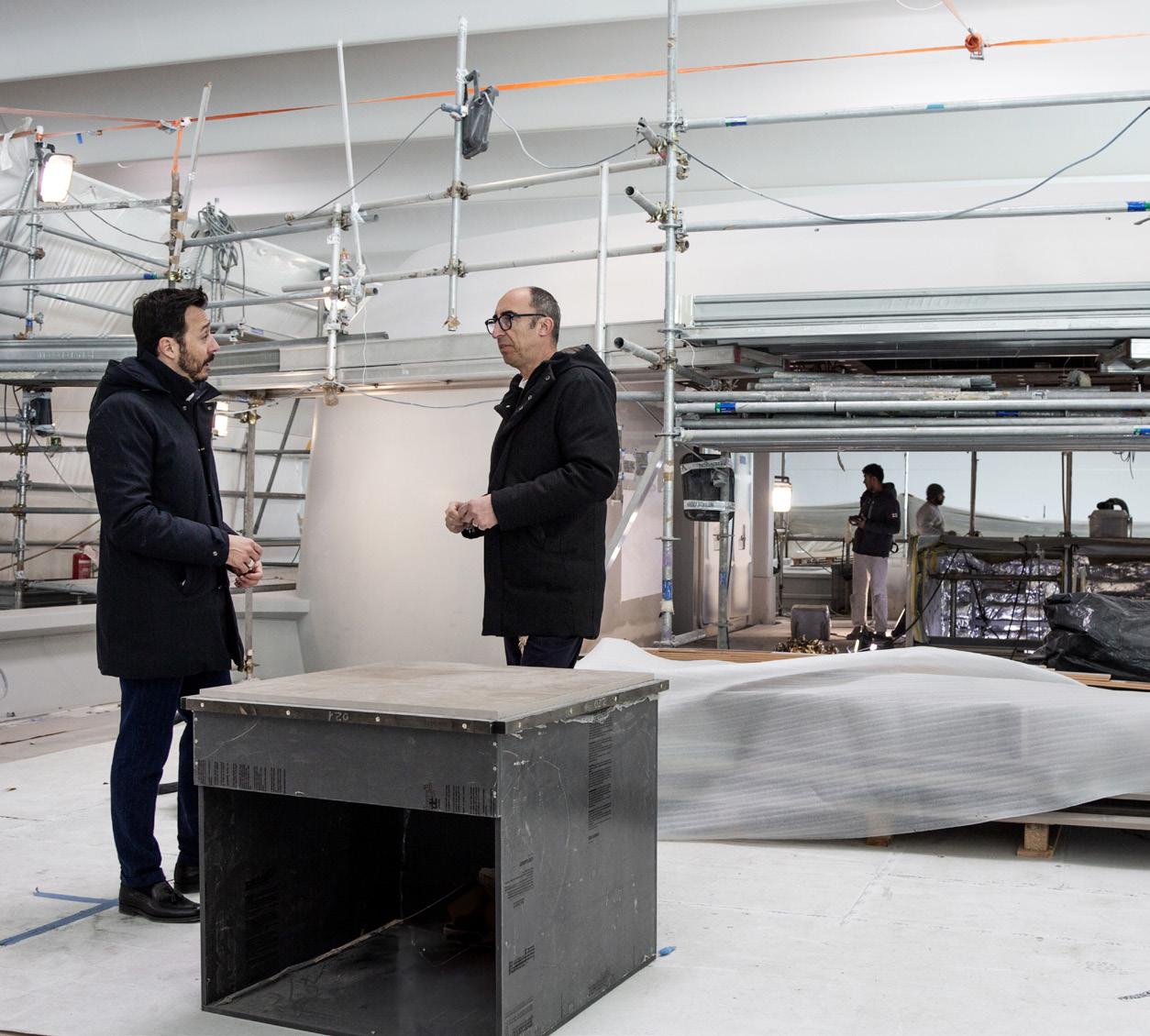

Armani’s minimalistic aesthetic makes ample use of glass, both externally and internally, with full-height panoramic windows on multiple decks. In fact, there are 310 square metres of external glass windows supplied by Sedak GmbH, amounting to 15.5 tonnes in weight (in addition to 230 square metres and 4.5 tonnes of decorative interior glass). The windows on the main deck and bridge deck are also cantilevered outboard Skat-style – these glass panes are not only massive, they also had to be able to withstand extreme weather conditions at sea without compromising the overall aesthetic.
“One of the first things we did was a feasibility study and FEM analysis to make sure the structure could take the stresses the yacht would be subjected to during her life,“ says project manager Davide Santagostino. “This analysis had to take into account not only the weight of the glass, but also the stresses caused by water movement and the external forces in high wind-load conditions. Further engineering was required with regard to weight distribution and stability, and we had to find creative ways to place internal structural pillars without disrupting the open-plan layout.”
The cantilevered glass further provides for an angled skylight above the main window pane in the guest cabins and bathrooms on main deck, which noticeably increases the amount of natural light entering the interiors. The sky lounge on the bridge deck, designed as an versatile cinema area for year-round use in summer and winter, has electrically operated floor-to-ceiling glass panes on three sides. The panes measuring up to 1.8 metres in diameter can be stacked in the open position to provide a plein air space in warmer weather or a more enclosed, sheltered environment when cruising colder climes. Forward of the very spacious wheelhouse is a deep Portuguese bridge that can be used as a relaxation area for the crew.
In the spring of 2024 Project Metamorphosis found a new owner in a sale brokered by Darrell Hall of Yachtzoo. The change of ownership, just three months before the projected launch, presented further challenges for both the shipyard and the new owner’s team.
“When I came on board, we were already at a stage where we realised there would be several adjustments necessary to meet the new owner’s requirements for personal use and with a view to charter," says Captain David Pott, who joined the project shortly after the resale. "Sustainability was not a prime motivator for the owner, but he was keen to integrate eco-friendly measures into the design as much as possible. He wanted a yacht that was able to go the distance – both literally and figuratively – and do so responsibly in full compliance with environmental regulations.”
The owner's desire to explore high latitudes – the Northwest Passage is just one item on a planned multi-year circumnavigation – meant uprating the yacht to Polar Class 1C certification, the lowest ice classification based on first-year ice in the Baltic Sea and Arctic Ocean. Although the hull was built with an ice belt of 12mm steel plating to withstand some ice conditions, the former owner had not opted to pursue formal certification. The shipyard team got to work to make the modifications required to meet the requirements. Amongst other measures, this involved upgrading the rudderpost, pintles, steering gear and propellers, installing freeze-protection valves, making new stability calculations that take into account ice accretion, and addressing environmental protection requirements.
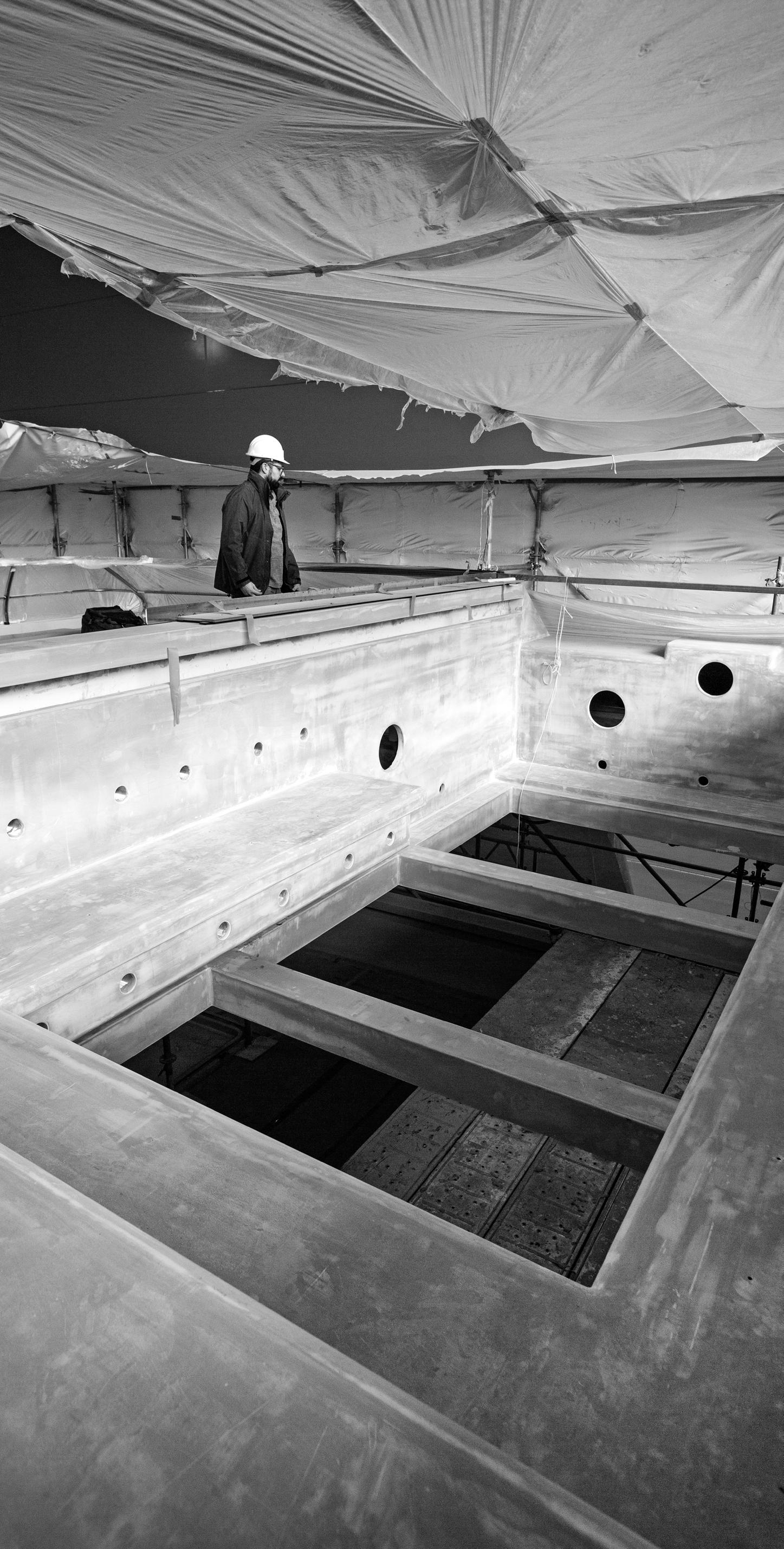
“In the end we were able to add more urea tankage without compromising the yacht’s cruising range of 6,000 nautical miles.”
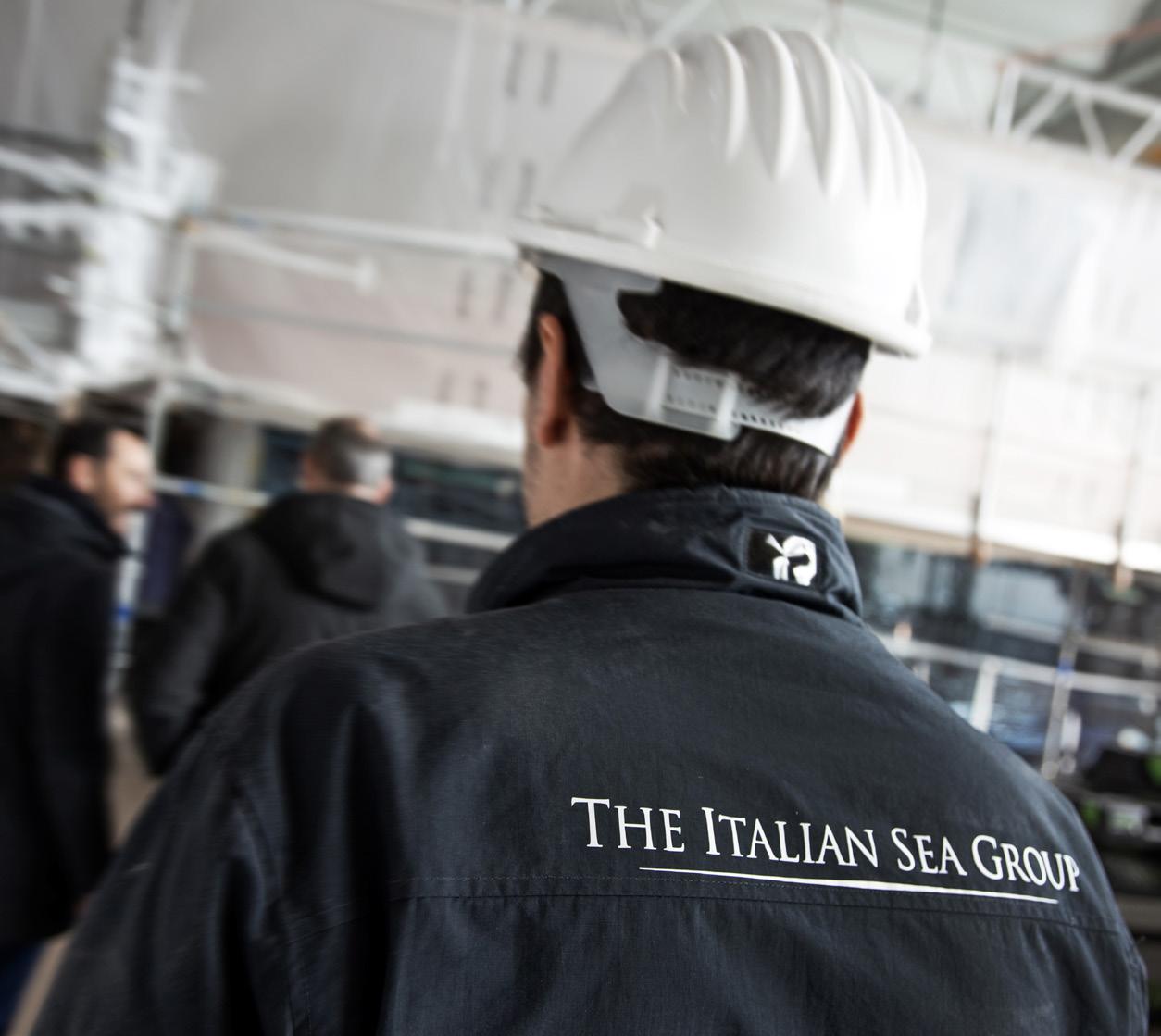

Facing page:
The latter led to an owner’s request for enhancements to the yacht’s SCR (Selective Catalytic Reduction) system by increasing the urea storage capacity. Injected as a water-based solution, the urea undergoes hydrolysis to produce ammonia, which reacts with NOx in the catalytic elements, effectively converting the harmful pollutants into harmless water vapor and nitrogen gas. Under Tier III diesel emissions regulations, in theory a vessel is required to carry only enough urea to run the SCR within a NOx Emission Control Area (ECA), but the owner wanted to use the system regardless of where his yacht is in the world – a prescient decision given that the list of ECAs will expand to include the Mediterranean as of May of this year. Besides neutralising NOx emissions, the SCR system also reduces exhaust noise and helps trap soot particles so they don’t find their way onto the deck, into the swimming pool and into the water around the yacht.
“This was a major modification as we had to rework the tankage to include more urea storage, which impacted the yacht’s fuel capacity,” says Andrea Bigagli, TISG Corporate Strategic Director. “In the end we were able to add more urea tankage without compromising the yacht’s cruising range of 6,000 nautical miles.”
“We took the view that emissions regulations are getting stricter all the time, so why not try to reduce as much as possible our environmental impact from the outset?” adds chief engineer Sam Needham. “We asked the shipyard to investigate the possibility of having the SCR units running all the time and they were happy to do that, which is a big improvement from our side. Basically, the yacht will run out of fuel before it runs out of urea.”
Individual images can be stitched together to

Shortly after the yacht changed hands, the owner’s team brought in Paul Shersby of Film360 Ltd to create a complete ‘digital twin’ of the project during construction using a Matterport LiDAR camera to capture spaces in high-resolution 3D. Working at night when the yacht was empty and progressing from tank deck to top deck, at the time of going to print Shersby had scanned the entire yacht four times (a complete 3D picture takes 500 scans or more) at intervals of six to eight weeks. While the system has been used to provide navigable interiors of finished yachts and residences for commercial purposes, the

technology also allows the owner’s team to remotely track the construction as it progresses.
“It’s been a really useful tool that I think will be picked up by others,” says Captain Todd. “For example, we can see all the cable and piping runs, where wi-fi routers are located, the black and grey water routes –basically everything below the deckheads or behind the walls before they’re covered up. It means if there’s a leak or other issues later on, we have a better idea of where the problem might be without having to take the interior to pieces.”
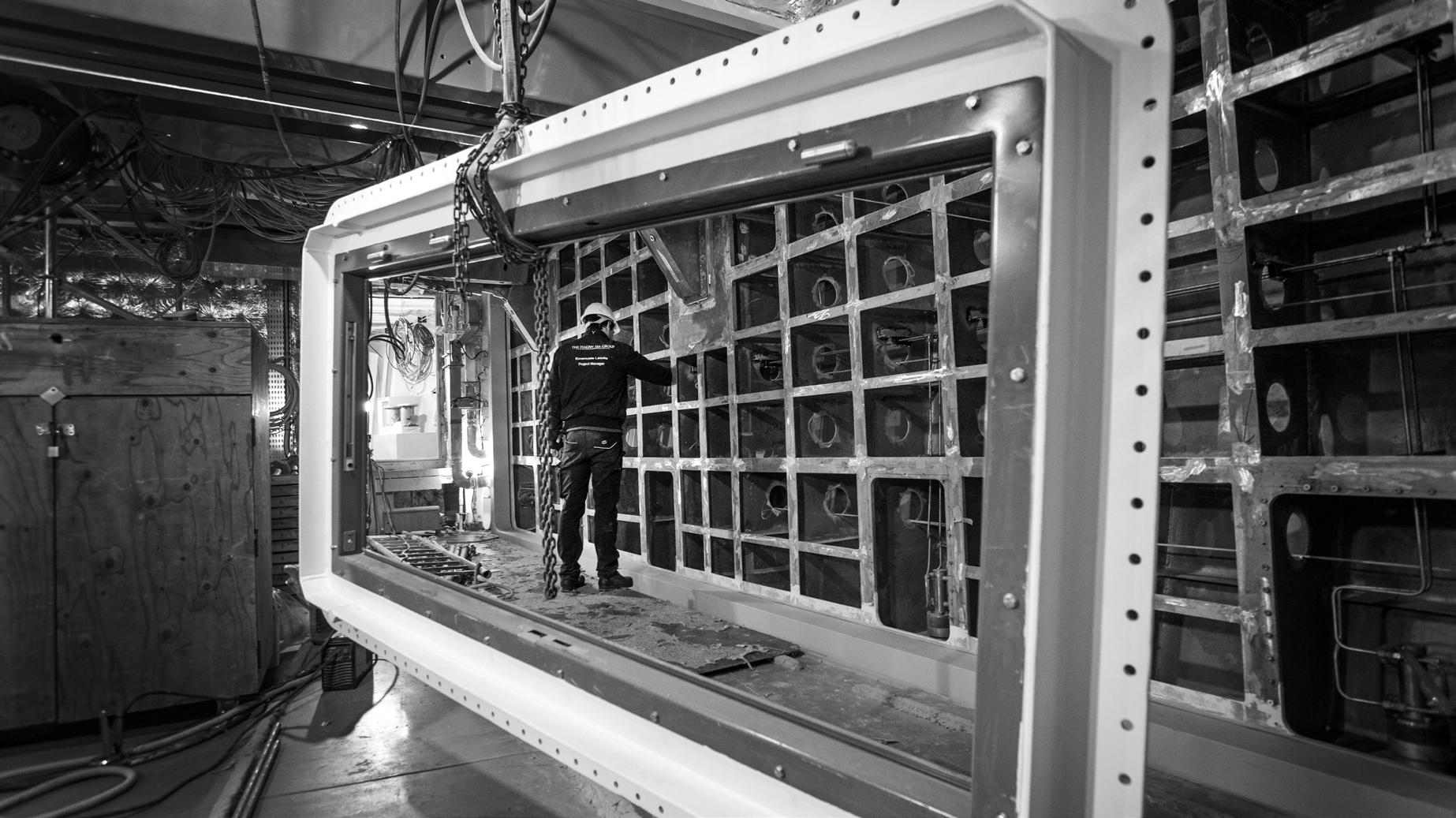
In line with the owner's desire for a techsavvy and future-proofed yacht, the AV/IT systems underwent substantial upgrades.
Working alongside AV/IT integrator Pibiesse, four Starlink antennas were added to the spec and cabling was augmented to ensure high throughput, redundancy, and future scalability for data-heavy applications like live video feeds, conferencing, and multimedia entertainment.
“Given the rapid advance of high-bandwidth systems, this upgrade was designed to futureproof the yacht’s AV/IT capacity in years to come,” says Bigagli. “The idea is that as new tech emerges, it can be seamlessly integrated into the existing infrastructure without requiring a complete system overhaul.”
Another important upgrade came in the form of an integrated bridge system from Furuno. This high-end addition improves the yacht’s navigation and operational capabilities, but also extends the vessel's usability in far-flung and possibly uncharted locations. The new bridge equipment includes FLIR thermal cameras and a
“He wanted a yacht that was able to go the distance – both literally and figuratively.”
WASSP multibeam sonar for mapping the seabed in high-resolution 3D. Using a tender in advance of the mothership, the system’s wide-angle sonar transducer maps the seafloor to find the safest passage and anchorage. The yacht also features telescopic wing stations with floors that pop up flush with the deck when extended, and a pantographic mechanism for the console controls inside the bulwarks.
Other modifications include the addition of an ice bath next to the hottub on the sundeck, stacked storage for four jet skis in the forward tender garage with their own lifting gear, and a much bigger transom hatch that hinges down into a recess in the swim platform for flush access to the beach club. A unique feature and testament to the high level of detailing is the design of the handrails. Curved to follow the shape of the bulwarks, each stanchion is slightly different and the rails themselves, although capped with teak on the inside, present a polished stainless-steel profile on the outside to complement the crisp exterior styling.

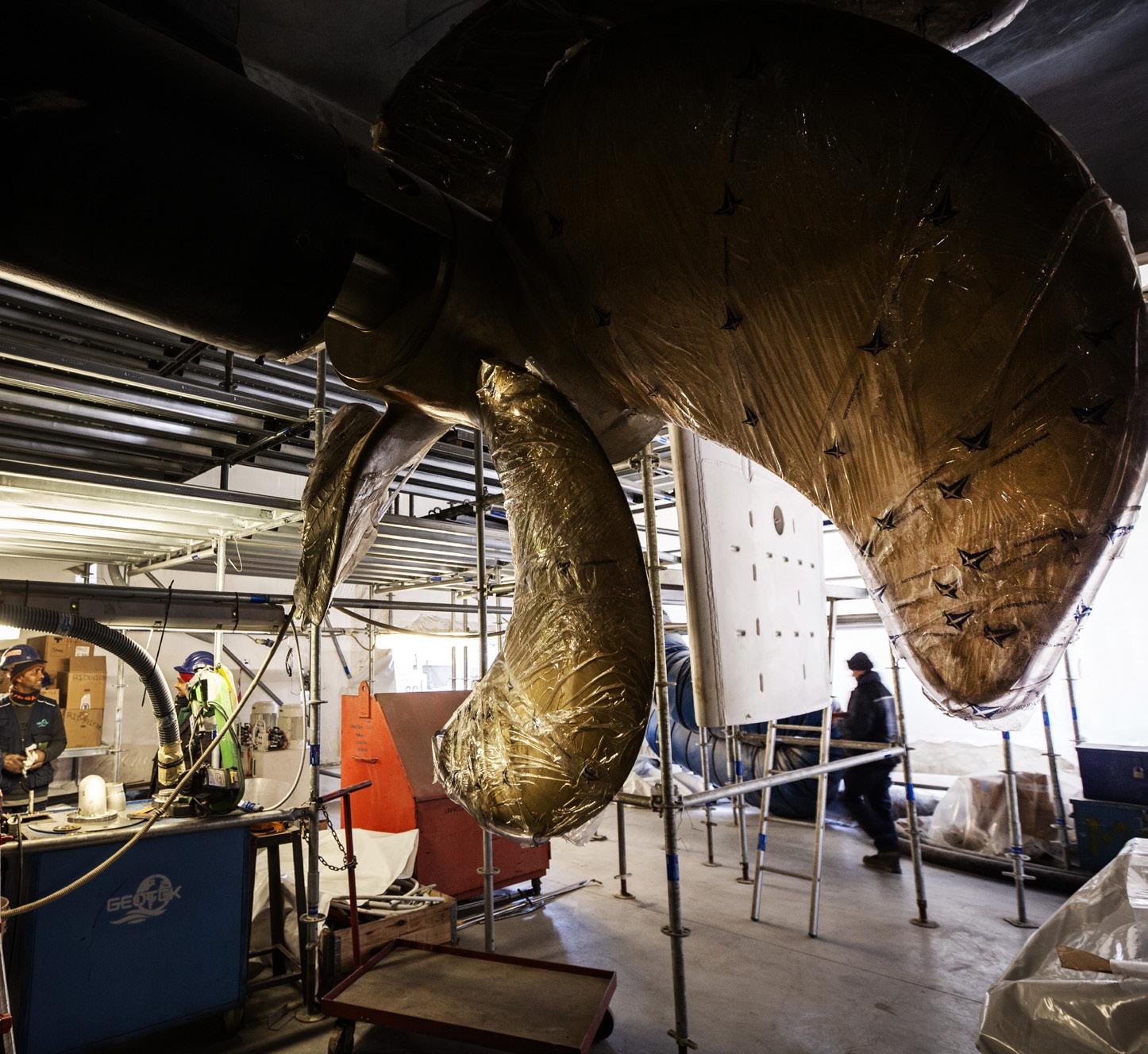
Owner of the Tecnomar, Admiral, Picchiotti, Perini Navi, and Tecnomar for Lamborghini brands, the TISG headquarters in Marina di Carrara has two of the largest private dry docks in the Mediterranean: a 200-metre long basin and a second 147-metre dock inaugurated in 2021. There is second TISG facility in Viareggio and a third one in La Spezia for a combined area of more than 244,000 square metres, 18 production sheds, over 1,500-metres of berthing, a 3,300-ton floating barge, and a keel pit in La Spezia used by NCA Refit that manages the group’s maintenance and refit services. In addition, the group operates two leased facilities in Antalya and Yalova, Turkey, for the production of its steel hulls and aluninium superstructures. It also has its own furniture manufacturing company, Celi Srl. TISG was listed on the Italian stock exchange in 2021. Excluding the Tecnomar for Lamborghini 63, at the beginning of 2025 it reported 22 active new-build projects across its portfolio of brands for a total length of 1,356 metres. These projects include Project Titanium, currently the largest yacht under construction in Italy at 100 metres and 3,800GT.

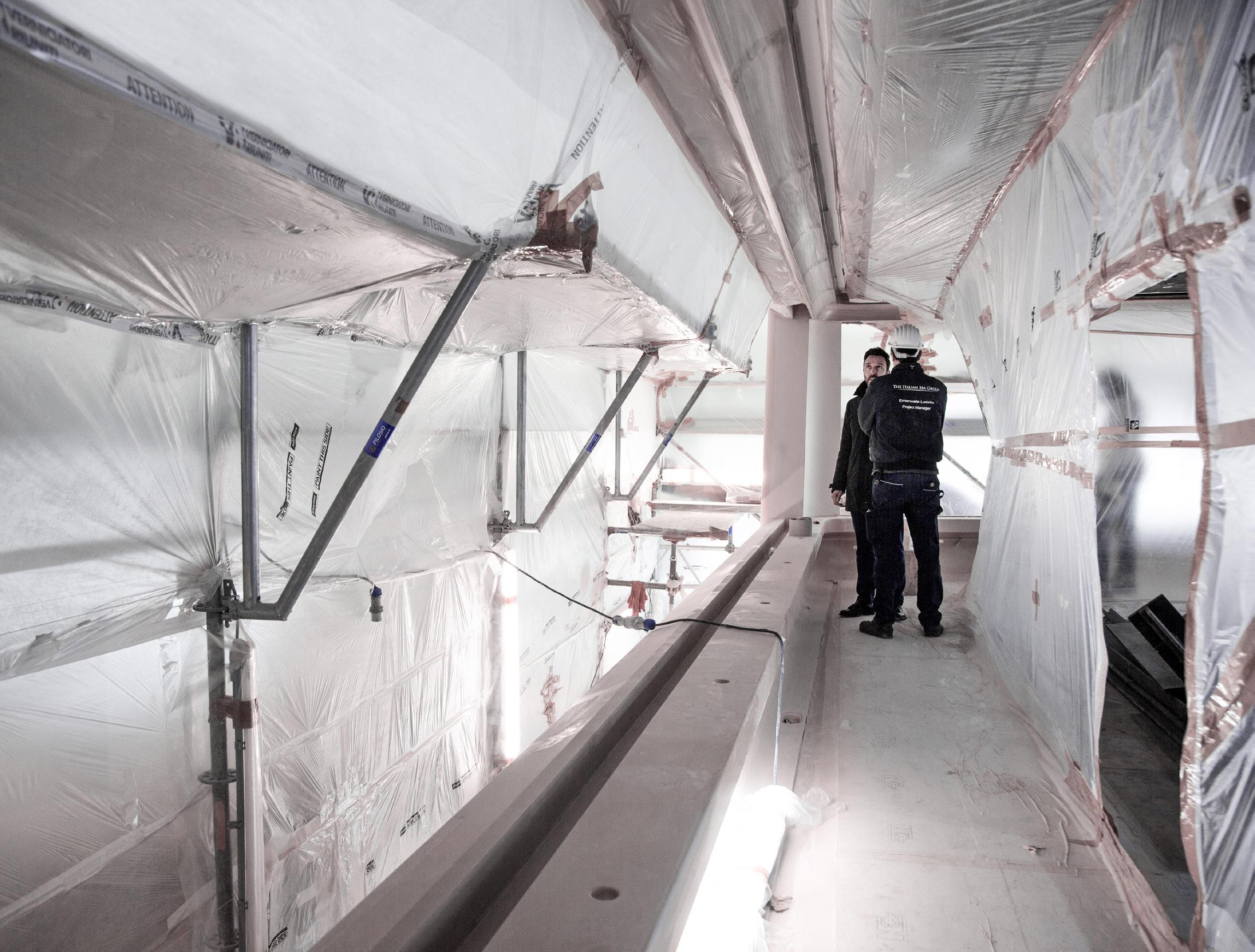
“We’ve been able to tweak a few things, but we could see right from the start that the shipyard had put together a solid package.”
Project Metamorphosis is due for delivery in June and is expected to be a showstopper at the Monaco Yacht Show in September. The late change of ownership and subsequent customisation requests inevitably meant delays, but enthusiastic collaboration between the owner’s team and the shipyard has been key to ensuring a successful result as the project enters the home straight.
“We’ve been able to tweak a few things, but we could see right from the start that the shipyard had put together a solid package and the foundations for a strong vessel were already there,” says chief engineer Sam Needham, who reviewed the design and specifications before the resale. “Now it’s just a question of supporting the shipyard as much as we can to help them get across the finish line.”
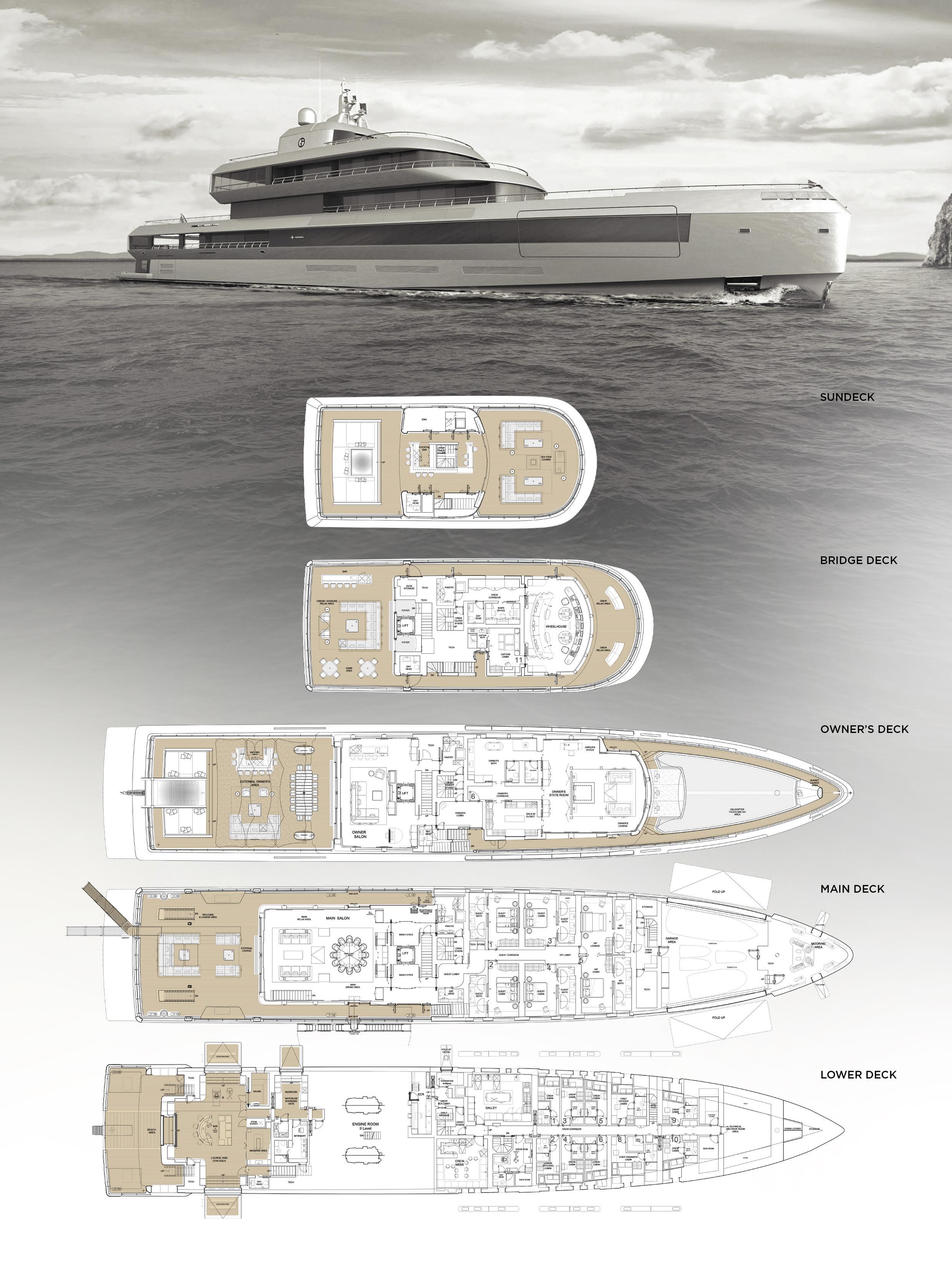




























Celebrating 60 years in business this year, Heinen & Hopman is a leading supplier of heating, ventilation and air conditioning (HVAC) solutions to the marine industry. But driven by the need for energy efficiency, environmental responsibility and enhanced comfort for owners, guests and crew, its HVAC systems are undergoing significant transformations.
BY JUSTIN RATCLIFFE
“It all boils down to space, reliability and maintenance. Centralised HVAC requires a dedicated AC room, which is a problem on smaller yachts.”
Melis Heinen and Cees Hopman founded Heinen & Hopman Engineering in 1965 and by the end of the decade the company was supplying the commercial shipping sector with HVAC solutions. It wasn’t until 1984, however, that it entered the yacht market when the owner of 60-metre Feadship Rio Rita requested a silent AC system — at a time when fan coil units were noisy and untreated air led to mould and unpleasant smells on board. Heinen & Hopman installed a total air system with central air handling units offering draughtless, whispering and odourless air conditioning. The owner was so satisfied he recommended Heinen & Hopman to all his superyachting friends.
Heinen & Hopman is still family owned today. Serving the wider maritime industry and represented in over 30 countries, it has enjoyed solid growth over the decades with the yachting sector providing roughly 35 percent of its total annual turnover. For the last couple of years the company has received a Dun & Bradstreet (D&B) Rating 1, indicating the most creditworthy businesses based on payment histories, financial information, public records, years in operation, and other factors.


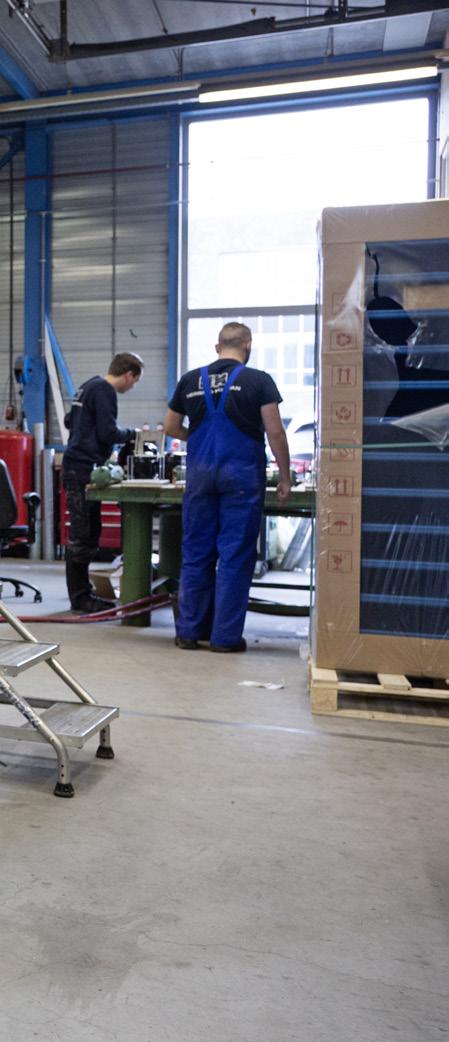
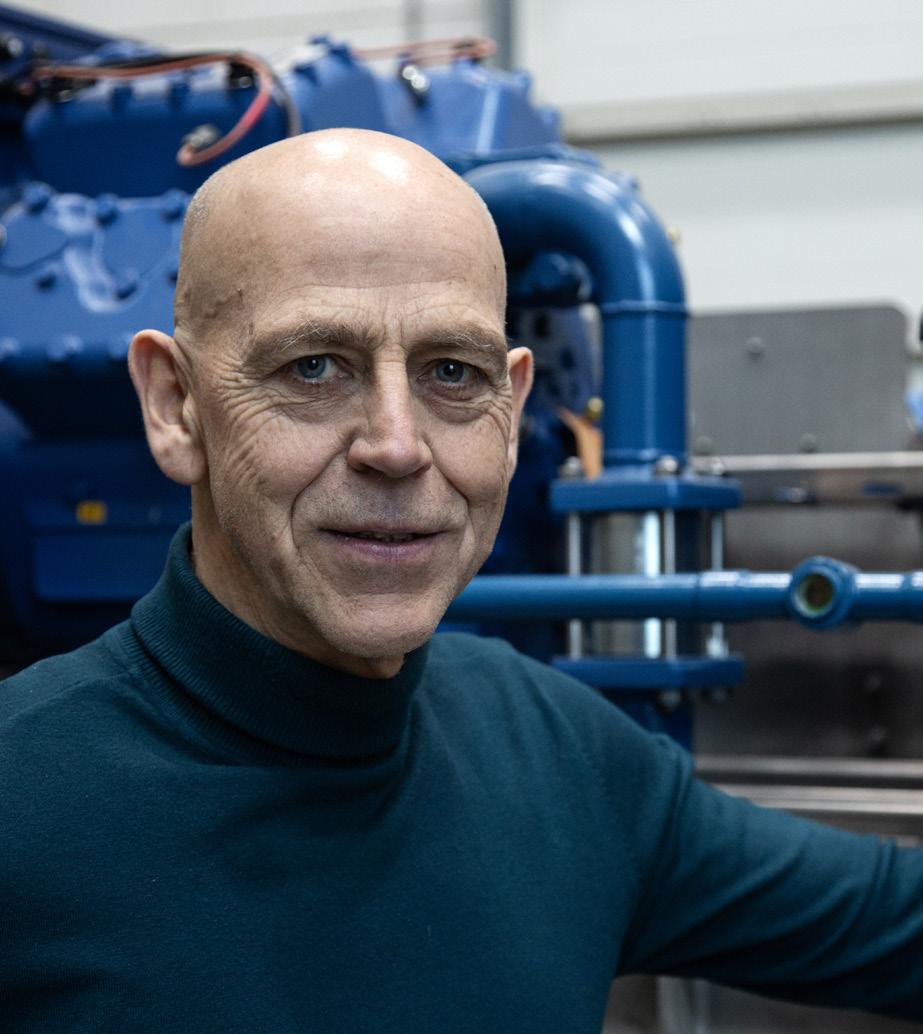
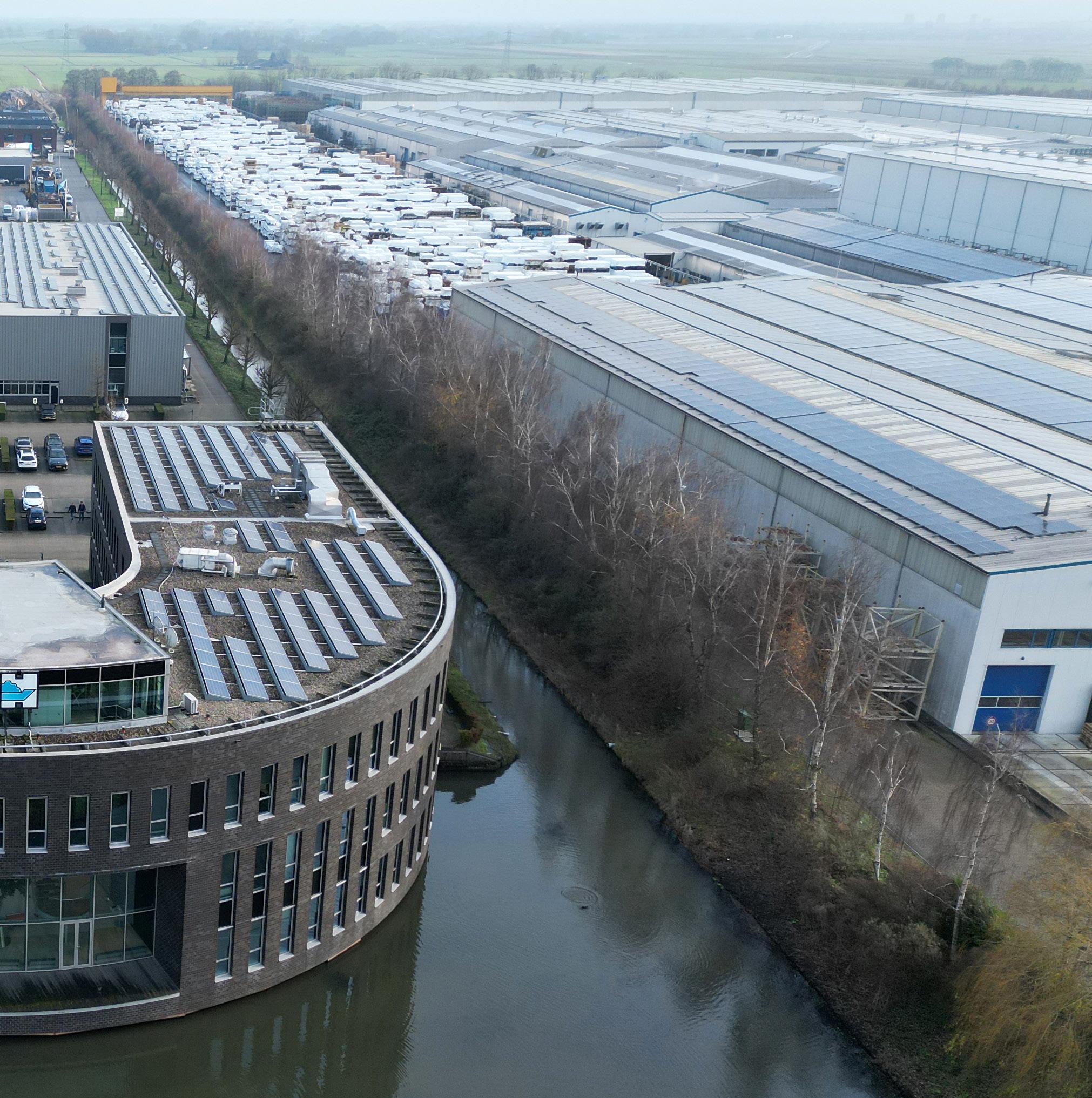
Air conditioning, air quality, and the flawless performance of HVAC systems are pivotal to the superyacht experience. But AC on a ship or yacht is more complex than on dry land. Calculating the BTU required to heat and cool a home or commercial building is relatively straightforward and based on the size of the area, while also taking into account seasonal temperatures and exposure to direct sunlight. A superyacht, on the other hand, can receive sunlight from all directions as it swings at anchor and has to be able to cope with tropical and temperate, dry and humid climates depending on where it is in the world.
“The yacht itself moves and vibrates so drainage pans, for example, should be properly placed with higher sills,” adds Peter Bos, senior sales manager at Heinen & Hopman headquarters in Spakenburg, a 40-minute drive east of Amsterdam. “We also need to watch out for leakages and corrosion from components like seawatercooled condensers, and on custom yachts the HVAC system has to be tailored around the technical spaces of each project.”
The equipment is always pre-assembled for Factory Acceptance Testing prior to delivery. At Heinen & Hopman’s Spakenburg production facility, this involves mounting complete systems on a test bed hooked up to underground tanks containing 25,000 cubic metres of water for cooling to simulate real-life conditions. For easier access in the case of refits, the systems are dismantled and brought on board piece by piece to be reassembled by a dedicated team of engineers.
“Another part of our work in the yachting sector is upgrading HVAC equipment during refit projects,” specifies Bos. “The challenge here is that we usually have much less lead time, access for big items like chillers is more difficult, and the installers have to work around all the other refit jobs going on.”
Facing page: The
The Heinen & Hopman system installed on Rio Rita 40 years ago treated the air in a central location and then distributed it across rooms via a ducting network. Centralised HVAC is attractive because most of the mechanical equipment is removed from the guest areas, which means less noise. A decentralised system, on the other hand, may comprise a system of chilled water-fed fan coil units distributed throughout the yacht, or a DX (Direct Expansion) system whereby the air is directly chilled by heat exchange as refrigerant travels through each fan coil. Decentralised HVAC has the flexibility to deliver the desired air temperature and quality to individual cabins, which requires more advanced zoned implementation with a centralised system. However, running multiple refrigerant lines can be more complex, costly and sensitive to failure than running fewer chilled water piping loops. For these reasons, Heinen & Hopman recommends only chilled-water decentralised systems on yachts below 50 metres or 500GT and complete centralised systems on larger yachts.
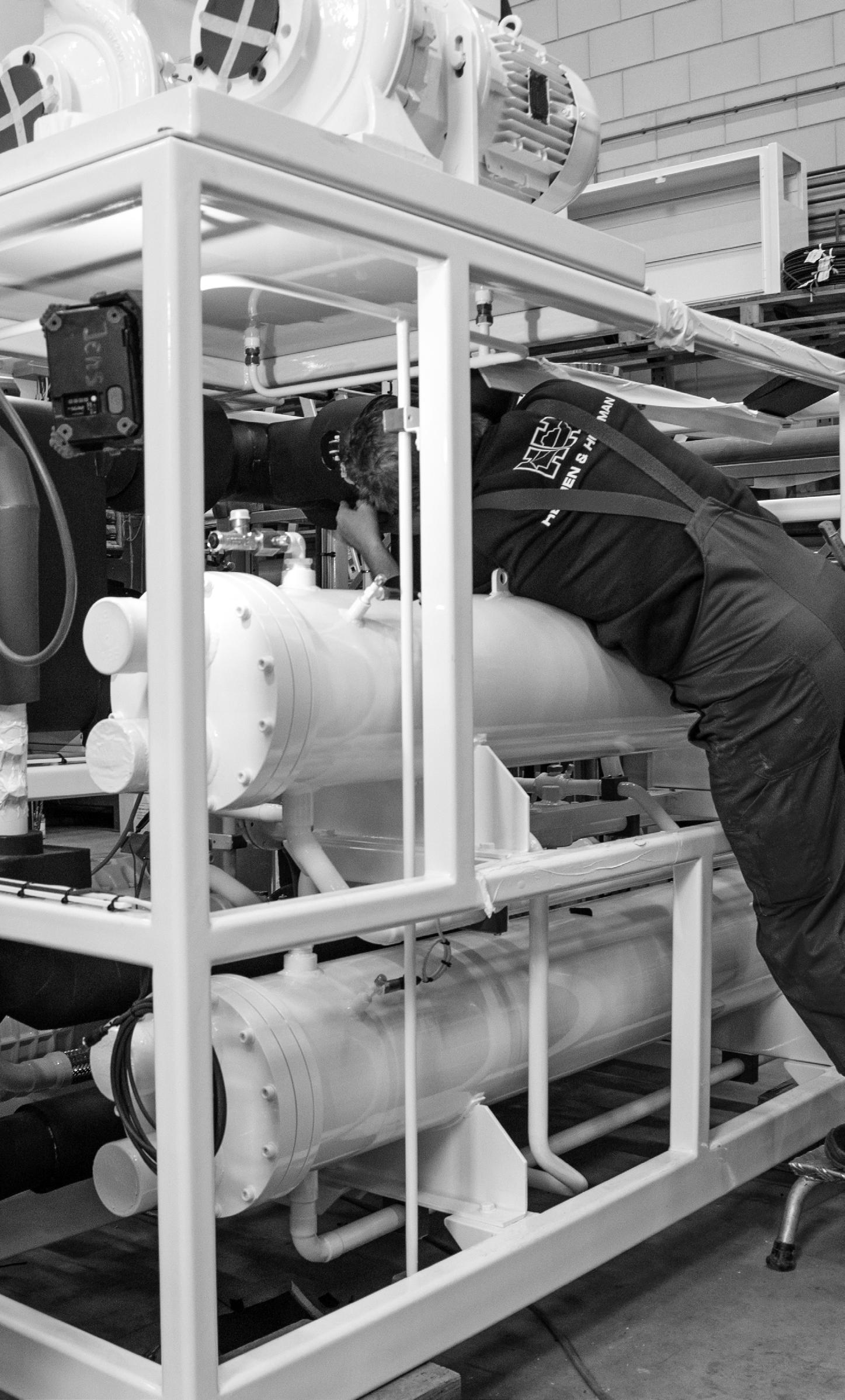

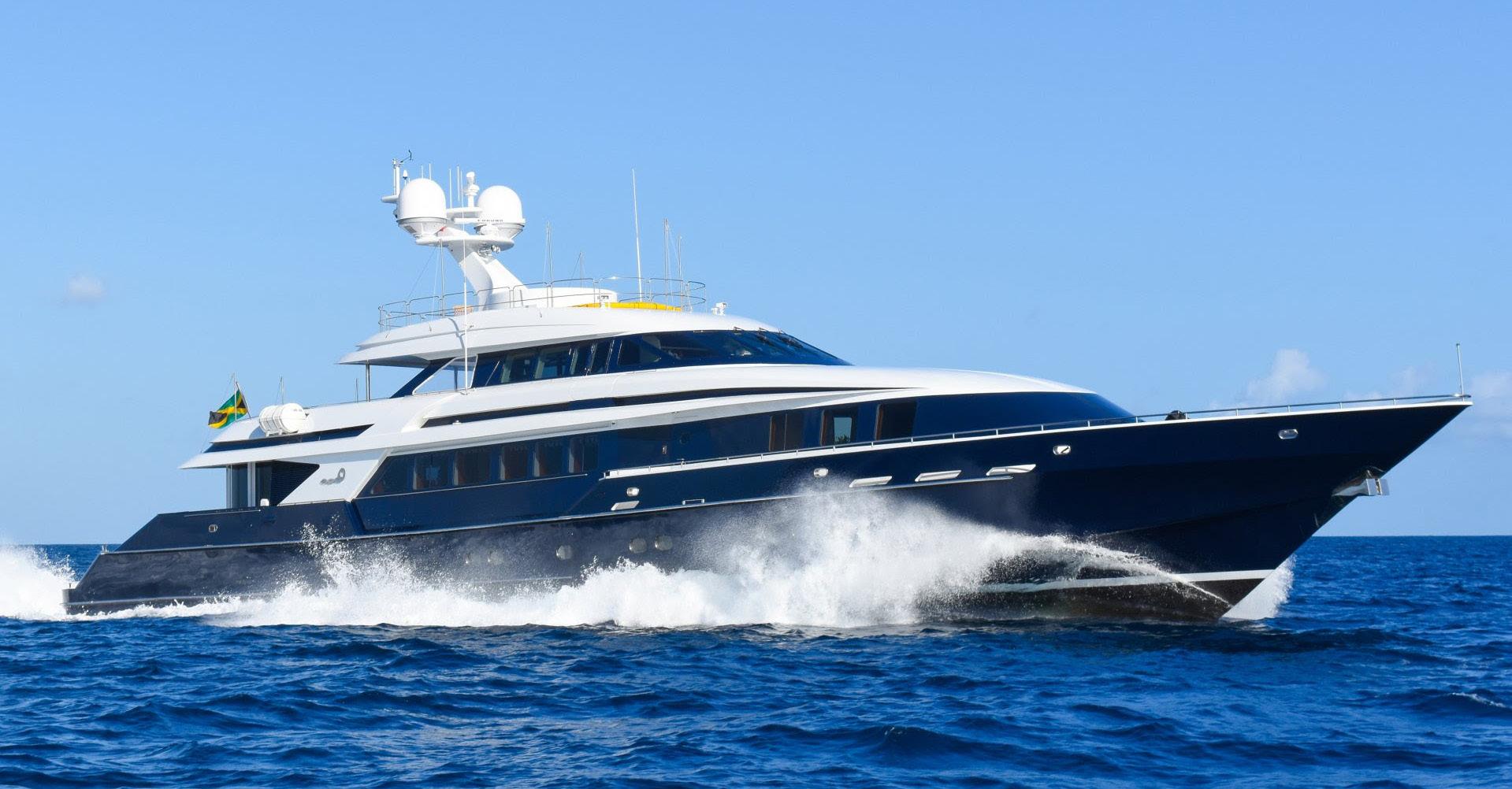
“It all boils down to space, reliability and maintenance,” says Bos. “Centralised HVAC requires a dedicated AC room, which is a problem on smaller yachts. We do install these systems on quite small working vessels, but they don’t have to worry about taking space away from the owner or guests.
At the other end of the scale, installing a decentralised system on a 100-metre yacht might mean 150 fan coil units distributed all over the vessel – the engineer is not going to be happy because each one of those fan coils as to be regularly checked for leakages and the filters maintained. Moreover, each fan coil is a source of noise and vibration.”
One of Bos’ first projects when he joined Heinen & Hopman as a draughtsman was 40-metre Octopussy. Launched by Heesen in 1988, the yacht was specifically designed to break the 50-knot barrier, which meant it had to be as light as possible. Bos calculated that the most lighweight HVAC solution was a DX system.
“Direct expansion is the most efficient system because you cool the air directly with refrigerants and have nothing in between like chillers,” he says. “But it’s very sensitive to leakages on a vibrating boat and when that
happens the refrigerant evaporates and you lose your AC. Suffice to say the yacht was very light and she broke the 50-knot barrier, but the owner subsequently asked for waterfed fan coil units or centralised systems on his later yachts.”
Relative quietness is another reason why most superyachts over 50 metres opt for centralised HVAC. Noise – or rather the lack of it – is a must for today’s owners and Heinen & Hopman aims to provide noise levels of 38dB or less in guest areas. Fans are usually the main source of noise, but care also has to be taken to reduce the velocity of the air as it exits the ducting with expansion boxes before it enters the accommodation spaces.
“I would say 35dB is the minimum practical noise level, because lower than that and you start to hear background noises, maybe from a transformer or a small fan in the AV system,” Bos points out.”
Advanced air purification systems also enjoyed an uptick in the wake of the Covid pandemic, although demand has since normalised. These systems may include particulate air (HEPA) filters, ultraviolet (UV) light systems, and ionizers that can eliminate airborne pathogens, allergens, and pollutants.
All the
systems are pre-assembled and factory acceptance tested before delivery. The
underground water tanks for cooling.
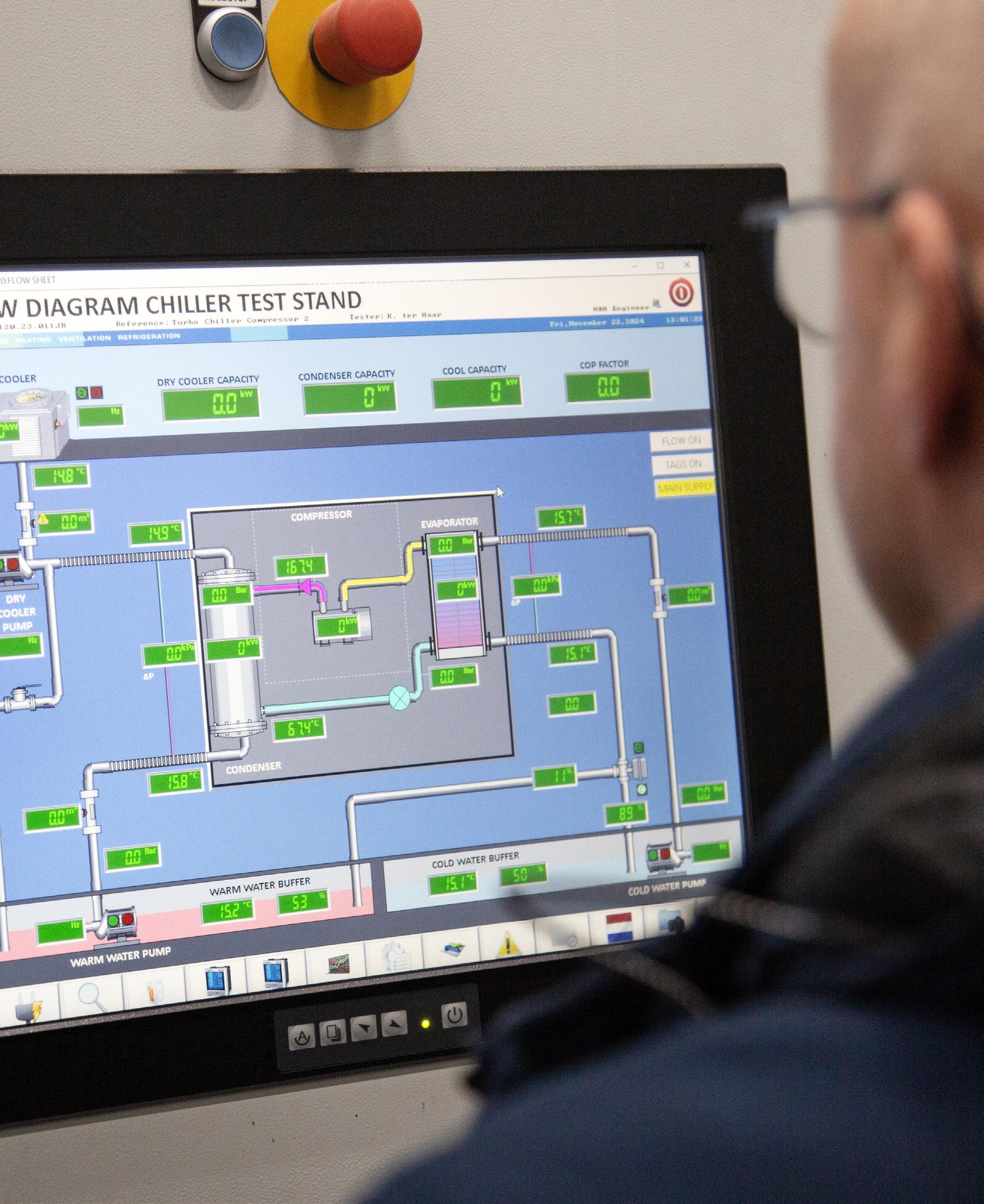
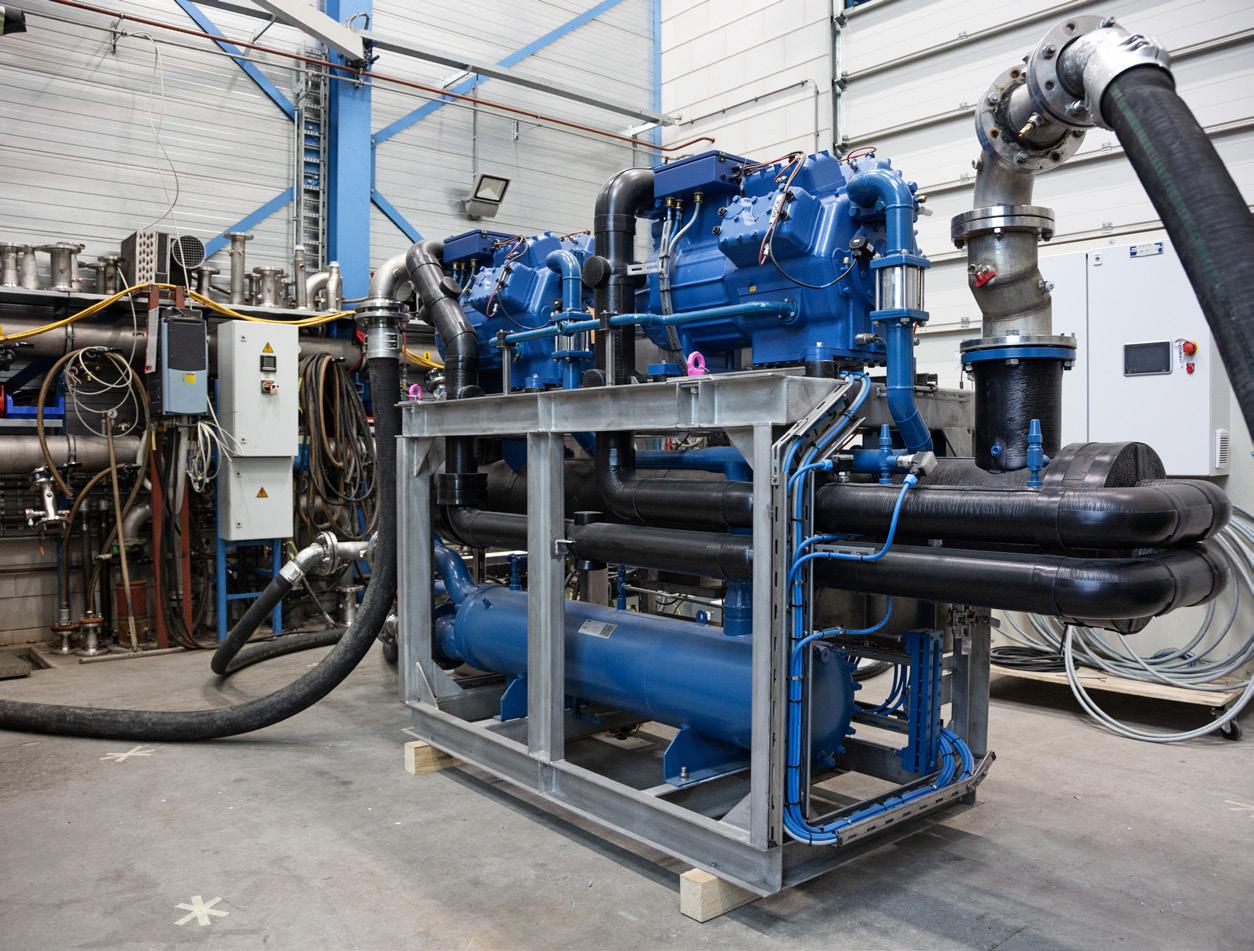

American company Dupont was the first to come up with a synthetic refrigerant, which it released under the brand name Freon R-12, The fluorinated greenhouse gases known as F-gases used in synthetic refrigerants for air conditioning, refrigeration, heat pumps, and other systems, are energy efficient and relatively safe due to their low levels of toxicity and flammability. But it was eventually realised they were helping to destroy the ozone layer and add to global warming.
The latest EU legislation, Regulation 2024/573 of the European Parliament and the Council, adopted on February 7, 2024, focuses on the regulation of F-gases. The new regulation revises Directive (EU) 2019/1937 to impose stricter controls on their use, reporting, and management, while aiming to further reduce emissions in line with the EU’s climate goals.
The search for the perfect refrigerant is a tough one as there is no ideal solution. Progress is being made with increasingly better synthetic refrigerants that have only a fraction of the Global Warming Potential (GWP) of commonly used refrigerants such as R134a and R410a, but classification societies have yet to set regulations for their use.
Based on regulatory requirements, the current thinking is “natural refrigerants ready” much like being “hydrogen ready”. This is ironic as it marks a return to so-called natural refrigerants with a low GWP value such as ammonia, CO2 and propane that appeared in the first cooling machines in the early 20th century, but were later dropped over concerns about their flammability and toxicity – problematic properties when leakage occurs in built-in technical rooms. Again, DNV and Lloyd’s Register have their own rules for their use.
Smart design of the AC zones and the strategic placement of technical spaces, air handlers and vertical duct shafts can significantly improve energy efficiency. Assume, for example, that the overall amount of treated air for an area is 10,000 m3/h. In one situation the technical space is placed on the boundary of the AC zone and all the ducts come from the same side. This results in more ducting and bulkhead penetrations. Instead, a smart design positions the technical space in or near the centre of the AC zone (in reality, there are other factors to consider, such as the vessel’s structure and fire and watertight bulkheads).
“The amount of air needed to meet the specified conditions is determined by transmission calculations and cannot
be changed,” says Bos. “Smart design, on the other hand, allows for significant reductions in the amount of ducting, fewer penetrations, and less weight.”
Bringing air from the AC room to a cabin 30 metres away costs energy, especially when it’s weaving its way through a complicated duct system with all its bends and flaps. The resistance is overcome by the head pressure of the fan, but a higher head pressure obviously results in more power consumption (the resistance also depends on the air speed, which increases quadratically at higher speeds). As well as saving weight, reducing the duct system lowers energy consumption as the smaller fans require a lower head pressure. Further, the HVAC system contains watertight valves, closing valves, fire and
“People think Heinen & Hopman is only about HVAC, but we’re actually a systems integrator.”
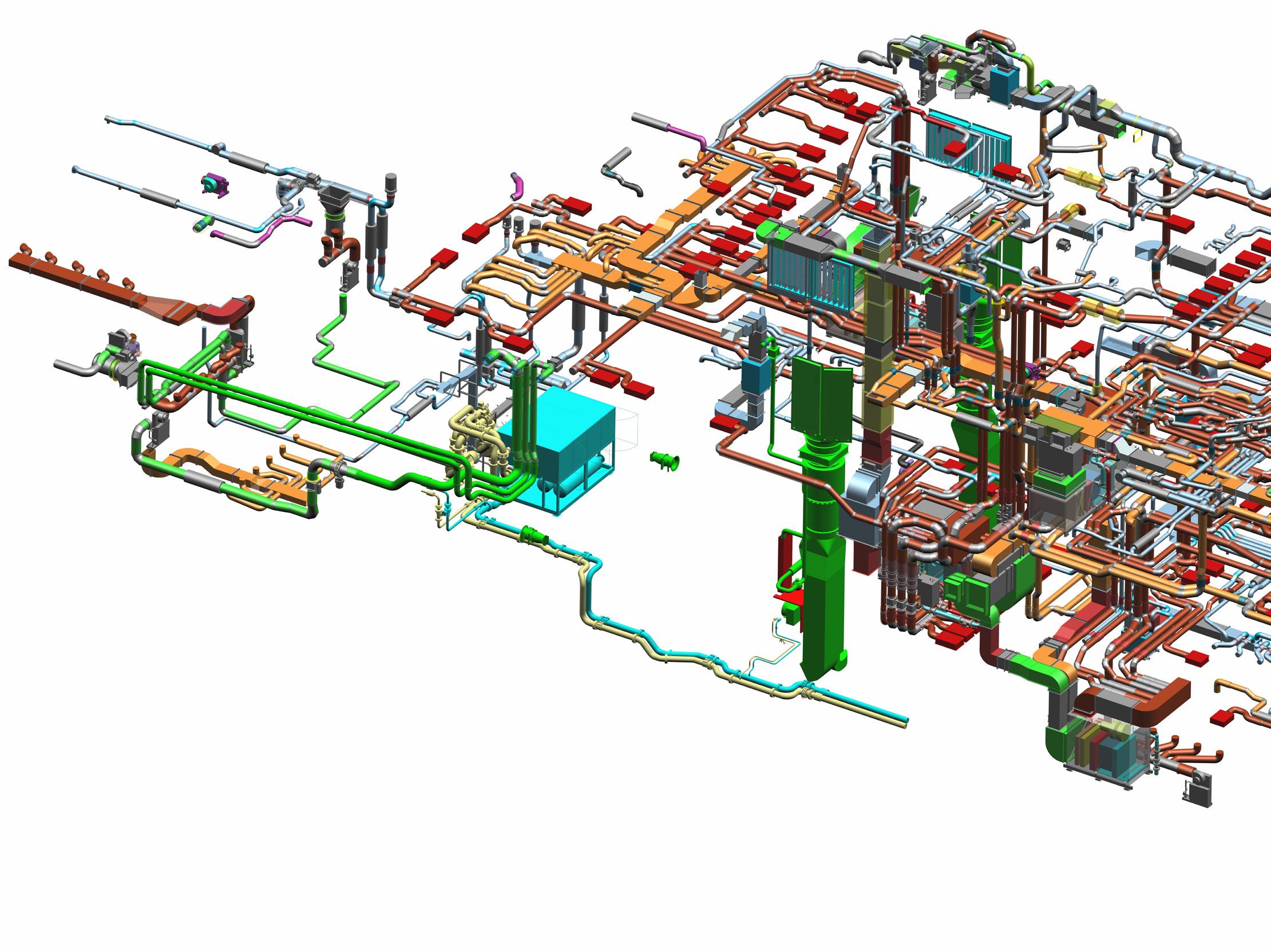
smoke dampers. Each valve has a weight, creates air resistance and uses electricity, and most also need a penetration. Smart design can reduce the number of valves by dividing the AC zone so that it fits inside a fire zone or watertight area. Naturally this requires a clear overview of the general arrangement ahead of time, which is why Heinen & Hopman likes to be involved in the design process as early as possible.
“People think Heinen & Hopman is only about HVAC, but we’re actually a systems integrator,” says Bos. “That means we not only look at the AC but also the ventilation of sanitary, galley and technical spaces. If you don’t do that you’ll get unbalanced systems that work against each other, such as underpressure in the accommodation that can cause humidity problems.”
In 2023 Heinen & Hopman launched its Service Portal and Operation Control Centre (SPOCC) portal. Accessible from smartphones or laptops and designed to offer more efficient oversight and maintenance of onboard HVAC systems, SPOCC provides a range of capabilities from real-time performance monitoring and equipment health analysis to a complete system history, documentation library and maintenance alerts. More recent iterations incorporate sensor arrays for more accurate performance assessment and self-diagnosis capabilities. Naturally, the information is limited to authorised personnel who need to operate, develop or improve the portal and the nonpersonalised data is logged in a database in a European-based cloud accessed by a secure and protected internet connection. By making the life of onboard engineers and management teams easier through data logging that can be viewed in a PowerBI overview, SPOCC represents the beginning of a data-driven future for HVAC systems.
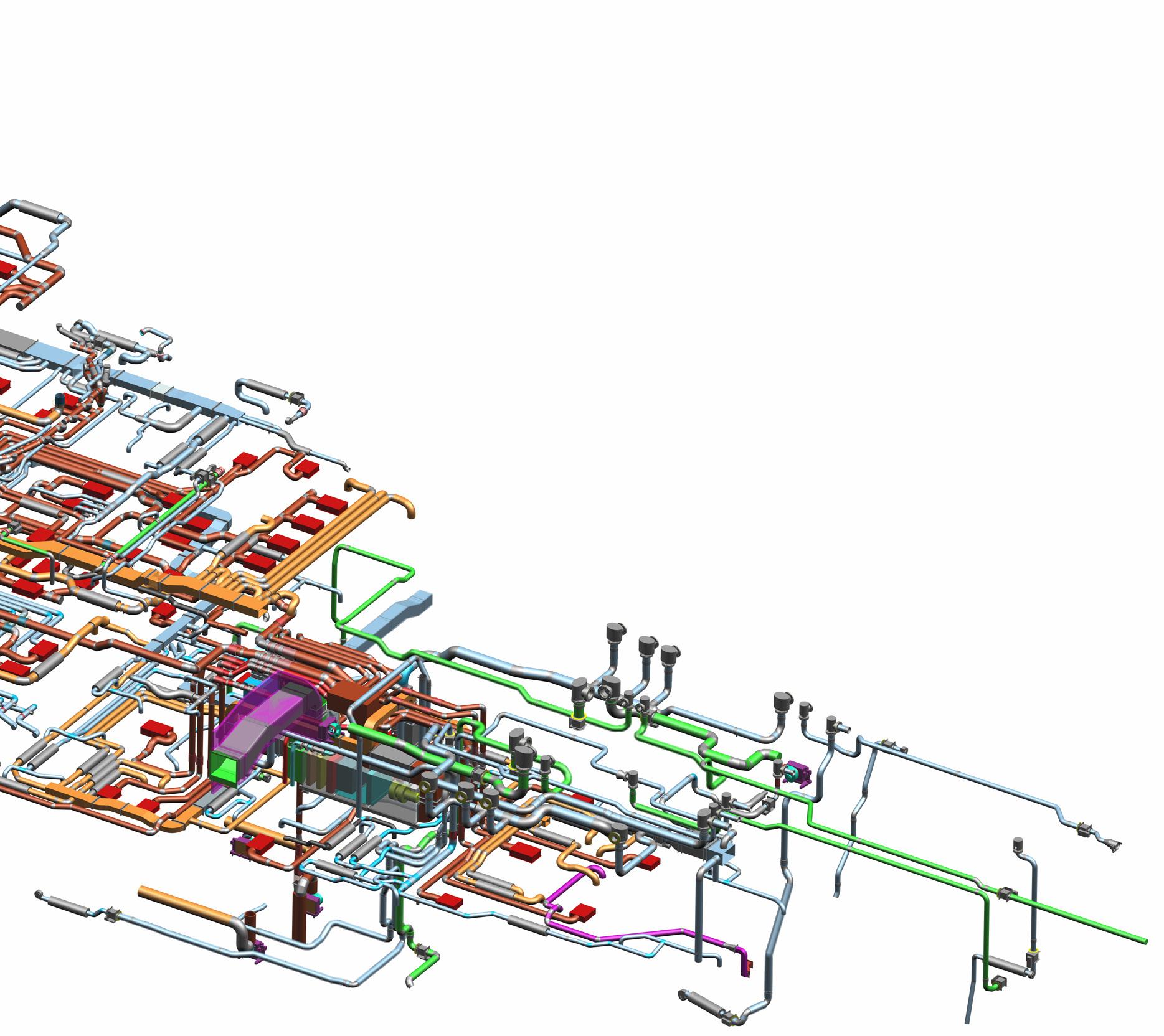
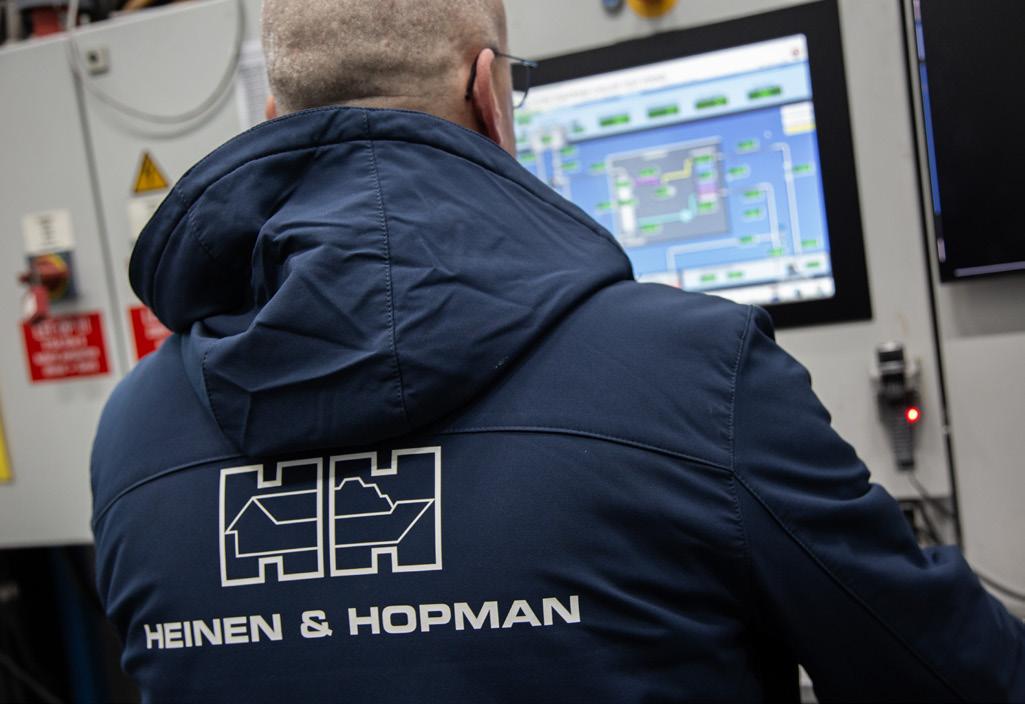
Using waste heat from engines and exhaust systems or fuel cells to warm up cooled air inside the air handling units and for heating is another part of the energy-saving equation. Using water as an energy carrier with the heating coils serving as a water-fed air heater, heat exchangers and electric circulation pumps extract the thermal energy from the exhaust gases and engine/generator cooling systems. Up to 100 per cent of the heat demand is covered by the residual heat from the generators and engines, both pre-heating and re-heating.
All of this might seem quite obvious, but it is surprising how customary modes of thinking and work practices can be slow to change in the superyacht industry. Along with return air recovery, absorption cooling and other measures, Bos believes the future of maritime HVAC is set to be more sustainable, efficient and adaptable than ever before.
“Improving efficiency helps ensure a low e-load balance, resulting in smaller generators, lower fuel consumption and fewer emissions,” he concludes.
“For us at Heinen & Hopman, innovation and smart design are part and parcel of the wider discussion surrounding sustainability.”
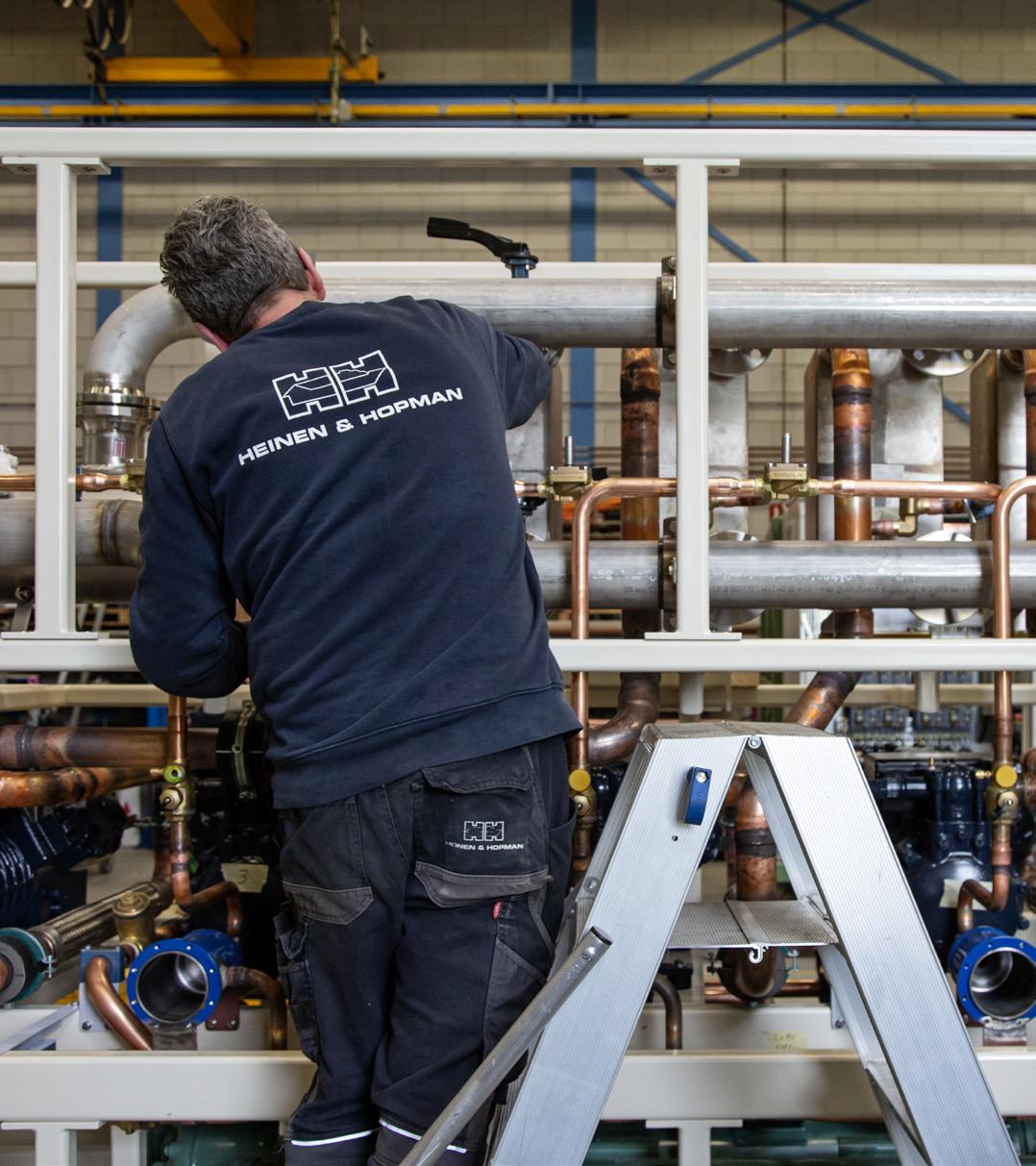


Before establishing his consultancy firm, Bridge Yachting, in 2018, Richard Bridge enjoyed a 37-year seagoing career. Highlights included captaining the 126-metre Octopus after overseeing its build, and serving as operational captain on several iconic superyachts, including the 85-metre Ecstasea, 115-metre Pelorus, 163-metre Eclipse, 138-metre Rising Sun, and as build captain on the 140-metre Ocean Victory. His extensive experience spans operations involving helicopters, private jets, submersibles, and even coordinating a project to locate and film the wreck of HMS Ark Royal off Gibraltar. Today, his four-strong team is managing a major conversion project in northern Europe.
BY JUSTIN RATCLIFFE
“Owner’s representative is an interesting job title as I don’t think there’s a particular skill set that covers everything.”
Was your commercial and cruise ship experience an advantage when you transitioned to superyachts?
There were advantages and some disadvantages. The advantage was that I’d spent four years as a cadet learning the ropes before even taking a watch on a ship. Years of seagoing experience then gave me a really good basis to build on. I suppose a disadvantage, at least at the beginning, was that I didn’t fully appreciate the concept of ‘yacht finish’ and attention to detail. But my commercial experience soon taught me that simply throwing money at a project isn’t enough. You have to focus resources on what is important for the owner. For example, I see no point in having beautiful, stainless-steel mooring bitts if the mooring deck is hidden or enclosed and somewhere the owner will never visit. Commercial grade hardware will do the job just as well at a fraction of the price.
Your first new-build was Octopus in 2003, followed by Eclipse and Ocean Victory
Were you build captain or owner’s representative on those projects?
I did the last 9 months of the build on Octopus and the delivery – too late to effect any significant changes. During the build of Eclipse I was an operational captain in the fleet, so had an opportunity to use what I had learned from Octopus to benefit the yacht ahead of delivery. I was then the shorebased build captain for Ocean Victory. It was great to be involved with those builds and be able to integrate ideas based on my experience at sea. Since coming ashore and setting up my own consultancy, however, I’m more of an owner’s representative and now find myself taking input and ideas from the crew. If you ask ten chefs what they want in a galley, for example, you’ll get ten different answers. So I’m basically the conduit between the owner, shipyard and crew, and spend a disproportionate amount of my time dealing with lawyers!
Nearly all the yachts you’ve been involved with have been over 100 metres in length. Was that intentional on your part?
Initially, my Class 1 certificate meant people were looking for my qualifications and so it was an easy in, if you like. I attained my Class 1 Master Mariner’s certificate when I was 28, although it took a few more years before I was trusted with the command of a vessel. There weren’t many superyachts over 3,000 gross tons at that time, but you could see they were coming. But my biggest job has always been managing the crew and, if I’m honest, from an operational point of view the right size is within that 100-metre mark, because once you go above 45 or 50 crew the dynamic changes considerably. I spent four years as captain on 96-metre Vava II where we generally ran about 35 crew on board, which was manageable and fun. On Eclipse, on the other hand, we were up to 75 or even 85 at times, which is like being back on a cruise ship.
You’re currently working on the conversion of a supply vessel. How does that differ from a new-build from your perspective as owner’s rep?
There is a certain satisfaction in repurposing an existing vessel. We were very lucky to find a donor vessel that lends itself very well to conversion and had been laid up for almost her entire life, so minimum wear and tear. But it’s more difficult in some ways compared to a new build, because you’re starting with an existing platform and any faults that may come with it. You have to be very careful with budgeting by looking at the vessel and working out what you have to replace, upgrade or refurbish while keeping the vessel maintained throughout the conversion period, such as laying her up properly and mothballing the engines so she’s good to go when the work is finished. Once you start dismantling bulkheads you can come across all sorts of things you didn’t expect and that can get expensive, so you have to budget for the unforeseen as well.




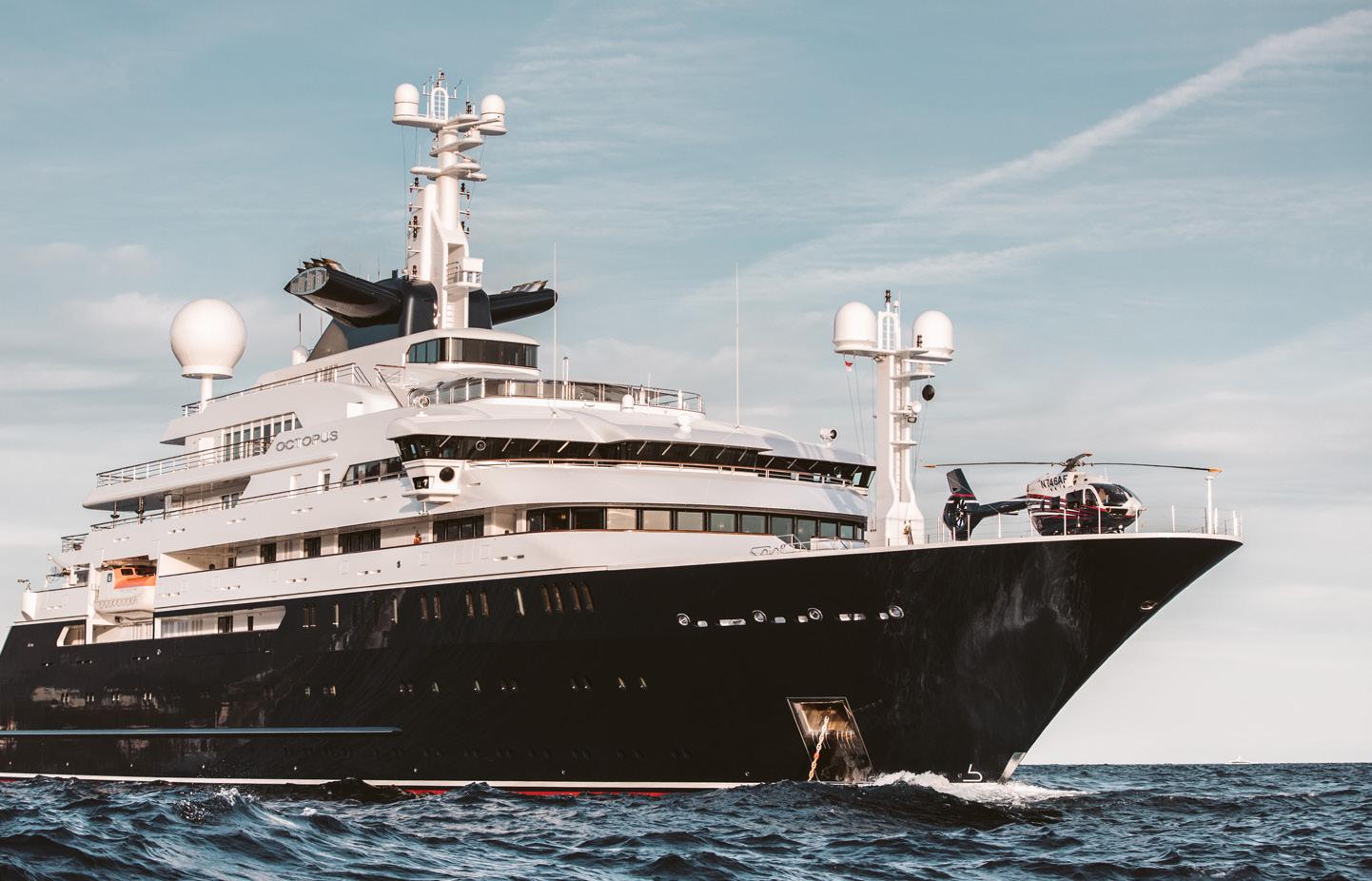
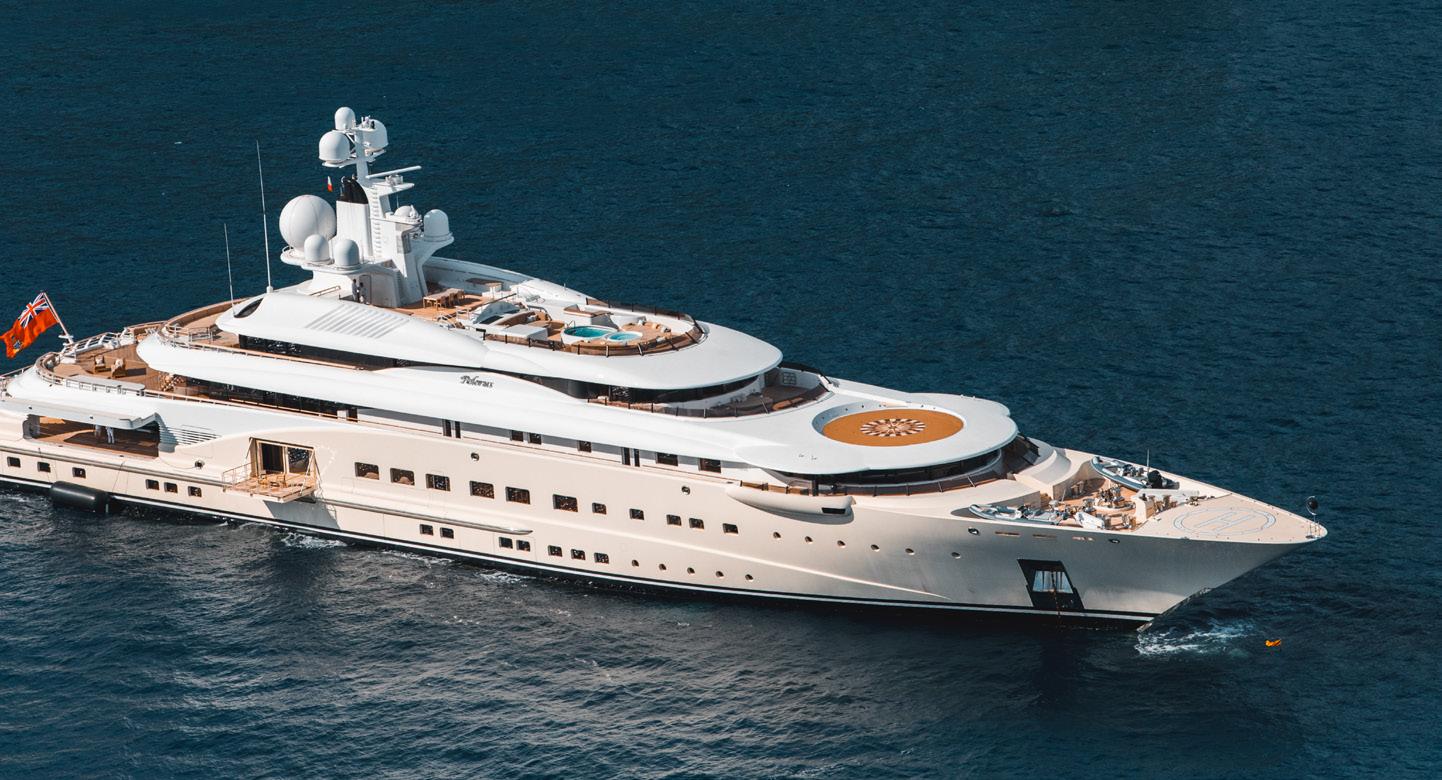
Does it take a special set of skills to be an owner’s rep?
‘Owner’s representative’ is an interesting job title as I don’t think there’s a particular skill set that covers everything, and people that do my job come from all walks of life. I think my background as an operational captain for many years brings a lot of things to a project I thought were missing on builds I’ve been involved with in the past – it’s interesting that even the most respected shipyards sometimes miss stuff. Just as important is being used to dealing with owners. I’ve had close relationships with the owners of the private yachts I’ve worked on and – dare I say it – you learn how to talk to them, put a point across and get what you need for the sake of the project and the benefit of the owner. In that regard, I find the role of owner’s rep very similar to when I was dealing with owners as a captain.
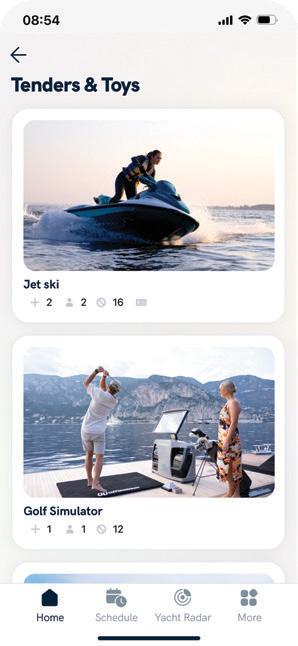
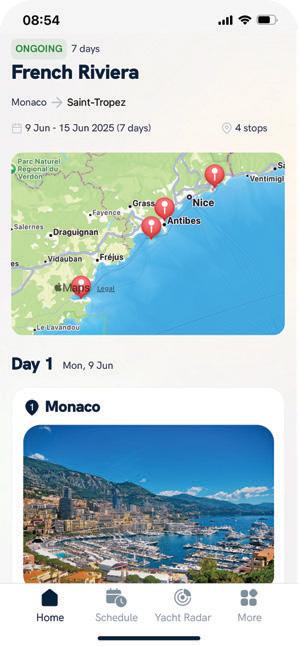
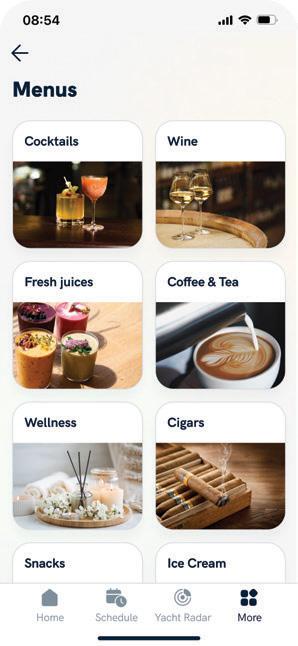
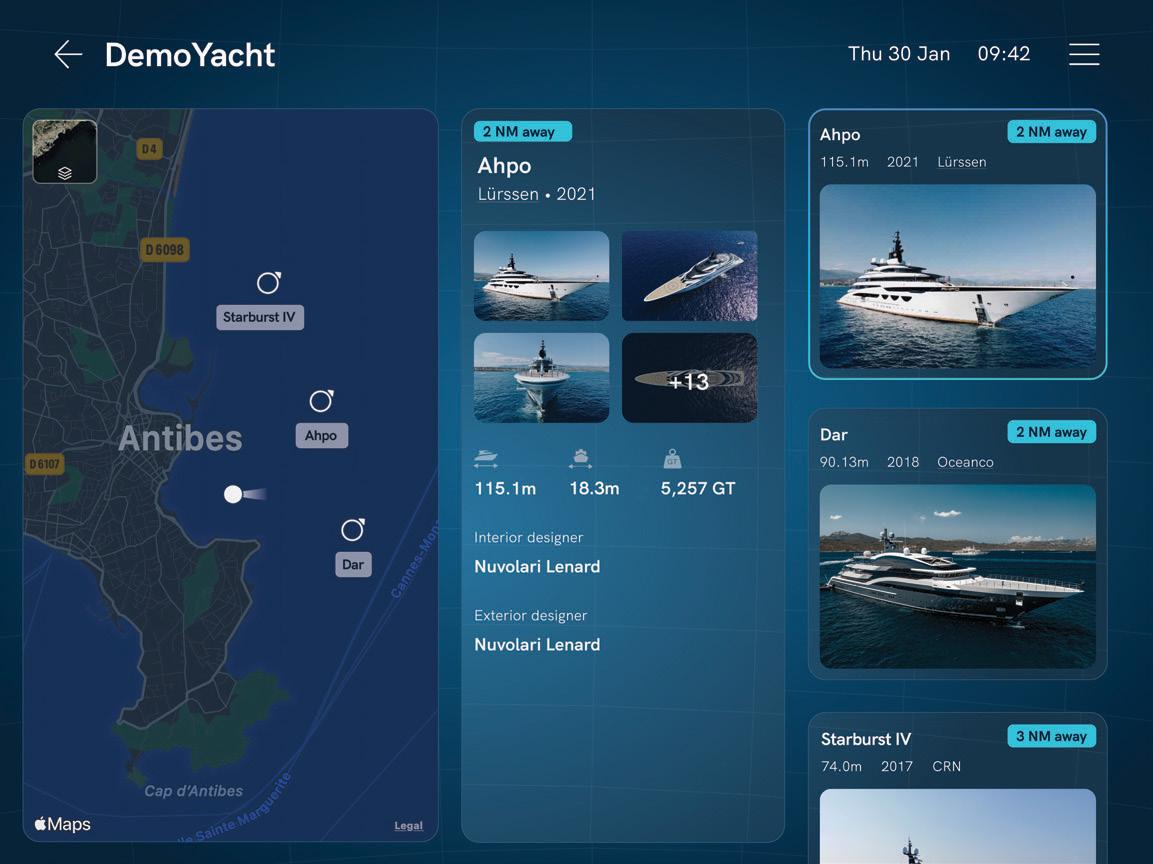
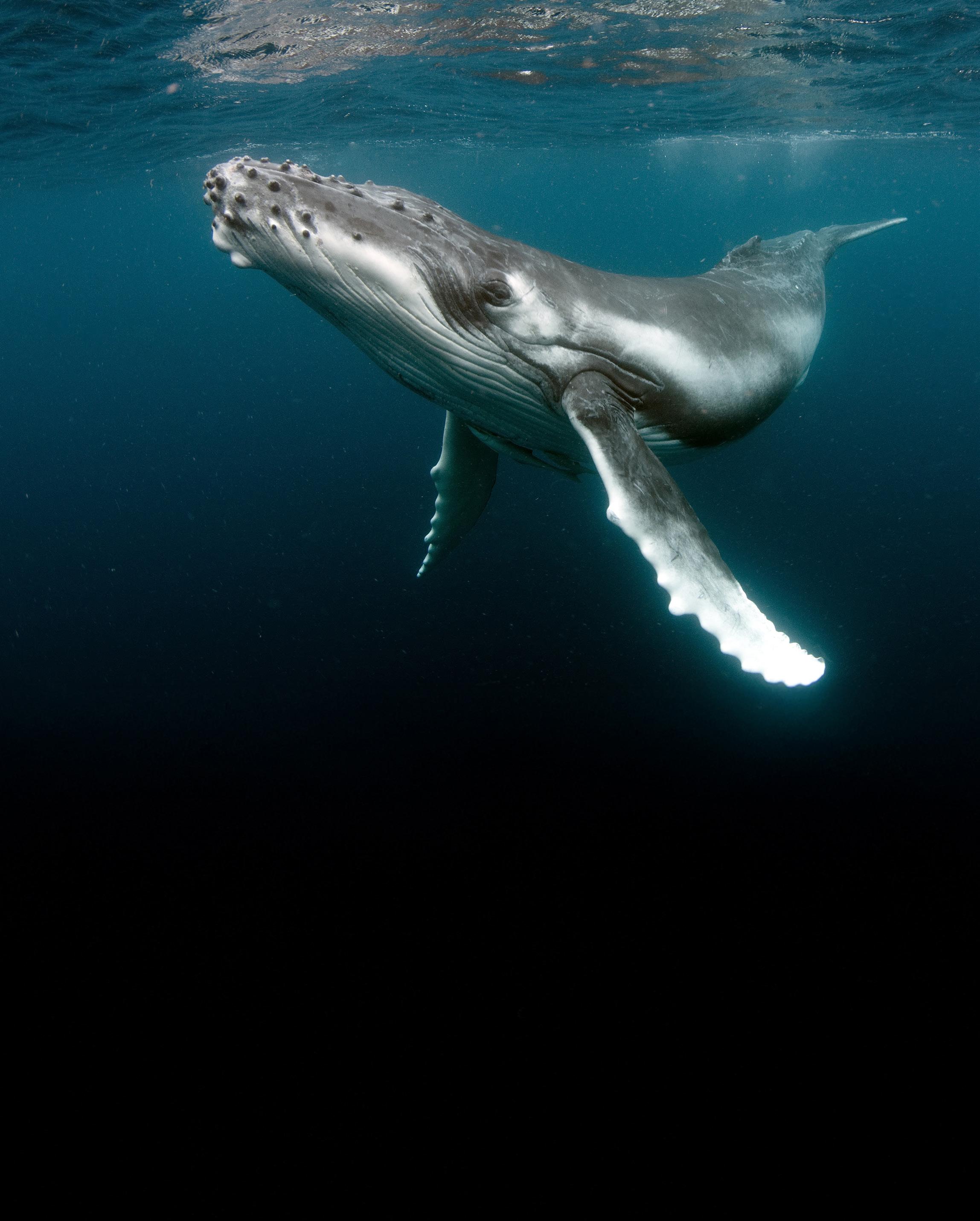
The superyacht sector is often touted as a hotbed of innovation, but not many new ideas make it into the mainstream. From innovative rigs and biomimicry to topological hull design and energy recovery, they need owners with deep pockets willing to take a leap of faith – and that’s easier said than done.
BY CHARLOTTE THOMAS
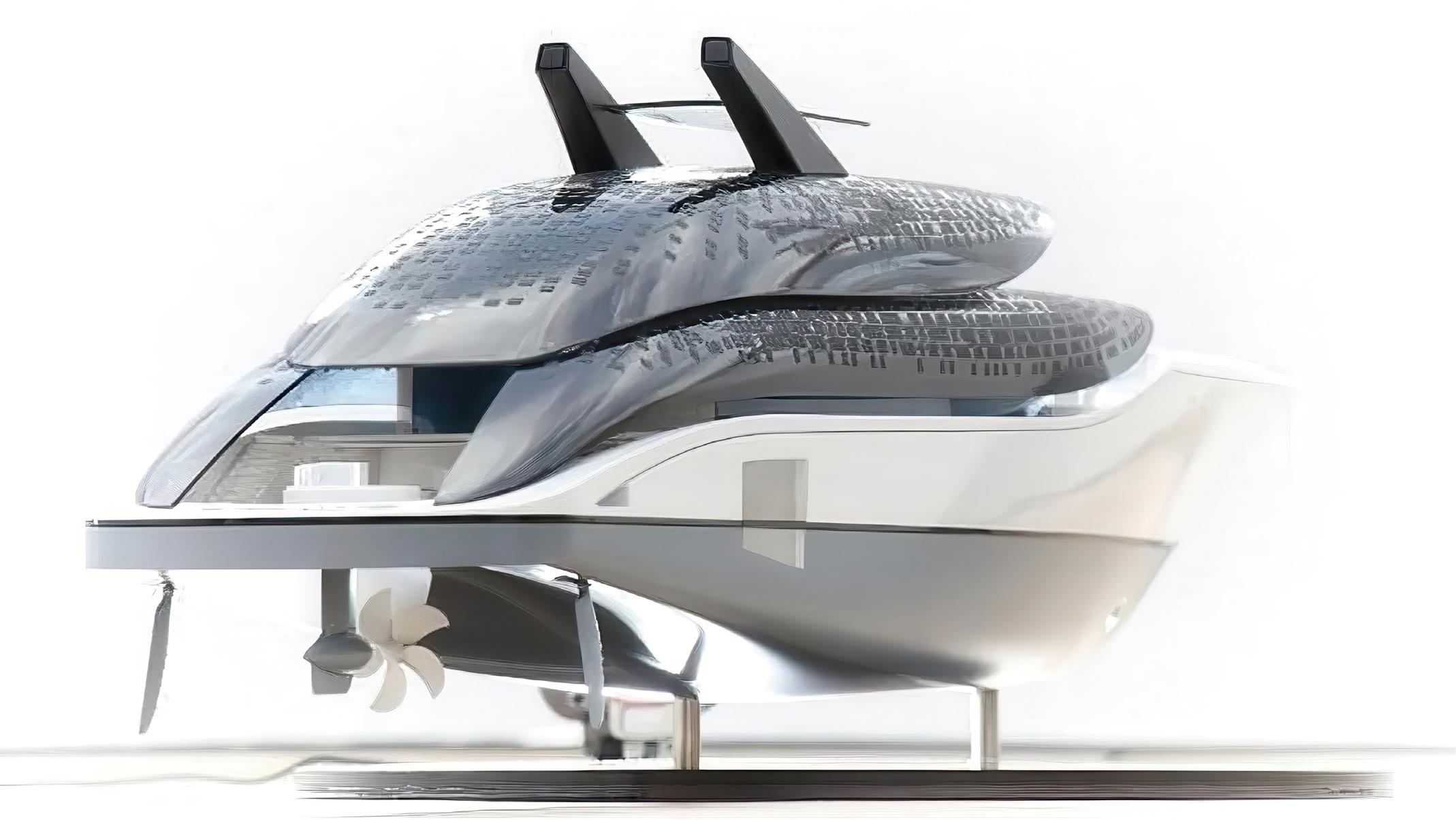
When the Maltese Falcon first took flight in 2006 she proved a point: that when a pioneering owner – in this case Tom Perkins – is willing to push boundaries with designers and engineers to explore innovative ideas, the superyacht industry can realise ground-breaking solutions that have either laid dormant for decades, or open up new tech for future decades.
Fast forward almost 20 years and Maltese Falcon also teaches us that even with proof of concept, some ideas still struggle to break through to the mainstream. The Dynarig, developed from the original 1960s concept designs by Wilhelm Prölss, wouldn’t be repeated until the launch of Black Pearl in 2017. The confirmation last year of a 57-metre Dynarig catamaran in build at Echo Yachts in Australia only highlights the slow uptake.
“Now that there are two demonstrators for the Dynarig we see momentum catching up,” says Mark Leslie-Miller, partner at Dykstra Naval Architects that developed the Dynarig together with Damon Roberts of Insensys and Perini Navi. “I still wouldn’t
go as far as to say that the entire industry is getting more adventurous, although I’d like to think that is the case.”
In the same year that Maltese Falcon was delivered, Feadship unveiled the first of its concept designs at the Monaco Yacht Show. Developed by De Voogt Naval Architects, the idea behind the ongoing series was to develop concepts that blended Feadship’s yacht-building experience with the boldest visions that have yet to see the light of day. From the beginning these concepts were required to meet one key criterion: they had to be buildable within five years.
From morphing decks and clean propulsion systems to reimagining space design and underwater viewing lounges, the Feadship concepts have covered a lot of ground and quickly proved their value. The F-stream concept, for example, set the stage for the energy-efficient drivetrain on Breathe in 2010, which in turn was a direct inspiration for the hybrid-powered Savannah just five years later.
“It remains to be seen if the Dynafin will catch on, but it is further evidence of the opportunities buried in millions of years of evolution.”
Below: ABB’s Dynafin was inspired by the dynamic motions of a whale’s fluke.
Bottom: whale fins were also the inspiration for the tubercles on the rudders of Breathe, Feadship’s first Future Concept (facing page).

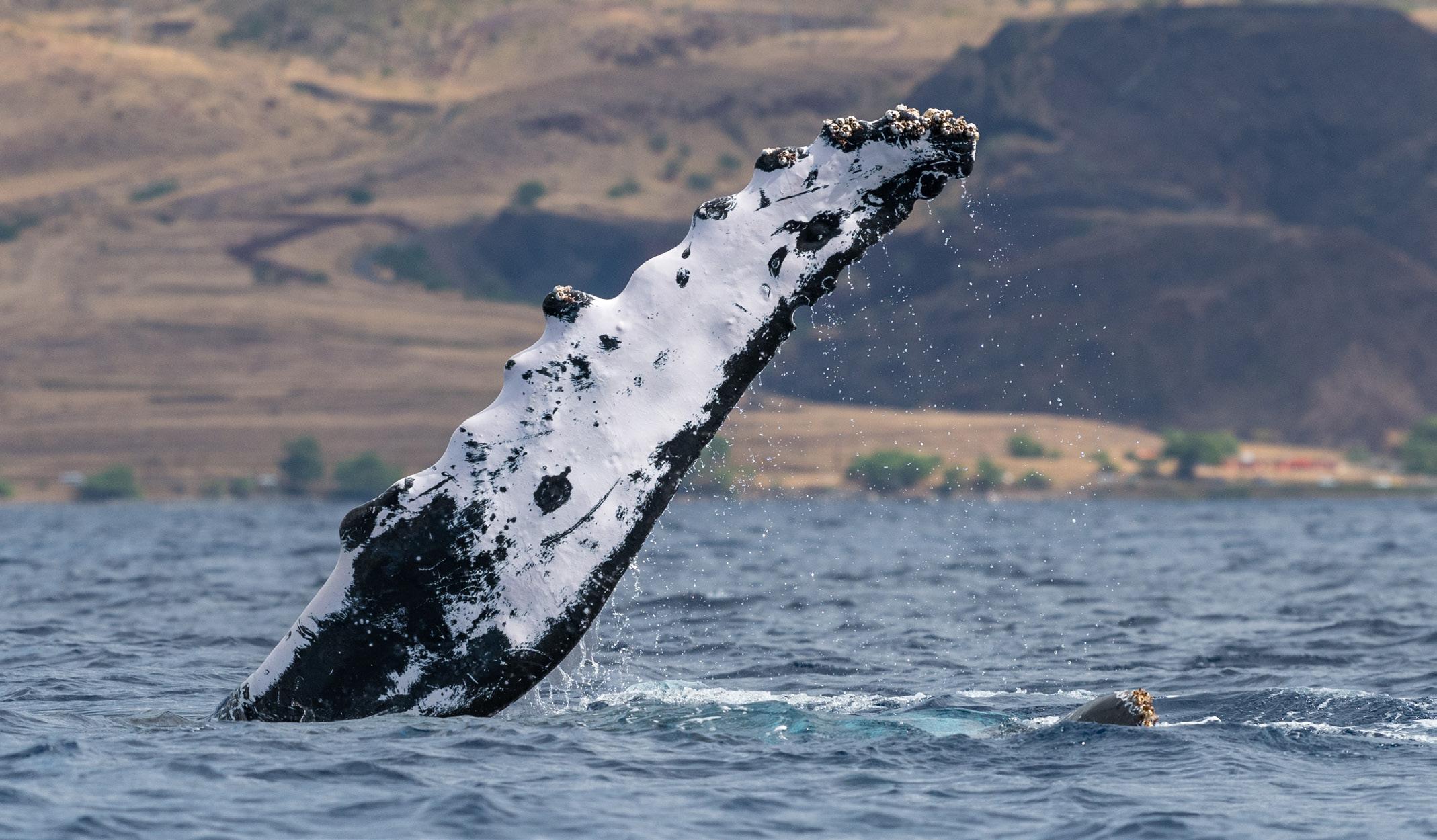
Breathe also drew on another major theme in everything from its superstructure shell design to its propulsors and appendages: biomimicry. Biomimetics – drawing on nature’s evolved solutions to inform structural engineering, energy efficiency and other elements – can be traced back to ancient times. Since then, it has gathered pace – the Eiffel Tower is said to be based on the human femur; the Crystal Palace built for London’s Great Exhibition in 1851 drew on the structure of waterlily leaves to support its 300,000 panes of glass; and Velcro was invented when Swiss engineer George de Mestral studied the small thistle-like burrs that became stuck in his dog’s fur.
Breathe’s superstructure took the concept of skin temperature variations found in a zebra’s stripes to encourage natural air flow and ventilation, but the design also borrowed from marine fauna in its underbody, applying the idea of tubercles – the knobbly protuberances found on the leading edge of humpback whales’ pectoral fins – to increase lift and efficiency of the rudders.
Tubercles have been shown to act as passiveflow control devices in wing form that improve performance and manoeuvrability, and as such are being explored for a range of applications from wing design to turbine blades. For Frank Fish, marine biologist and professor, the first awakening came in the early 1980s when he noticed the leading-edge bumps on a humpback whale model in a gift shop, which made no sense compared to what he knew about fluid mechanics and having a straight leading edge. Intrigued after studying the fins, he reached out to mechanical and aerospace engineer Philip Watts.
“I had already been working in biomechanics so understood the importance of biomimicry,” says Watts. “So I ran some fluid dynamic simulations of wings with and without tubercles and found they increased the lift, and simultaneously reduced the drag – and that’s a spectacular achievement. Tubercles focus the flow between the bumps, and that focused flow helps keep the flow attached to the wing while also helping isolate the lift between the tubercles.”
The pair joined forces with late entrepreneur Stephen Dewar to form WhalePower Corporation in 2005. Further testing on wing prototypes showed 20 per cent energy savings, improved efficiency, more stability and greater durability.
“I had already been working in biomechanics, so I understood the importance of biomimicry.”
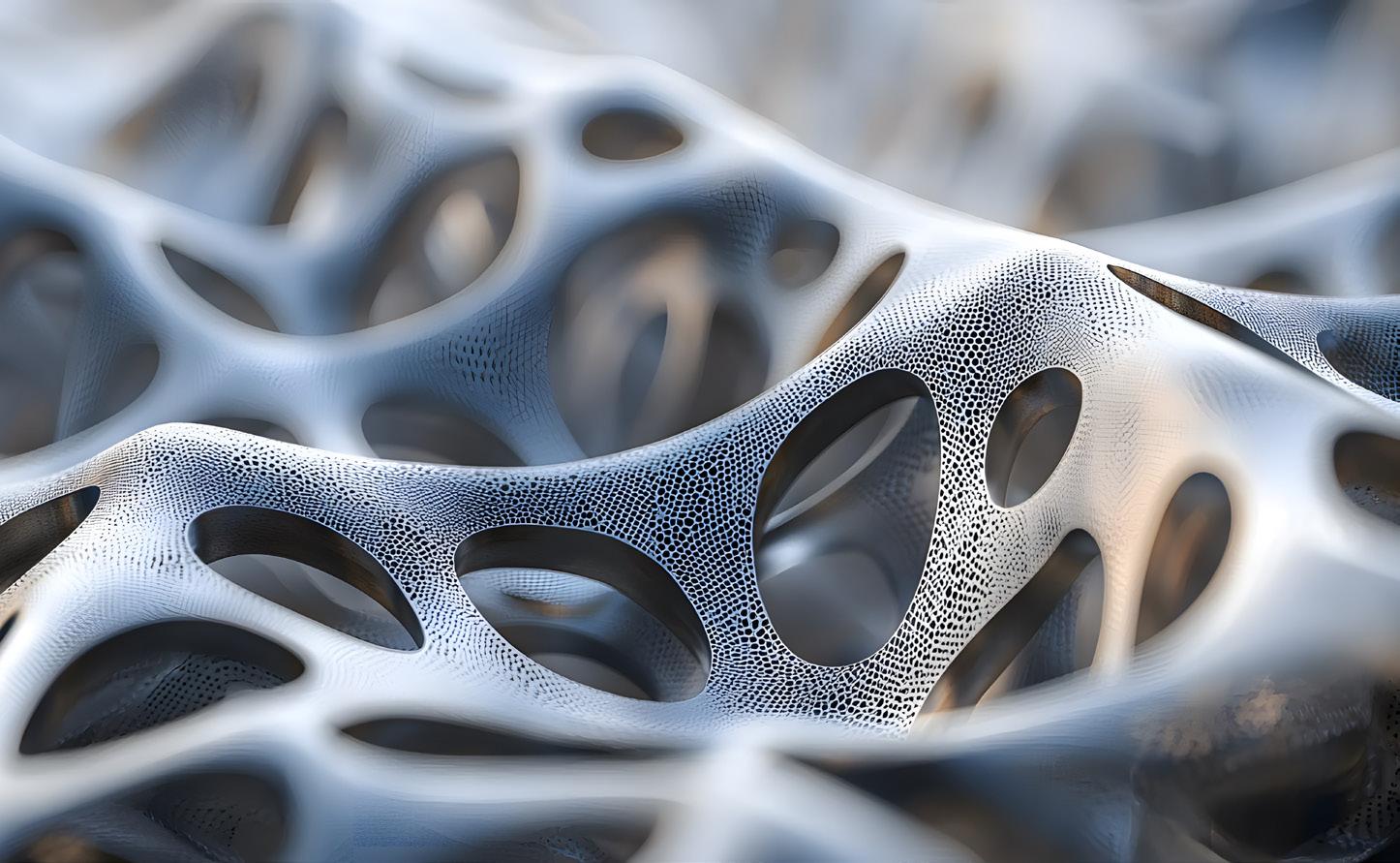
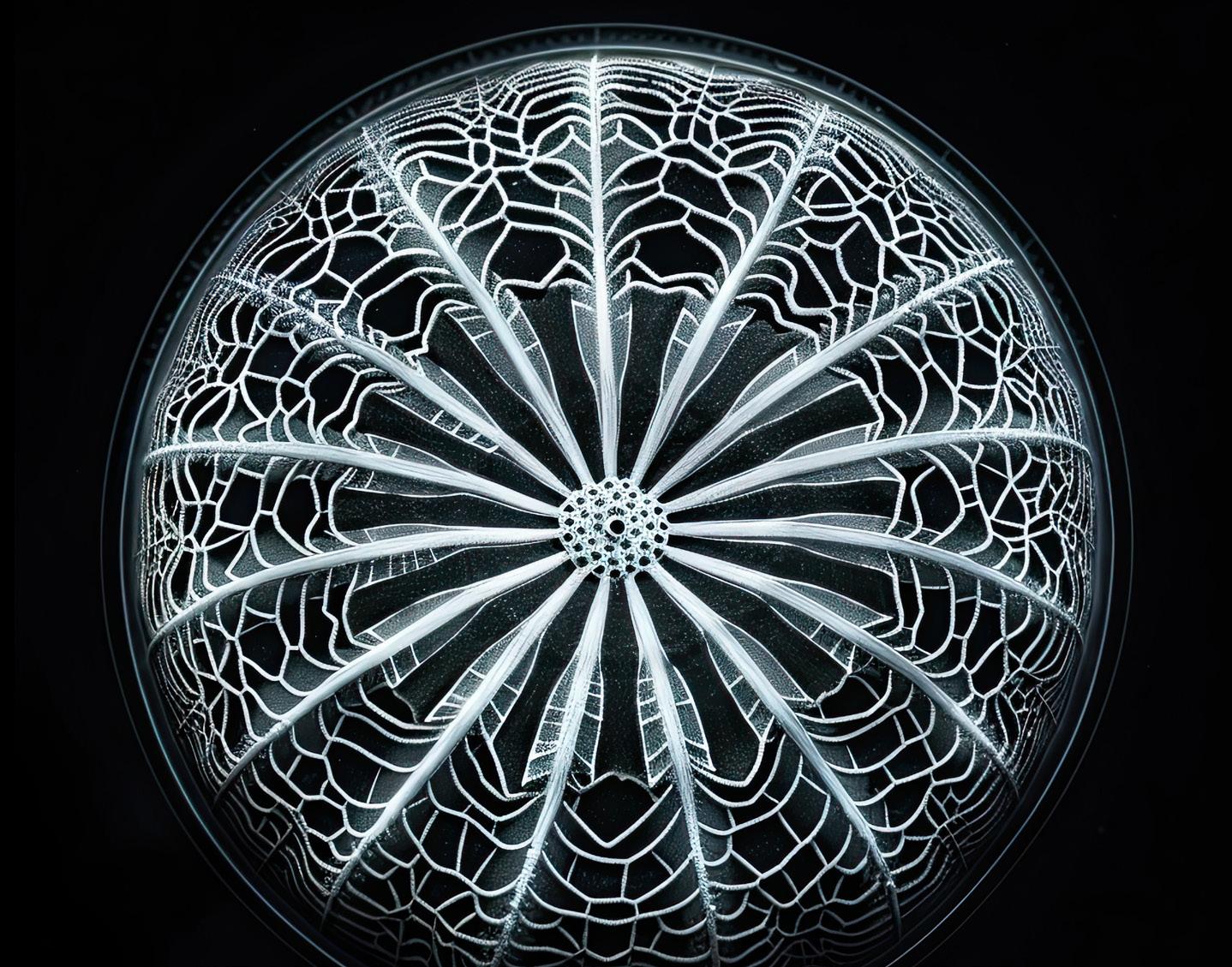
Below: A study of unicellular planktonic organisms known as diatoms resulted in ELiSE (Evolutionary Lightweight Structure Engineering).
Right: CFD analysis by ABMHydro showing reduced cavitation in a ducted propeller that focuses the flow of water between tubercle-like bumps.
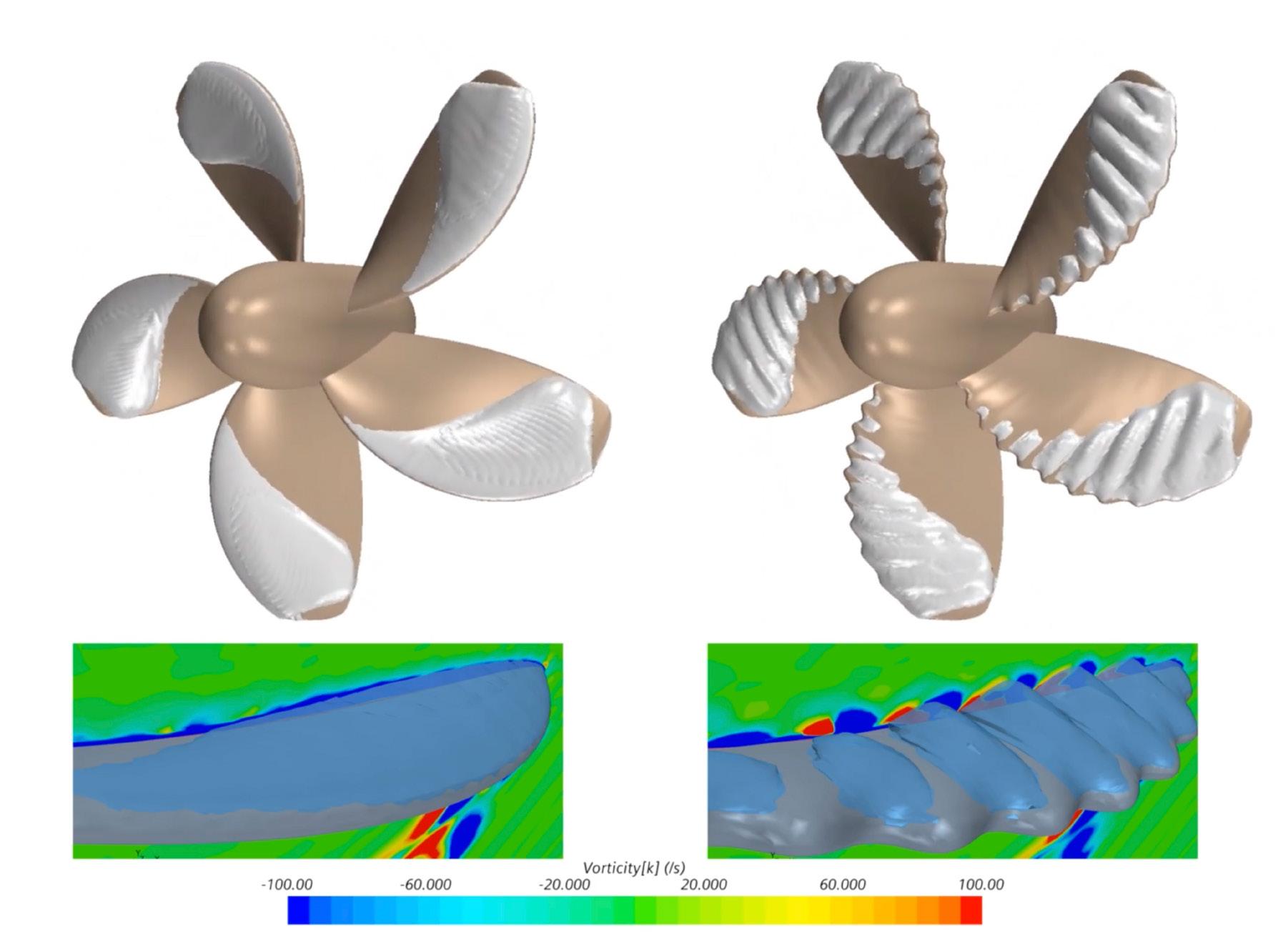
It’s not hard to see the potential applications in yachts, from stabiliser fins to HVAC fans –and propellers. Various research projects on the latter have shown the potential benefits, particularly with regard to cavitation, which both damages propeller blades over time and is a key factor in the propagation of underwater radiated noise (URN) – now a key focus of marine environmental regulations. For example, numbers published by the ABM Hydro (Applied Biometrics Marine Hydrodynamics) group at the University of Newcastle show reduction in cavitation volume in a ducted propeller by up to 50 per cent, while improving propulsive efficiency by up to 6.5 per cent in heavy-cavitating conditions. Tubercles are not the only bio-inspiration making their way into yachting propulsors. In early 2023 Oceanco unveiled its 131-metre concept Aeolus, which features ABB’s Dynafin electric propulsion technology. The Dynafin is a cycloidal propeller system that was inspired by the dynamic motions of a whale’s fluke. It generates thrust using profiled vertical blades that rotate around the axis of a disc plate and around their own vertical axis to change the angle of attack in sync with the rotation of the plate, so that each blade can provide thrust in any direction. Adrien Thoumazeau of Lateral Naval Architects calculates that the Dynafin would save 10 to 15 per cent of fuel
on an Atlantic crossing for Aeolus compared to an optimised azipod system. Feadship also prescribed Dynafins for its 2023 Dunes concept and is working with ABB engineers to develop improvements for better integration in a yacht. The VSP draws on a concept first developed nearly a century ago by Austrian engineer Ernst Schneider, who was inspired by the movement of fish. Cycloidal drives like the Voith Schneider Propeller (VSP) are a simpler version insofar as the individual blades are fixed. VSPs are in use on working vessels and have been proposed for the 70-metre Project Master conversion at Icon Yachts, but Dynafins potentially have more applications in superyachts. As part of an electric propulsion power system, they are also fully compatible with zero-emission technologies.
“Due to the individual blade control you can mimic the whale-tail motion, providing the efficiency gain when sailing at the most probable speeds of 12 to 15 knots,” says Giedo Loeff, head of research and development at Feadship. “The VSP works well for low-speed applications and high bollard pulls, like tugboat operations.”
Formally unveiled in May 2023, it remains to be seen if the Dynafin will catch on, but it is further evidence of the opportunities buried in millions of years of evolution.
In 2015, Dykstra Naval Architects and Claydon Reeves unveiled a striking 46-metre sailing yacht concept called Exo, which featured extensive use of glass in the hull thanks to an extraordinary hull structure quite unlike traditional frames and longitudinals. The idea originally came from a German intern specialising in topology optimisation.
“He got inspired and asked if we could see an application for this cool new technology,” says Leslie-Miller. “It led to us tackling that structural challenge of having a large piece of glass in the topsides and deck and using topology optimisation to design around the stresses inherent in a sailing yacht.”
Topology optimisation is a mathematical approach that optimises material use within a given design space for a given set of loads and boundary conditions. By combining this with the idea of bio-inspired design, it is possible to create unconventional structures that combine
light weight with structural strength. The study partner for Exo was the Alfred Wegener Institute in Bremerhaven, Germany, whose research has focused on the complex shell structures of diatoms, unicellular planktonic organisms, and their application in structural design. The result was an initial implementation in 2005 of ELiSE (Evolutionary Lightweight Structure Engineering) as a systematic approach to design. The Dykstra team inputted data on load paths through components such as the stays, shrouds and keel box, and then let the software do its magic.
“What we saw very clearly was that a lot of the force goes into the beam shelf, which is generally a very stiff element,” explains Leslie-Miller. “The challenge was that we wanted to have a big glass opening across that boundary, so the topology optimisation was used to lead the forces around that glass. From that we did a full FEM analysis of


the structure, which showed that this was a very effective and efficient way to make this particular concept feasible.”
Leslie-Miller admits that the combination of topology optimisation and biomimicry for the overall hull structure won’t replace conventional design outright, in part also because of the added cost, but that doesn’t mean it couldn’t have interesting applications aside from alternative hull designs. One area might be large bimini structures, which need to be lightweight but can be tricky to design because there are several load conditions to consider.
“I think wherever there is a clearly defined set of load cases it could be super interesting,” he says. “For example, in a retractable keel that always presents a structural challenge with clearly defined load cases such as grounding with the keel fully down. You could optimise the structure around that load path to make it as lightweight as possible.”

“The challenge was that we wanted to have a big glass opening, so the topology optimisation was used to lead the forces around that glass.”
With energy efficiency and carbon neutrality ever higher on the agenda, Giedo Loeff is proposing the Hammerhead – a pair of retractable fins located aft of the anchors that serve as stabilisers, but also harness wave energy to feed into the yacht’s grid. The idea features alongside the methanol hybrid fuel cell and battery power system in Feadship’s latest concept design, 75-metre C
“When I was working at the Maritime Research Institute Netherlands (MARIN) back in 2007, I was investigating how to regenerate wave energy,” says Loeff. “There are ship’s motions that are excited in waves, and the Holy Grail is to be able to reduce those motions and generate electricity at the same time. But designing a system like that is not so simple, which is what this concept is about.”
Complicating the design is the fact that the fins have two axes of articulation –rotational, which is the conventional way a stabiliser fin adjusts its angle of attack, but also vertical, which provides the motion that can drive a generator.
“There’s a massive force associated with the movement, because in the foreship where the fins are located their motion relative to the water will be quite substantial in any significant sea of, say, one to two metres, which is a very probable scenario,” says Loeff. There are further benefits of the system, because besides reducing motions and generating electricity, you’re also reducing resistance – energy is lost in the motion of a ship, so reducing that motion means less propulsion power is needed. Loeff’s solution would primarily be for use under way as opposed to at anchor, and it would be a standalone active system that would negate the need for separate stabilisers.
“The mechanical design presents the difficulty, because you would have very high torque and forces acting on the bearing systems,” he says. “You would need to control the angle of attack of the fins to prevent a stall and ventillation, and that would need to be active control based on the motion, so it won’t be easy, but it’s not something we feel is impossible.”
Loeff suggests that yachts between 40 and 100 metres are the ideal platform for the technology as they fit into the typical wavelength of seas that yachts most commonly come across. The predictions for energy produced are also striking: 60 to 80 kilowatts for a yacht like C in the seas it would encounter on an Atlantic crossing, plus a further gain in propulsive energy. Putting it into perspective, Loeff suggests it could cover around half the hotel load.
Although some CFD work has been done, the system has not yet been put through more detailed design iterations, which would be for the likes of suppliers like Kongsberg, SKF or Quantum, which is also a reason why Loeff pushed the idea out through LinkedIn with posts that garnered considerable attention across the industry.
“Much like we don’t develop fuel cells in-house, what we’re looking for is this combination of client and supplier to make the next step, which would be the conceptual design of the mechanical parts or further proof of concept through model testing.”



























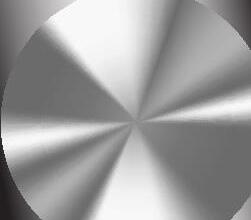





















































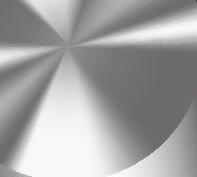


















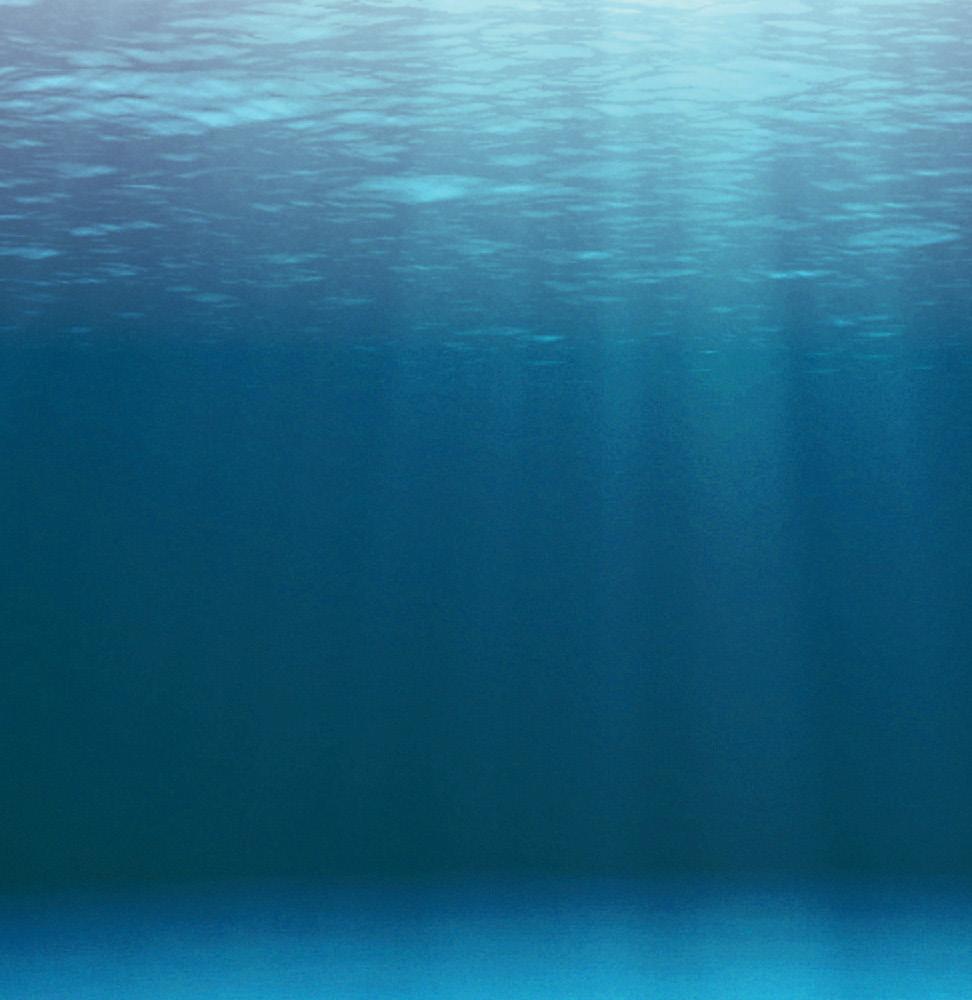



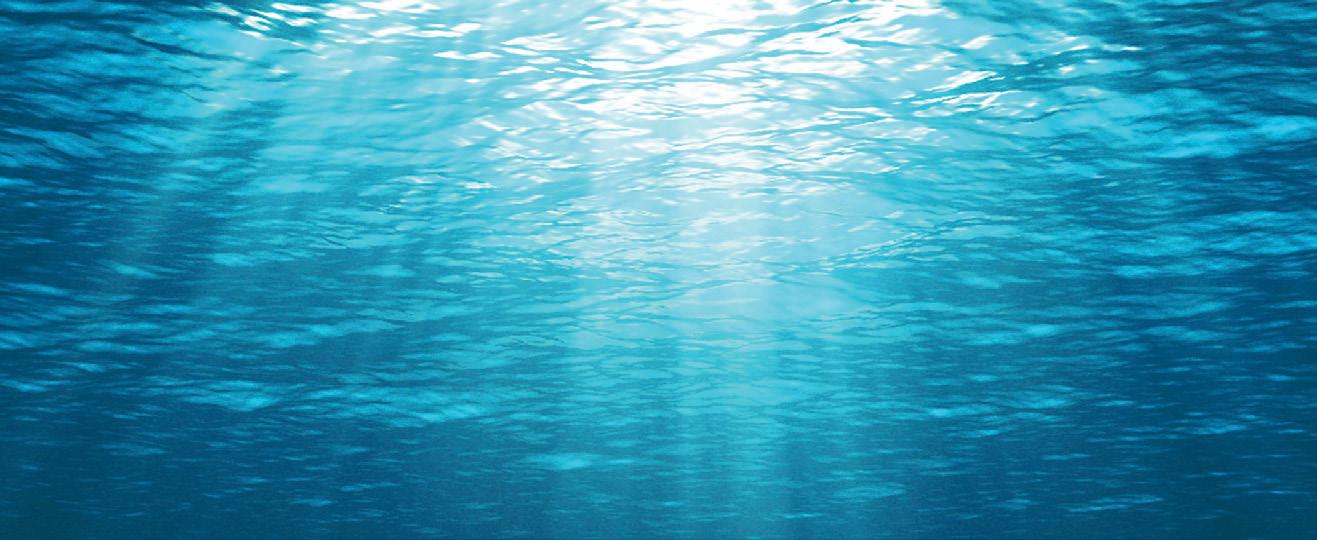















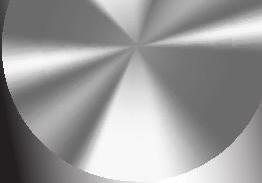









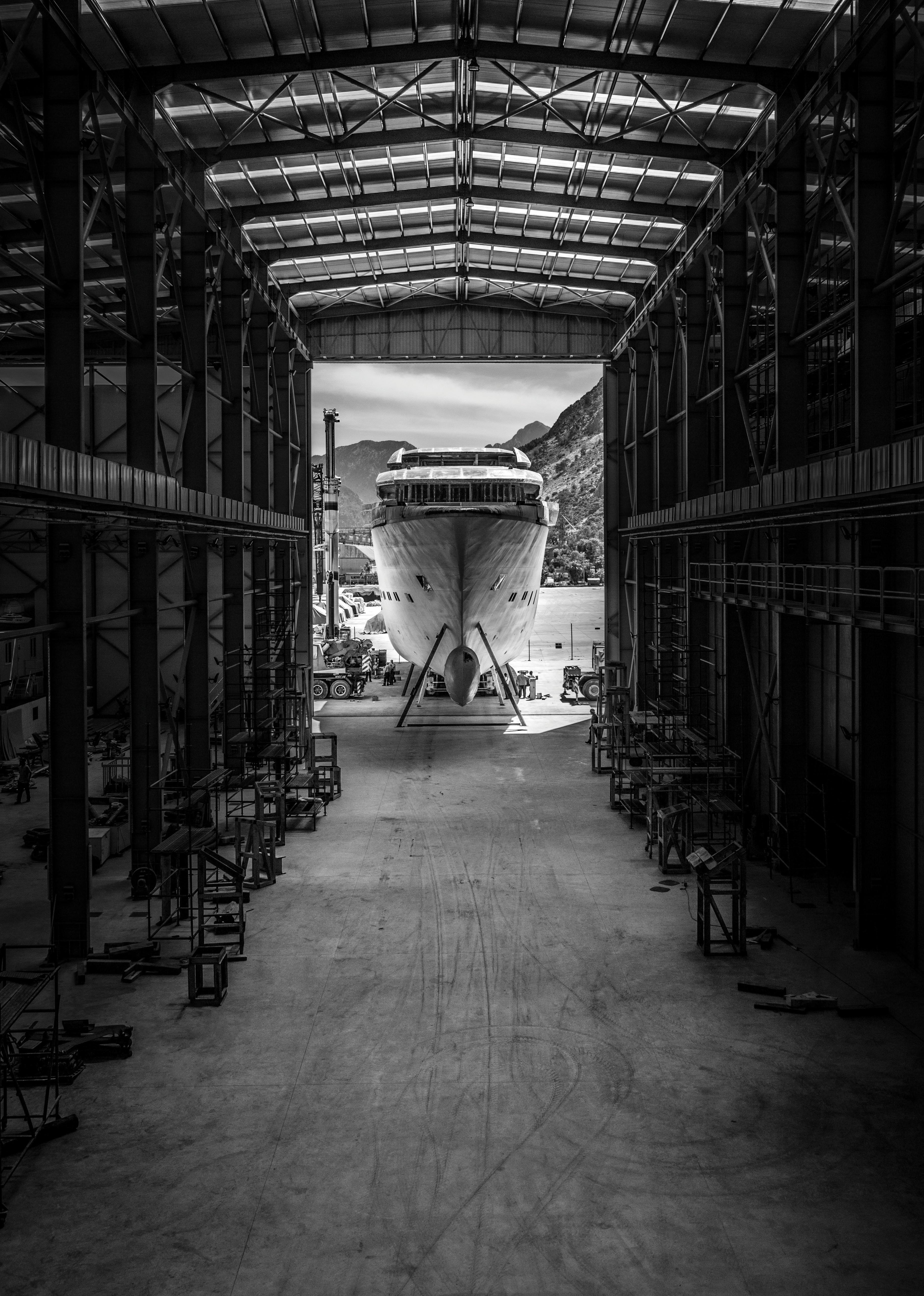

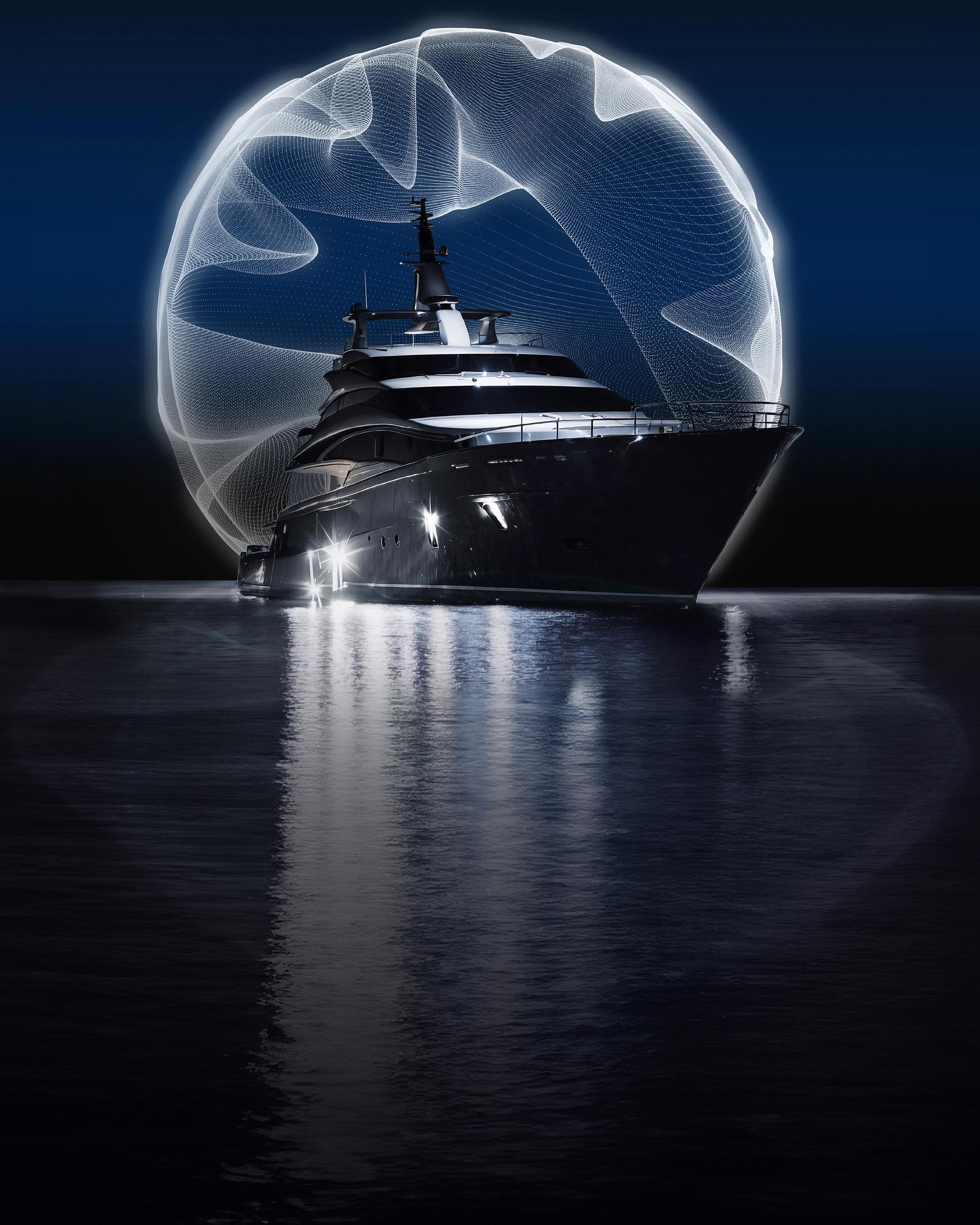
There are few topics as likely to divide a room as artificial intelligence. But beyond the gimmicks, pitfalls and burning ethical questions, it has serious potential to transform the superyacht industry.
BY CHARLOTTE THOMAS
As AI pervades every aspect of our daily lives, from Siri and Alexa to the Internet of Things, smart home domotics and online shopping recommendations, you might be wondering how the advances being made in AI are relevant to what we do in the superyacht industry? In fact, AI can already be found in all sorts of applications, from shoreside yacht management software to collision detection systems — while the rise in sensor data has ushered in machine learning for predictive maintenance. But one area in particular has garnered the headlines: design. Olesinski Naval Architecture based in Cowes has been a pioneer in the development of AI in yacht design, having taken its tentative first steps a decade ago. Since then, working with research fellows from the University of Southampton and, subsequently, with The Alan Turing Institute, the studio has incorporated AI into several areas of its workflow, including the optimisation of interior layouts. The idea was not to see if AI could replace designers, but rather how it could serve as a tool to speed up the design process – by eliminating design dead ends, for example – or inspire alternative solutions. These AI functions took a big step forward with advancements in large language models (LLMs) capable of understanding and generating natural language and other types of content to perform a wide range of tasks.
“These models have grown far more powerful, are now context-aware and, most importantly, accessible,” says Bill Edwards, head of R&D at Olesinski, who believes they are fundamentally transforming how we interact with technology. Tasks like research, ideation, code generation, and problemsolving can now be approached with significant assistance from AI-driven tools.
“The influence of AI is seen in the software and systems we use daily, making everything from routine communication to complex technical work faster, and more intelligently,” he says. “Multi-modal AI capabilities are also accelerating. Text-to-image and imageto-text models, as well as voice and videobased systems, are transforming creative and interpretive workflows, and for a designcentric field like naval architecture this evolution holds tremendous potential.”
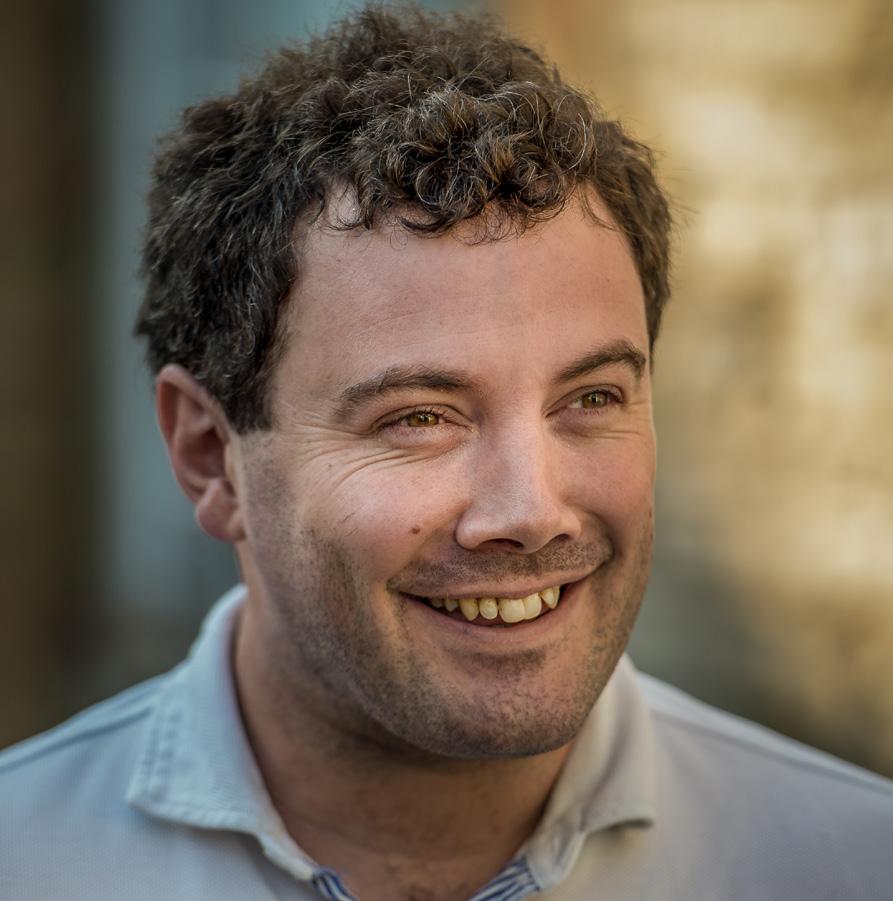
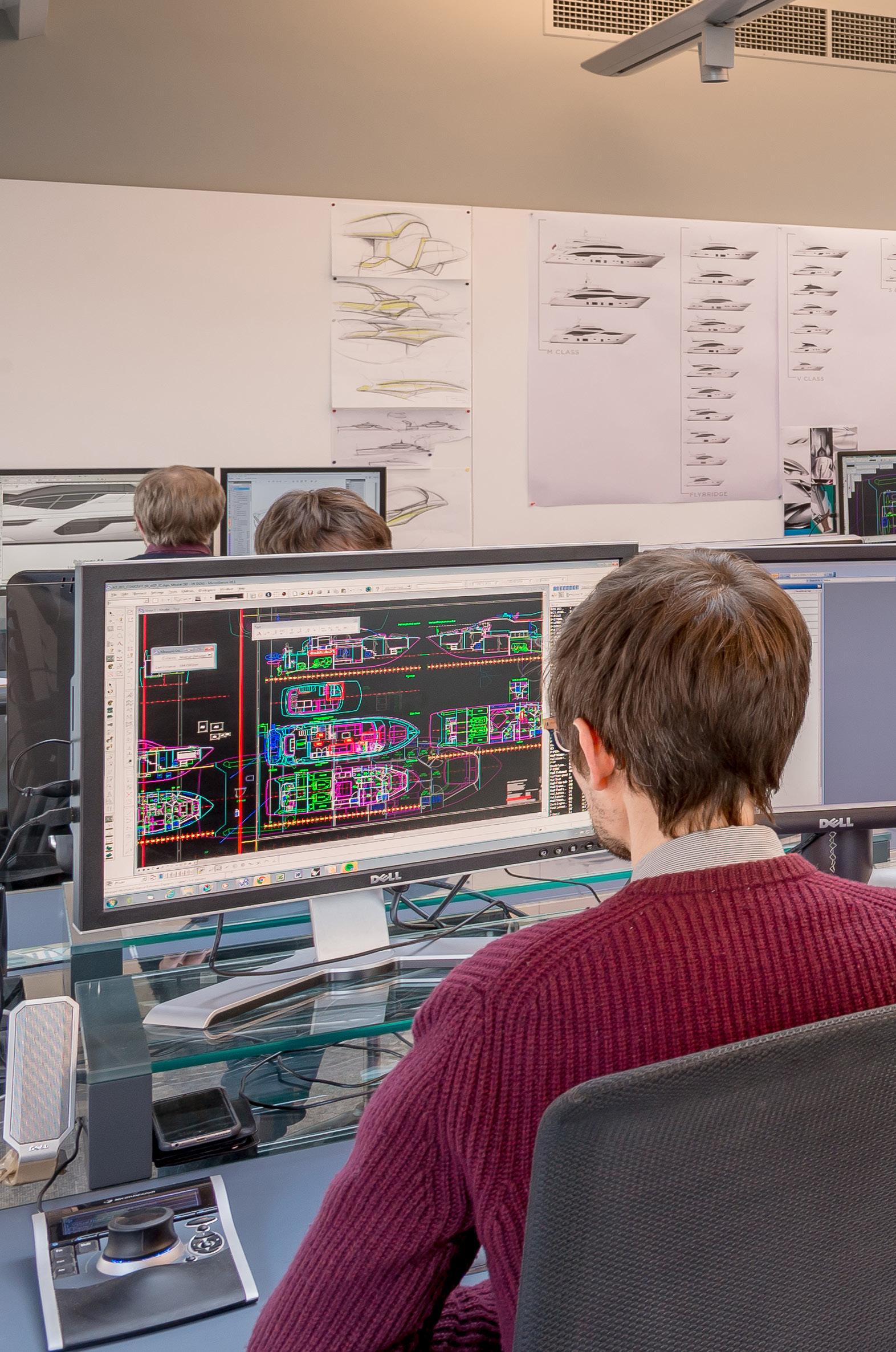
“Tasks like research, ideation, code generation, and problem-solving can now be approached with significant assistance from AI-driven tools.”
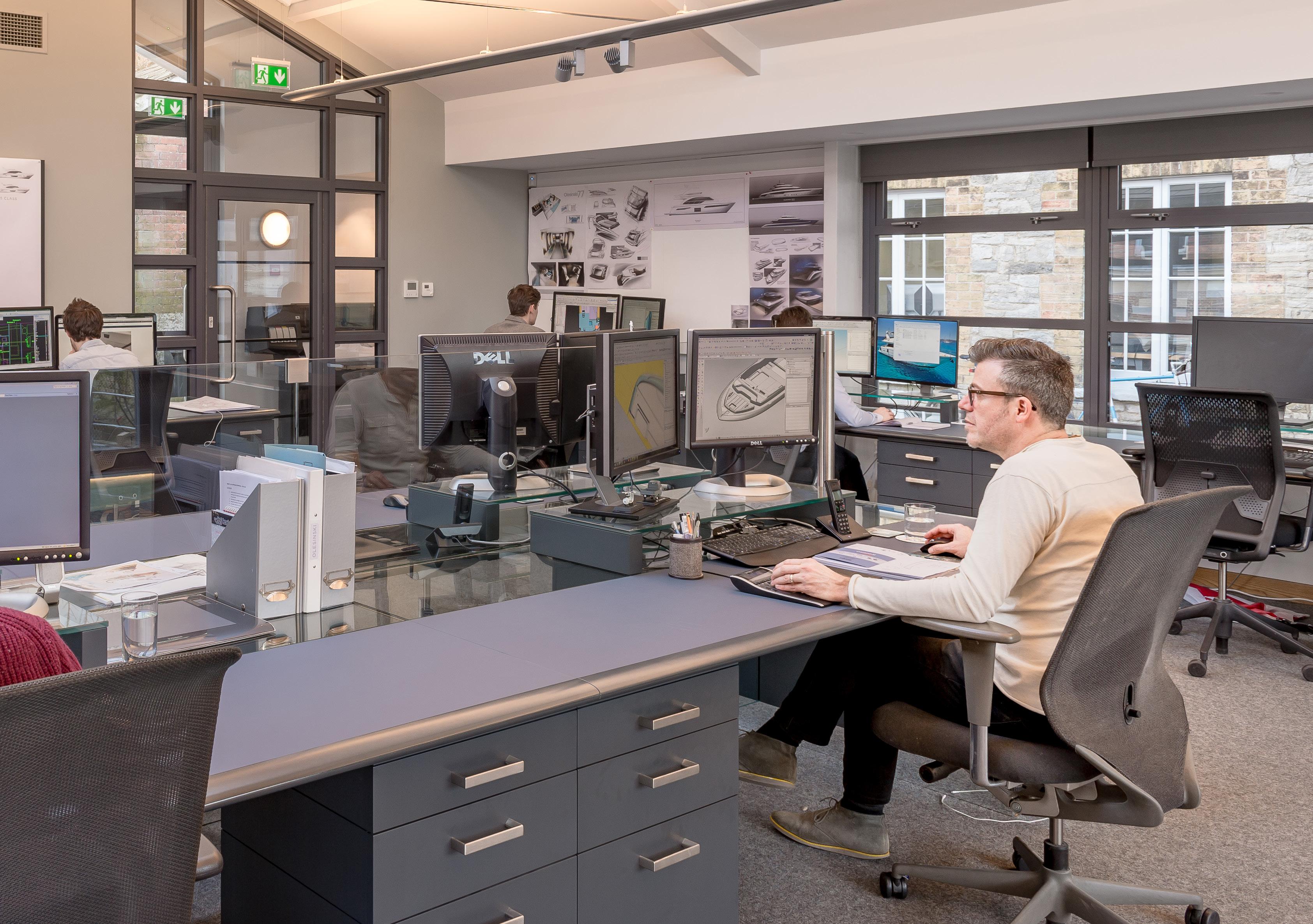
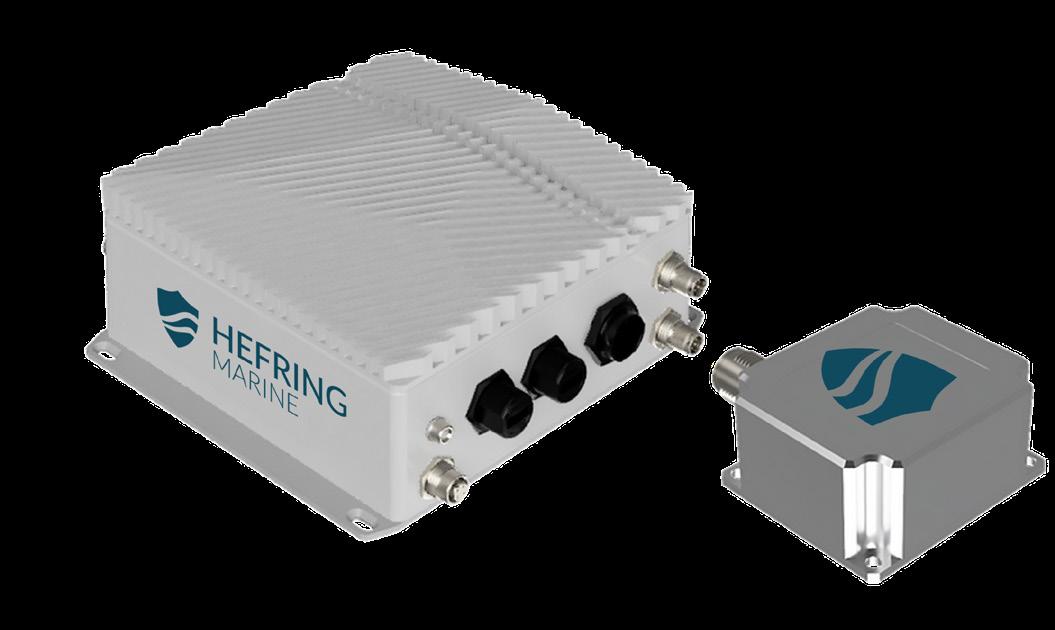
As these technologies become increasingly integrated into CAD and simulation software, we will likely witness more seamless, AIdriven concept exploration, optimisation and validation cycles. What’s more, rather than just making headlines with interesting but wholly unfeasible yacht concepts, generative AI could play a significant role in more technically oriented design.
“One of the most complex aspects of yacht and ship design, as well as one of the most timeconsuming, is the routing of distributors – pipes, ventilation ducts, and cable trays – but also the interaction of distributors with other elements and equipment, the fulfilment of regulations, and the objective of optimising design, fabrication and assembly,” offers naval architect Dr Rodrigo Perez Fernandez, senior director of software engineering at Siemens Digital Industries Software, and professor at the Marine Engineering School at the Technical University of Madrid. “The application of AI techniques will assist the designer in taking decisions and adopting routings that both optimise the design and minimise the design time.”
Powerful search and optimisation algorithms are available to assist with these problems. An example algorithm is cMLSGA developed at The University of Southampton, which is at the heart of one of Olesinski’s systems and is used widely in ship route planning optimisation software. Alongside LLMs, development of large quantitative models (LQMs) will also have an impact on the more technical aspects of design. LQMs are not based on learning from language, but through physics, formulas and theories.
Edwards also points to the development of large quantitative models (LQMs) as another big step forward. Building bespoke, computationally efficient models for decisionmaking around hull design performance, whose success depends less on the volume of


data, is something the studio is exploring in collaboration with The Alan Turing Institute. “The idea is to creatively combine knowledge of physical principles with machine learning techniques to develop so-called surrogate models that replicate the results of computationally expensive fluid analysis,” says Edwards. “This advancement promises new opportunities for innovation in hull performance through faster design optimisation.”
“We recently had an introductory meeting with a start-up with whom we believe we can run breakthrough, AI-based CFD in the future,” adds Marnix Hoekstra, co-creative director at Vripack. “It’s not proven yet, but there’s no question it will happen. And we’re already using AI as a tool of the trade and for inspiration.”

As designers turn to AI and it becomes more deeply entrenched into CAD software, it stands to reason that shipyards could also take advantage of the tech. Indeed, AI is already playing a role in industrial automation, and many aspects of that are applicable to the superyacht segment.
“The shipbuilding industry is increasingly embracing AI and related technologies to improve several aspects of ship design, construction, operation and maintenance,” says Dr Fernandez. “And while it may not be fully integrated in all shipyards, there has been notable progress in adopting AI solutions.”
AI algorithms can analyse huge amounts of data, including historical design data, performance metrics and environmental
Facing page, top: Hefring’s IMAS control unit collects and processes data, while the small inertial measurement unit (IMU) tracks the speed and orientation of
factors to suggest more efficient and innovative ship design, manufacturing and production. Notably, AI-driven automation is being employed in many yards to streamline manufacturing processes.
“Robots and AI-powered machines can perform repetitive tasks more efficiently, reducing production time and cost,” continues Dr Fernandez. “Additionally, AI can be used for quality control, and even to pass on knowledge as experienced older workers leave.”
Harnessing AI as part of the design process to optimise technical design clearly implies a more holistic approach to the concept and construction workflow. It is perhaps particularly pertinent for production builders looking to streamline their assembly lines, but also for custom builders looking either to reduce tooling for one-off parts, or offer reduced delivery times through simplified component design. For example, AI is used in Enterprise Resource Planning (ERP) software to help streamline core business processes such as finance, HR, manufacturing, supply chain, sales and procurement.
“For us, the use of these techniques has certainly had an impact on the way we design, engineer and optimise aspects of the projects we work on,” says Edwards, but adds a caveat: “The data needed to train and inform systems certainly exists, but structuring this data and architecting the systems to tackle problems still represents significant effort. Their success or failure depends entirely on the quality of the problem presentation, and on how sophisticated the approach is in representing it in terms of these variables, constraints, and objectives.”
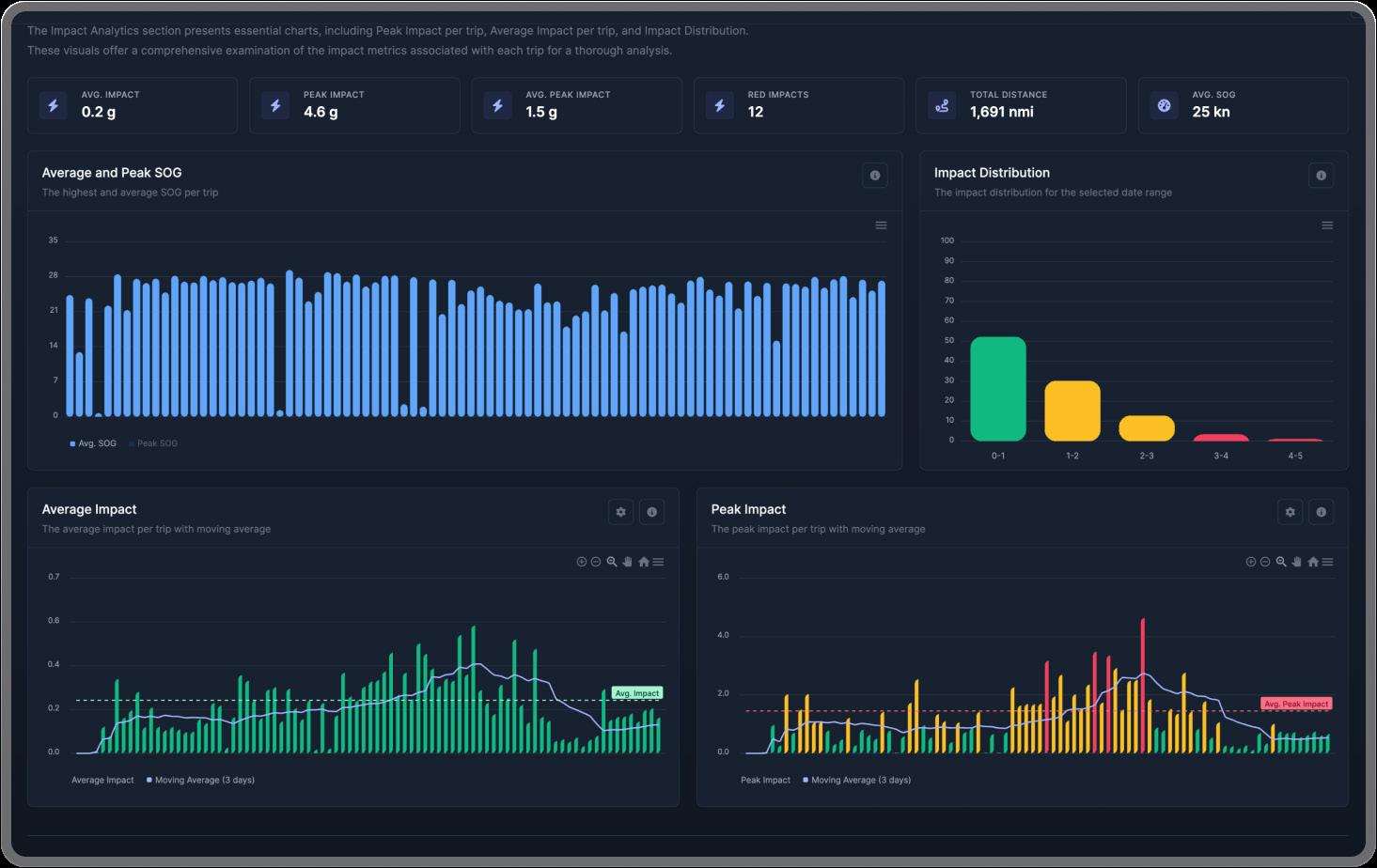
AI in the operational phase of a superyacht has been around for a while, in particular for the predictive maintenance of mechanical systems. But the advent of new hybridelectric yachts introduces more scope for AI in energy monitoring, highlighted by Rossinavi’s 42.75-metre Seawolf X
The catamaran has an AI system developed by Videoworks in collaboration with the University of Pisa that essentially serves to monitor energy consumption and usage on board, as well as the status of the yacht’s energy reserves. By creating different user profiles, the system can recommend different courses of action to maximise energy efficiency and mitigate both energy usage and environmental impact, while also flagging up when the power grid is at capacity, so crew activities such as laundry operations can be delayed in order to prioritise guest requirements. It works by tapping into the yacht’s existing systems architecture.
“On a yacht you have a lot of very hightech systems, each optimised and each with sensor actuators,” explains Sergio Saponara, director of the Department of Informational Engineering at the University of Pisa. “The idea is to create a sort of manager that grabs the data coming from the different
subsystems and, thanks to the use of AI algorithms, gives it added value in terms of monitoring and control. The real challenge is trying to keep the best trade-off between the comfort of the user from the point of view of climate control, for example, while achieving greater sustainability on the other side.”
Rossinavi AI constantly analyses how the ship functions, learning from behaviour observation, dialoguing with crew members, and then predicting the needs of guests on board while recommending low-impact behaviours to sail with environmental awareness.
As with any AI, a key factor behind the system is data, and as the old adage goes, ‘garbage in, garbage out’, getting good data with which to train the AI is critical. Some of that data comes in the form of a digital twin –essentially a computer-modelled version of the components on board, such as a chiller unit.
“AI algorithms need to train on something – you need a story,” says Saponara. “But if the technology is new, how do you create that story? Creating a digital model of a yacht allows you to fill the AI with data. You analyse the chiller in a model, then you combine it with all the other models to create the whole ship.”

“What’s made us capable of deploying AI quite well is that we have a good sense of what we want to get out of this.”
Facing page: Hefring Marine’s IMAS interface
insights on operation and navigation, such as real-time routing and optimal speeds to reduce slamming.
Hefring Marine uses a similar base model idea to a different end in its Intelligent Marine Guidance System (IMAS), which uses sensor data, AI and edge computing (an emerging paradigm that refers to a range of networks and devices at or near the user, enabling processing at greater speeds and volumes, leading to greater action-led results in real time) to deliver insights on operation and navigation such as real-time routing, fuel efficiency, and even optimal speeds for reduced slamming and wave impact.
“We started this at the end of 2018 as a research project into how high-speed vessels handle in different conditions and sea states, and to get some independently verified data that the OK Hull we were developing at Rafnar was better at mitigating impacts,” begins Karl Birgir Björnsson, co-founder and CEO of Hefring.
Hefring approached the University of Iceland for help, and a professor of mechanical engineering there, Magnus Þór Jónsson, joined the project and is now Hefring’s CTO. Comparing a number of different hulls, many of which were in use in the Icelandic tourism sector, the team discovered that it was both the hull and the operator’s behaviour that influenced the vessel’s motion, and consequently the effect on passengers.
“It was about showing operators the data in some sensible way, so they could make better decisions,” says Björnsson.
In order to predict the likely impact slamming, the team had to figure out how to predict the sea conditions ahead of the vessel based on the motions the vessel had already been exhibiting. Further, the AI had to learn not only the characteristics of that one vessel, but be able to adapt to different sizes and types of vessels.
ROSSINAVI
“The model needs some parameters to work with, such as specifications, dimensions and engines,” says Björnsson. “Then it can start learning based on the data that comes back. Having a base of comparable vessels means we can use that as a base layer, or as a pre-trained model that we can use as a starting point.”
The system has already shown impressive results, recommending courses of action that mirror experienced vessel operators, and inspiring confidence in less experienced operators even when the action seems counterintuitive – such as speeding up to reduce vessel impacts in a seaway.
“What's made us capable of deploying AI quite well is that we have a good sense of what we want to get out of this,” says Björnsson. “I think that's a good rule of thumb. Whether it's supervised, partially supervised or unsupervised learning, you should have an idea of what you want the AI model to deliver.”
Edwards predicts that the extent and nature of the use of AI in the superyacht industry will naturally evolve along with the tech in leaps and bounds, spawning completely new ideas about how these techniques can be utilised.
“Sometimes this represents evolution and slipstreaming of a process that was already occurring,” he explains. “This can be truly revolutionary, performing a task in a fundamentally different way or seeding the invention of a completely new product related to our industry.”
One thing is for sure: data-driven approaches are becoming more prevalent everywhere. Whether it be for understanding how our products perform in the real world and feeding this back into the design, simulation and optimisation processes, or improving and optimising manufacturing processes and monitoring the effects, AI is here to stay.

“Rossinavi AI learns as it goes by constantly analysing how the vessel functions.”

Born as a stripped-out carbon maxi catamaran, Gemini 3 is being reimagined as a 30-metre liveaboard platform packed with sustainable tech. But embracing the eco ethos by upcycling a 15-year-old hardcore ocean race winner is not without its challenges.
BY CHARLOTTE THOMAS
The idea of upcycling an existing hull to give it a new lease of life is hardly groundbreaking and there’s an entire superyacht refit sector based on the principle. But none of those projects are quite like Gemini 3, because this is no ordinary platform – it’s a full-bore, balls-tothe-wall maxi racing cat being transformed into a 29.9-metre global cruiser.
For her experienced owners, Gemini 3 represents the chance not only to build their dream cruising cat, but to do it in a way that represents their vision of sustainability. From recycling the original race boat to adopting green tech for power and propulsion and using recycled or eco-conscious materials for the fit-out wherever possible, the project will serve as an example of what can be done to mitigate the end-of-life problem that composite and carbon yachts present – an ambitious ask, especially given the yacht’s hardcore race pedigree. The job of reconfiguring the yacht from racer to cruiser has fallen to naval architect Eliot Thorne, owner of UK-based Thorne Yacht Design. “The project was introduced to us by Torbjörn Linderson at Marstrom, the Swedish yard that built the hulls and assembled the yacht back in 2007,” begins Thorne. “The owners approached them to buy the boat and renovate it, and we came on board to undertake a feasibility study for the practical, structural and cost elements. The owners had the means to buy a new custom cat but they wanted to give an old boat a new lease of life, modify it to their needs, recycle it and create a positive message, even knowing there would be trials and tribulations on the way.”
The revamped yacht will feature four guest cabins – two in each hull – while across the bridge deck a carbon superstructure is being added to house a portside master cabin, interior helm and open plan galley, and lounge area to starboard. The helm station in each hull is being retained, and while the yacht will feature Tesumo decking in places, she will keep the original large forward trampolines rather than fill them in with hard deck space. The interior includes some use of flax for a few non-structural elements, natural cores, and countertops and interior finishes from recycled sources.

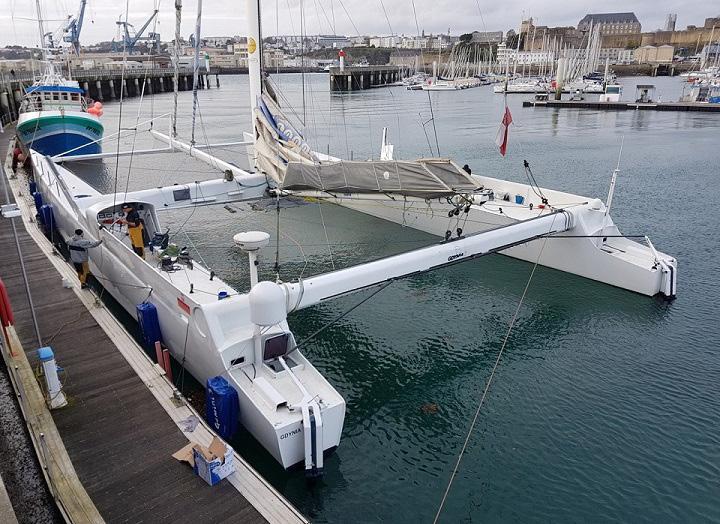
The yacht was shipped to Fibre Mechanics at Hythe Marine Park on Southampton Water at the end of 2022, where work began in earnest repairing any defects in the original structure and adding new bulkheads, a new nacelle, 2.5-metre extensions to the hulls, and replacing all the wiring, plumbing and systems.
As the work progressed, the team started to uncover a number of issues with the structure of the hulls. The boat had originally been built from sketch to launch in around four months which, in spite of being a very simple platform, was a very short timeframe that had been driven by the original sponsor and advertising requirements outside of Marstrom’s control. In addition, there had been a lot of repairs and remedial work done during the service life of the boat when things had got damaged or broken while racing. Finally, it was discovered that one hull actually sits around 80mm further forward than the other – a quirk that has been retained in the refit.
“Between those remedial and rushed work of the original construction there were some areas of the laminate that we felt were not up to standard and which we’ve removed, reinforced and reinstated,” says Thorne. “For the original build, the hull bottoms were autoclaved and the topsides were made as flat panels that were curved in place. The bulkheads were all flat panels. We had done preliminary non-destructive testing (NDT) of some of the high-load reinforcement areas, but it was only once we started cutting, grinding and removing paint that we realised there were more errors than we’d anticipated.”
The biggest challenge was uncovered while drilling holes into the hull bottoms for through-hull fittings where it was clear there had been water ingress into the Nomex core.
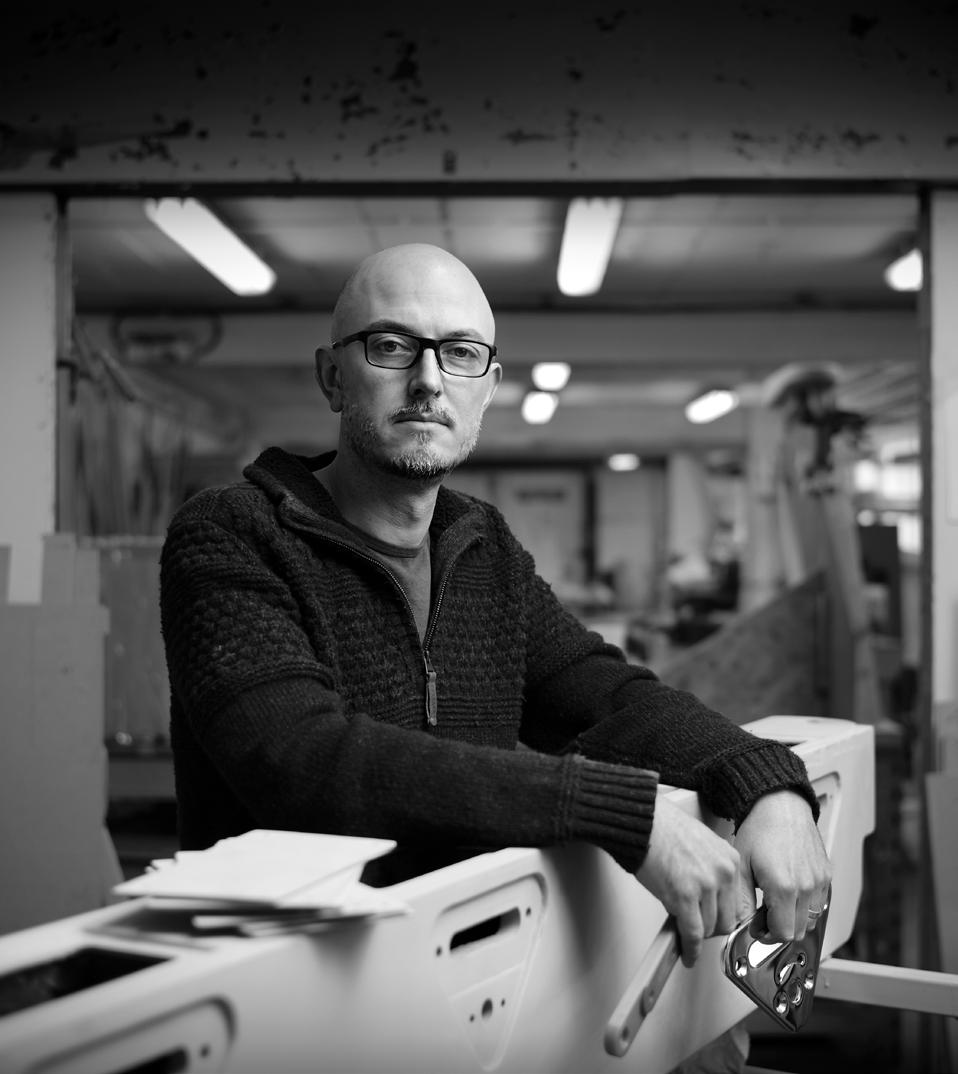
“It looked like there’d been an impact on one of the daggerboards, and that had split the skins around the back end of the daggerboard case, allowing water to work its way between the two skins,” explains Thorne. “So on the front half of the starboard hull we ended up having to remove the outer skin and Nomex core, repair it, add foam and reinstate the outer skin. We knew about various bits of delamination, mainly from dock impacts, but that was definitely a bit of a surprise!”
As with any refit, weight has become a critical factor, especially given the yacht’s original purpose as a high-performance racer, built to fly a hull and stripped out below but for a nav station and pipe cots.
“We’ve added a considerable about of weight,” says Thorne. “The target was just over double the original displacement of the boat, but that’s grown a bit over time – although we’ve also balanced that out by extending the transoms.”
That structural alteration has not only offset some of the weight gain with additional displacement but has also allowed for the addition of a bathing platform, various practical enhancements for cruising, and additional storage space.
In keeping with the idea of recycling and upcycling, the intention was to reuse the original rig, but as the team undertook remedial work they uncovered more unwelcome issues. It was a monolithic rig with a wing section design and Nomexstiffened sidewalls to support the chord length, but a lot of Nomex had de-bonded from the inner skin and it eventually became apparent the rig was no longer viable. The obvious solution would have been to order a new one, but that wouldn’t have been in the spirit of the project.
“Keeping with the mindset of recycling something that’s no longer being used, we went on the hunt,” says Thorne. “As luck would have it we found a spar from a 90foot high-performance cruising cat – there’s probably only one of them out there in the world! We’re slightly modifying it by cutting off the lower four metres and putting reinforcements on it. However, the original sail plan and the new one with the new mast are unbelievably close in terms of the sails’ IJPE measurements, so it’s really just minor tweaks we’re having to make. What’s more, the rig tweaks are being completed at Mastrom, adding a pleasing symmetry to the project.”
The team has also taken a sustainable approach to the new tooling required for the superstructure roof, which is constructed in six pieces that are largely flat panels made on a standard table rather than needing a custom mould.
“We modified the curve of the main roof in the design so that it could be built flat and then cut on the underside to give the curve,” says Thorne. “It meant that tooling was only required for a couple of smaller, more complex pieces. Tooling is expensive and it’s not very green, because it just ends up in the bin on a custom project. Finding ways to minimise it, simplify it and recycle it was an important part of the ethos from the beginning.”
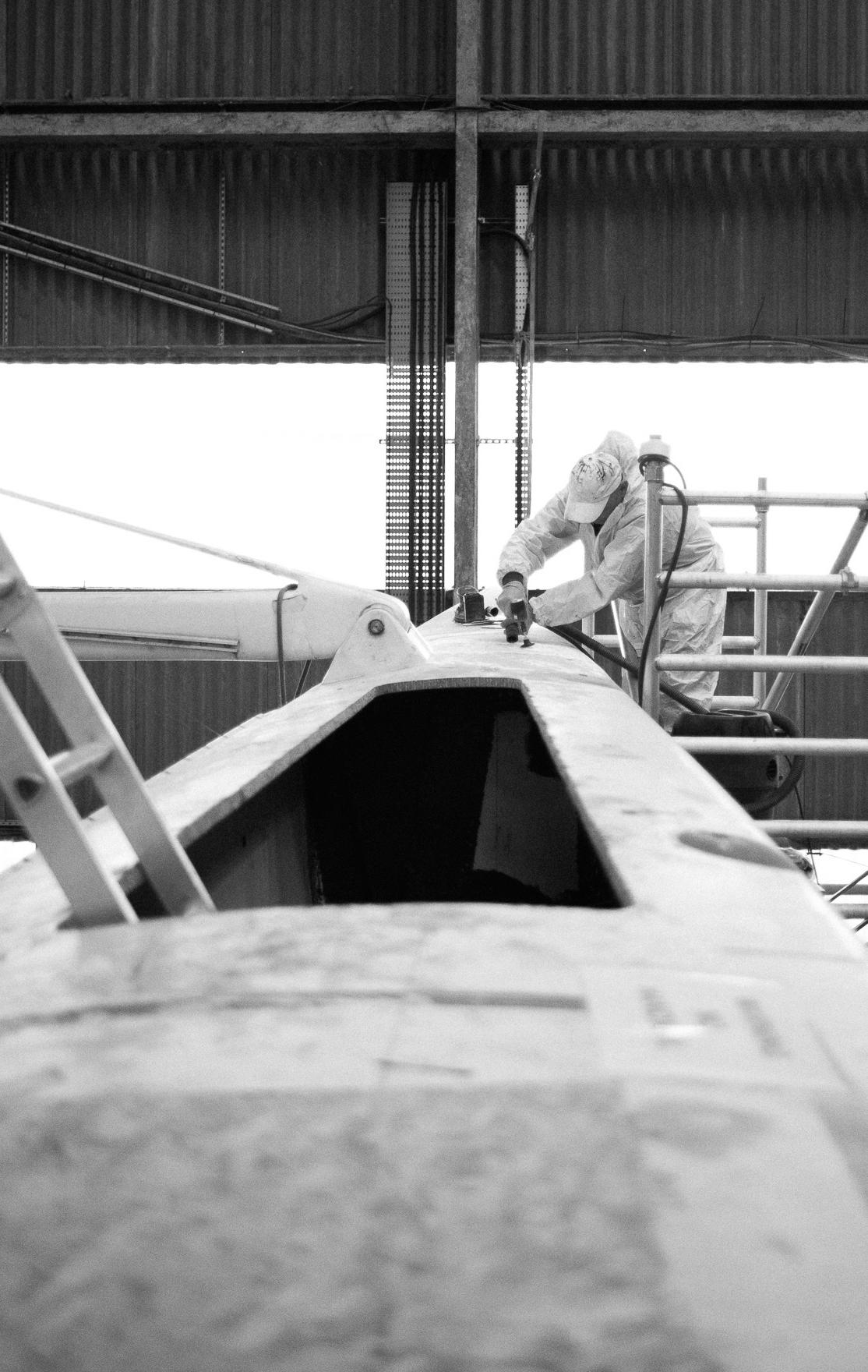
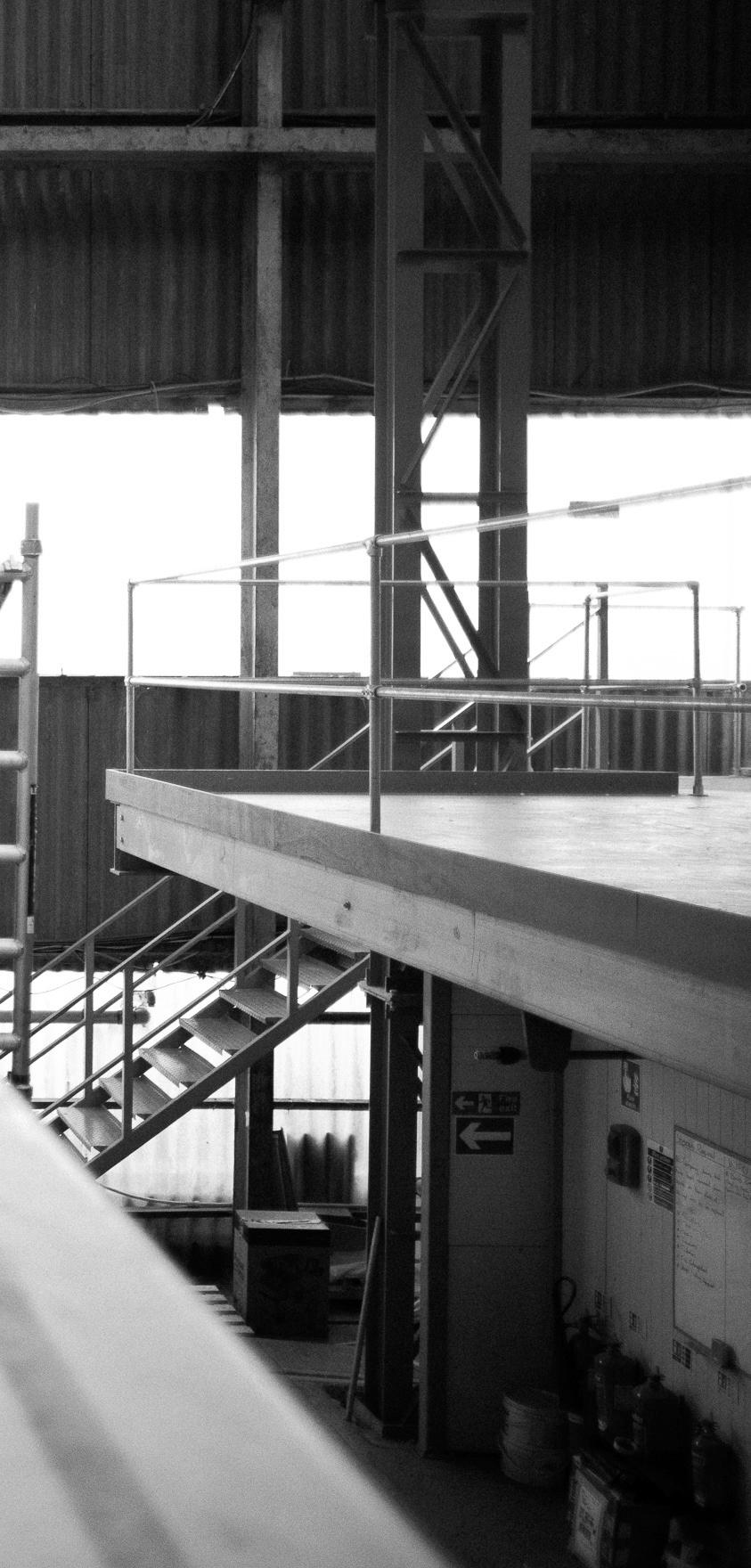
“As the work progressed, the team started to uncover a number of issues with the structure of the hulls.”
With Gemini 3 gaining considerable displacement in the conversion compared to the original race-ready platform, Thorne paid close attention to the righting moment and to the impact of a high-performance rig design on what is now effectively a performance liveaboard cruiser. Loads cells installed everywhere from the forestay to the mast base, runners, mainsheet and elsewhere, will monitor load parameters to ensure no particular aspect is exceeding a specified load case.
“The system isn’t meant to tell you you’re overloading any individual piece of the structure, but rather serves as an indicator that the loads are getting high within the overall platform,” Thorne says. “The system will alert you to start with, and if anything gets wildly out of bounds and no action is taken by the crew, it will automatically release the mainsheet and headsail sheet to keep those loads down and ensure the safety of the platform.”

But the conversion of Gemini 3 is not just about using sustainable materials. The owners’ brief specified eco-friendly power and propulsion systems, as well as the ability to sail off-grid for weeks at a time. The original plan was to run with fuel cells, with tankage for gaseous hydrogen and an electrolyser to make hydrogen onboard from seawater with three hydrogen tanks each side feeding a fuel cell in each hull.
“It was doable and the technology is out there, but we discovered that the electrolyser systems are fragile – great for slow shoreside hydrogen production but not for mounting on board,” Thorne points out. “That’s the bit of the tech that has its limitations right now.”
Instead, the yacht will carry 330kWh of batteries, housed largely in the new nacelle, which is the same size as a TP52 raceboat hull. The batteries will be fed by an array of photovoltaic cells on the new superstructure roof and hull tops, with additional harvesting from folding panels that can be deployed at anchor. In addition, hydro-generation will provide a few kilowatts extra when sailing. The electric motors, one in each hull, are rated at 100kW each for power cruising in the teens and a small diesel generator serves purely as an emergency range extender. It's been a long road for the project and there’s still a fair way to go, but with the core structure nearly complete the remaining stages of the boat are coming into focus. At the time of writing, the intention was to launch and head out for sea trials in early 2025, albeit with no interior joinery nor paint, while aiming for a formal handover to the owners at the end of the year.
“The owners’ brief specified eco-friendly power and propulsion systems, as well as the ability to sail off-grid for weeks at a time.”
“The systems will be ready, and the intention is to take the platform out, load it up, stress-test it and make sure there aren’t any unknowns we haven’t discovered yet, either within the existing structure or the new structure we’ve added that isn’t able to be anticipated in the FEA studies,” says Thorne. “We’ve done our absolute utmost to pre-empt any issues, but there can always be areas that you can’t anticipate when you’re dealing with a heavily reconfigured structure.”
Thorne’s initial VPPs suggest that even with the additional weight and structure, Gemini 3 should still offer a good turn of speed. The original powered-up platform has been reduced by raising the boom and decreasing the sail area, including some of the headsails.
“She will start with a reduced sail wardrobe with no gennaker or spinnaker, just a Solent staysail and main for the purpose of getting the boat up and running, and then we will add sails down the line,” says Thorne. “But she should still be able to achieve reasonable performance and be a windspeed boat –assuming the right conditions in terms of wind direction and sea state, if it’s blowing 20 knots she should be able to sail at 20 knots.”

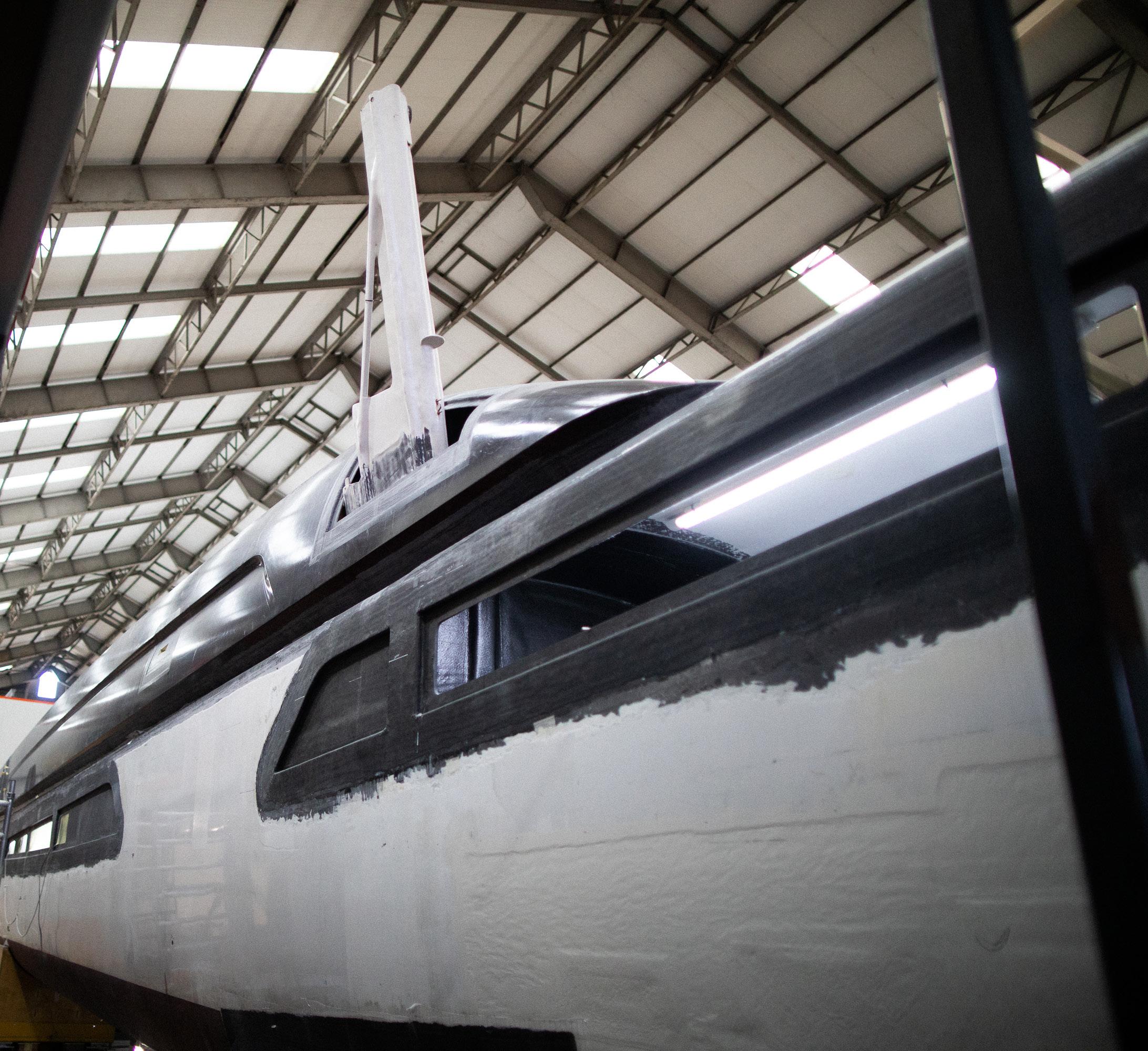
Key takeaways for anyone considering a similar conversion include making greater allowance for the unexpected. Thorn and his team were lucky to have a good relationship with the original builder and Marstrom provided a huge amount of information – the project would have been a lot more challenging without a good set of initial data.
“The second aspect is anticipating at an earlier stage the amount of wiring required for the electrical system on a boat like this, which would have saved us some headaches down the line,” Thorne admits. “We have 14 kilometres and two tons of wire on board the boat, which is a little over double our initial estimate even though we’ve been installing hybrid systems for over a decade. The size and beam of the platform means long wiring runs and that drives up the wire size; collaborating with electrical contractors from a very early stage would certainly be beneficial in any project like this.”
Finally, Thorn believes the yacht industry could improve when it comes to appreciating and offsetting the environmental impact of building or refitting a yacht. The team continually updates its initial lifecycle analysis of the boat to come up with a record of its carbon footprint throughout the rebuild process, which is not as straightforward as it seems.
“Trying to find good-quality data for some of that is really difficult,” says Thorne.
“Understanding the amount of carbon it takes to make one kilo of carbon fibre is easily quantified, but it’s the parts like a bilge pump that are far more challenging in terms of where did all the parts come from, where was it assembled, how’s it been shipped to you? And I think that’s something that as an industry we can definitely do better at.”
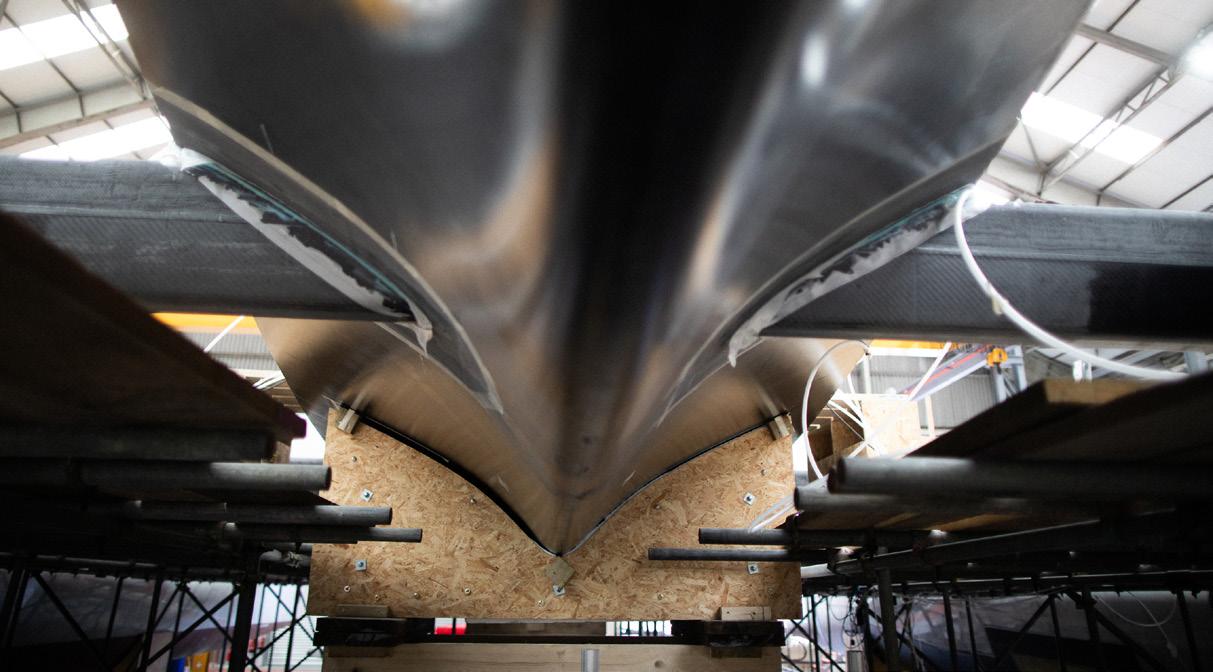



Sam, Electrical
1 OF 500 SKILLED CRAFTSPEOPLE

Whether refit, restoration or build, every Pendennis project is a true team effort. Our time-served tradespeople are experts in their field, crafting precise and perfect work at every step of the way.

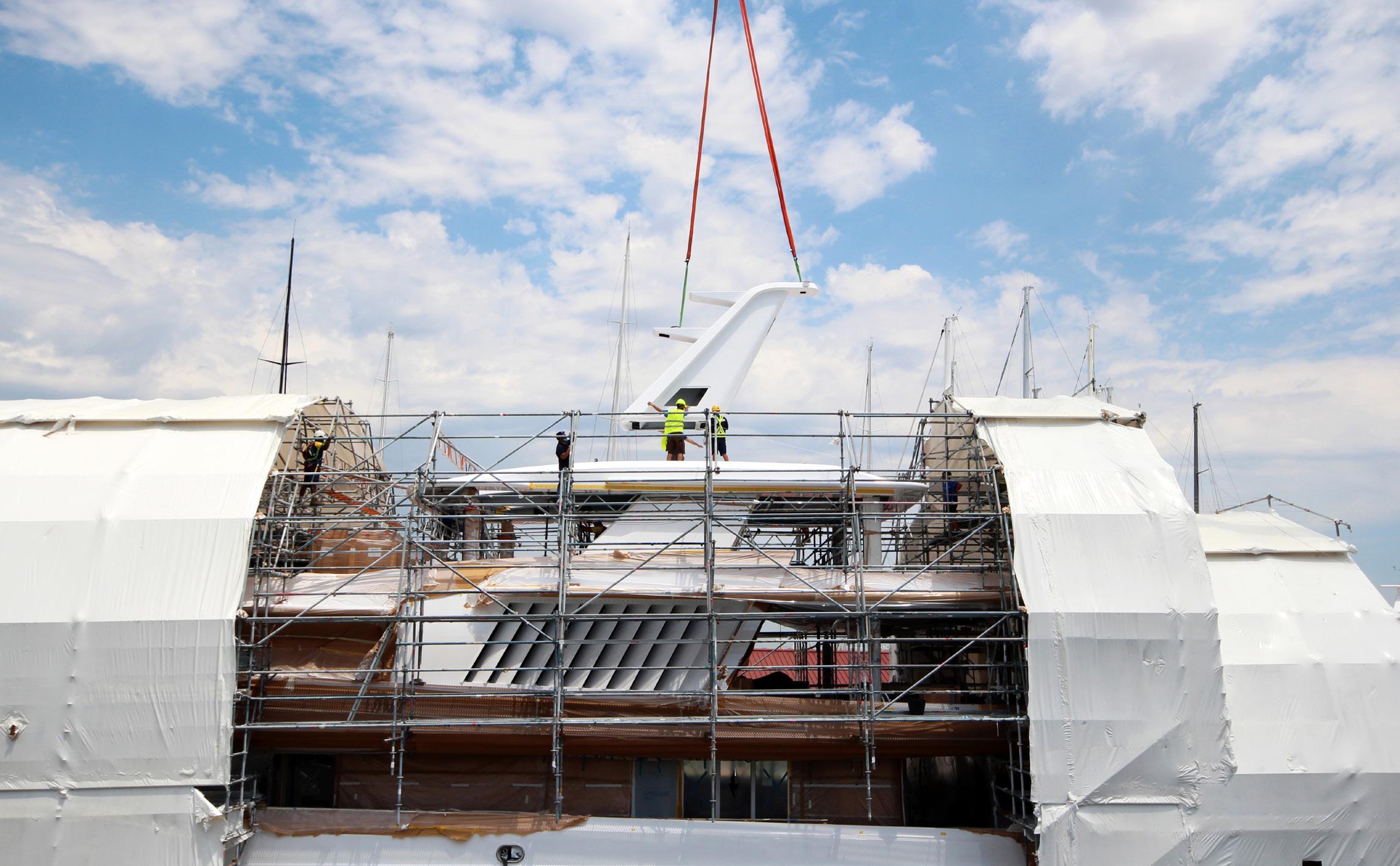
In an industry wedded to steel and aluminium construction, superyacht shipyards have been relatively slow to embrace composite materials for the manufacturing of large structures such as hardtops and biminis. But having completed more than 15,000 refit and repair projects, BM Composites in Palma de Mallorca has proven the benefits of composites many times over.
BY JUSTIN RATCLIFFE
In 2022 as part of a €35 million refit, the 73-metre Lürssen Coral Ocean (exCoral Island) designed by Jon Bannenberg received an entirely new and enclosed sky lounge for entertaining and dining. The 140-square-metre roof structure replaced the former sat-dome area on the upper deck and comprised two large electric sliding sunroofs, as well as a new 3.8-metre navigation mast atop the roof. The whole massive structure was engineered and built out of composite foam-cored panels by BM Composites.
“The original idea was to do it in aluminum,” recalls Luke Hendy, technical & commercial director at BM Composites. “But we thought we could do something much better and bigger in composites, because we weren’t as constrained by the weight and stability issues of building in aluminium. What started out as a new roof turned into a major deck modification.”
Local company 3D Tech was tasked with laser scanning the deck space to 0.2mm accuracy and integrating the (often conflicting) inputs from the Gurit composite engineers and H2 Design Yacht Design, who drew the lines for the new sky lounge. The resulting 3D CAD model became the primary reference throughout the project
lifecycle, from the tooling and component manufacture to the final installation.
“Integrating all the HVAC, AV and electrics, as well as the big sliding doors and opening sunroofs, was part of quite a mammoth modelling operation,” continues Hendy. “But what we had at the end was a very accurate 3D model to start the tooling, which provides shapes that are much closer, if not identical, to the original design – much more accurate than working with aluminium, which has to be cut and welded, then faired and primed.”
The roof and mast structures were manufactured off-site at the purpose-built BM Composites facility and delivered in three main parts to STP Shipyard Palma, where they were assembled and then bonded and bolted to the top deck. Thanks to the accuracy of the CNC-machined female moulds, tooled directly from the CAD data, the composite parts required very little fairing compared to traditional aluminium construction. The use of 3D scanning at the outset further meant the huge components fitted perfectly. In fact, installing the structures took just two days with no hotworks required. The sky lounge was later described as the ‘jewel’ of the award-winning refit.
Previous page: Installing Coral Ocean’s mast on top of her new sundeck
Below: HVAC, AV and electrics, sliding doors and sunroofs were all integrated into the 3D model.


“The
original idea was to do it in aluminum, but we thought we could do something much better and bigger in composites.”
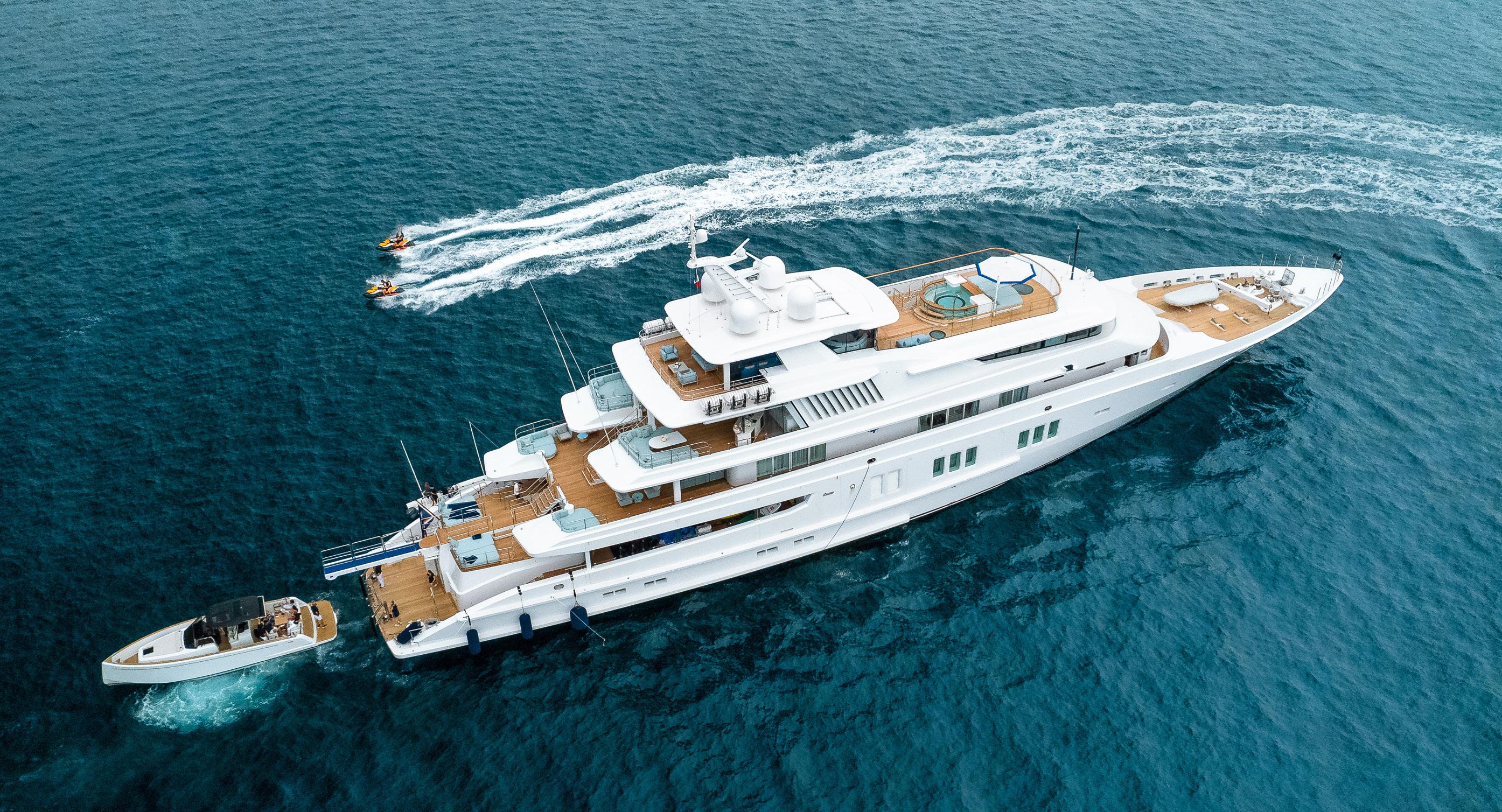
Less fairing meant significant weight savings in a very stability sensitive area at the top of the yacht. Steel and aluminium usually require between six and eight millimetres of filler, which translates into eight kilos per square metre on average. That adds up very quickly in terms of weight, but also cost and time.
“You also have to consider the logistics of tenting the yacht, the extraction, the disruption to other refit jobs and –critically – the time the boat is out of operation,” Hendy explains. “Instead, we built the structures off-site at our own manufacturing facility while everyone else cracked on with other works, then came back at the end of the six-month yard period and installed the new sky lounge already painted.”
To illustrate his point, Hendy references the recent refit of a busy charter yacht when BM Composites were able to scan the whole upper deck overnight. This provided all the data they needed to go away and engineer, fabricate and paint a new composite structure for later installation. In the meantime, the owner could continue earning revenue from the yacht’s charter activities.
“The raw material and basic construction costs may be marginally higher with composites, but over time it works out cheaper when you look
at the wider picture,” says Hendy.
Around the same time as Coral Ocean, the 40-strong team at BM Composites was commissioned to engineer, build and install new carbon-fibre hardtop biminis for M5, the largest single-masted sailing yacht in the world. The new structures – two attached fore and aft of the existing transverse arch, and one covering the forward area of the huge flybridge – replaced the traditional steel tube and canvas biminis with a more modern design featuring integrated AV and lighting and electrically operated sunroofs to protect the helmsman. Included in the upgrade was the manufacture of two new helm consoles and wheels to complement the new-look flybridge.
“We used the same 3D scanning, CAD modelling and CAD/CAM tooling techniques to produce the hardtops offsite for later transport to the NCA Refit yard in Italy, but although the yacht was also composite in many ways the engineering proved more complex than Coral Ocean ,” says Hendy. “This was because we had to integrate the main bimini into the existing arch structure and visually the design by Adriana Monk was very sleek, so we had to be careful to achieve the stiffness we wanted without any vibration or resonance.”
Anti-clockwise from bottom: The new biminis for M5 were made of carbon fibre; fabricating the composite roof structure for Coral Ocean; the finished sundeck lounge viewed from the inside; Coral Ocean with her new sky lounge and sun deck.

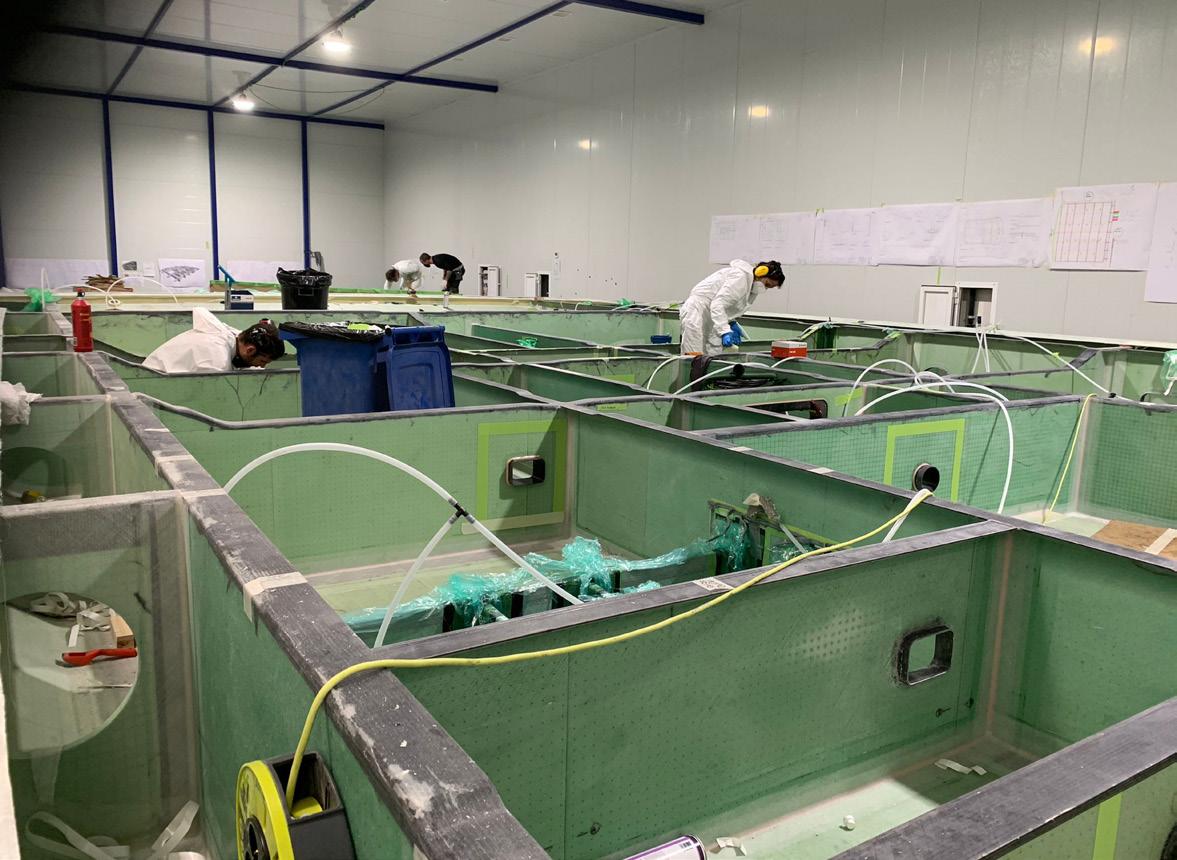

Aluminium has a density of about 2.7 g/cm³, (whereas a composite foam-cored panel typically has a density of between 0.03 to 0.5 g/cm³) with stiff outer skins of GRP, carbon fibre, or even aluminium. The core dramatically reduces weight while maintaining rigidity, making it much lighter than solid aluminium. In fact, a 1m² aluminium plate (5mm thick) weighs approximately 13.5 kg, whereas a 1m² composite foam panel (with a 5mm core and 1mm skins) weighs 3-5 kg, depending on the skin materials.
Aluminium has good stiffness, but its rigidity comes from its density. Young’s Modulus (stiffness measure) for aluminium is about 70 GPa. Foam cores are not inherently stiff, but a panel’s stiffness comes from its outer skins (carbon fibre’s Young’s Modulus is up to 230 GPa) and the thickness of the sandwich structure. The foam core effectively increases the separation between the outer skins, which improves stiffness without adding much weight. Composite foam-cored panels have a much higher stiffness-to-weight ratio compared to solid aluminium plates. Indeed, for the same weight, foam-cored composite panels can be 3-10 times stiffer than aluminium, making them ideal for applications where light weight and rigidity are critical.

BM Composites was set up in 2005 by sailor, boat builder and composites specialist Mark Branagh. After assisting the Oracle America’s Cup team in Valencia, he moved his headquarters to the STP (Servicios Técnicos Portuarios) Shipyard in Palma de Mallorca. Previously he had studied material science at Brunel University in London before working at Pendennis and Green Marine, where he was involved in building composite sailing yachts such as Wally B and Kenora, Ghost, Sojana and Playstation. Mark and Luke Hendy met in Falmouth in the early days of Pendennis. After spells at Compositeworks in La Ciotat (now MB92 La Ciotat) and running his own business, Luke joined BM Composites as an acting partner in 2008, a role that was only formalised in 2023. In 2018 they opened a state-of-the-art workshop facility in Son Moro in Mallorca. Today, the company employs over 40 project managers, designers and composite technicians.
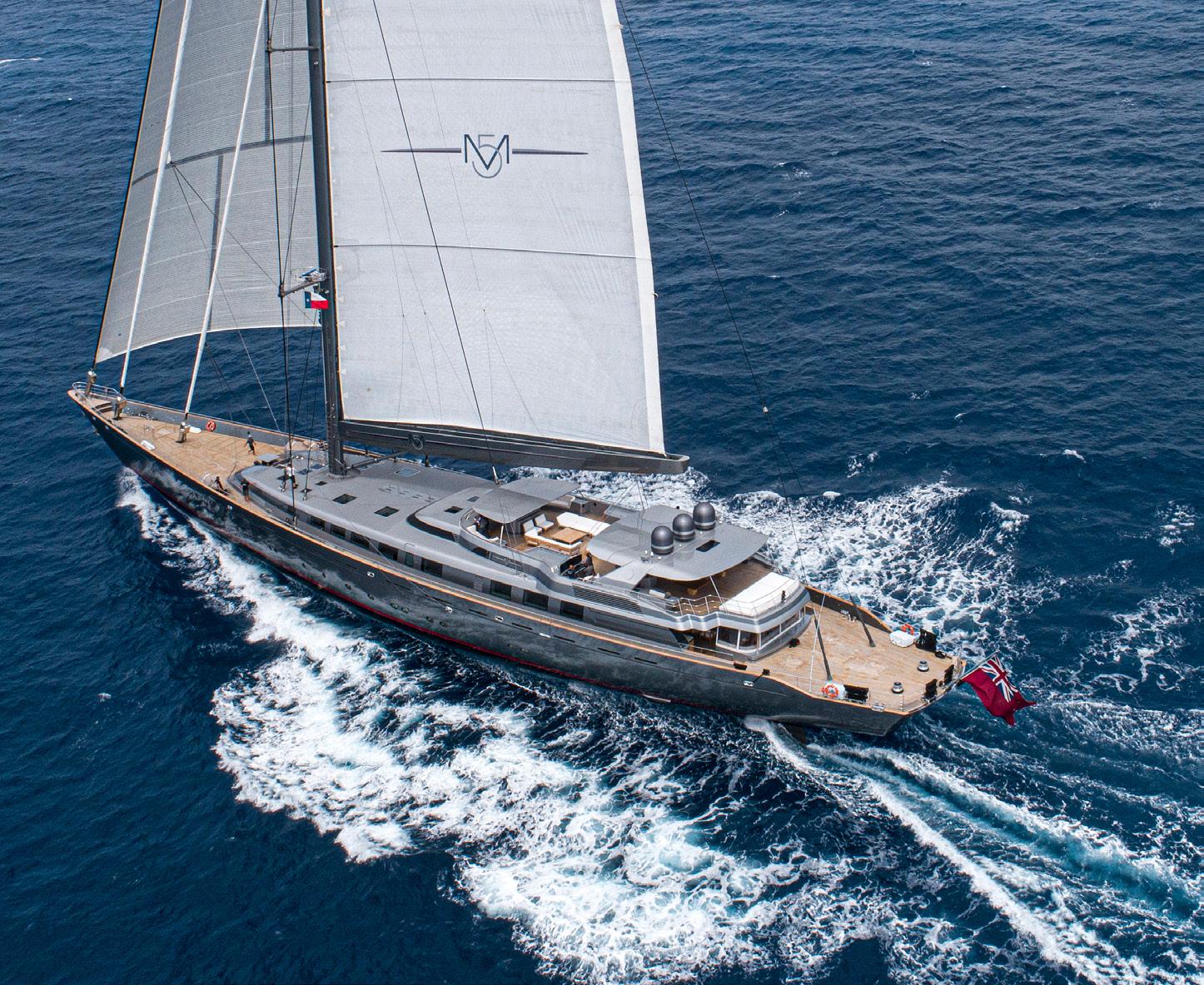
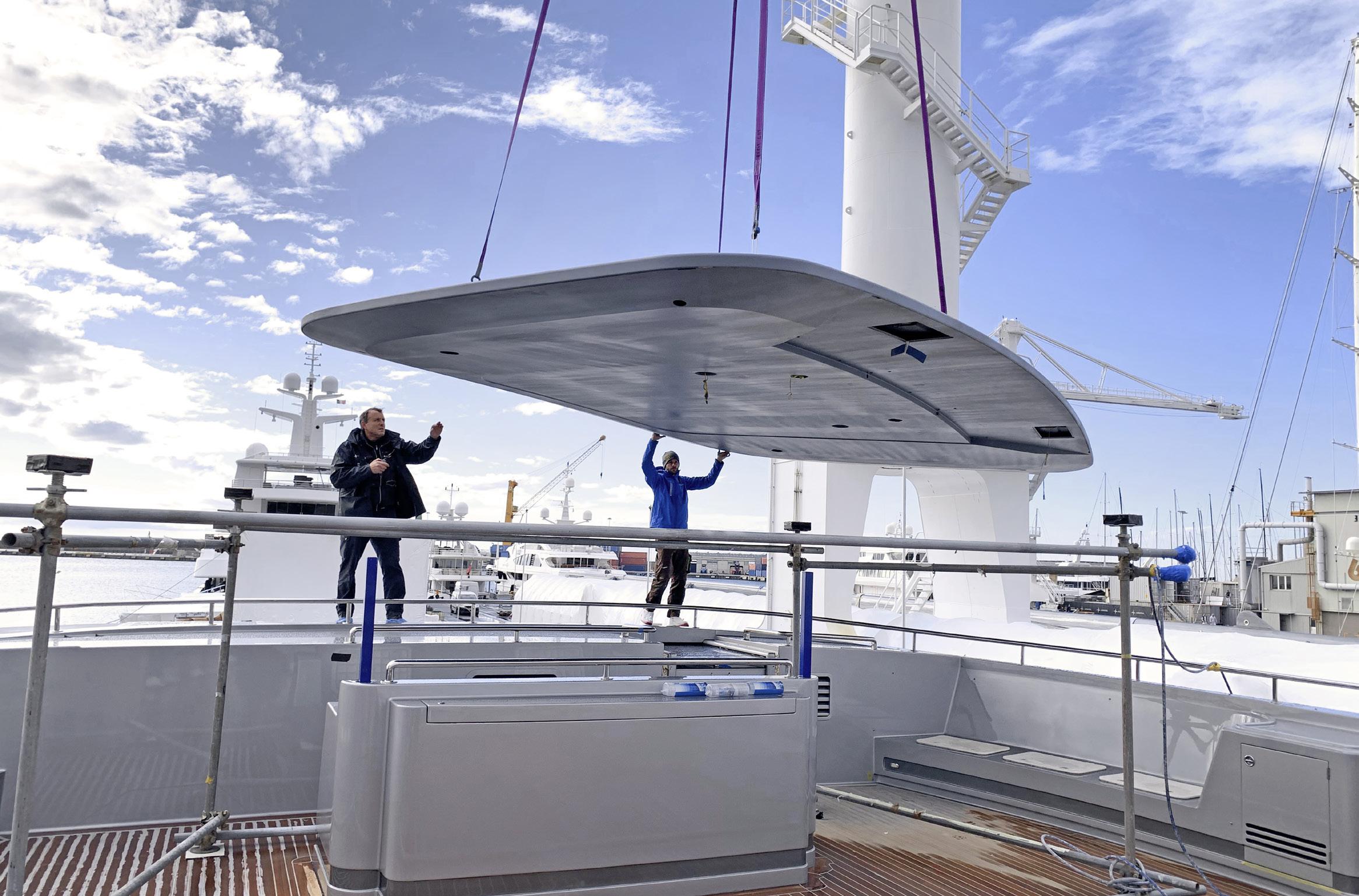
“The raw material and basic construction costs may be marginally higher with composites, but over time it works out cheaper when you look at the wider picture.”
This last point is critical in the engineering process. All physical structures have natural frequencies at which they will tend to vibrate when subjected to external forces, including waves and pressure pulses from propellers. These frequencies are dependent on the way mass and stiffness are distributed within the structure. Resonance happens when a dynamic force excites a structure to vibrate at its natural frequency – even a small force can produce a large vibration response that may result in ‘humming’. In the case of Coral Ocean, BM Composites referred to the yacht’s original noise and vibration studies to engineer the GRP/carbon sandwich panels to avoid these natural frequencies. Moreover, the PVC foam cores have much higher damping and thermal insulation properties compared to aluminium.
One challenge that still has to be fully overcome by contractors like BM Composites is that the class societies are more accustomed to dealing with steel and aluminium in superyacht construction. When faced with composites they usually to refer to the rules for guidance, but technology moves quickly and the existing regulations may be unsuitable. That can lead to situations where a surveyor might want to see a composite panel that has the same thickness as an aluminium one, because that is the benchmark he or she understands best.
“One of the issues is that the regulations were originally written for commercial ships, so class is already playing catch up with the superyacht industry,” says Ian Heseltine, operations manager at BM Composities. “However, on each project we work closely with class to help bring the rules up to date.”
Indeed, Heseltine believes it is the high-tech nature of building with advanced composites that fundamentally distinguishes it most from metal construction. After all, you can design something sleek and curvy in aluminium, but then you have to convert the design into technical drawings to build it out of flat sheets of metal. At that point, you lose the direct connection between the design intent and the physical reality. Not so with composites:
“We bring 3D scans into our CAD software as the basis of the design, then build and test it virtually for rigidity and strength, resistance to wind loading and vibration, and so on,” explains Heseltine. “But we also use that very same CAD tech to create the tooling, which is able to reproduce a perfect impression of the original design intent. In other words, we harness the technology to its full potential from concept to completion.”
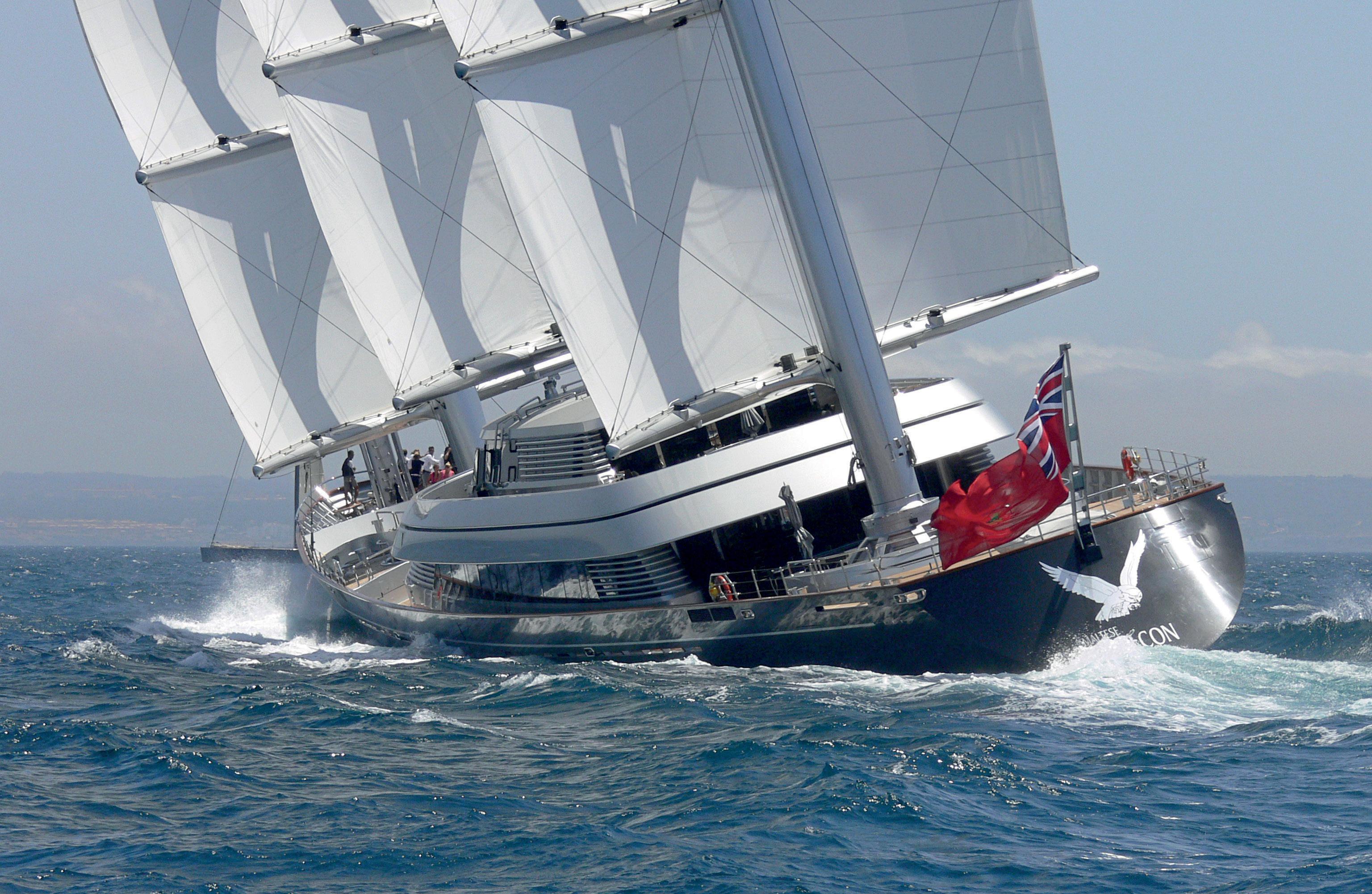

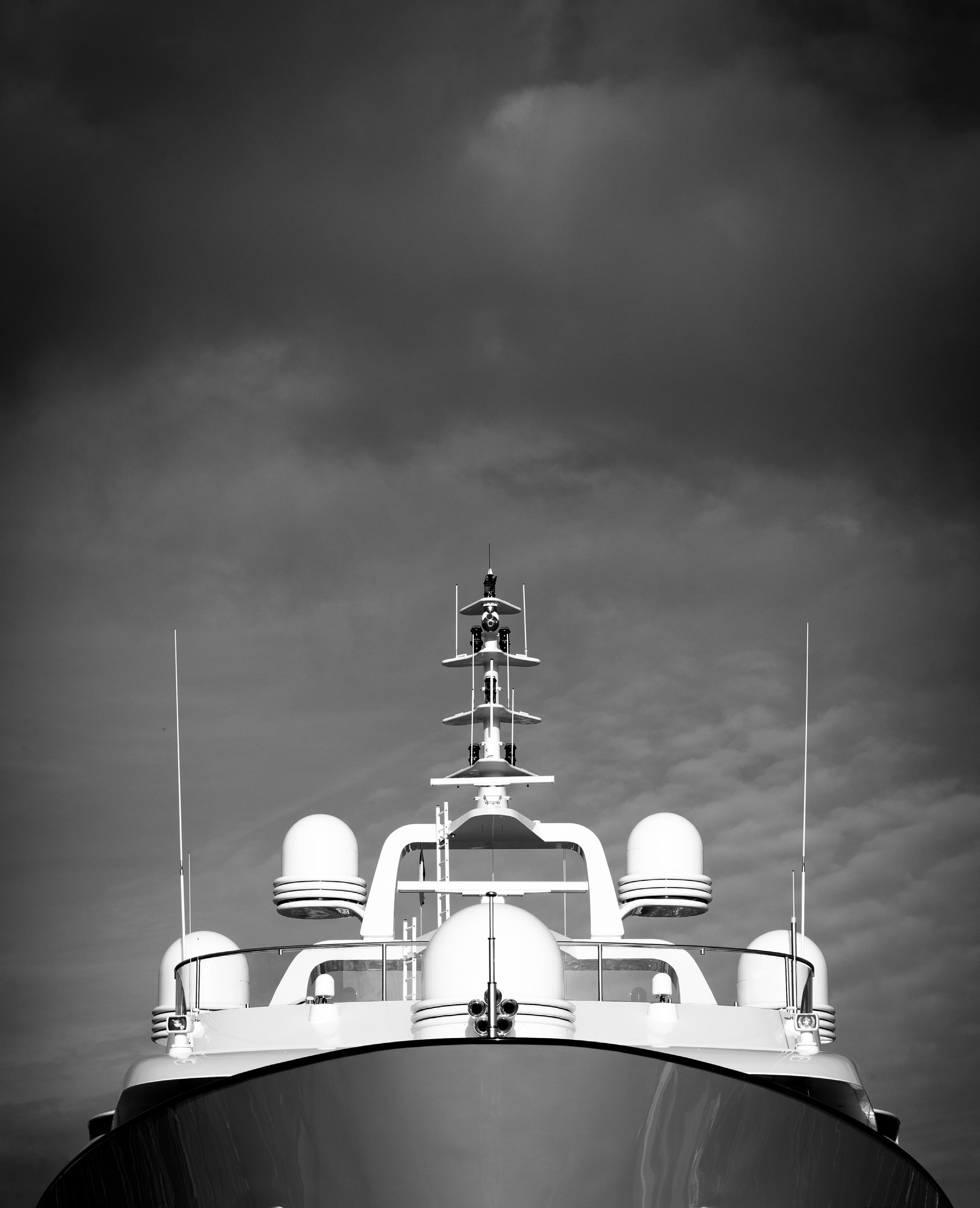
Deciding where to refit a superyacht is no small matter. Rob Papworth, Managing Director of MB92 La Ciotat and Chair of the ICOMIA Superyacht Refit Group, likens it to finding the right hotel for your honeymoon, or picking a school for your kids. Price is clearly a consideration, but there are many more things you need to know before committing.
BY ROB PAPWORTH

Rob Papworth
"Risk comes from not knowing what you're doing," Warren Buffett famously said. Wise words – and they couldn’t be more relevant here when it comes to superyacht refit. Getting it right can save a world of headaches and the yacht will emerge on time in pristine condition for that owner’s trip or charter booking. Done wrong and it could cost more than a few sleepless nights and a big chunk of the owner’s money, which is not an ideal start to the season. Here are some due diligence essentials to keep in mind to ensure your refit is completed on time, on budget, and without unnecessary drama:
With many leading shipyards now boasting new or upgraded facilities, yards that look like a set from a disaster movie are fortunately mostly a thing of the past. But this is about more than newly poured concrete and modern paint sheds, so you need to ask some tough questions:
– What are the haul out / dry docking procedures?
– Have there been any major accidents, fires, or vessel damages in the last five years?
– How robust are their fire-fighting procedures? Are emergency services nearby, and do they have any internal capabilities?
– Will your project be protected by fire detection and extinguishing systems?
– Do they have a clear accident reporting system and protocols to prevent repeat incidents?
– The ICOMIA Superyacht Refit Group in conjunction with ABL and Joint Hull Underwriters committee is currently trying to standardise a superyacht shipyard risk assessment survey that will itself address many of these issues with the objective of rating each shipyard for safety. Once this is in place, it will be an excellent way of assessing the risk in each shipyard.
Titles are cheap, but experience is priceless. While anyone can slap “Project Manager” at the bottom of an email, you’ll want to dig deeper:
– Who exactly will be managing your project? Meet them and size up their relevant experience.
– How big is the team? Are they back up by seasoned professionals, or are you looking at a one-man show?
– Do the different categories of managers working on your project come with different responsibilities, such as financial, technical, or even on-board foremen?
– Do they have specialists for specific tasks, like painting or interiors? A jack-of-alltrades may not cut it if you are undertaking major modifications.
A project management team with years of experience and a clear structure can make the difference between a seamless refit and a stress-fest.
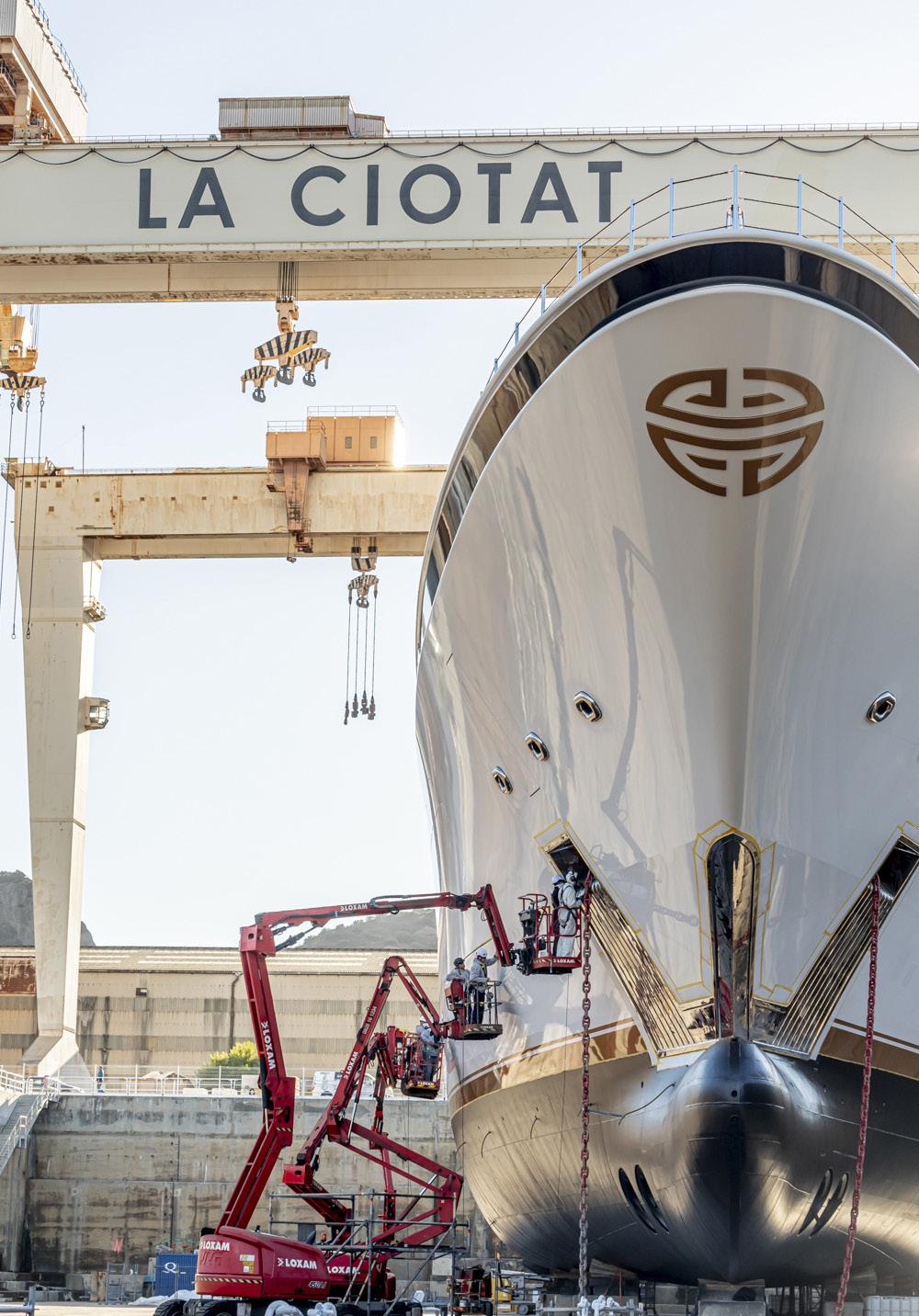
– What’s the track record of the shipyard? It’s one thing to claim expertise; it’s another being able to prove it. Ask for:
– Examples of similar refits in terms of scope, complexity, and vessel size.
– Have they worked on many yachts from the same builder as yours? This will help familiarity with design and systems.
– Testimonials from past clients. A glowing reference can be worth its weight in gold.
– Evidence of working relationships with key contractors such as interior contractors or OEMs (Original Equipment Manufacturers).
You’ve probably heard it before: prior preparation and planning prevents p*** poor performance. And it’s true! If everything is planned and prepared before the vessel’s arrival in the shipyard, only emergent work or changes in the scope may derail a successful yard period. Probably the most important word in the 7P’s is the most overlooked: the first word “prior” is absolutely key, and great emphasis should be placed on the importance of prepping right after contract signature but before the vessel’s arrival in the shipyard. Here’s what you need to ensure:
– A dedicated contact develops a proper planning document well in advance of your arrival.
– Critical orders (parts, materials, contractors) are placed before arrival.
– All paperwork, access permits, and waivers are sorted early. No one wants or needs last-minute admin drama.
The shipyard’s physical whereabouts matter. And not just because you need to keep the crew happy and motivated during the refit. Consider the following:
– Proximity to airports and major transport links for quick access.
– Local language and the availability of multilingual staff. Speak to a few different people during your visit to ensure that many of them speak your language.
– Climate: snow or extreme heat may affect your works if you are outside, but they will also affect your heating or cooling consumption bill if you are in a climatecontrolled environment.
Paper quotes are slowly becoming a thing of the past, but many shipyards are still way behind other industries with regards to digitalisation. Knowing in real time the total amount of works signed, or the outstanding amount due on recently issued invoices, will greatly reduce the stress of complex refits and make communication with the vessel’s manager or owner’s team much smoother. Look for:
– Client portals to track quotes, progress, and invoices in real time.
– Advanced project planning software that keeps everything on schedule.
– Financial dashboards to help you manage costs without needing a degree in forensic accounting.
We all spend too much of our lives on our mobile devices, but being able to see key data (KPIs) relating to your project as any time day or night will make your life much simpler and ensure you remain informed even if you are away from the shipyard.
A financially shaky shipyard is a disaster waiting to happen. If the shipyard is unable to pay contractors or provide equipment on time, then your schedule will undoubtedly be affected. Whilst your owner may be great at paying the bills, if the shipyard is not in good financial health, payment issues on other projects could end up affecting yours. Check the following:
– Public financial records or request audited statements (a perfectly reasonable ask).
– Cash flow management. Do they have enough liquidity to pay their contractors and suppliers?
Remember: your owner may be a billionaire, but a shipyard’s financial woes can spill over into your project.
Depending on the value of the vessel, your insurer may ask for the shipyard to increase the level of cover available or make you pay a premium of your own. Notify your insurer early and check:
Are you being asked to waive claims under the shipyard’s insurance? If so what level and does this align with your insurer’s expectations?
Will you incur additional premiums for in-yard risks that are not included in the quote?
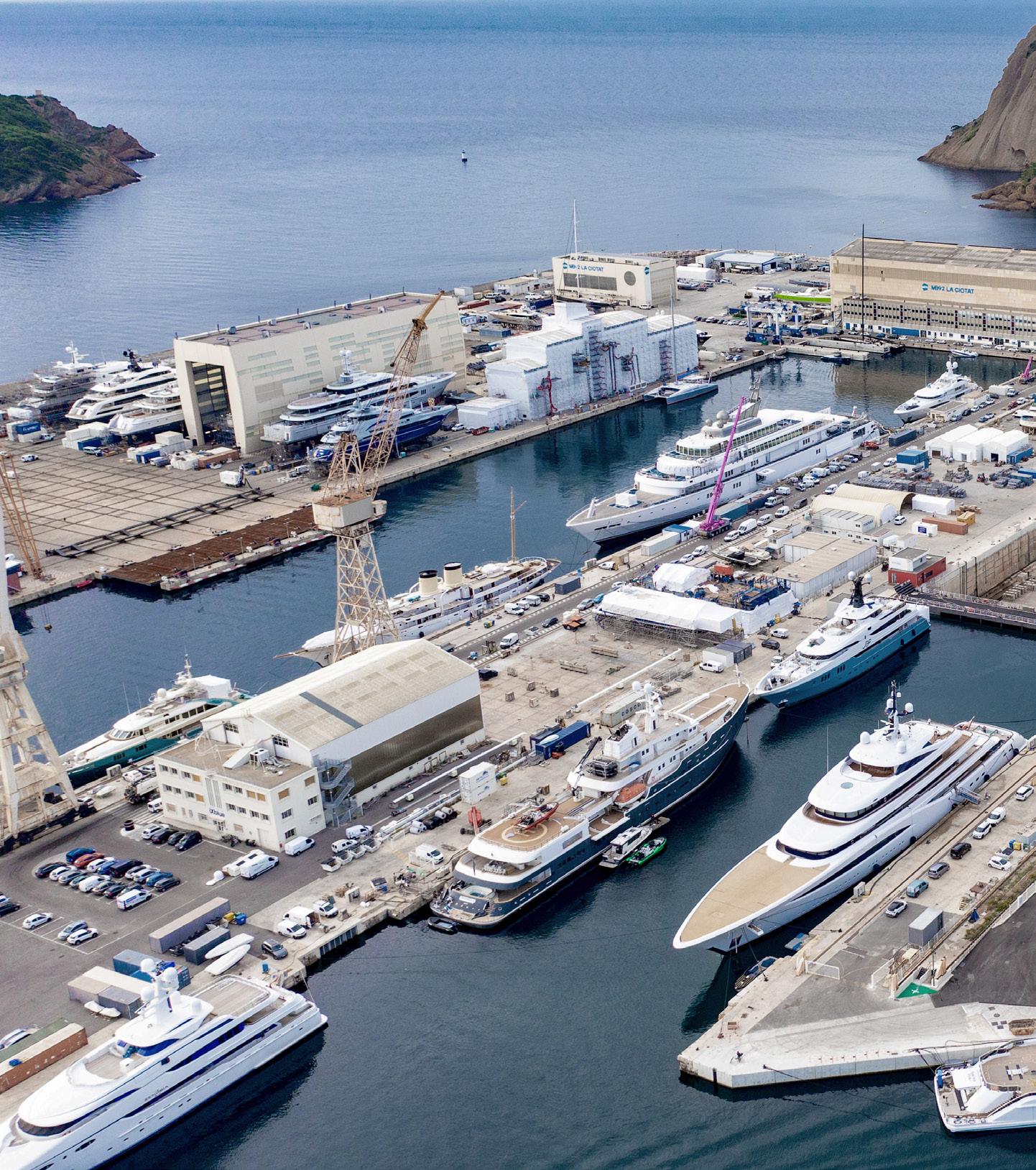
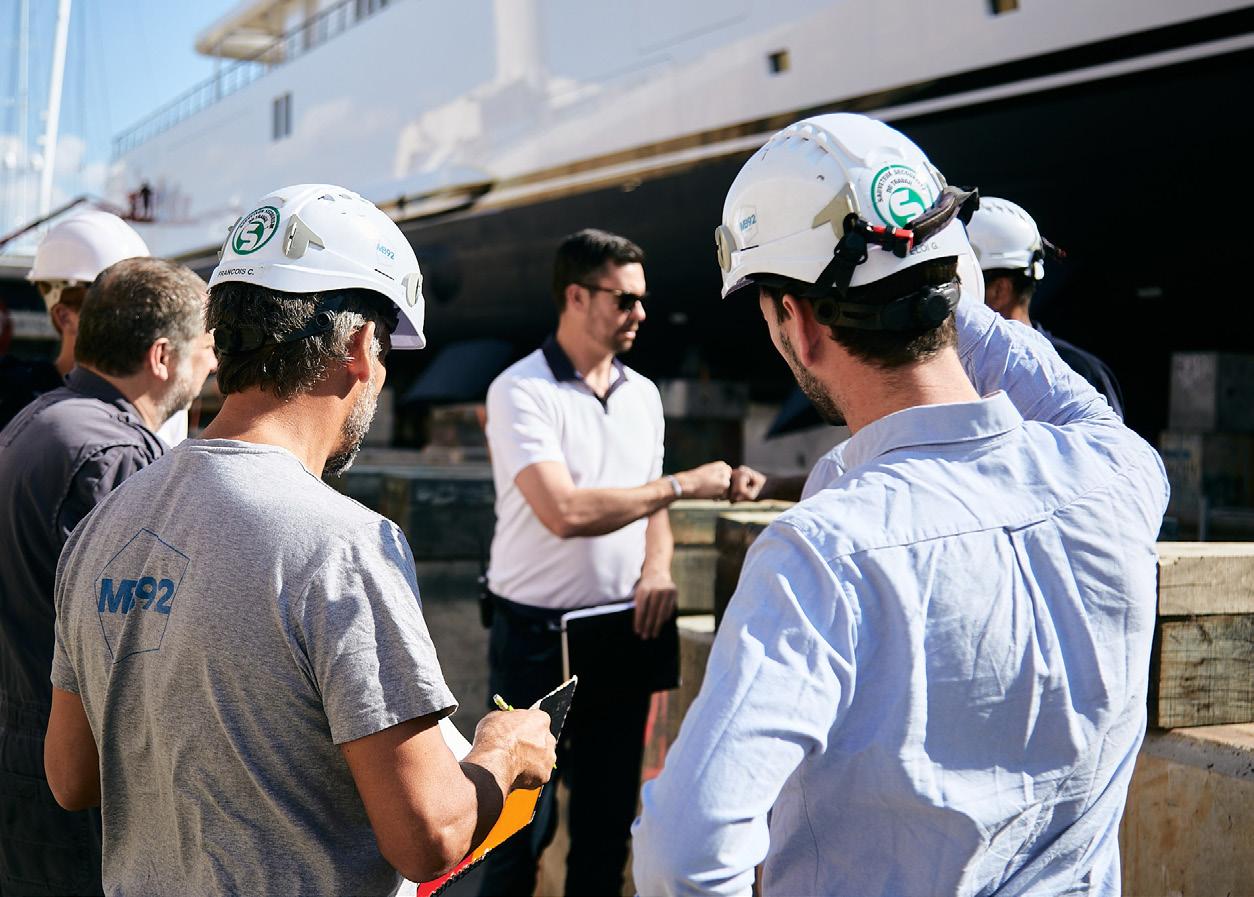

Things might go wrong. It happens. But when they do, you need to know who to call. Identify:
– Key members of the senior team and their roles.
– Clear lines of communication for escalating issues beyond your project manager.
Bear in mind that senior management won’t want to undermine or demotivate their project team, so only use the emergency button when absolutely required.
Sustainability has been making waves in the industry, and many shipyards are stepping up to the challenge. From reducing emissions to implementing eco-friendly practices, here are a few things to ask about:
– Heating and Cooling: How will your project be heated or cooled? Modern shipyards often use energy-efficient systems that reduce reliance on fossil fuels.
– Water and Air Filtration: What types of filtration systems are in place to prevent water and air pollution during the refit? Cutting-edge yards employ advanced filtration technology to minimise their environmental impact.
– Active Improvements: Has the shipyard implemented recent sustainability initiatives like solar panels, waste recycling programs, or biodegradable materials? These measures not only protect the environment but also showcase a forward-thinking approach.
Choosing the right shipyard isn’t just about getting a good deal. It’s about building a working partnership. Trust your instincts, ask the hard questions, and don’t be afraid to walk away if something feels off. After all, a successful refit isn’t just about a gleaming superyacht at the end of it. It’s about peace of mind along the way – and maybe giving you that well-earned break before the start of the new season.


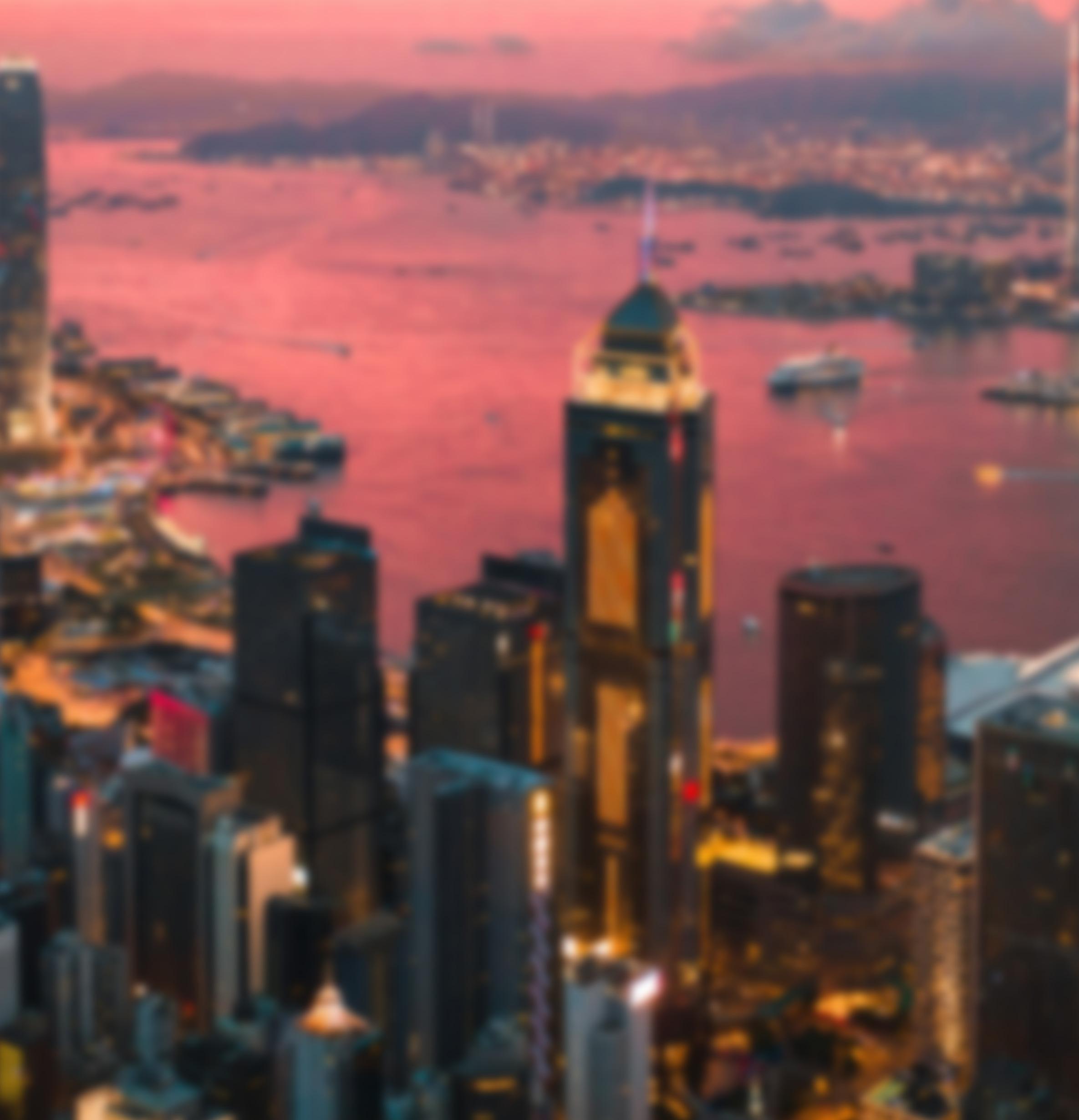
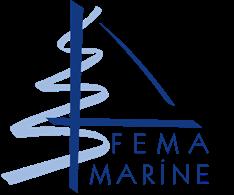





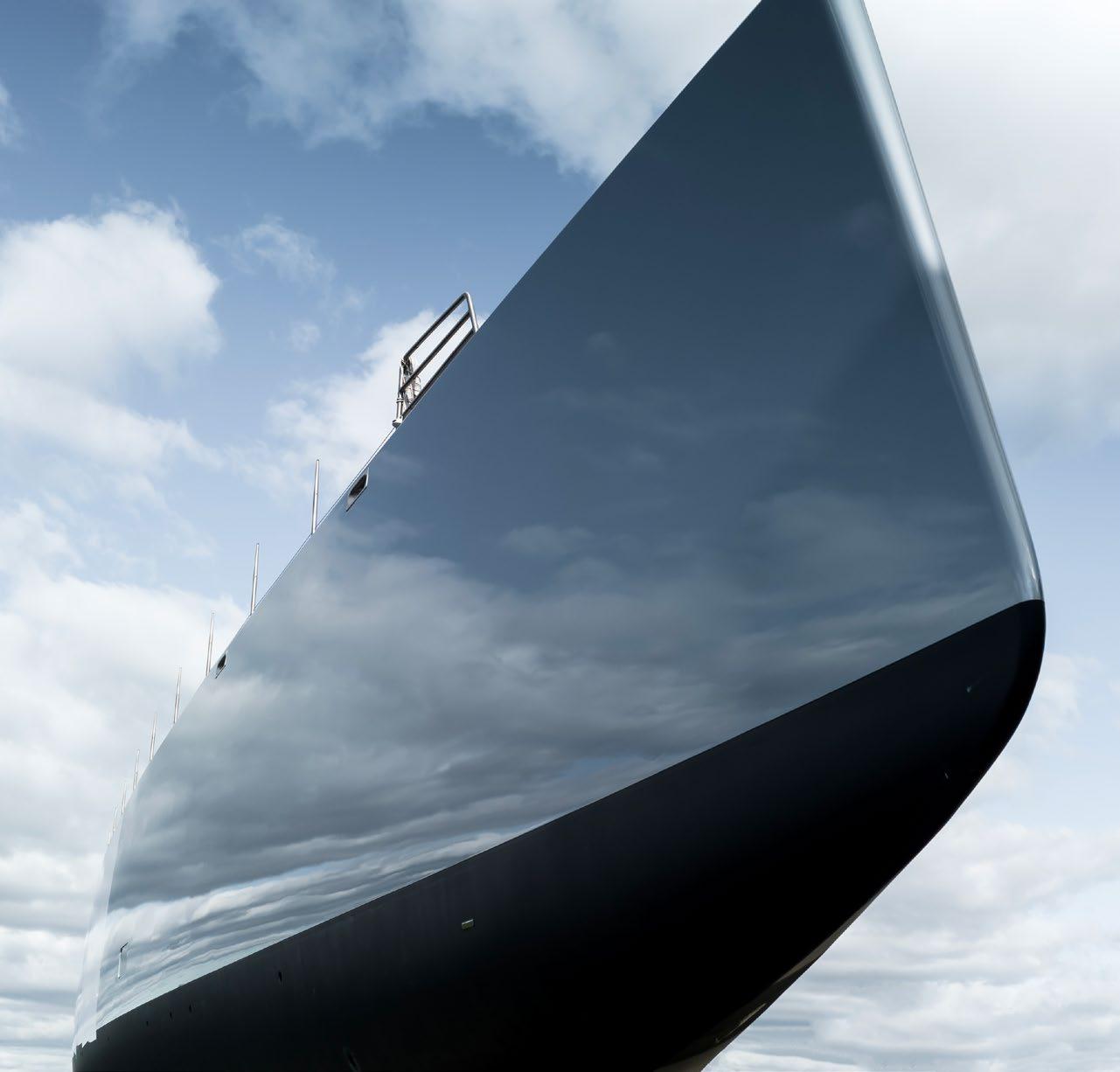
When your skills become a seamless unit with your equipment and materials, you are on the way to a perfect paint job.
With our yacht coatings, you can achieve outstanding durability, maximum gloss and longevity from the first to the final layer. Enjoy the creation of easy, efficient and high-performing finishes.
Scan the QR Code to explore our product range → Celebrating 20 Years of Excellence
instagram.com/alexsealpaint linkedin.com/company/alexseal-yacht-coatings